Ho Chi Minh City
Get lost in historic citadels and idyllic landscapes of the imperial city.

The Hue difference
Despite the fast-paced urbanization and cultural assimilation that are raging on in other parts of this Southeast Asian nation, best described as old Vietnam writ large, Hue, as a former capital of Vietnam, takes pride in its long history, atmospheric temples, sublime royal palaces and unique cultural traits that can hardly be found elsewhere in Vietnam. Besides exotic elements of the Imperial City, a walled enclosure within the citadel, Hue is extremely well-known for its cultural heritage elements recognized by UNESCO, one of which is Nhã Nhạc (Vietnamese court music).
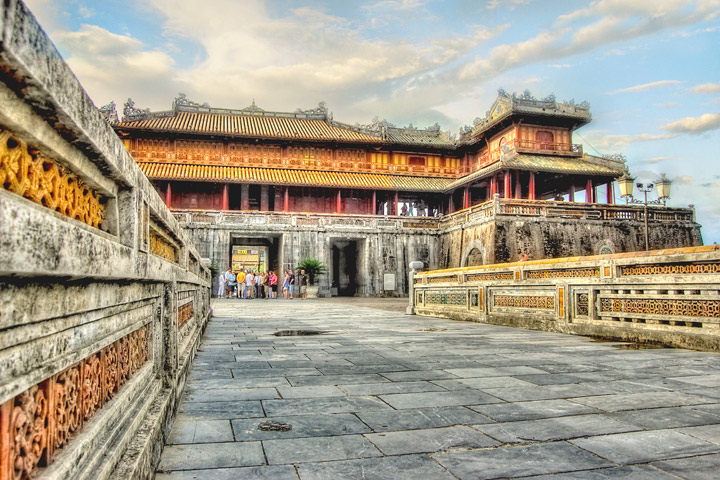
It is imperative that one be able to tell Hue and Thua Thien- Hue apart. When someone says the word “Hue'' in a conversation, it is highly likely they are referring to Hue city itself. Hue city is situated in Vietnam’s central province of Thua Thien- Hue, which is bordered by the more well-known city of Đà Nẵng to the South and the war-torn province of Quang Tri to the North. This article will place its focus on Hue city while not forgetting to suggest some other worth-visiting places in other parts of Thua Thien- Hue province.
Best time to visit
Featuring a tropical monsoon climate , Thua Thien- Hue enjoys wet and dry periods over the year, with the dry season spanning six months, from March to early August, and the monsoon season lasting from late August to January. With 120 kilometers of coastline, the whole province of Thua Thien - Hue is especially vulnerable to devastating hurricanes from the East Sea. Thus, one has to be on their guard when they decide to visit Hue from August to January.
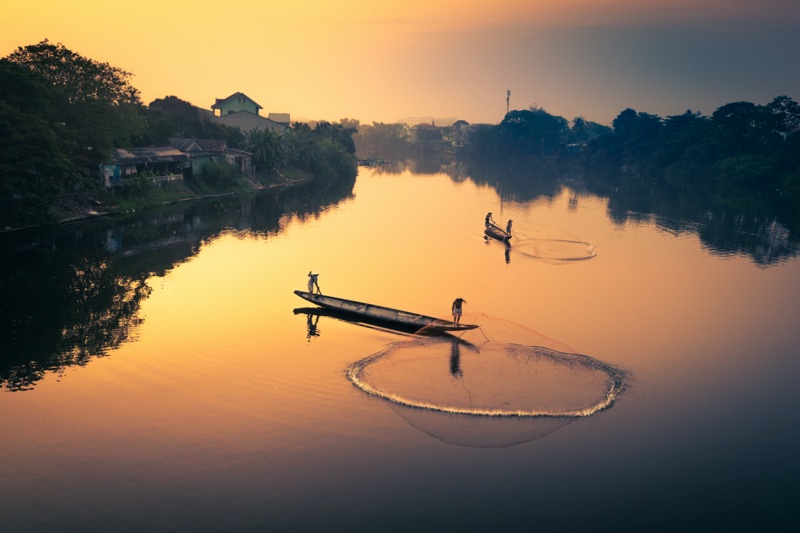
The weather in Hue remains hot from early May to end of September, with temperatures reaching up to 38 to 40 degrees Celsius in May and June. From October to March, affected by the Siberian anticyclone, average temperatures in Hue hover around 20 to 22 degrees Celsius, with lows of 9 degrees Celsius. Thus, it is from January to March that is the best time to visit Hue as the weather may be cool enough while there is little or no rain between these two months.
How to get there
Hue’s Phú Bài Airport connects this city with other major cities in Vietnam through direct domestic flights. Located in Central Vietnam, it only takes at most 1.5 hours to fly to Hue from any part of Vietnam. There are daily direct flights to Hue from the capital city of Hanoi and from Vietnam’s most populous city of Ho Chi Minh. A round trip may only cost VND 2.500.000 (approximately USD 120).
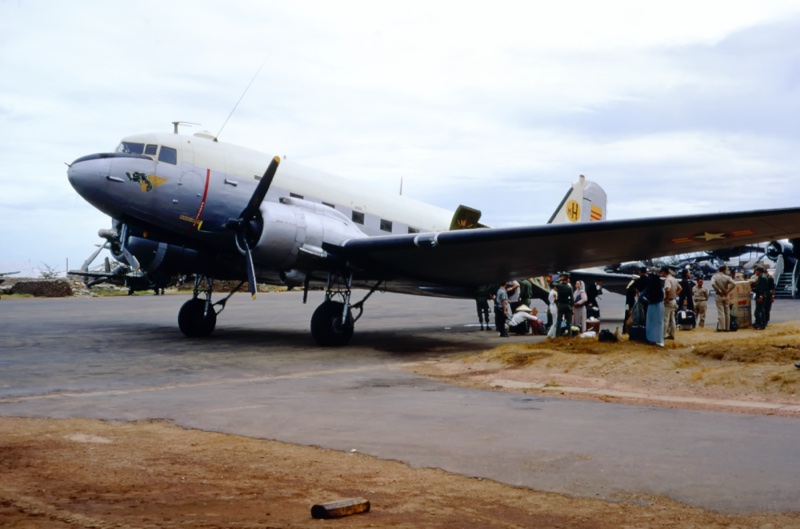
Most travelers would choose this mode of transport to travel to Hue from its neighboring city of Danang. The train ride may last from 2 hours to 4 hours depending on the type of train you choose, and the ticket is pretty much reasonably priced, at VND 80,000 (4 dollars). The route will offer you a stunning view of Vietnam’s coastline as well as Lang Co Bay – one of the most beautiful bays in the world.

Car/motorbike
Hue is highly accessible by car and motorbike. However, please be informed that roads in Hue’s center are relatively small for large cars as most roads have only two lanes.
Where to stay
The fact that Hue is somewhat less developed than its neighboring city of Đà Nẵng and significantly less touristy than Hội An does not mean that there are no high-quality hotels in the former capital of Vietnam. In fact, there are quite a few high-quality hotels revolving around the Imperial City. To name a few luxurious boutique hotels , Hue has Indochine Palace Hue, whose architecture and design are strongly praised by travelers and architects who have stayed here, VinPearl, whose name is already very familiar with Vietnamese people, and Azerai La Residence, a colonial-style villa sitting on the bank of Hương river.
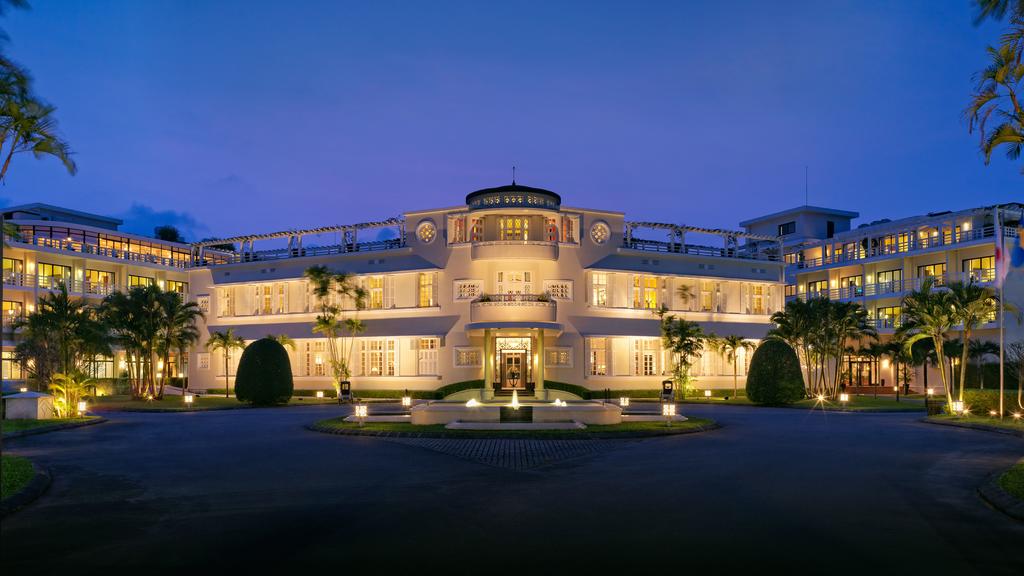
Meanwhile, there are some other 3-star hotels located around the city centre which only cost as much as VND 1,000,000 (~USD 50) per night as well as some small guest houses that only charge you around VND 200,000 (~USD 10) to VND 500,000 (~USD 25). The rise of AirBnB has also diversified accommodations in Hue as many serviced apartments in Hue can now be found on AirBnB.
Places to visit
The complex of hue monuments.
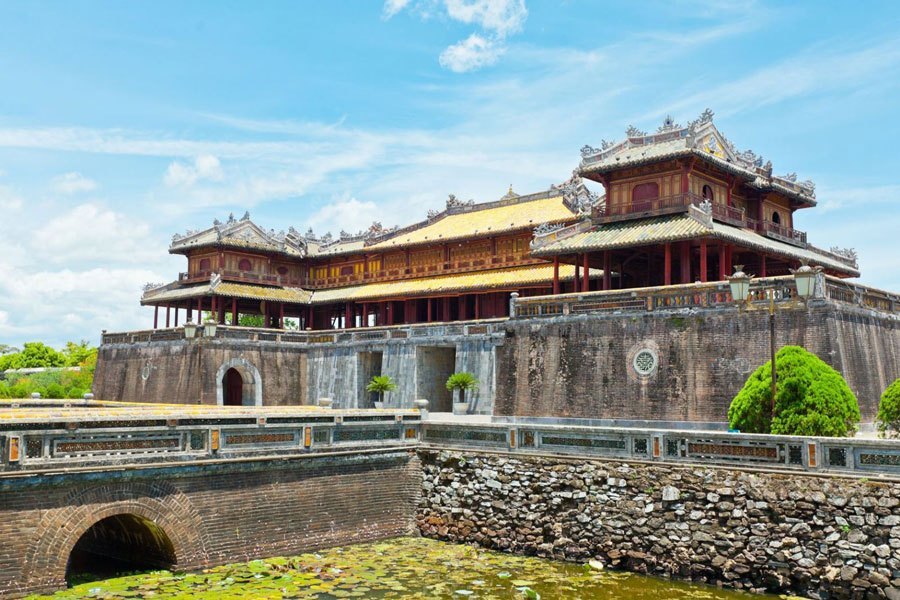
Constructed on the banks of Hương river, The Complex of Hue Monuments is an imperial palace complex at the heart of Hue city, Thua Thien– Hue province. Due to its cultural, architectural and historical significance, The Complex of Hue Monuments was recognized as a UNESCO world heritage site in 1993. Many monuments and ruins, the most recognizable of which is Ngo Mon gate, are featured in the massive complex which was once used by the royal family and their eunuch servants.
Here, time comes to a halt as you meander along the palaces and revel in the harmonious medley of culture and history. A visit to this site may bring you back to the history of old Vietnam as well as offer you a glimpse into Vietnamese history. Don’t forget to bring a big bottle of water and wear a high-quality pair of sneakers!
Khai Dinh Mausoleum
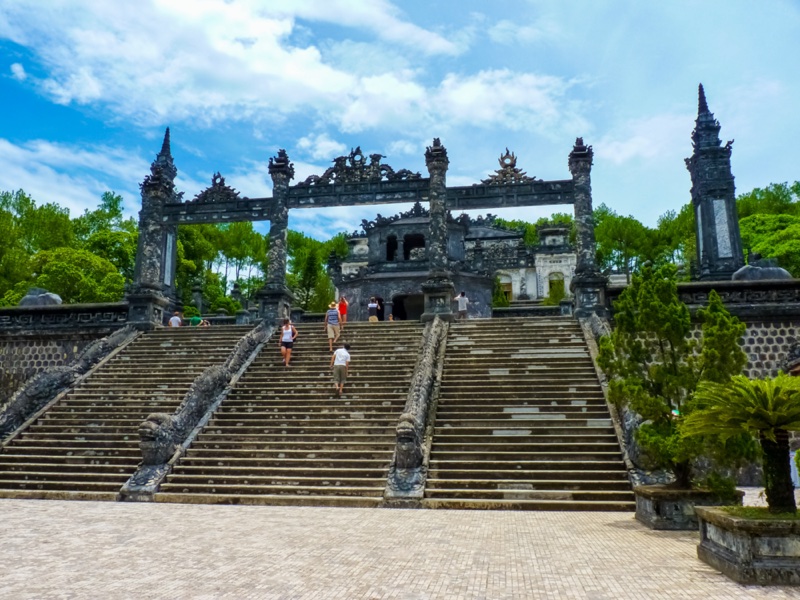
Hue remained the capital of Vietnam by the Nguyễn dynasty during their reign over the country. As the kings passed away, they also wanted to be buried in Hue as they believed this region had good feng shui. Among all mausoleums in Hue, Khải Định mausoleum stands out as the most gorgeous, most stunning and most architecturally valuable one. The mausoleum of Emperor Khải Định, who was deemed an aesthete by many, embodies a perfect confluence of Eastern and Western architecture.
Minh Mang Mausoleum
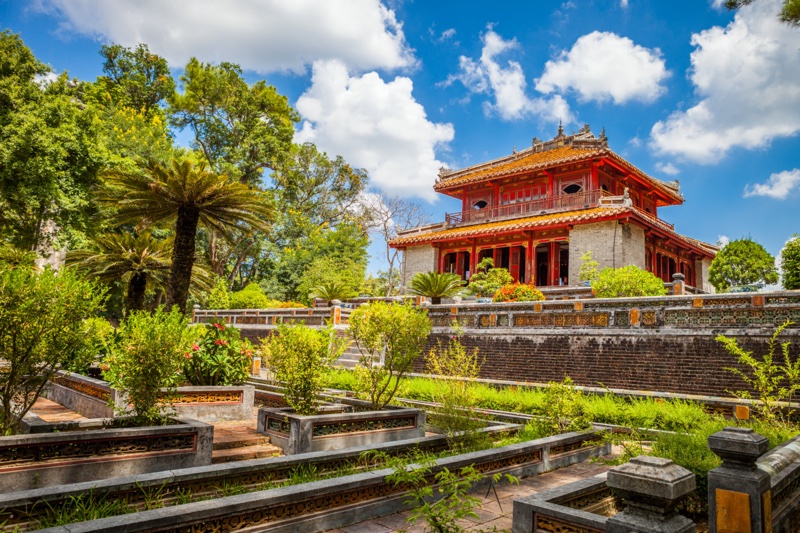
Another mausoleum worth visiting is Minh Mạng mausoleum. While Khải Định mausoleum features an outstanding blend of traditional Vietnamese and French architecture with beautifully carved walls and vibrant colours, Minh Mạng mausoleum has traditional Eastern architecture inspired by Confucianism. This mausoleum is located on Cam Khe mountain, at the place where Ta Trach and Huu Trac rivers merge into one water body named Hương River.
- Thien Mu Pagoda
Irrespective of one’s religious beliefs, Thiên Mụ Buddhist Pagoda is definitely worth adding to his itinerary. This temple, endowed with priceless architectural and religious values, has inspired the works of art of an immense number of Vietnamese artists, poets and authors. The stupa of this temple, Phước Duyên, is an iconic symbol of Hue city. This octagonal tower, which embodies a traditional Mahayana stupa, represents Taoist cosmology, which has a strong influence on today’s Mahayana Buddhist cosmology.
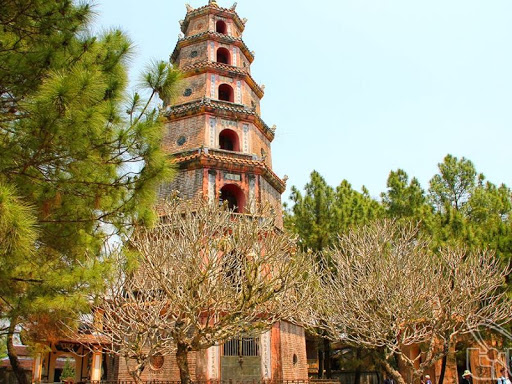
Hue High School for the Gifted (Quoc Hoc Hue)
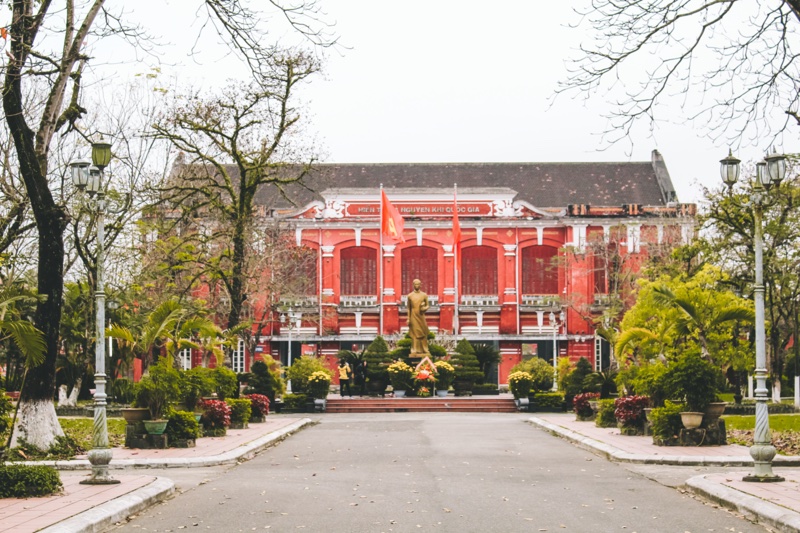
The idea of visiting a school on vacation may not have sprung to one’s mind. However, one should take Hue High School for the Gifted into consideration when they happen to be in Hue. This atmospheric school may fill you with nostalgia for your schooldays. It is the largest high school campus in Vietnam with many large shady trees, benches, and colonial architecture.
See full lists of Hue attractions .
Food to try
Vietnamese cuisine encompasses diverse elements of the culinary culture of Vietnam, which is divided into three categories: Northern Vietnamese cuisine, Central Vietnamese cuisine and Southern Vietnamese cuisine. Food whose roots are traced back to Hue plays a crucial role in the formation of Central Vietnamese cuisine.
In general, Hue cooking places its emphasis on well-prepared dishes with strong aromatic components and a spicy edge, reflecting the preferences of royal families in the past. Bun bo Hue (Hue-style beef noodles), which is the most well-known Hue food, is a perfect example of this argument. There is no room for simplicity in this kind of food whatsoever as it demonstrates intricacy, attention to detail as well as the use of medically beneficial ingredients.
Other than bún bò Hue, bánh lọc (tapioca dumplings) is also another Hue’s well-known food. They are small, chewy tapioca dumplings filled with prawn and pork belly, and are used with diluted fish sauce. One tapioca dumpling only cost VND 2,000 (~ USD 0.1) on average. Also, bánh xèo, a savoury pancake containing a variety of stuffing (pork, prawn and bean sprout) in batter mixed with turmeric powder, is another must-try food. Unlike Mekong Delta’s version of bánh xèo, Hue’s version is smaller in size, slightly thicker, crispier and is used with sophisticated peanut sauce, creating such an aromatic smell.
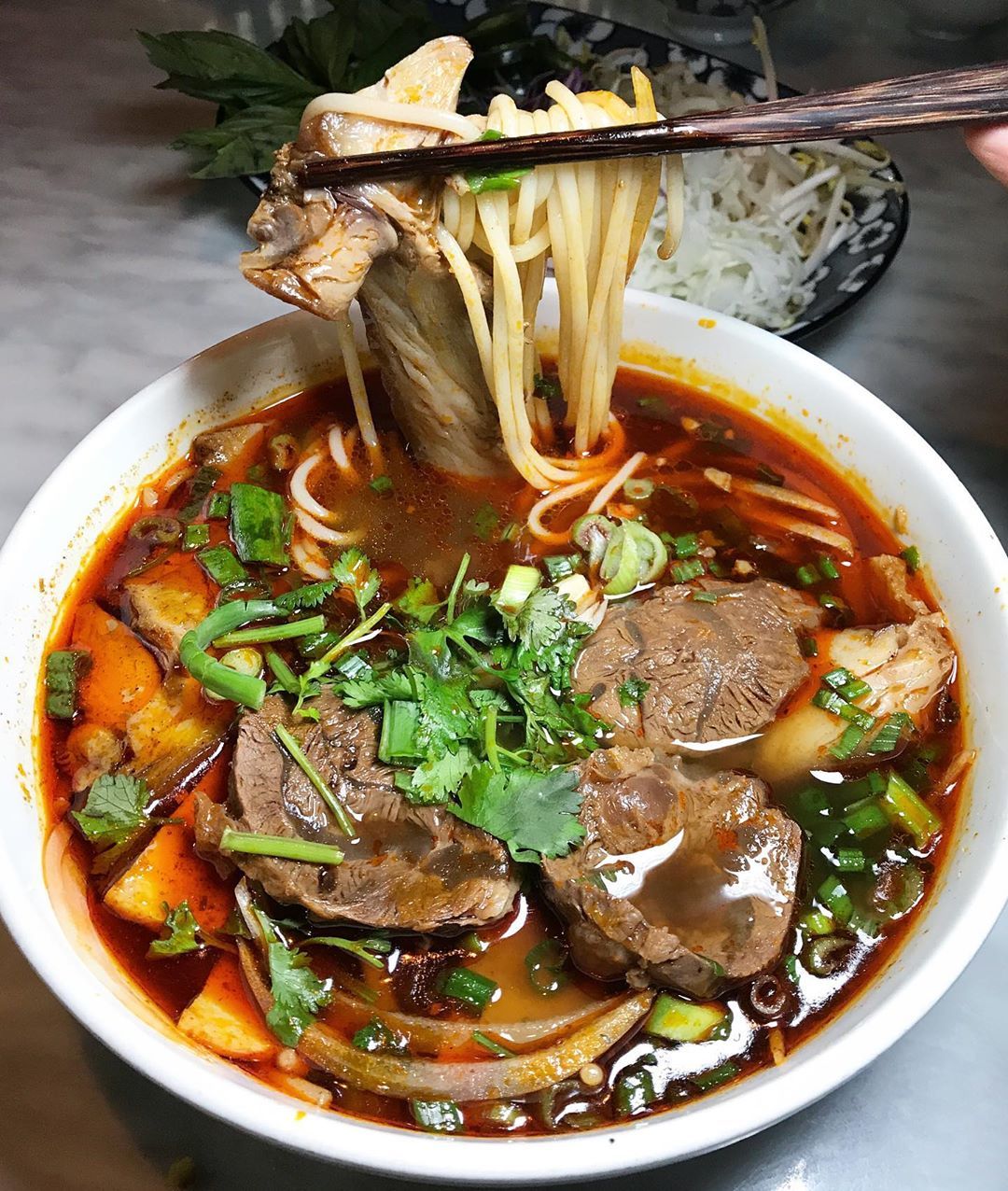
Last but not least, it will be a big mistake if one skips chè cung đình (royal dessert) when they travel to Hue. It is believed that the members of the royal family relished having chè as a dessert. This kind of food in Hue, in contrast to the sweet taste of the Mekong Delta’s version, has a light taste and does not tend to include coconut milk. The most favoured kinds of chè are chè nhãn lồng hạt sen (chè with lotus seed wrapped in longan flesh), chè bột lọc heo quay (chè with roasted pork wrapped in tapioca). Fancy as they may sound, one dish of chè may only cost as much as VND 15,000 (~ USD 0.7).
Popular Attractions
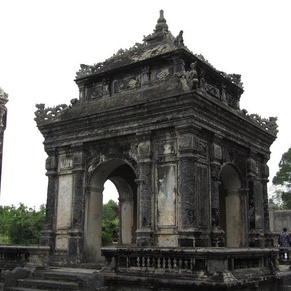
Seasonal Guides
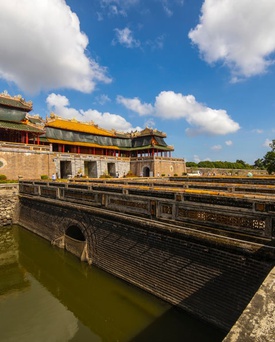
Best Of Hue
See, Eat, Sleep, Shop, Stay - The Best of Hue
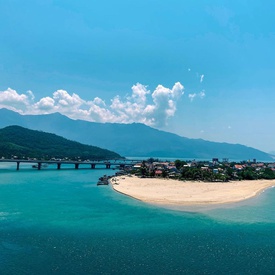
A List Of 10 Most Hospitable Tourist Destinations in Vietnam Post Covid-19 Pandemic
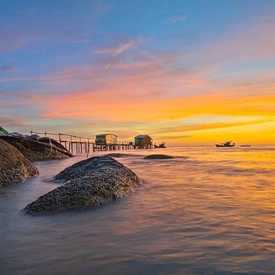
5 Best Spots For Admiring Sunset Throughout Vietnam
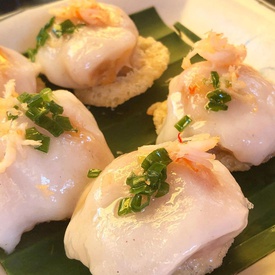
The Top 6 Foods You Must Try in Hue City
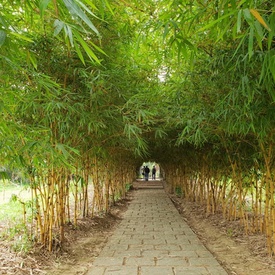
Make a Beeline for The 10 Most Beautiful Villages in Vietnam
Frequently asked questions, what is the open time for hue's citadel.
Learning clearly about the opening hour of the attractions will help you plan your schedule better. Below is the opening time of the sights for your reference:
Summer Time: from 06:30 AM to 17:30 PM
Winter Time: from 07:00 AM to 17:00 PM
What food to try while in Hue?
Hue is a true cuisine paradise where you can find plentiful iconic local specialties. These are the most popular dishes that you can find in every corner of Hue city:
- Hue Rice Dumplings: Banh Beo (Rice Savory Dumpling), Banh Nam (Steamed Flat Rice Dumpling), Banh Loc (Tapioca Savory Dumpling)
- Com hen, bun hen (Baby Clams with Rice or Noodle)
- Bun thit nuong (Hue Grilled Pork Noodle)
- Nem lui (Hue Lemongrass Skewer)
See the 5 must try Hue's delicacies
What are the most famous attractions in Hue?
Coming to Hue, you shouldn’t miss historic monuments, ancient pagodas, and breathtaking landscapes. You can take a look at our recommendations below for the must-see sights:
- Hue Imperial City
- The Tombs of Emperors: Tomb of Tu Duc, Tomb of Khai Dinh, Tomb of Minh Mang
- Perfume River
- Lang Co Beach
- Thanh Toan Bridge
How to get to Hue Airport?
Phu Bai Airport is 15km from the center and there are 2 popular choices to travel to the downtown: taking a taxi/private car or taking a bus. It will save you time and certainly more comfortable by a taxi or private car, while the bus is a more cost-saving option, it is only around VND 50,000/person. You may have to wait quite a long time for the bus, however.
Vietnam's Most Popular Destinations
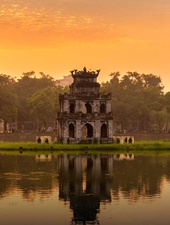
You are using an outdated browser. Please upgrade your browser to improve your experience.
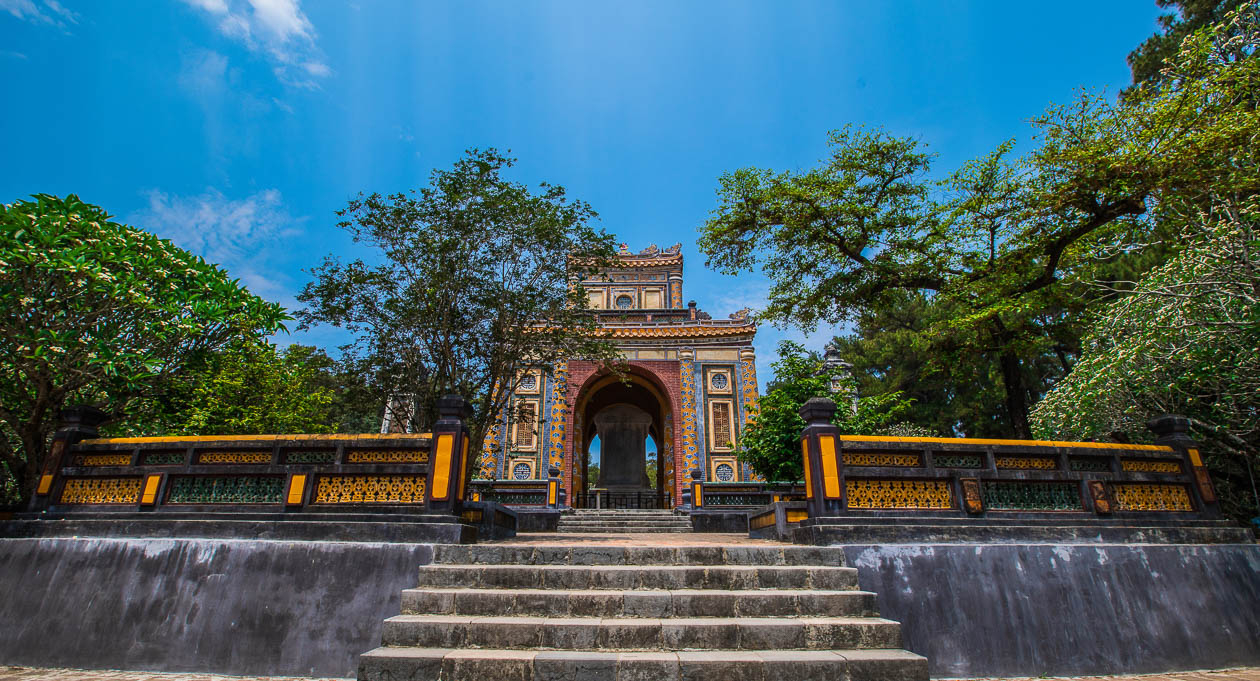
You may also like
Nearby places.
- How To Get There
Hue is a city chock-full of stories. The Kings of the Nguyen Dynasty built their feudal capital along Hue’s fertile riverbanks and atop its forested hills, but their imperial legacy is just one of many reasons to visit. Hue’s refined cuisine is the stuff of legend, and its leafy streets are lined with mossy pagodas, art déco mansions, and eye-popping markets. Through the whole scene flows the Perfume River, setting a languid pace the rest of the city is happy to follow.
Click the image below for a 360-degree tour of hue.
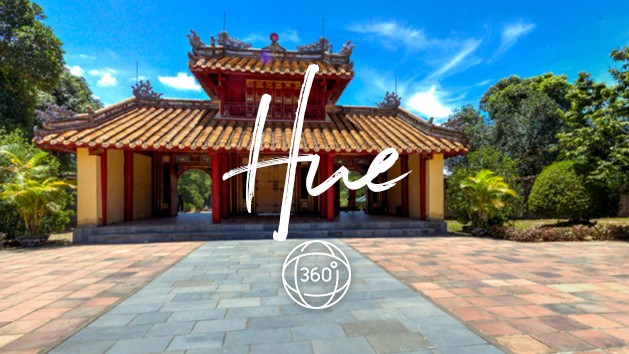
Top things to do in Hue
See Imperial Vietnam
Get acquainted with Vietnam’s last royal dynastic family by exploring what survives of their 143-year reign. Roam the palaces, pavilions and theatres of the Hue Citadel and make time to visit the tombs of emperors Tu Duc, Minh Mang and Khai Dinh.
Eat like a king
You’re never far from a world-class meal in Hue. Nose around the flapping-fresh produce at Dong Ba Market for a teaser, then whet your appetite with Hue’s much-loved snacks, such as Banh Khoai and Banh Beo.
Explore the city's Buddhist roots
Hue’s serene atmosphere is most penetrating in its pagodas and monasteries. See the iconic seven-tiered tower of Thien Mụ Pagoda, then pay a visit to Tu Hieu Monastery, where Thich Nhat Hanh spent his days as a novice monk.
Cycle in the rice paddies
Hue’s photogenic streets and lush countryside are a wonderland for casual cyclists. The ride to the tile-roofed Thanh Toan Bridge is one of Hue’s most captivating, winding past vegetable farms, footbridges, and flocks of ducks.
Revisit colonial history
Travellers with an eye for architecture will enjoy seeing what remains of French influence in Hue. Stroll down Le Loi to encounter the art déco lines of La Residence Hotel, and the stately crimson buildings of Quoc Hoc High School.
Hue Weather
Hue’s springtime months, from February to the end of April, show the historic capital in its best light. In June and July, prepare for scorching days as heat and humidity rise. The rains come in August and can last through January. Note that Hue often sees some flooding, usually from October to late in the year.
Hue Transport
Domestic flights from Hanoi and Ho Chi Minh City touchdown in Hue’s Phu Bai Airport, a 30-minute drive from the city. Travellers also can hitch a train to Hue on the Reunification Express line, ride the open bus or hire a private car from the international airport in Da Nang, two hours away. If you want to spend the day exploring the Citadel, riverside and central town just walk or consider hiring a cyclo for the day. For visiting the Imperial Tombs, taxis are available, or you can hop on a bicycle.
In this article:
Imperial Hotel Hue
Pilgrimage village boutique resort and spa, la residence hue hotel & spa - mgallery by sofitel, indochine palace hotel, angsana lang co, saigon morin (hotel saigon morin), huong giang hotel resort & spa, green hotel hue, century riverside, cherish hotel, mondial hue, romance hotel, muong thanh hue, midtown hotel, moonlight hotel hue, eldora hotel, ana mandara hue.
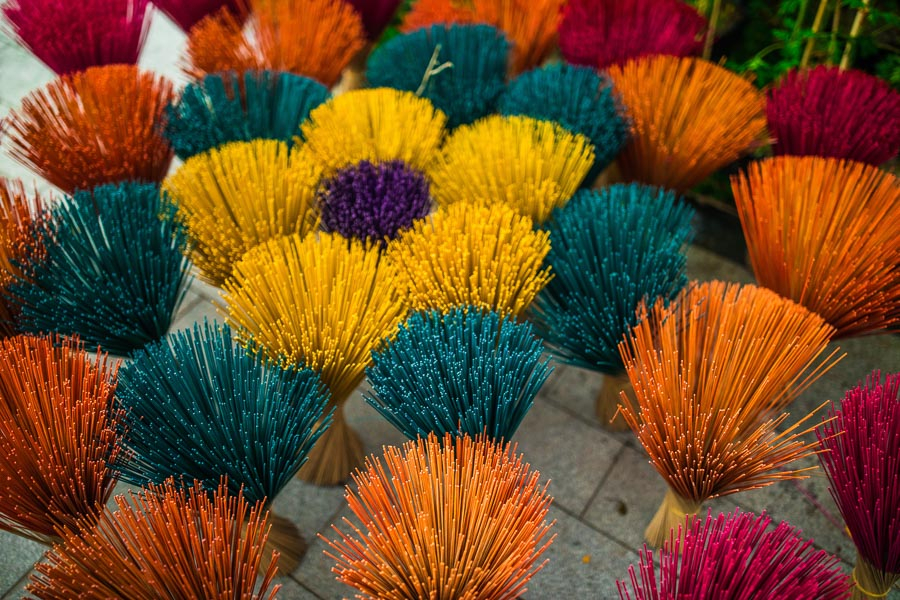
- You are here:
- Places To Go
- Central Vietnam
Create an account
Already have an account? Click here to sign in
By clicking submit, you agree to our Privacy Policy and Terms of Use
Sign in with your social accounts
Sign in with your email
Forgot password? Click here to get it back
Don't have an account? Sign up here
Forgot Password
The entered email has subscribed for Vietnam Tourism monthly newsletter
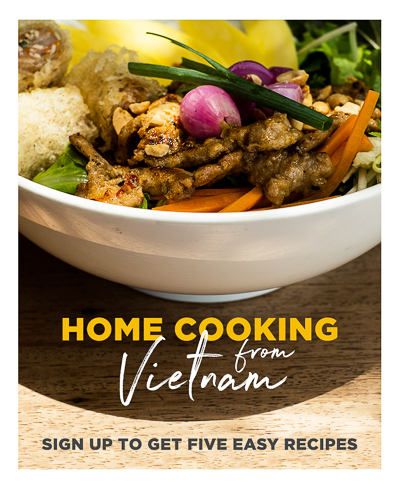

- Culture & Arts
- Ho Chi Minh City
- Attractions
- Phu Quoc Island
- Mekong Delta
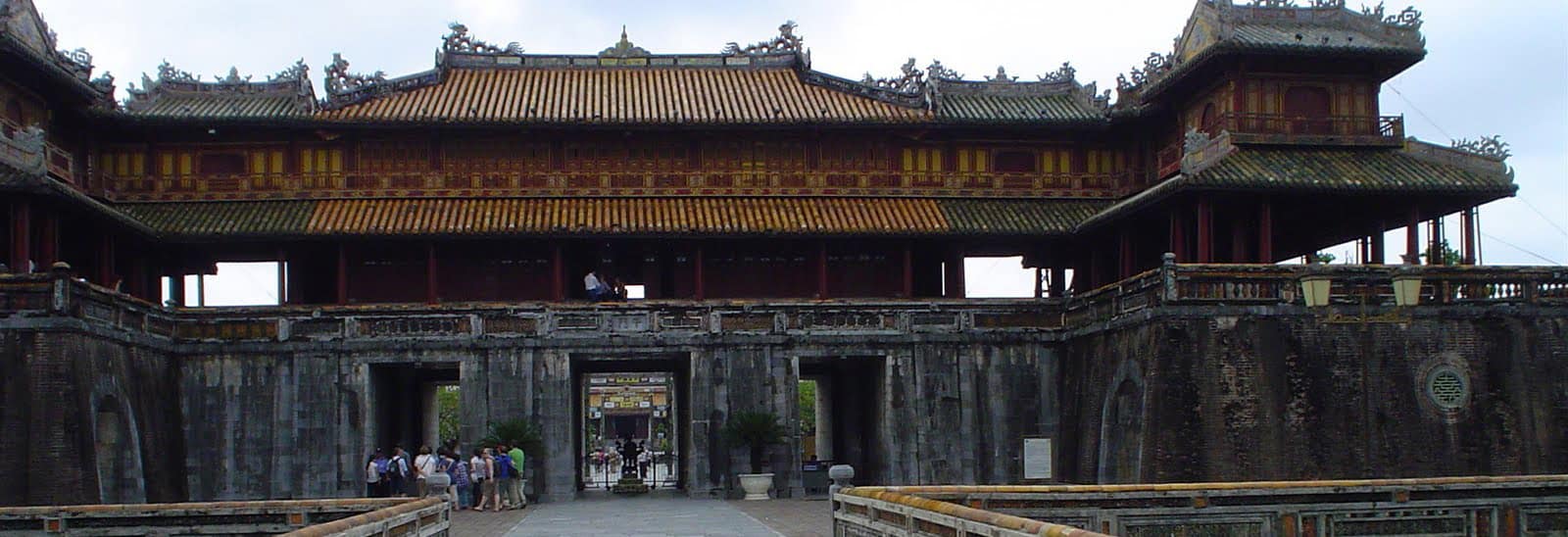
Top 16 Best Things to Do in Hue for First-Timers
Recommendations of Rich Culture Destinations in Hue
Hue, Vietnam is best known for its royal mausoleums, imperial citadel, and iconic pagodas. Boasting a fantastic and rich cuisine, Hue is not only a favorite destination for people loving architecture but also a mecca for Vietnam gastronomes. Here are top 16 recommendations of rich culture and best things to do in Hue , Vietnam.
1. Contemplate Imperial City
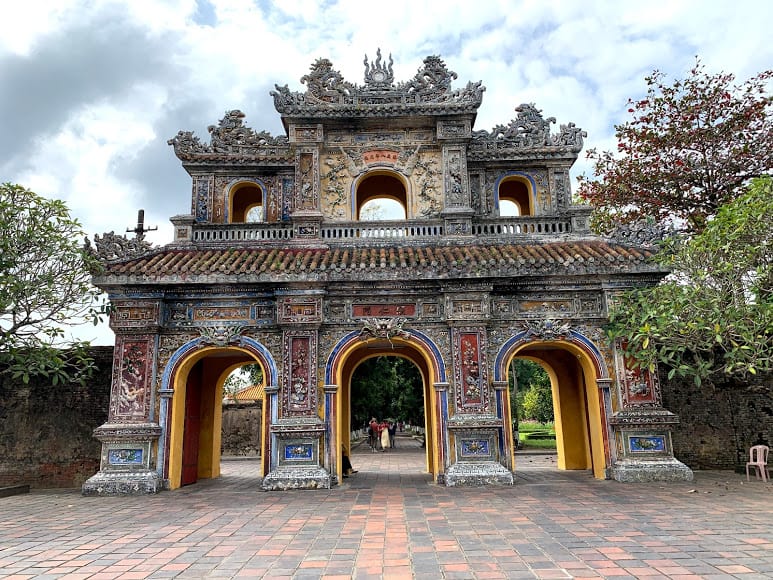
The Imperial City is a part of of the Imperial Citadel back to the Nguyen dynasty. This used to be a combination of many temples, courts, pavillions, walls and gates, but unfortunately, mostly everything was destroyed during the Vietnam-America wars in the 19s. However. it’s still very well-worth to visit the place, since the left buildings are being restored, and there are even some places that are still in good condition. Coming to the Imperial City, you can also book a tour guide to take you through the place and tell you about the history of Hue city and the Nguyen emperor, which is really interesting and important in Vietnam’s 4000 years history.
Opening hours: 8AM – 5:30PM every day (including weekend)
Dress code : Not required
Entrance fee:
- Imperial City only: 150.000VND/person
- Combination ticket (Imperial City + Minh Mang Tomb + Khai Dinh Tomb): 280.000VND/person
- Combination ticket (Imperial City + Minh Mang Tomb + Khai Dinh Tomb + Tu Duc Tomb): 360.000VND/person
2. Visit Ancient Emperors’ Tombs
2.1. khai dinh tomb.
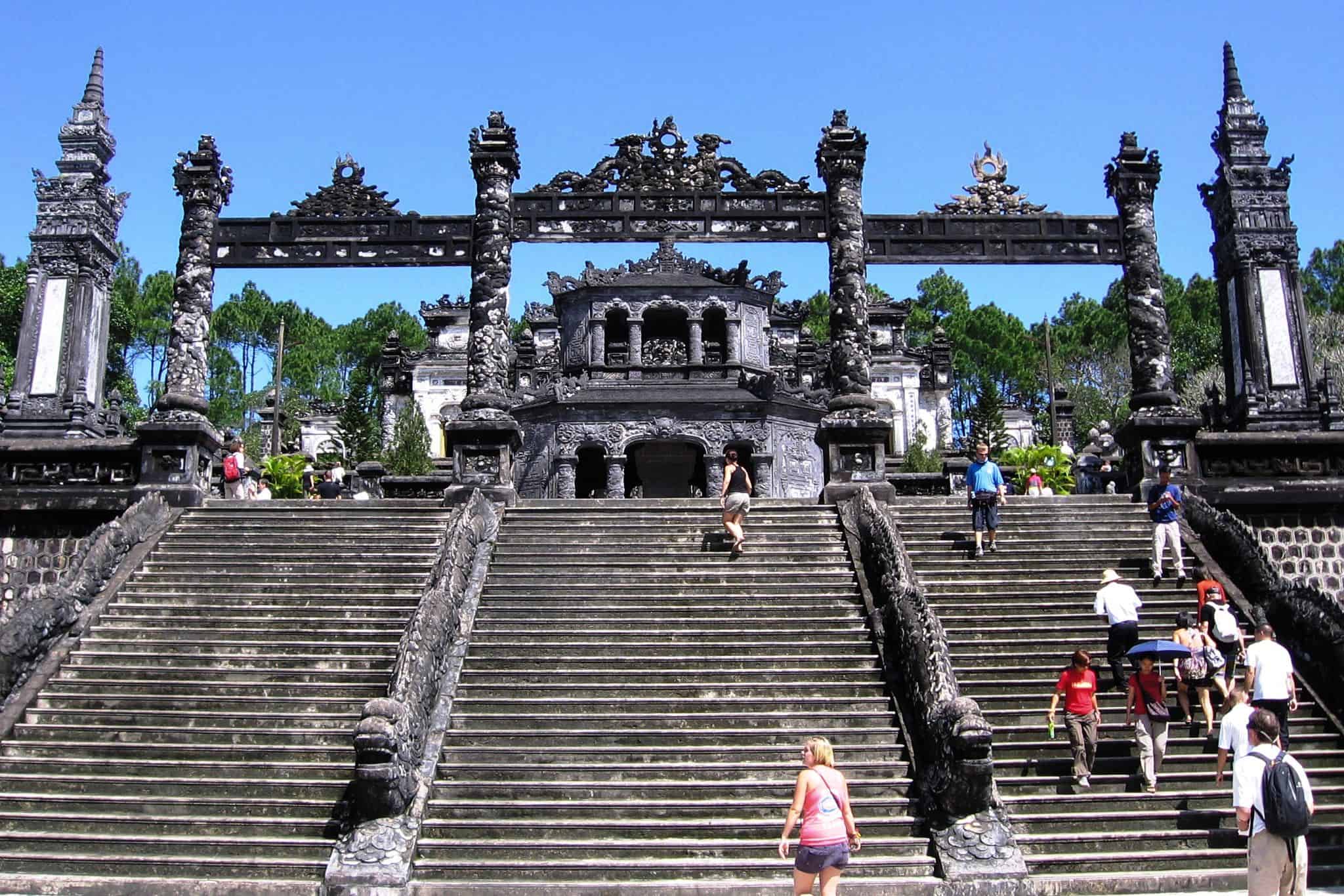
Khai Dinh Tomb , officially known as the Ứng Mausoleum, is situated in Chau Chu mountain, about 10km away from Hue city, Vietnam. The tomb is the smallest, but most costly and recent one in comparison with other tombs of Nguyen royals. It was established by Emperor Khai Dinh, the 12th Emperor of the Nguyễn Dynast, during the period from 1920 to 1931. Khai Dinh became Vietnam’s penultimate emperor from 1916 to 1925 , but was not popular amongst Vietnamese people due to his close collaboration with the government of France. This 11-year-to-complete tomb is located hillside and has a combination of Eastern and Western style in terms of architecture. Khai Dinh Tomb is considered one of the most worth-visiting Hue attractions.
Entrance fee :
- Adults: 150,000 VND per person
- Children: 30,000 VND per person
Opening hours: 7AM–5:30PM
2.2. Tu Duc Tomb
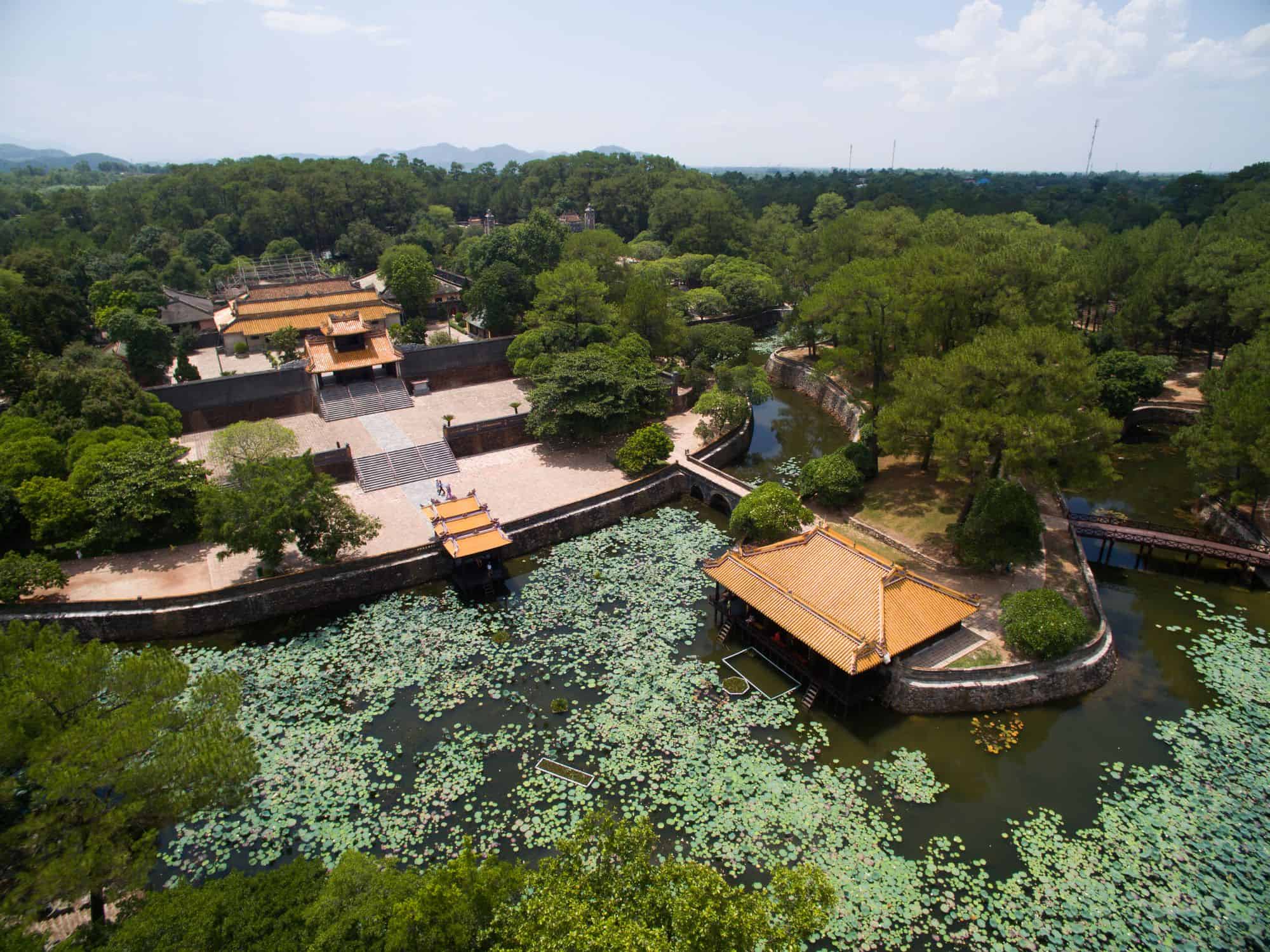
With the unique architecture and perfect harmony with the natural landscape, Tu Duc Tomb becomes one of the buildings that make the charming beauty of Hue. Tu Duc Royal Tomb was built in the Nguyen Dynasty, deserving to be one of the most attractive and indispensable destinations when traveling to Hue City.
Tu Duc Tomb Total Square is about 12 hectares, 10 times larger than Gia Long Tomb . The layout of the tomb includes nearly 50 large and small buildings scattered in clusters on the land. All the buildings in this overall architecture are accompanied by the word “Khiem” (means “Modest” in English). The overview of Tu Duc Tomb is like a large park that integrates with nature. There is no straight line, angular, but there is harmony, winding instead, even though the building is entirely created by human hands.
2.3. Minh Mang Tomb
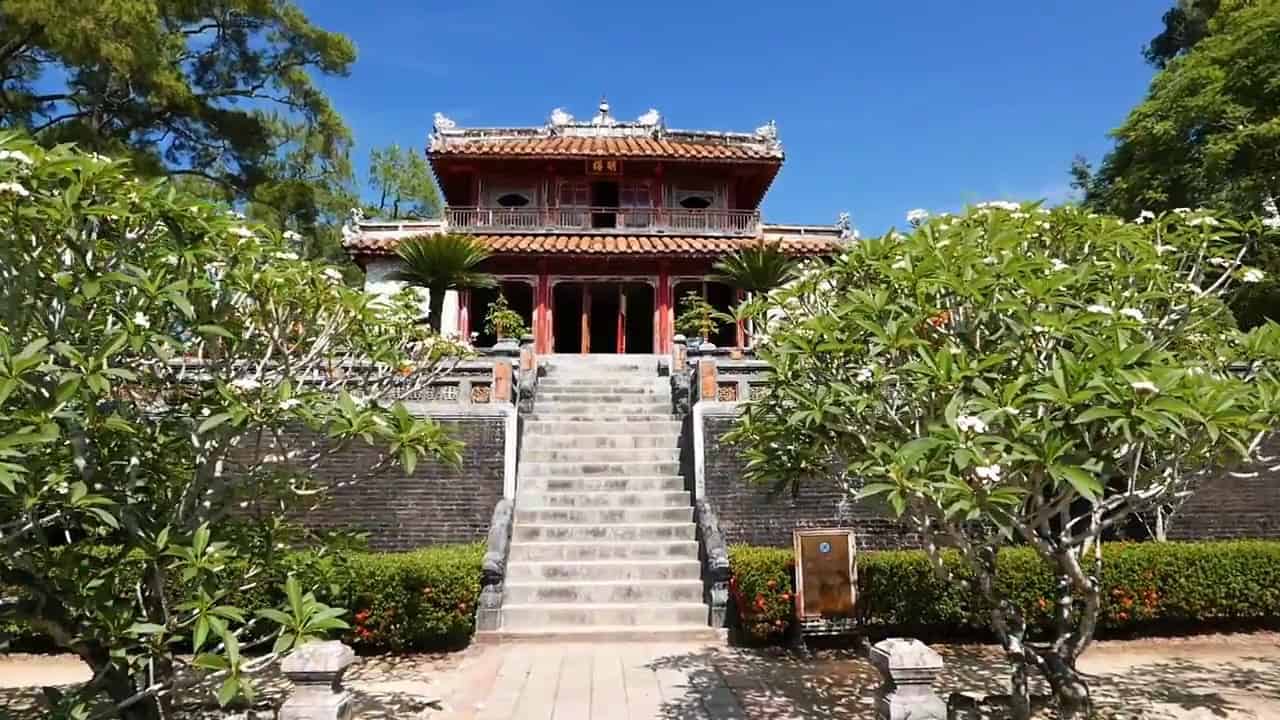
Minh Mang Tomb is located on the west bank of Perfume River. It was completed in 1843 with an unique architecture, different from all of the other ones. While Khai Dinh Tomb was strongly influenced by the French style, and Tu Duc Tomb was rather more traditional and Vietnamese, Minh Mang Tomb was built in a balance order in terms of nature and structures, with a lot of trees and plants around. This balance between landscape and buidings reveals a lot about personality of Minh Mang.
Opening hours: 7:30AM to 5.00PM
3. Explore Huyen Tran Princess Temple
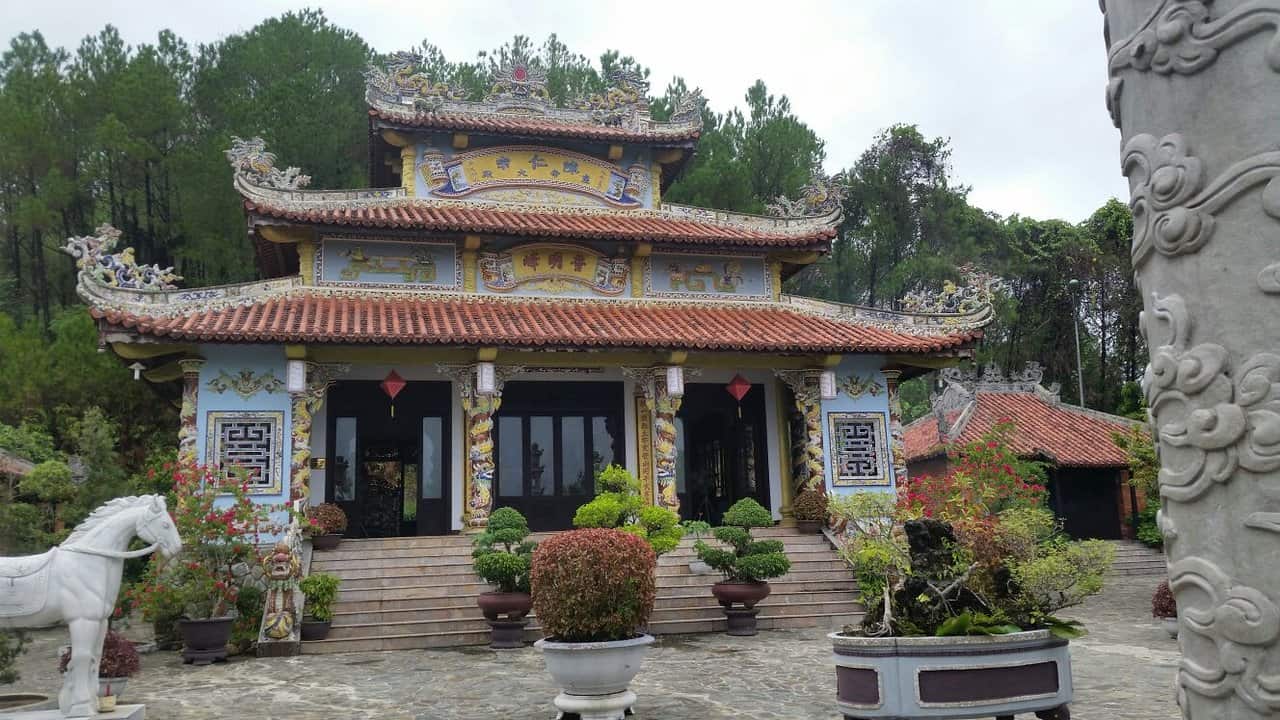
Huyen Tran is one of the most famous princesses in Vietnam’s history, who contributed as the main mediating factor between Vietnam and Champanagara. She was married to the King of Champanagara as a peace ambassador to the expansion of Vietnam’s territory at the moment. The temple was built to show the deep respect and grastitude of Vietnamese towards her. It is normally as very solemn and quiet place, however it still attracts many tourists, especially on January 9th – 15th – the death anniversary of Huyen Tran Princess. The temple is located at the foot of Ngu Phong mountain, about 6 kilometers from Hue’s center. The temple is near the royal tombs, so it’s a good idea to combine all those destinations in just one trip.
4. Savor Tasty Hue Cuisine
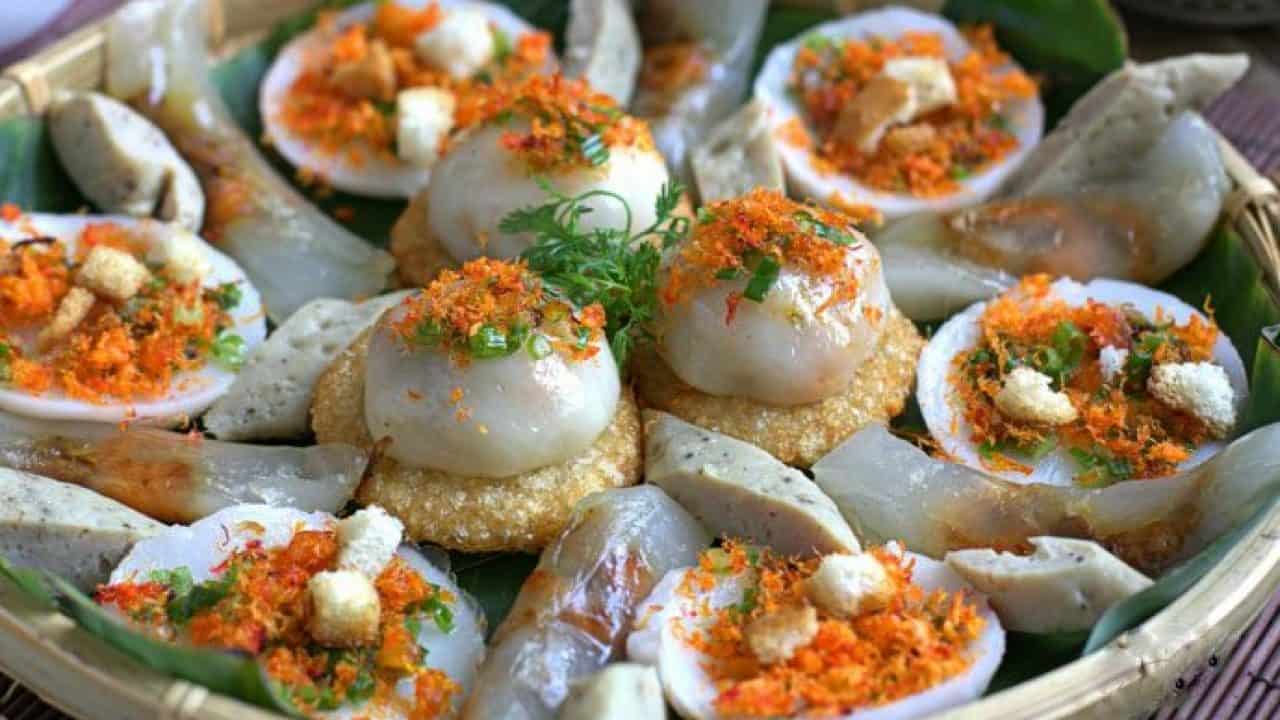
Hue is definitely one of the Vietnamese cities with the best and most unique cuisine culture. In the past, the dishes were only exclusively served to the royal families. However, nowadays, tourists can find them very easily on the streets or in the restaurants with a very reasonable price. The characteristic of Hue’s food is full of sweet and spicy flavour, with a lot of herbs and different sauces (namely fish sauce ). A few must-try dishes when you visit Hue are: Bun Bo Hue ( Hue Beef Noodle Soup ); Nem Lui (Hue Lemongrass Skewers); Com Hen (Clam Rice); Banh Beo (Steamed Rice Cakes); Banh Ram It (Fried Sticky Rice Dumplings); Che Hat Sen (Lotus Seeds Sweet Soup);…
5. Take a Perfume River Boat Ride
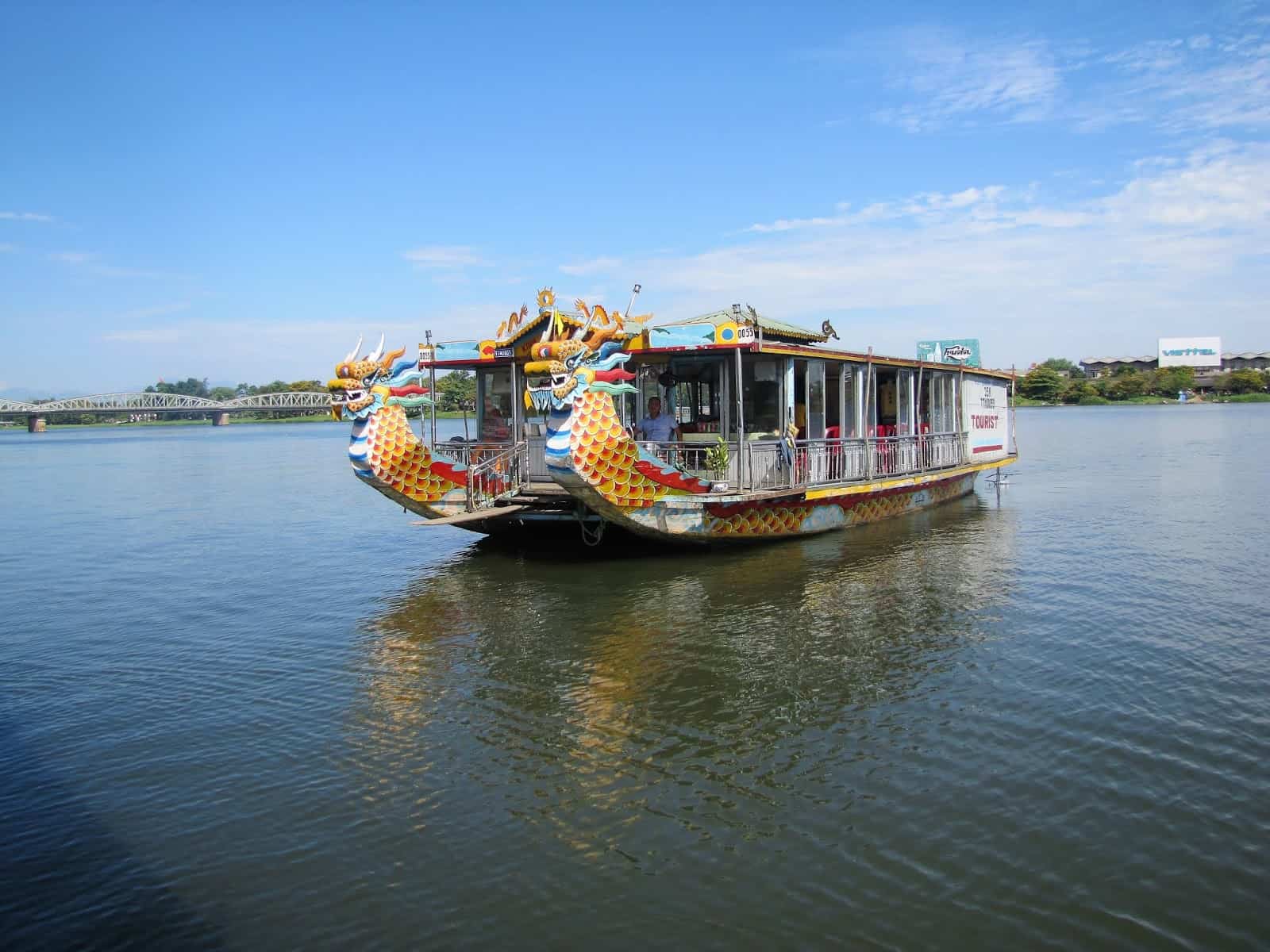
Coming to Hue, it’s a must that you have to visit the famous Perfume River. The name “Perfume” dates back to 100 years ago, when people could smell the sweet scent of flowers that floated in the river from the upriver orchards. Especially, the floral scent was the strongest during the autumn, from July to October.
Today, due to the industrialisation and the increasing numbers of boats, it may not smell the same anymore. However, Perfume River is still the symbo of Hue, and it is one of the most famous landmarks in Hue. The best time to visit Perfume River is in the afternoon when you can witness the breathtaking sunset view.
The cruising service on Perfume River is also popular here, and you will be able to visist most of Hue’s landmarks if you join a river boat tour. Today, travellers coming to Hue could not miss a while of boating along the river . Most of them admit that this is one of the most beautiful and extremely splendid riverside landscape (especially at night when lights are on) that they have ever visited! Besides, tourists usually book a river boat tour in the evening with luxury dinner served on boat. It will give you the feeling of being royal, just like the Royal families in the past.
- 3), first:(pageNumber == 1 && Math.abs(pageNumber - currentPage) > 3)}">{{ pageNumber }}
6. Find Peace in Thien Mu Pagoda
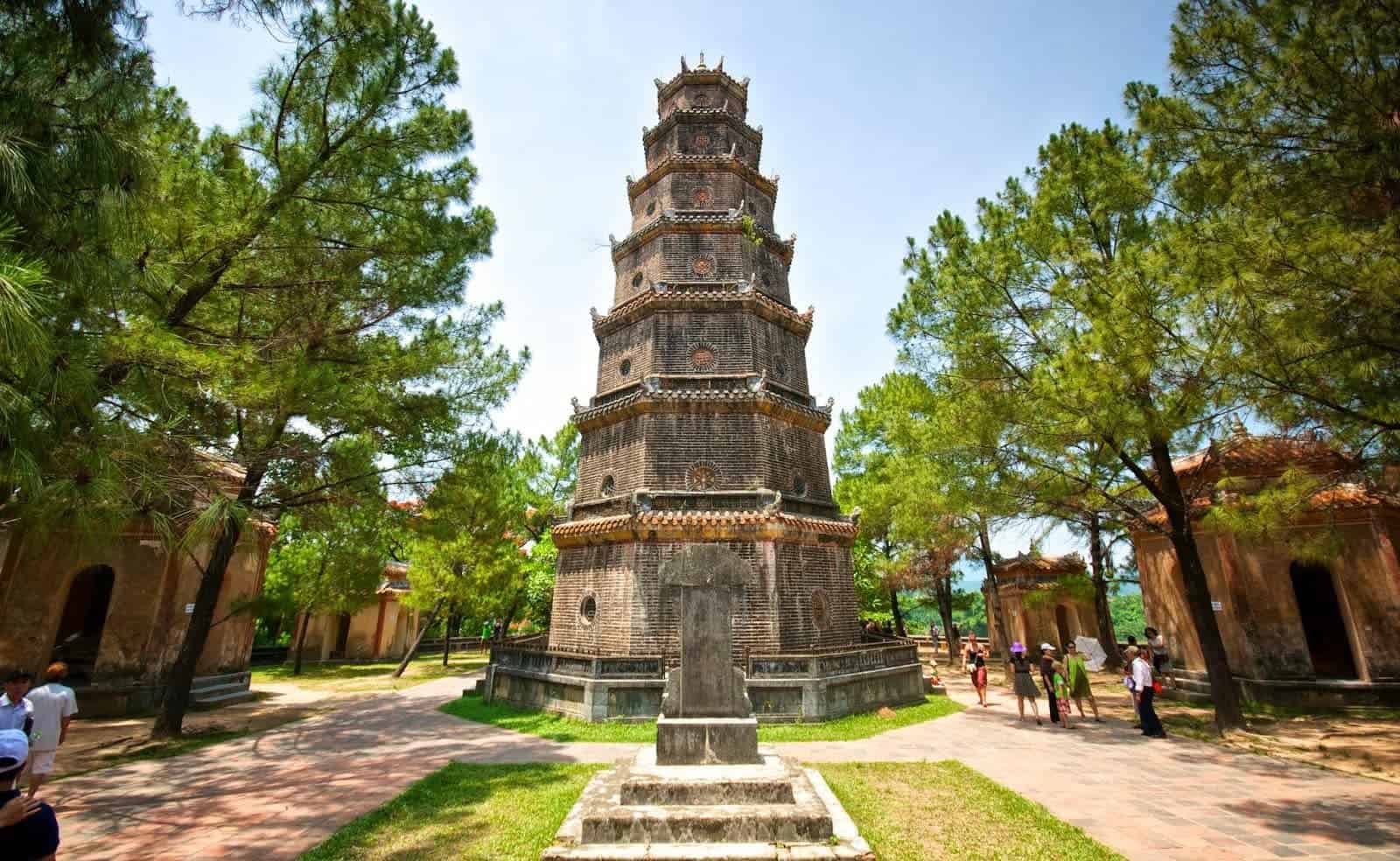
Thien Mu Pagoda (namely Heaven Fairy Lady Pagoda), also known as Linh Mu Pagoda, is one of the most fascinating and ancient pagoda in Hue city. It is situated on Ha Khe hill, on the north bank of the Perfume River , in Huong Long village, 5 kilometers from Hue city, which is easy to reach from the city center. Thanks to such a mysterious history, the pagoda has attracted a great number of tourists from both inside and outside of the nation to come and explore the legend themselves.
With its typical traditional architecture of Hue pagodas and a romantic location right next to the Perfume River’s bank, Thien Mu Pagoda has become one of the most popular tourist attractions in Hue City. It is recommended that visitors going on a city tour around Hue visiting this pagoda in the afternoon so they can observe the monks’ praying time inside the pagoda as well as enjoy the beautiful sunset on the Perfume river.
7. Visit Thanh Toan Tile-roofed Bridge
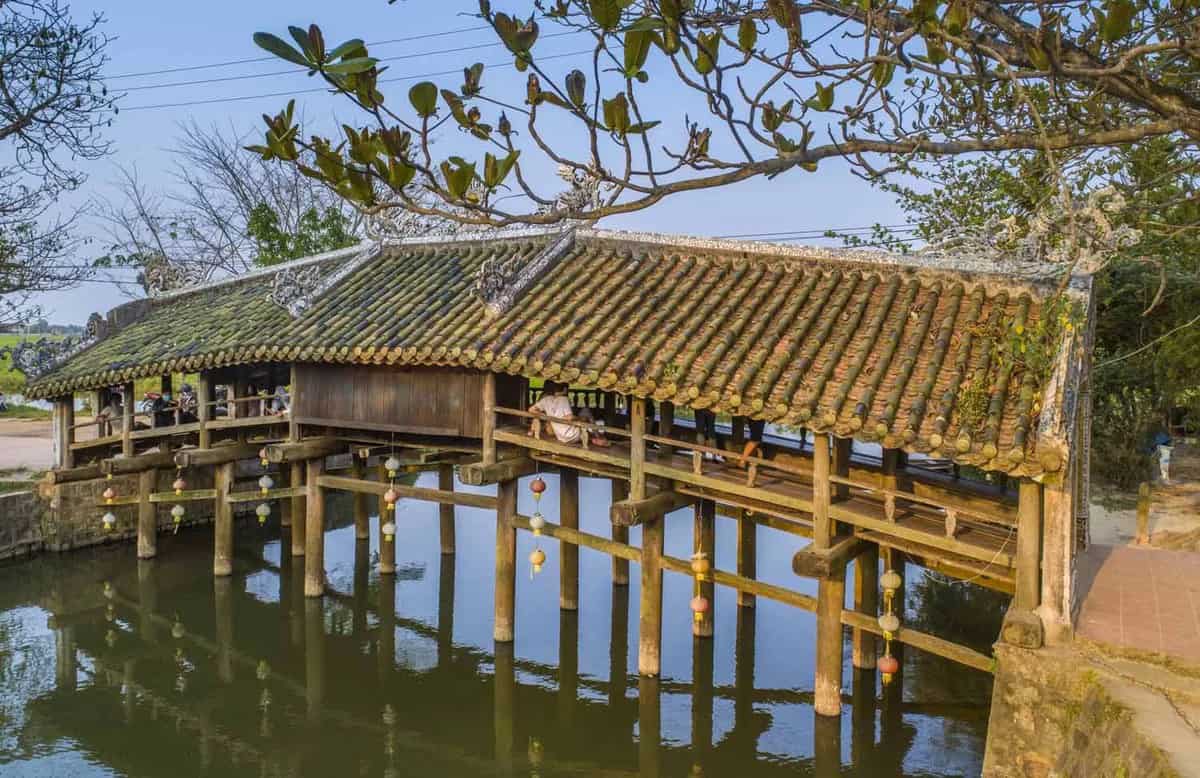
Thanh Toan Tile-roofed Bridge belongs to Thanh Thuy village which is 7km from Hue centre. Just around 15 minutes on motorbike and 30 minutes on cyclo or bicycle to reach the bridge. This is the most ancient bridge in Vietnam with a very artistic architecture style, and it’s extremely valuable in terms of architecture, history and culture.
Visit Thanh Toan Village, except for seeing the most ancient bridge in Vietnam, visitor can also row boat along canals or ride bicycle on green village road for visiting other old temples. In addition, you can also join to be a farmer and experience farming life, especially learn how to wrap a Tet sticky rice cakes ( Banh Chung & Banh Tet) or make conical hat, etc… You will have an opportunity to go to the countryside market, play hut gambling and pounding rice singing (on festivals) as well as enjoy special cuisines here.
8. Have Hue Royal Banquet Dinner
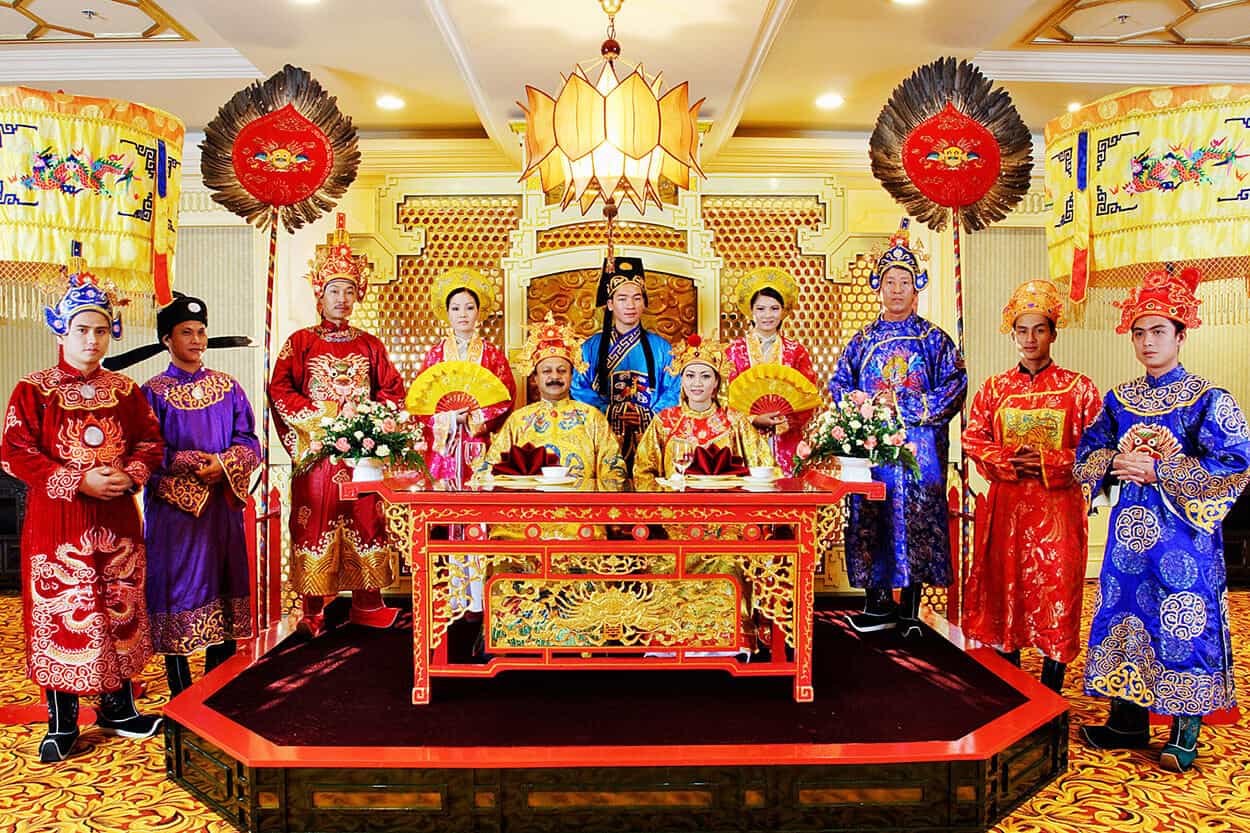
Having a Hue Royal Banquet Dinner could be the most interesting experience when you visit this city. In the past, since Hue used to be the capital in which the Royal families lived, Hue people are often very well-trained in cooking rustic food and preparing exquisite meals for the Royaltie. Going on a Royal Banquet Dinner tour, you will have the chance to actually dress up like the Vietnamese Emperor and Empress, have dinner on boat and be served with our most delicious and sophisticatedly-made dishes. You can book this tour online through an agency.
9. Relax at Hue Beaches
9.1. lang co beach.
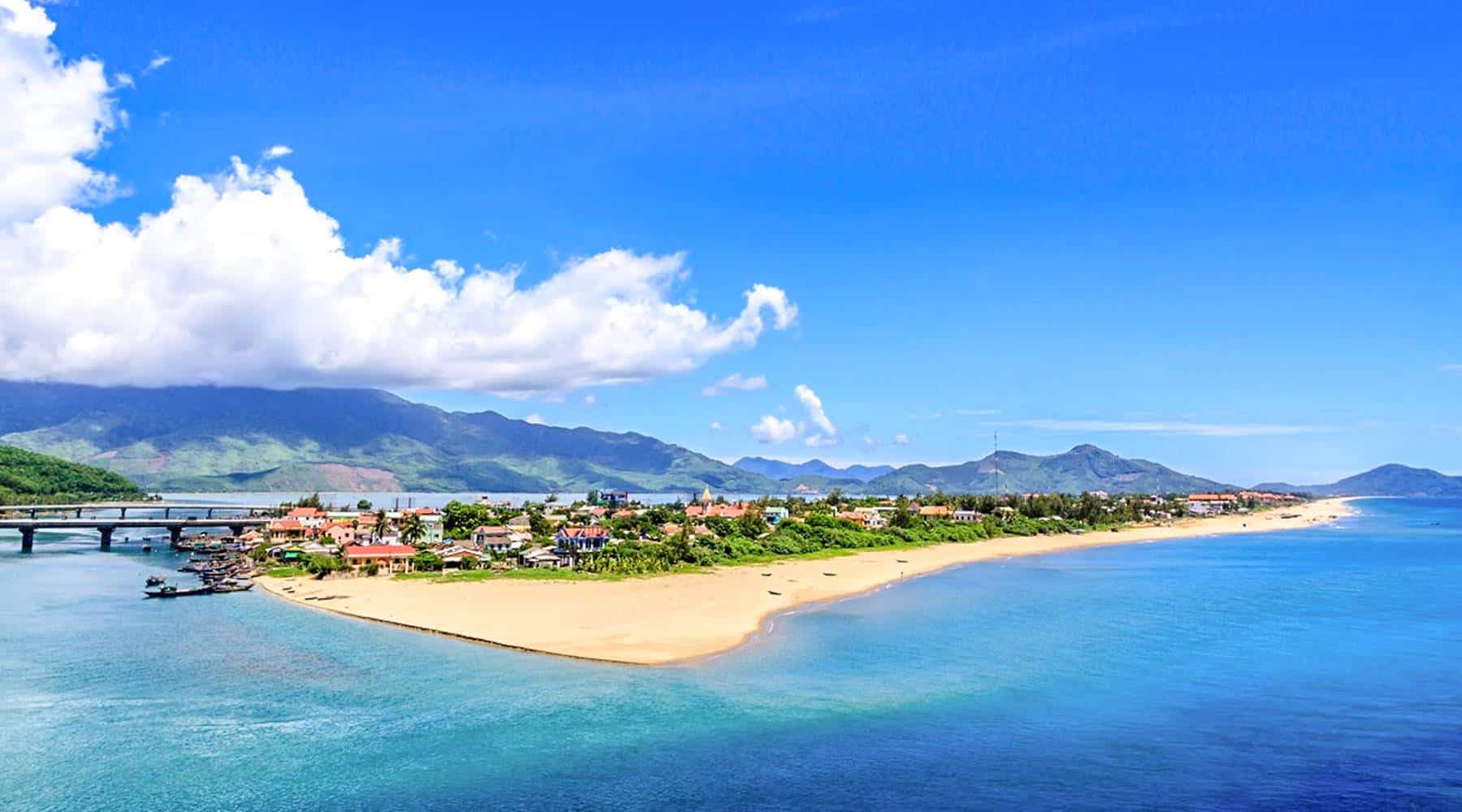
Lang Co beach is located in a romantic city called Hue. Just 24 km from Bach Ma National Park , it is an attractive stretch of white sand with 8 km length. The bay is a perfect spot for many types of beach tourism such as swimming, scuba diving, sunbathing, fishing… Additionally, you can also find attractive luxury resorts along the beach. Besides, it is well known for colorful coral reefs, lobsters, and the diversity of seafoods. From the bay, it is convenient to visit other places such as Hai Van pass, Bach Ma Mountain, and Lap An Lake. The best time to visit Lang Co is from December to March.
9.2. Thuan An Beach
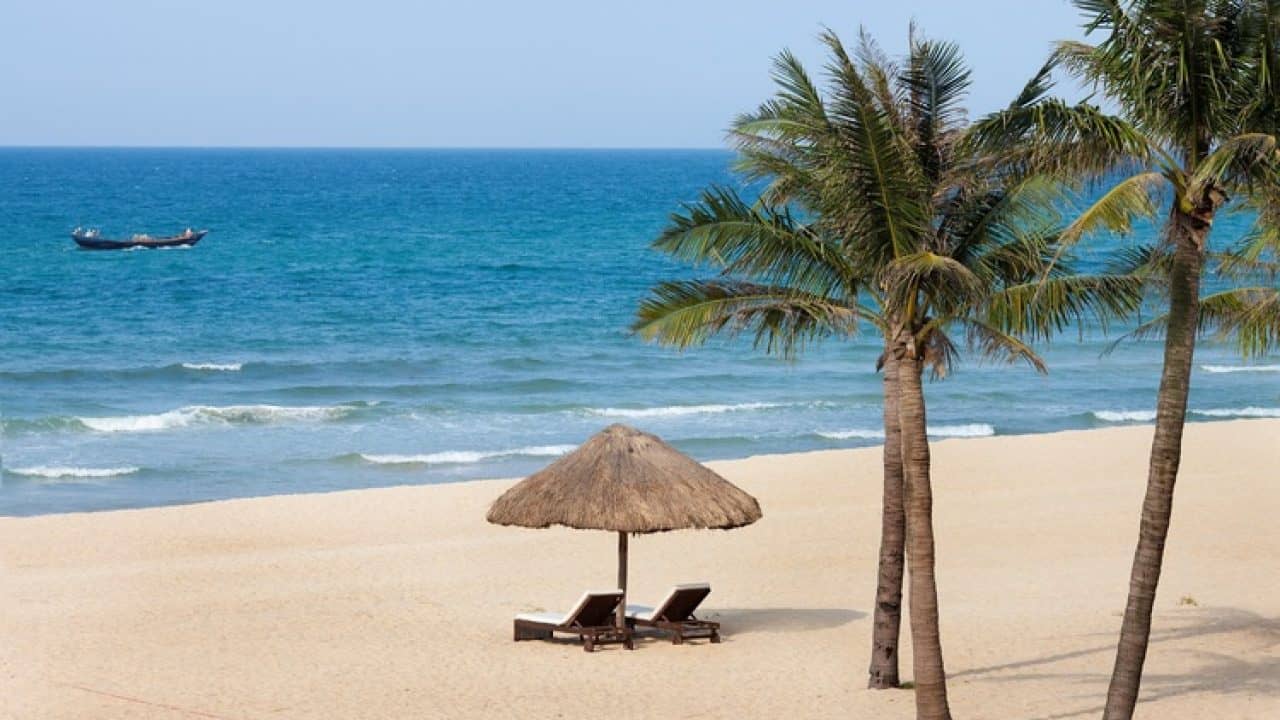
Thuan An Beach was ranked by King Thieu Tri as one of the 10 most beautiful senses in Hue. The beach is about 13km to the east of Hue Imperial Citadel. The coastline is around 12km long with cool and fresh sea water. Although Thuan An beach has all the potentials to become a popular spot for tourism industry, it is fortunately kept unspoiled until now. If you are a person who likes to explore the natural beauty and wish to escape the hustle and bustle of the city center, this would be the perfect place for you. Bring a tent for a beach picnic with you friends or family, but don’t forget to clean your waste before leaving!
10. Admire the Refindness of Hue Royal Theatre
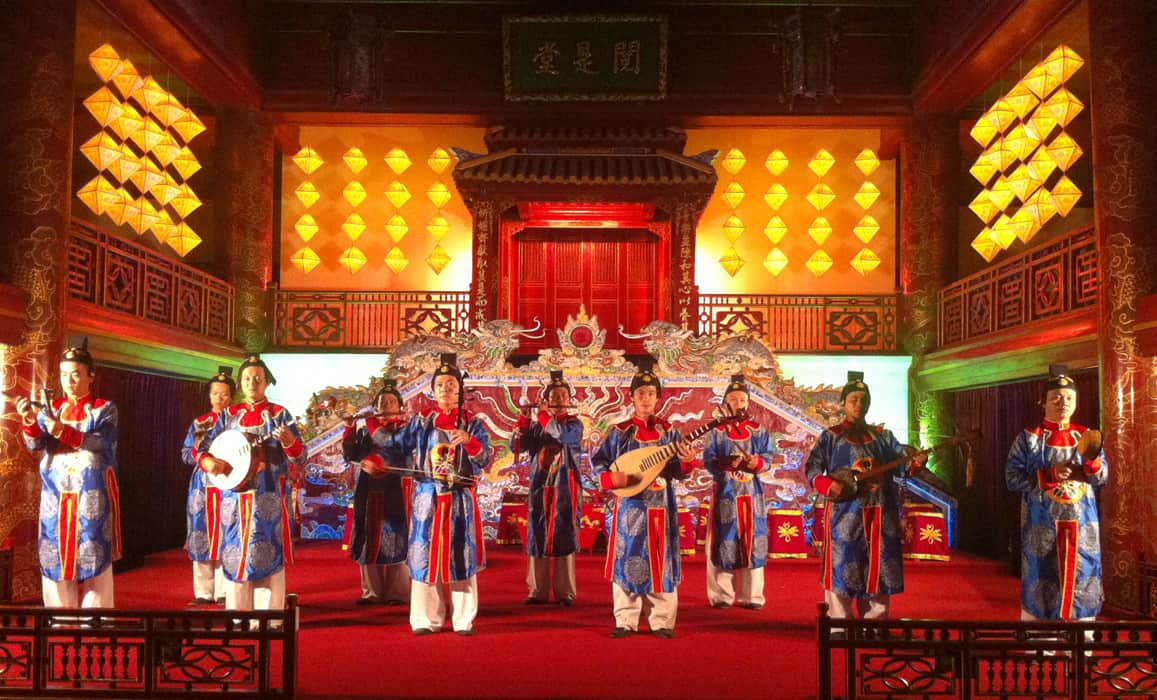
For people who are interested in Vietnamese Arts and Culture, Duyen Thi Duong, or Hue Royal Theatre is one of the places that you cannot miss when visit Hue. This is the oldest theatre in Vietnam, and it was the place that used to serve artistic performance to the Royal families. It was built under King Minh Mang reign, with an impressively large area of 11.740 m², along with unique architecture and patterns. Going through many wars, the Royal Theatre doesn’t remain the same as what it was anymore, but the replica restoration is still a very attractive place to visit.
11. Take a short walk to Hue Conical Hat Making Village
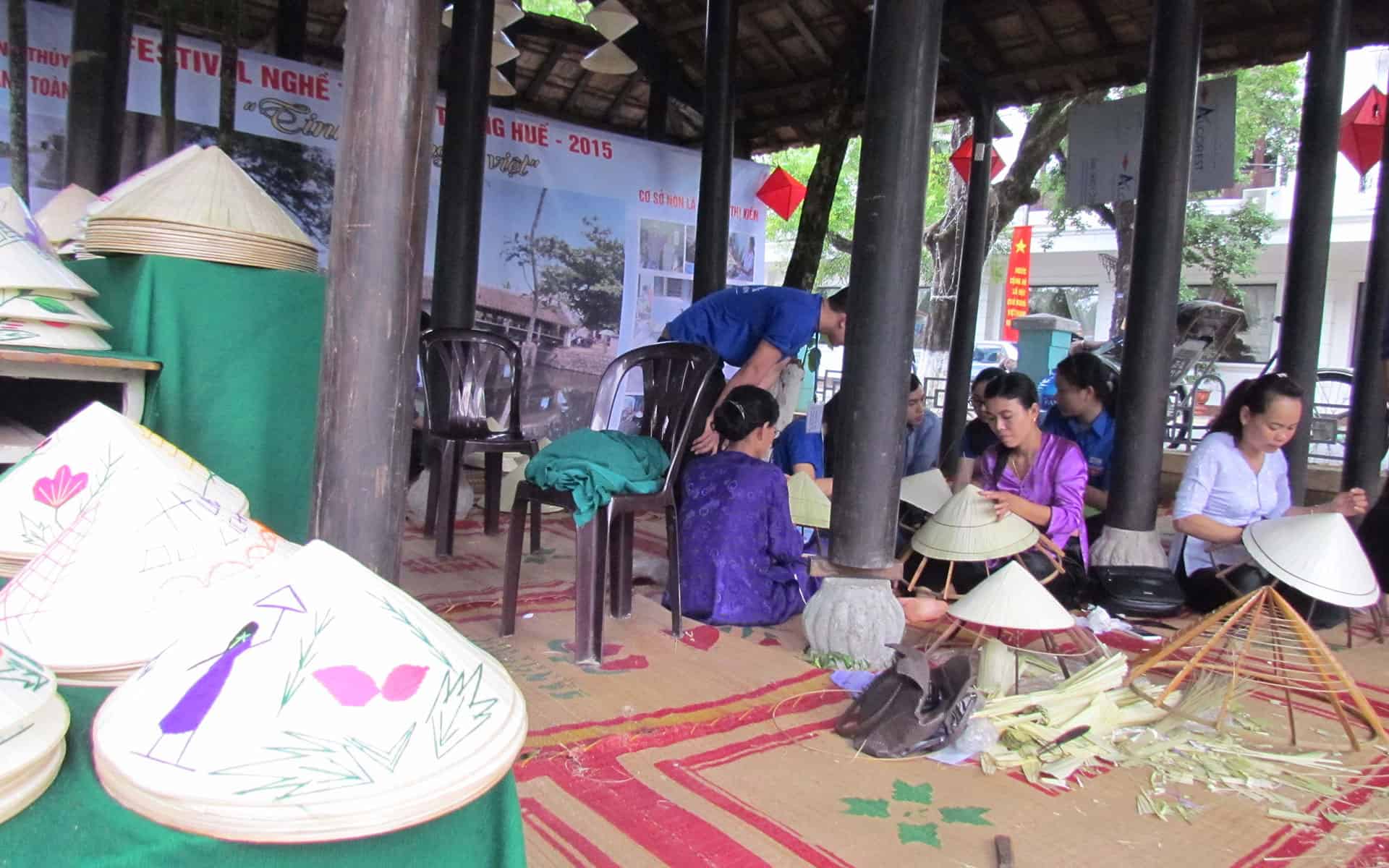
The conical hat is a symbol of Vietnam, especially Vietnamese women since it’s elegant, delicate and also useful under the hot sun in Vietnam. Tay Ho village in Hue is one of the leading conical hat making villages all over the country. Visiting this village, tourists will have a chance to explore the conical hat making process, and can also participate in a class and learn how to make them. It is probably not so easy to make a conical hat, but you will do just fine thanks to the instruction and guidance of the local craftmen, and it’s also a very good way to learn about Vietnamese Culture.
12. Visit Hue Museum of Royal Antiquities
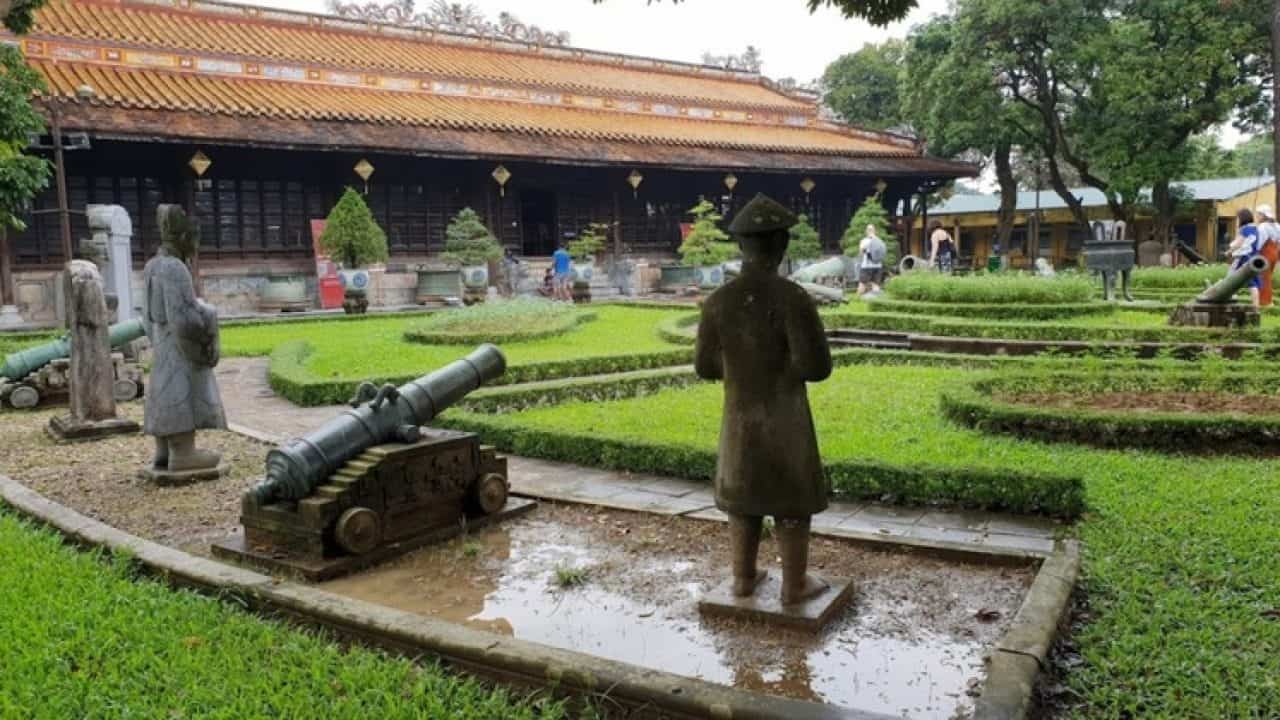
Among many interesting places in Hue, the Royal Fine Arts Museum will surely spark off your trip as one of the earliest and largest museums in Hue. The Royal Fine Arts Museum is situated inside Long An palace which is known as one of the most existing beautiful palaces in Vietnam. It covers an area of up to 6.330 square meters. Since its establishment, it took the responsibility for reviving generations of hundreds of artisans who had contributed to build up the Hue royal court. Now, the museum is under the administration of the Hue Monuments Conservation Center. Tips: Bringing cameras or taking pictures are not allowed in the museum, so you should prepare to remember everything you see in the museum.
13. Join Hue Festival (if lucky)
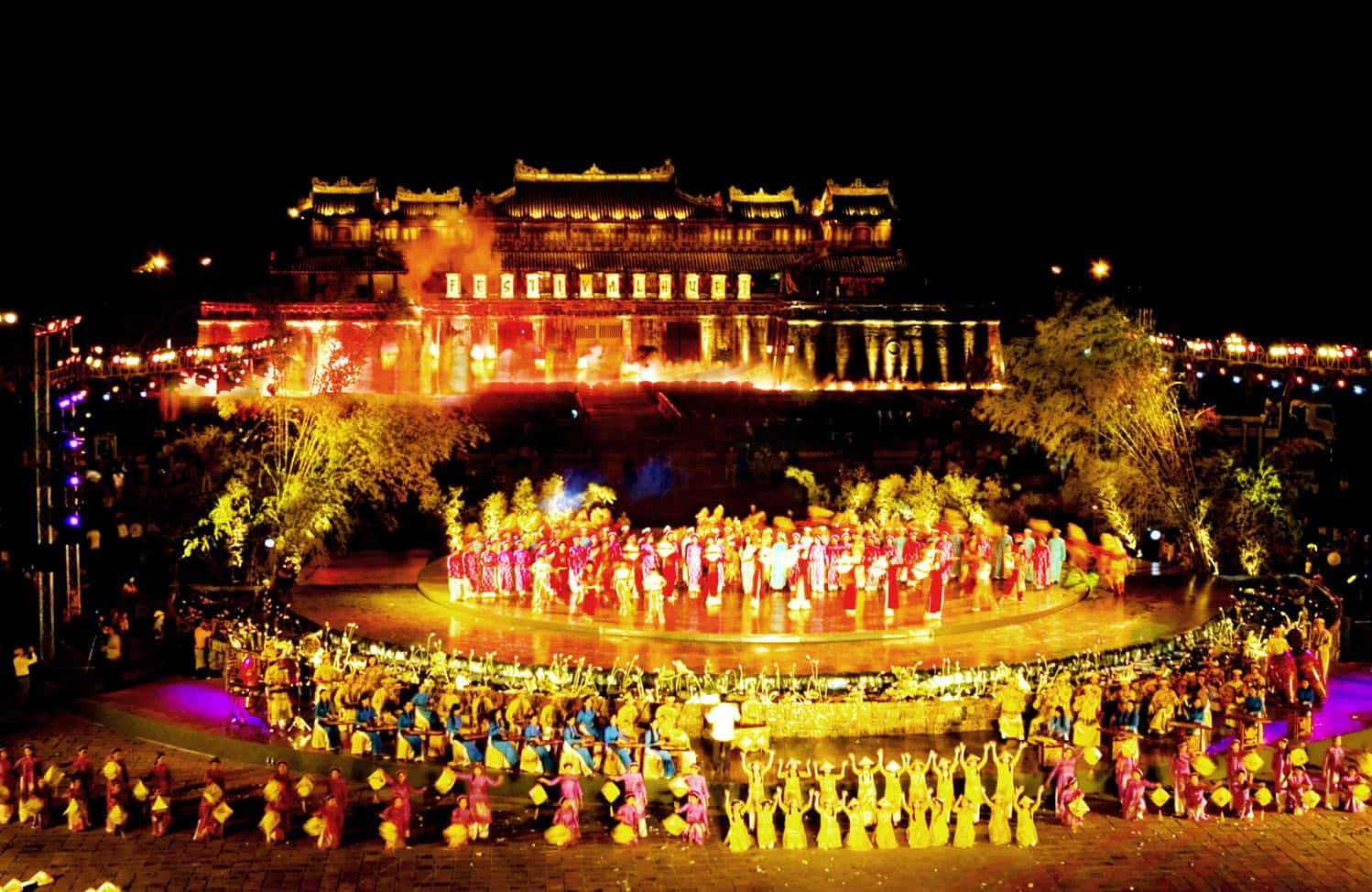
Every two years, Hue Festival will be held in April, May or June to preserve the traditional customs since the Nguyen Dynasty and promote the tourism industry of the city. It takes place at 40 venues around the city. A few events usually helf in Hue Festival are Ao Dai fashion shows, Hue Poetry Festival, Dialogue of Drums…. There are also a wide range of sporty activities for you to enjoy such as boat racing, kite flying or human chess . In addition, there are also exhibitions organized during the festival which shows the history of Hue. Visitors can come here to enjoy the street performances, art and film screenings to learn more about the old Hue’s culture and heritage.
14. Take in the View from Hai Van Pass
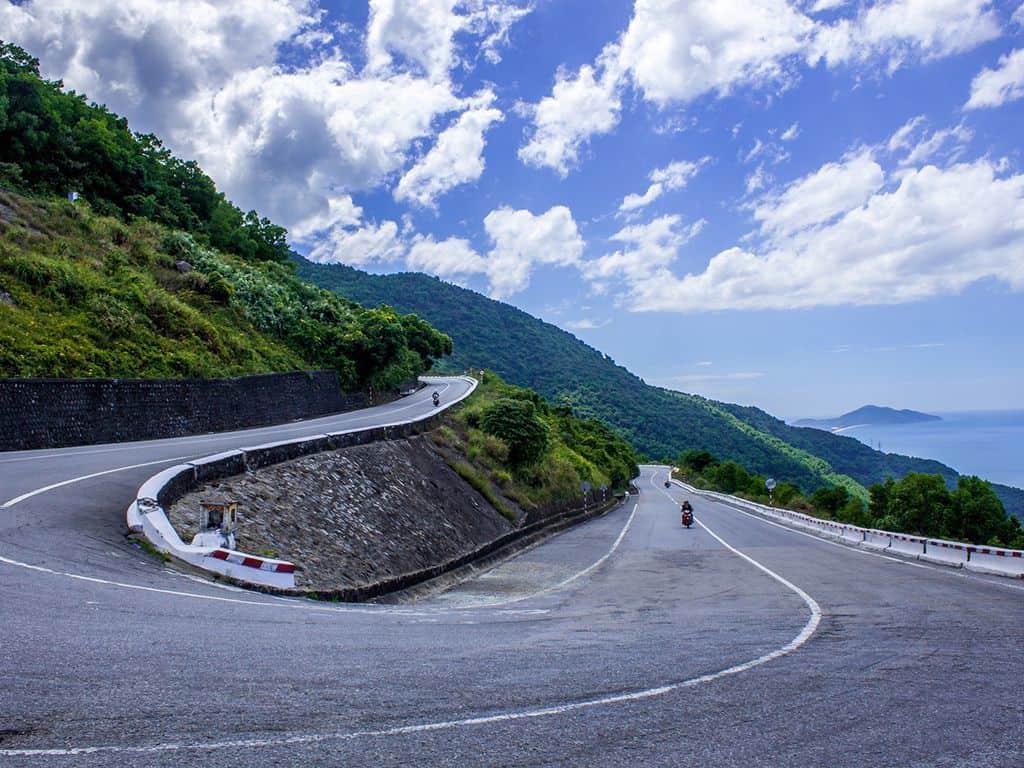
Hai Van Pass is one of the most scenic hillside roads in Vietnam. When braving the steep winding roads of a paved mountain pass, you will have a chance to discover peace, quiet and history along the way. This is the highest pass in Vietnam (500m above sea level). Hai Van means “Sea Clouds”, since the peak of the mountain is in the clouds while its foot is close to the sea. In the past, Hai Van Pass was known as the Thuan Hoa and Quang Nam frontier.
With sudden curves and blind corners, Hai Van Pass is likened to an arrogant but beautiful girl challenging drivers’ skills. On a journey through the land, Hai Van is always an attractive landscape, full of perilous obstacles and is the last spur of the Truong Son Range reaching to the sea.
Hai Van Pass will satisfy your desire to conquer high peaks and remind you of the glorious past of the Viet people. Moreover, from the pass, on nice days, visitors can enjoy the whole vista of Danang, the Tien Sa seaport, Son Tra Peninsula , Cu Lao Cham Island and long sandy beaches .
15. Visit the Bronze Casting Village – Phuong Duc
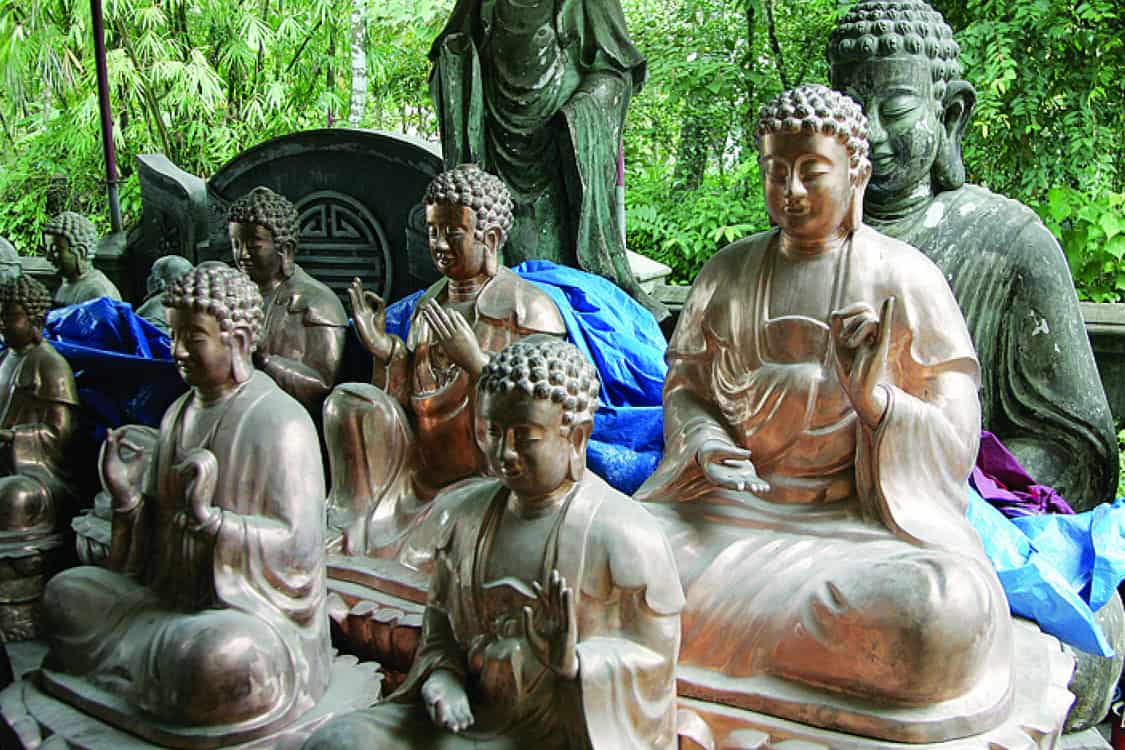
For hundreds of years, the techniques of bronze casting in Hue City have always been acclaimed as the pinnacle of Vietnam’s bronze casting. Therefore, Hue’s bronze products, such as bells, statues and fine art products, appear everywhere in Vietnam, even in some markets abroad.
The prestige of Hue bronze casting has inspired local authorities to develop the Phuong Duc Bronze Casting Village into a tourist site to introduce the tradition to local and foreign visitors and to preserve and honor the craft. Phuong Duc Village on Bui Thi Xuan Street attracts tourists at the beginning of the street with many shops displaying bronze Buddha statues and bells. It is certain that the lines, patterns and decorations of each work, which are so fine and delicate and nice, make visitors think of the dexterity and talent of the local artisans and of just how this work is done. Therefore, after admiring works in galleries along the street, tourists should stop in at a bronze casting factory to know the process and to witness the talents of the artisans.
Among Hue’s bronze products, bells gain the most attention and appreciation by their prestigious beauty and elegance and their resounding, warm and pure sound. Some people say the prestige is due to secret talents of the local artisans, but some reckon it comes from the special character of the soil and water of the region.
“Making a bronze product is an exciting experience, and the fun will be doubled if some tourist loves it and brings it home as a gift for family or a friend. Hue is not only a land of history and royal temples but also for crafts for a long time,” said Nguyen Van Niem, an artisan with 20 years experience in casting bronze.
16. Visit Tiger Arena & Voi Re Temple (Long Chau Temple)
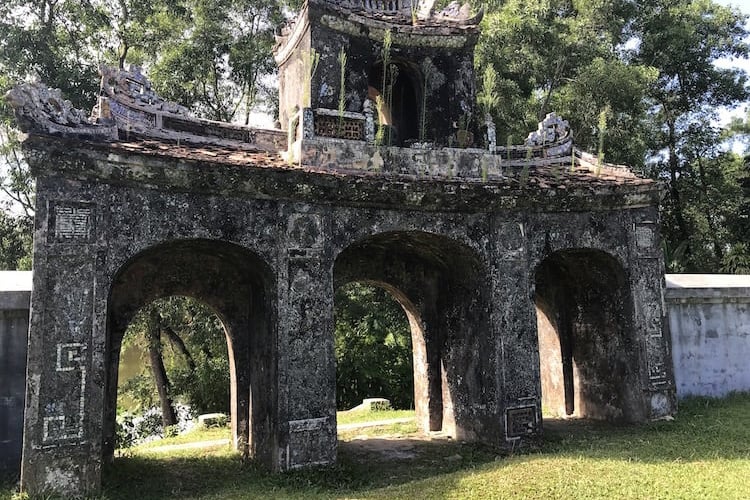
Tiger Arena (Ho Quyen) is one of the most historic few sites still stands today in Vietnam, the fighting place between animals, especially are elephants and tigers, much to the glee of the royalty as well as to assert the unbeatable strength of battle elephants. Attempting to bring back these sites, Vietnam Travel Depot made a trip and be pleased to present to tourists. Ho Quyen and Dien Voi Re symbolized the invincible strength and vitality of the Kings
The construction of the site began in 1830 after the ceremonial fight for King Minh Mang ‘s 40 th birthday on the northern bank of Perfume river, a tiger suddenly broke free and threatened the King by charging toward him. Afterward, the King chose the land near Long Tho Hill to the west of the capital as permanent arena to hold fights and named it Ho Quyen. The stories of area are still kept spreading among the communities but beginning to fade with the passing of time from the day of the last fight was in 1904 during the reign of King Thanh Thai (the 10 th king of Nguyen Dynasty)
Just some steps from Ho Quyen is Temple of the Crying Elephant where the elephants were worshipped, those achieved great feats in battle fields. Locals called the temple “ Dien Voi Re”.
Most Popular

Thien Mu Pagoda in Hue

Perfume River in Hue, Vietnam

Journey through Hai Van Pass – The Highest Pass in Vietnam

Hue Night Market & Walking Street, Vietnam

Spectacular Beauty of Lang Co Bay
More about hue.
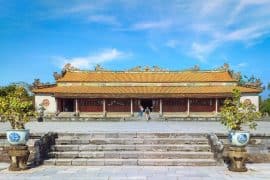
Thai Hoa Palace (Throne Palace) in Hue Citadel
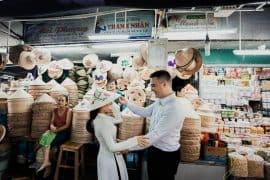
A-Z Guide: Shopping in Hue, Vietnam for First Time Travellers
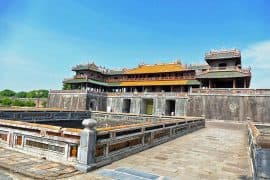
Mieu Thai To Temple Complex, Hue: The Soul Of Nguyen Dynasty
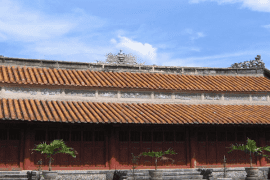
Royal Fine Arts Museum - The Earliest Museum In Hue
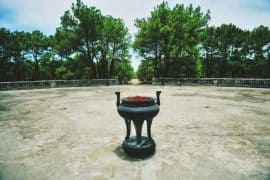
Nam Giao Esplanade - A Long-standing Monument In Hue
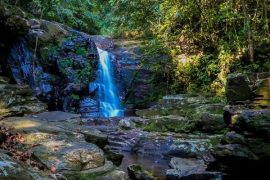
Bach Ma National Park - Centre of flora Diversity in Vietnam
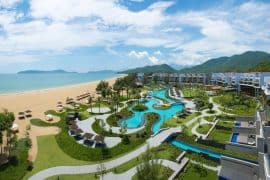
Dong Ba Market - A Romantic Symbol of Hue
Tours may you like.
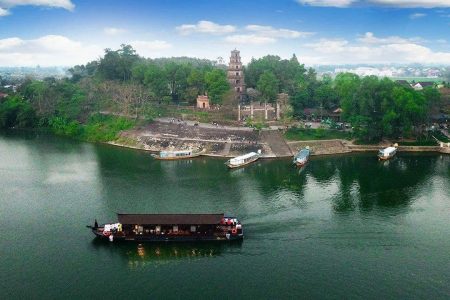
Twilight Over The Perfume River From A Hill Top…
Start from: $55 /person
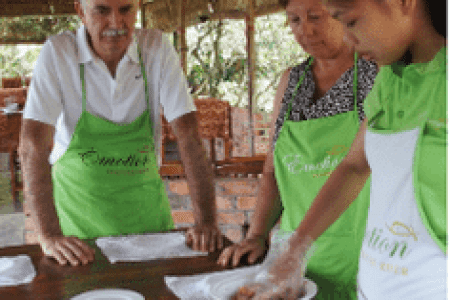
Hue Cooking Class Tour at Thuy Bieu Village
Start from: $69 /person
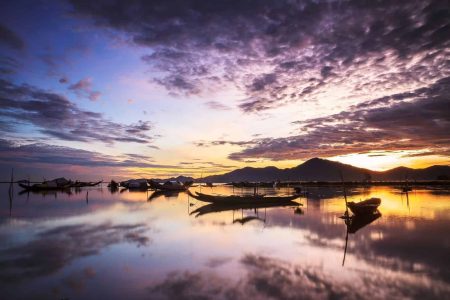
Sunrise on Tam Giang Lagoon Half-day Tour
Start from: $12 /person
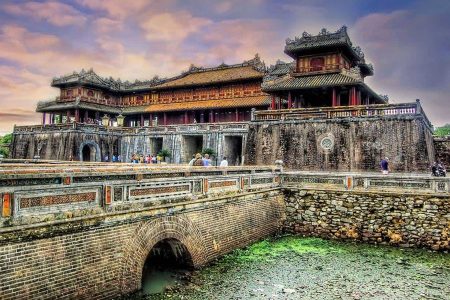
Hue Imperial City from Chan May Port Full Day…
Start from: $105 /person
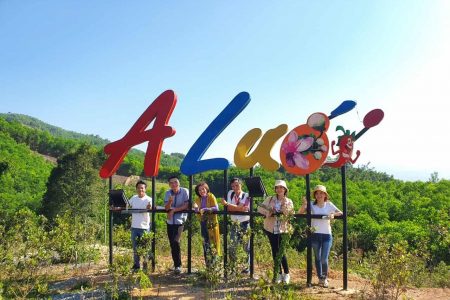
Trekking in A Roang A Luoi Tour 2 Days…
2 days 1 night
Start from: $120 /person
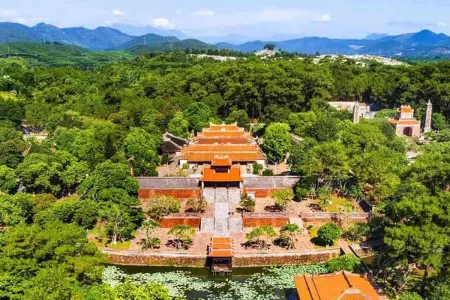
Hue Classic City Tour
Start from: $50 /person
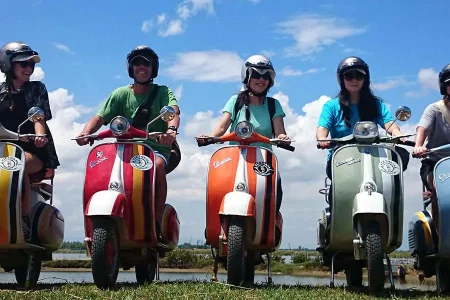
Hue Rural Life Discovery by Vespa
Start from: $76 /person
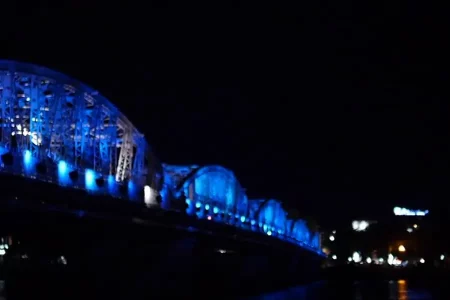
Hue Funny Monkey Tour for Young Travelers
Start from: $80 /person
Destinations
Tours by style.
- Shore Excursions
Travel Guide
- Best Time to Visit
- Getting around
- Transportation
- Best Beaches
- Vietnam Honeymoon
- Travel esim to Vietnam
Our Company
- Responsible travel
- Terms of use
- Privacy Policy
- Recruitment
Connect with us:
- (+84) 989 383 767
- Email: [email protected]
- Hanoi, Vietnam: 23rd Floor, TASCO Building, Pham Hung road, Me Tri, Tu Liem, Hanoi.
- Ho Chi Minh City, Vietnam: 2nd Floor, VIPD Building, No. 4 Nguyen Thi Minh Khai, Da Kao Ward, District 1, HCMC
- Hong Kong: Vietnam discovery Travel Limited Room 1D, 2/F, Fu Tao Building,98 Argyle Street, Mongkok, Kowloon, Hong Kong

Where Do You Want to Go?
- Tell us details of your holiday plan.
- Get multiple quotes from our expert agents, compare, then customize further.
- Select & book the best deal.
A Travel Guide to Hue in Central Vietnam
Your First Look at the Former Imperial Capital of Vietnam
:max_bytes(150000):strip_icc():format(webp)/mike_borobudur-5b6d3ea446e0fb0025fcb683.jpg)
To understand Hue in Central Vietnam, it’s important to note that this town has played a significant role in Vietnamese history for the past several hundred years. History is what makes Hue what it is: a new town on one side of the Huong River (romantically, if inaccurately, called the Perfume River), and a collection of old pagodas, imperial buildings, and tombs on the other.
And the past is how Hue makes its living today, which explains the aggressive cyclo drivers, the numerous tour providers, and throngs of tourists tramping through this laid-back Central Vietnam city.
Hue’s Past and Present
Hue was the former feudal and Imperial capital of Vietnam under the Nguyen Emperors. Before the Nguyens, Hue belonged to the Hindu Cham people, who were later displaced by the Vietnamese people as we know them today.
The book on the Nguyens was closed in Hue, as the last emperor Bao Dai turned over the reins of power to Ho Chi Minh at the Noon Gate of the Purple Forbidden City in August 30, 1945.
This wasn’t the end to Hue’s troubles, as the conflict between the Communist north and the capitalist south (what we now call the Vietnam War ) turned Central Vietnam into contested territory. The Tet Offensive in 1968 spurred North Vietnam’s occupation of Hue, which was countered by South Vietnamese and U.S. forces. In the resulting “Battle of Hue”, the city was destroyed and over five thousand civilians were killed.
Years of reconstruction and rehabilitation have gone some way to restore Hue to its former glory. Hue is presently the capital of the surrounding Binh Tri Thien province, with a population of 180,000.
The southern half of Hue is a quietly bustling community filled with schools, government buildings, and charming old 19th-century houses and a scattering of temples. The northern half is dominated by the Imperial citadel and the Forbidden Purple City (or what’s left of it); around the Dong Ba Market next to the citadel, shopping areas have sprung up.
Visiting the Hue Citadel
As a former Imperial capital, Hue is notable for its many royal structures, which have earned the city international recognition as Vietnam’s first UNESCO World Cultural Heritage site in 1993. (Read about 10 Southeast Asia UNESCO World Heritage Sites .)
Hue's top-ranking royal relic is the Forbidden Purple City , the home of the Nguyen Emperors until 1945. From the early 1800s to Bao Dai’s abdication in 1945, the Forbidden Purple City – enclosed by the high-walled Citadel – was the center of Vietnamese governance and politics. (For an inside look, read our Walking Tour of Hue Citadel, Hue, Vietnam .)
The Citadel is about 520 hectares in size; its high stone walls and the Purple Forbidden City behind them, once hermetically sealed against outsiders, are now open to the public.
There are plenty of wide open spaces in the Citadel’s interior where Imperial buildings used to stand. Most of these were destroyed during the Tet Offensive, but a continuous renovation program promises to restore the Citadel to its former glory.
The treasures of the Nguyen dynasty - or some of them – can be seen at the Museum of Royal Fine Arts , a wooden palace located in the citadel, in the area called Tay Loc Ward.
You'll find exhibits showcasing everyday items from the Forbidden Purple City in its heyday - gongs, sedan chairs, clothing, and utensils. Finely crafted bronze, chinaware, ceremonial weaponry, and court finery show visitors how extraordinary the “ordinary” day of a Nguyen courtier could be.
The building itself dates from 1845, and is notable for its unique architecture: a traditional type called trung thiem diep oc (“sloping successive roofs”) supported by 128 pillars. The walls are inscribed with brushed letters in traditional Vietnamese script.
The Museum of Royal Fine Arts is located in the Citadel at 3 Le Truc Street; operating hours are between 6:30am and 5:30pm, from Tuesday to Sunday.
Hue's Mysterious Royal Tombs
Imperial buildings, in accordance with Chinese-inspired tradition, were designed to conform with feng shui principles. These buildings contained elements that were meant to maximize the structure’s auspicious standing with the universe.
This adherence to ancient principles can most clearly be seen in the Imperial tombs around Hue , all of which bear common elements derived from feng shui. (Read our list of top royal tombs of Hue, Vietnam .)
Of the seven known Imperial tombs around Hue, three are significantly more popular compared to the rest, due to their relative good condition and easy accessibility – these are the tombs of Minh Mang , Tu Duc , and Khai Dinh .
- Minh Mang's Tomb: Built between 1840 and 1843, Minh Mang's tomb is the most "poetic" of the extant tombs in Hue, representing a balance between Tu Duc's grandeur and Khai Dinh's concrete grayness. Read more about Minh Mang's tomb in Hue .
- Tu Duc's Tomb: Built between 1864 and 1867, Tu Duc's tomb was used by its intended decedent even before he passed away: the fourth Nguyen Emperor lived here for the last few years of his life, justifying the construction of pleasure pavilions among 30 acres of pine forests and manicured grounds, complete with a small island on a lake, where the Emperor could hunt tiny animals. Read more about Tu Duc's tomb in Hue .
- Khai Dinh's Tomb: Constructed between 1920 and 1931, this tomb was built on the side of a mountain, requiring some 127 steps to climb from street level to the central sanctum at the top. Rumor has it that the late Emperor designed it this way, out of spite for his officials. Read more about Khai Dinh's tomb in Hue .
Hue's Towering Thien Mu Pagoda
One of Hue’s oldest historical sites - preceding the Citadel and the tombs in age and veneration – is Thien Mu Pagoda , a hilltop temple located about three miles from Hue city center. (Read our article about Thien Mu Pagoda .)
Thien Mu overlooks the northern bank of the Perfume River. It was established by a governor of Hue in 1601 to fulfill a local legend - the pagoda’s name (which translates to “Heavenly Lady”) refers to the ghostly lady in the story.
Thien Mu’s seven-storey tower is one of the pagoda’s newer buildings - it was added in 1844 by the Nguyen Emperor Thieu Tri.
Hue's Garden Houses
Hue’s history as an Imperial power center is closely tied with the histories of the area’s prominent families, most of whom built ornate garden houses in the city.
Despite the departure of the emperors, some of the garden houses remain standing today, maintained by the descendants of the mandarins or nobles who built them. Among these houses are Lac Tinh Vien on 65 Phan Dinh Phung St., Princess Ngoc Son on 29 Nguyen Chi Thanh St., and Y Thao on 3 Thach Han St.
Each garden house has an area of about 2,400 square yards. Like the royal tombs, the garden houses have several aspects in common: a tile-covered gate in front of the house, a lush garden surrounding the house, commonly set off with a small rock garden; and a traditional house.
Getting to Hue by Plane, Bus, or Train
Hue is almost equidistant from both the north and south extremes of Vietnam, being about 400 miles north of Ho Chí Minh City (Saigon) and about 335 miles south of Hanoi. Hue may be approached from either direction by airplane, bus, or train.
Travel to Hue by Plane. Hue's Phu Bai “International” Airport (IATA: HUI) is about eight miles from the Hue city center (about half an hour by taxi), and handles daily flights to and from Saigon and the Noi Bai Hanoi airport . Flights may be disrupted by bad weather.
Taxi fares from the airport to the city center average to about $8. When returning to the airport from the city center, you may ride the Vietnam Airlines minibus, which leaves from the airlines’ offices at 12 Hanoi Street a couple of hours before the scheduled flight.
Travel to Hue by Bus. Hue is connected to Vietnam’s major cities by a well-traveled public bus network, Buses entering Hue from southern destinations like Hoi An and Da Nang terminate at the An Cuu station, which is about two miles southeast from Hue’s city center. Buses from Hanoi and other northern areas terminate at An Hoa station, about three miles northwest of Hue’s center.
The bus route from Hanoi to Hue is a 16-hour journey, undertaken at night. Buses depart Hanoi at 7pm and arrive at Hue at 9am the next morning. Buses plying the southern route between Hoi An or Da Nang take about 6 hours at the most to complete the trip.
The “open tour” bus system is another popular land-based alternative. Open tour bus services allow tourists to stop at any point along the way, but require you to confirm your next trip 24 hours before riding. The open tour system allows great flexibility for tourists who wish to travel at their own pace.
Travel to Hue by Train. The “Reunification Express” stops by Hue, making several journeys a day between Hanoi, Danang, and Ho Chi Minh City. (more info here: Vietnam Railway Corporation - offsite ) The Hue railway station is at the southwest end of Le Loi Road, at 2 Bui Thi Xuan Street about 15 minutes from the city center.
The cushiest ride to Hue has to be the Livitrans first-class sleeper from Hanoi . Livitrans is a private company that operates a separate car attached to certain train lines. Livitrans tickets are 50% more expensive than comparable first-class berths on the regular line, but offer more comfort.
Tourists on the Livitrans car travel the 420-mile Hanoi-Hue route in style - comfortable air-conditioned bunks, clean sheets, electric outlets, and free breath mints (little to no food, though). A one-way Tourist-class ticket from Hanoi to Hue on Livitrans costs $55 (compared to about $33 for the regular soft-sleeper.)
Getting Around Hue
Cyclos, motorbike taxis, and regular taxis are easy to come by in Hue.
Cyclos and motorbike taxis (xe om) can be quite aggressive, and will pester you for business - you either ignore them or give in and pay up. Prices for cyclos/xe om vary, but a reasonable price is about VND 8,000 for every mile on a motorbike taxi - negotiate downwards for longer trips. Pay about VND 5,000 for every ten minutes on a cyclo, or less if you book longer.
Bicycle rentals: Bikes can be rented from most reputable guest houses at the rate of about $2 per day. If you’re more ambitious, you might want to sign up for a bicycle tour through Hue with Tien Bicycles ( Tien Bicycles, official site - offsite ).
Dragon boats: Boat rides down the Perfume River can be arranged for about $10 a boat for a half-day trip. One boat can carry eight people, You might also join a full day trip for about $3 per head, available at most tourist cafes in town. The boat pier is at 5 Le Loi St., next to the floating restaurant.
Hue Hotels - Where to Stay While in Hue
Hue has no shortage of backpacker-budget hotels, comfortable mid-range hotels, and a couple of luxury hotels. Most of the cheaper places are centered around Pham Ngu Lao and adjoining streets, representing the backpacker section of the city. More hotels are also available at the eastern end of Le Loi Street.
Choose one of Hue's luxury hotels if you want to sleep in a little bit of history; at least two of the hotels listed below once served as residences for occupying French officials during the colonial period.
- Compare rates on Hue, Vietnam Hotels via TripAdvisor
Best Times to Visit Hue
Hue is located in a tropical monsoon zone , experiencing the most rainfall in the country. Hue’s rainy season comes between the months of September and January; the heaviest rain falls in the month of November. Visitors get Hue at its best between March and April.
Travel Itinerary: What to Do and See With Eight Days in Vietnam
Thien Mu Pagoda - the Pagoda of the Heavenly Lady
Walking Tour of Tu Duc Royal Tomb, Hue, Vietnam
7 Must-Visit Royal Tombs in Hue, Vietnam
The Top 10 Reasons to Visit Vietnam
How to Travel From Ho Chi Minh City to Hanoi: By Train, Bus, Plane, and Car
A Tour Through Minh Mang Royal Tomb in Hue, Vietnam
Visa Requirements for Vietnam
Independence Palace: Saigon, Vietnam's Historical Jewel
Things to Do in Ho Chi Minh City (Saigon)
War Remnants Museum: a Must-See Vietnam War Memorial in Saigon
Ho Chi Minh City Guide: Planning Your Trip
8 Foods to Try in Ho Chi Minh City, Vietnam
A Tour of "Hanoi Hilton", the Infamous Hoa Lo Prison in Vietnam
Tan Son Nhat Airport Guide
Cu Chi Tunnels - Vietnam War Memorial Near Saigon

13 Top-Rated Attractions & Things to Do in Hue
Written by Diana Bocco Updated Jan 20, 2023
The ancient city of Hue was the country's capital during the mid-1700s and then again for over a century starting in the early 1800s. The bloodiest battle of the Vietnam War was fought in Hue, and the city's ancient monuments, including 19th-century Imperial City complex , were severely damaged. Today, visiting this historic attraction is one of the top things to do in Hue.
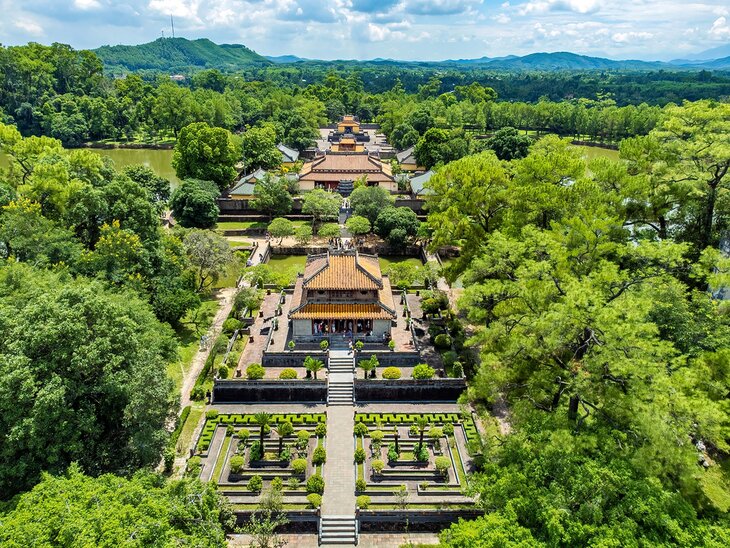
Hue sits on the banks of the Perfume River , so-called because during spring, the local orchards shed their flowers into the river, causing the water to smell like perfume. The river is an essential part of the history and heritage of Hue, but it's also a vital part of modern Hue.
The Trang Tien Bridge is a popular background for nighttime photos when it's completely illuminated, and the waterfront offers plenty of things to do in the form of cafés and restaurants for those out on an afternoon stroll. Most of Hue's main tourist attractions are set against or within minutes of the river.
Hue is home to many sites worth visiting, including emperors' tombs; a number of pagodas, including the famous Thien Mu Pagoda ; and French-colonial buildings set along the river. For more ideas on the best places to visit in this ancient capital, take a look at our list of attractions and things to do in Hue.
1. Imperial City Hue
2. thai hoa palace, 3. thien mu pagoda, 4. royal tomb of emperor khai dinh, 5. dieu de pagoda, 6. hue museum of royal fine arts, 7. hope center, 8. the to mieu shrine, 9. thanh toan bridge, 10. dong ba market, 11. an hien garden house, 12. royal theater, 13. alba thanh tan hot springs, map of attractions & things to do in hue.
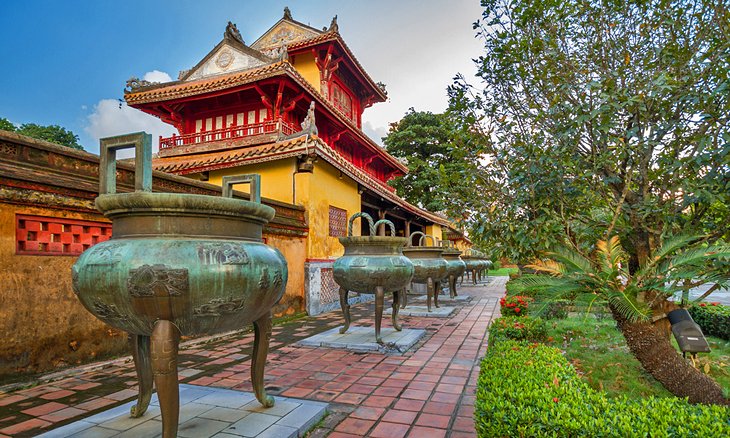
A UNESCO World Heritage site of bright reds and yellows, the Imperial City is Hue's most important attraction and the first stop in your discovery of the city.
A walled area inside the historical citadel of Hue, the Imperial City was on ce the capital of Vietnam . In 1804, Emperor Gia Long consulted geomancers to decide on the most auspicious location for the 10-kilometer-long walled citadel, which was eventually placed southeast to face the Perfume River.
The grounds of the imperial city are surrounded by towering walls and a moat and include temples, gardens, palaces, and residences. However, of the original 160 large buildings that dotted the grounds of the city, only 10 survived Vietnam War bombings.
Many of the buildings that still stand are now empty and can be explored freely by visitors, but some have been restored (or are under restoration), including halls, city gates, and shrines.
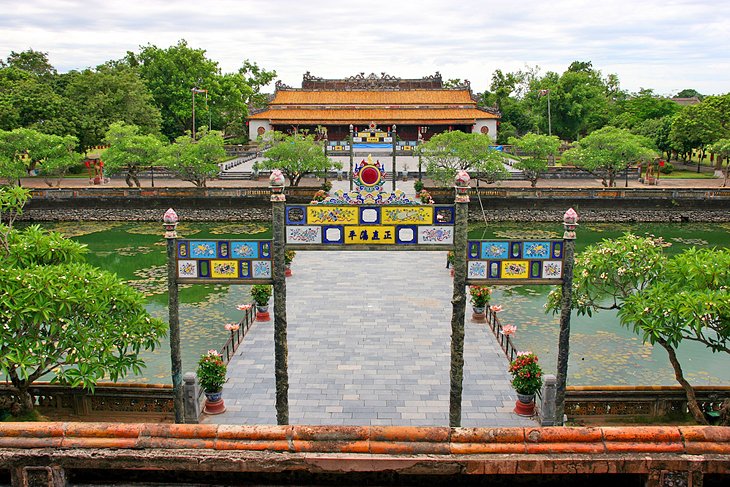
Perhaps the most important construction of the Nguyen dynasty—the last dynasty in Vietnam—the design of this palace is meant to represent a deep yin/yang balance , where both the physical and the spiritual are in perfect harmony.
Although the palace survived the Vietnam War bombings, extensive repairs had to be done to the inside to restore the damage caused during the battle of Hue.
The Thai Hoa Palace sits at the heart of the Hue Citadel , right after crossing the Ngo Mon Gate. A lotus lake and a long courtyard walkway provide an impressive welcome to the palace.
The main room of the palace is a large hall with a timber roof and 80 timber columns. Originally meant for royal ceremonies and events, it was also the crowning place for Emperor Gia Long and the area where he received visitors—both during official business meetings and when the doors were, in rare occasions, open to the public. A covered golden throne sits in the center of the hall.
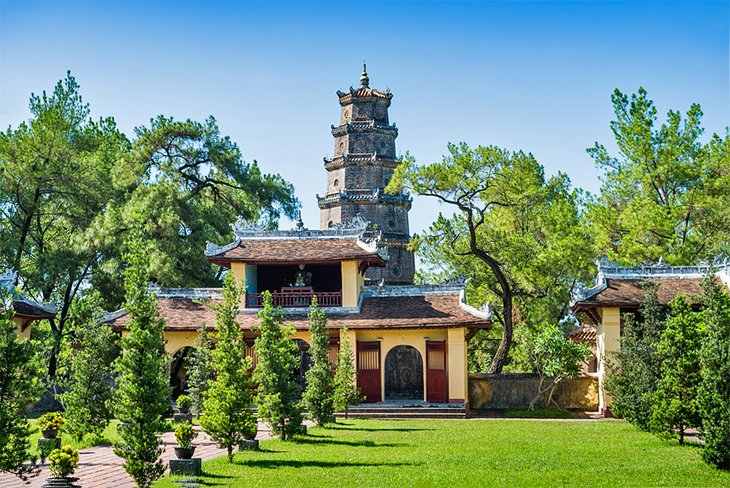
Also known as the Pagoda of the Celestial Lady , this seven-story pagoda is one of the most recognizable symbols of the city of Hue. It was built in 1601 by Lord Nguyen Hoàng, who was told about a local legend.
According to the legend, an old lady dressed in blues, greens, and reds foretold a pagoda would be built in that place and people would come to it to pray for Vietnam's prosperity.
Over the next two centuries, the temple was expanded, and special details and buildings were added, including a massive bell that can be heard 10 kilometers away and a number of additional praying halls, towers for storing sacred texts, and meditation halls.
Beautiful gardens, including a bonsai garden , are set around the buildings—many of them hidden from view at first until you take this path or that path towards another area of the pagoda grounds.
Parked under an open space, you'll also find a car used during the Diem Regime protests. In a fight for religious freedom, Quang Duc, a monk from Hue, drove to Saigon, parked this car and then set himself on fire. The story of his life and self-immolation are told through words and pictures posted on this temple.
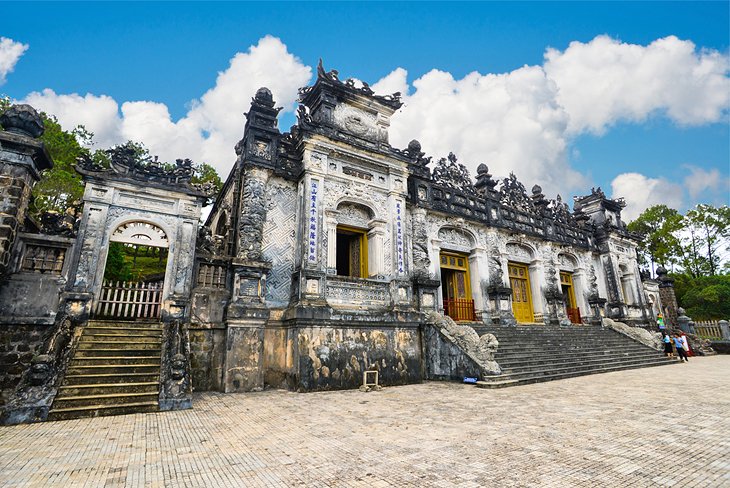
Located just outside Hue, on the steep Chau Chu mountain, the tomb was built for the twelfth Emperor of the Nguyen dynasty , who died in 1925.
Emperor Khai Dinh was actually highly disliked by his people, since he sympathized with French colonizers and ordered many nationalist leaders to be arrested. He's also responsible for forcing a change to a Romanized Vietnamese alphabet in 1918, which resulted in people abandoning the original local language (a mix of Chinese and Sino-Vietnamese); there are almost no people left alive who can read the original old Vietnamese language.
Emperor Khai Dinh's tomb is one of the most imposing tombs ever designed in Vietnam , perhaps because he oversaw the construction himself with funds raised by increasing taxes by 30 percent. The result is an imposing and elaborate construction that mixes Eastern and Western details.
The tomb is flanked by two giant dragon sculptures and features an imperial audience court, 12 statues that serve as bodyguards, a palace room richly decorated with porcelain and glass, and a small temple with an altar where the actual grave is located.
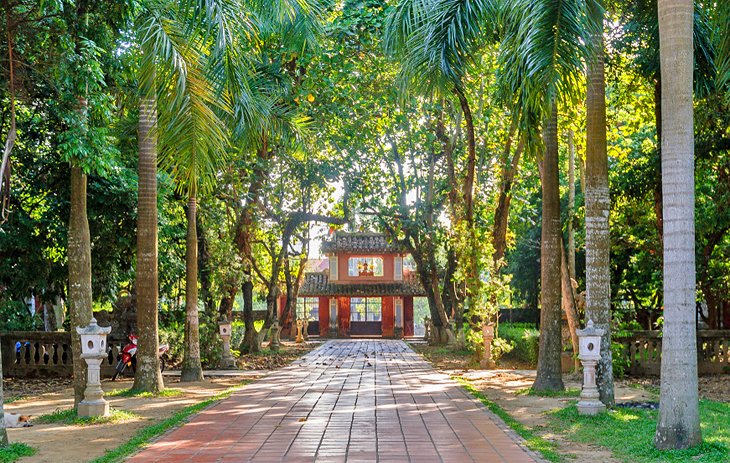
Named after the "Four Noble Truths" of Buddhism, this small golden pagoda in the center of Hue has been the site of activism, protests , and some political violence during the 1960s—the best-known case being in 1963, when civilian Buddhists confronted Diem's army trying to protect the pagoda from being raided. Thirty people died and 200 were wounded in one night.
Today, the pagoda has become a symbol for freedom , and it's visited not only by Buddhists but also activists from all around the world. Sitting right on the Dong Ba canal and surrounded by lush vegetation, the pagoda provides a peaceful escape from the heat and the tourist crowds.
Four towers surround the temple and provide a home for bells, while the main hall houses a Gautama Buddha statue.
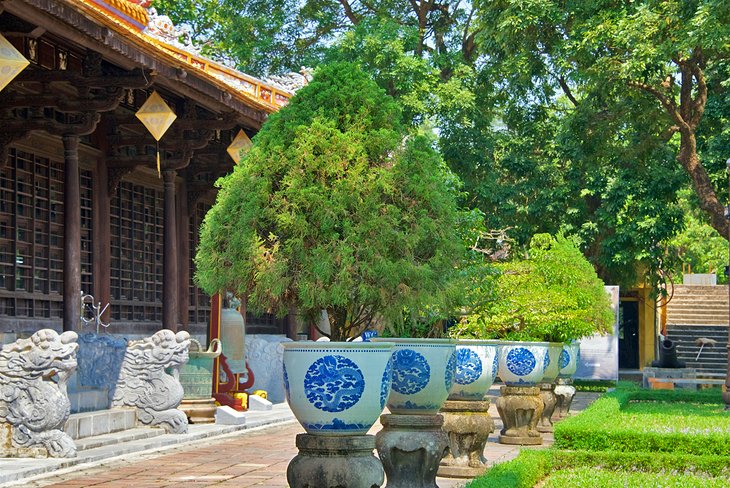
Housed inside the former Long An Palace, this museum offers a fascinating look into the culture and history of the city . The massive collection of over 10,000 objects includes everything from ceramics and silver objects to personal belongings and royal clothing of former Vietnam Emperors, furniture, Phap Lam enameled metal art, and lots of paintings and detailed murals.
All exhibits are labeled in English, and many include background details to help visitors better understand the history behind it and who used it.
While photography inside the museum is not allowed, this one-story wooden palace and the beautiful gardens around it provide plenty of picture-worthy corners waiting to be discovered.
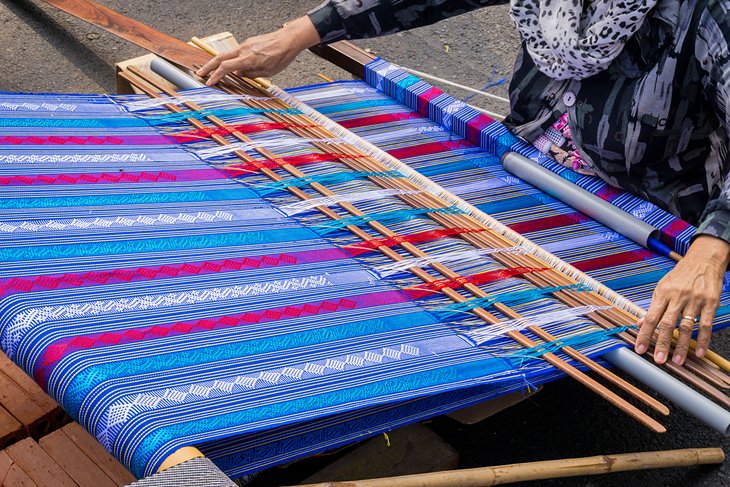
The Hope Center was created to help disabled and disadvantaged people , as well as ethnic minorities in Hue, by offering them a chance to learn to sew. The center produces uniforms for schools and hospitals, as well as a number of handicrafts, including basket making, textile weaving, and handmade jewelry and bowls.
Most textile items are produced using A Luoii fabric, dyed and produced by the Ta Oi ethnic group.
Visitors can see weaving and work being done on-site and buy items to take with them. It's also possible to practice shaping and firing your own pottery or making handmade, recycled products you can then take home.
All classes, tours, and events here are organized and guided by the people who work at the center, so you'll get a chance to interact with them and learn how the place is changing their life.
Official site: http://hopecenterhue.com.vn/index.php
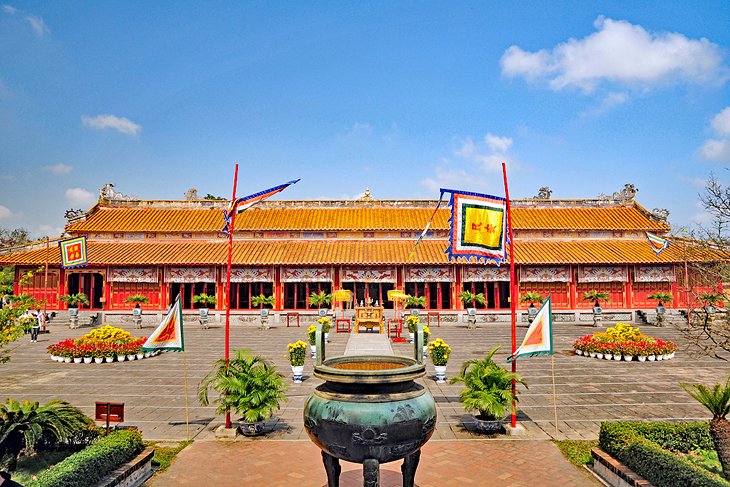
Modeled after the Imperial Ancestral Temple in China's Forbidden City, the To Mieu temple was built to allow ancestor worship of past emperors. Although no actual remains of the emperors themselves are buried here, there are nine urns to represent nine Nguyen emperors.
Each emperor also has his own altar, with photos of himself and the empress (or empresses for those with more than one wife), small offerings, and incense.
A massive stone gate, sweeping grounds, and lots of solitude make this temple a favorite sightseeing destination of those exploring Hue. Only a quarter of the original structures survived the Vietnam War, and very little work has been done to restore the ruins, so the place is a quiet reminder of difficult times while allowing you a chance to admire the grandeur of the temple still there.
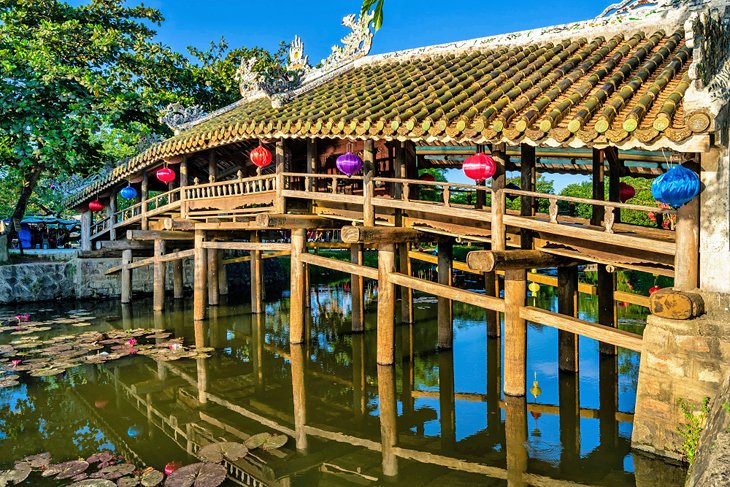
This wooden, 18th-century, tile-roofed footbridge is located around seven kilometers outside Hue. The Japanese-style bridge was built over a small river, allowing locals to cross over from one side to the other without a boat, but also providing an escape from the heat for rural workers who would otherwise spend all day in the sun.
Inside the bridge, a small altar is dedicated to the memory of Tran Thi Dao, the rich widow who originally paid for the construction of the bridge.
Although the bridge itself is interesting, the trip to the sleepy village of Thuy Thanh village, where the bridge is located , is just as special. The ride to the village takes visitors through rice paddies, temples, and lots of examples of what local life is like here.
Once at the village, you can stop by to see the beautiful columns of the city gate or hop on a boat to ride under the bridge and experience the river a different way.
The local Farming Museum , where you can see ancient farming tools used to cultivate rice and how they impacted local life, is another great stop before heading back to Hue.
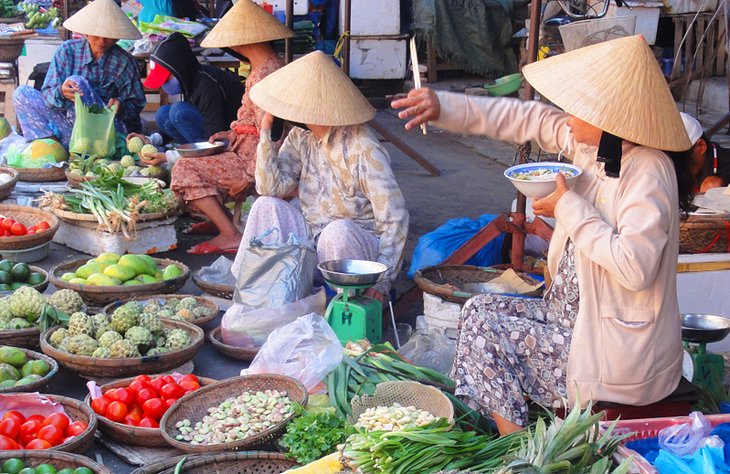
Outdoor markets are a staple of Vietnamese culture, and the Dong Ba market in Hue is no exception. The oldest and largest market in the city , Dong Ba covers 16,000 square meters of chaotic space, where stalls selling fresh vegetables sit next to handicrafts or souvenirs.
The market opens in the very early hours of the morning (3am) to cater to locals shopping for fresh seafood and other foods, but you can arrive during the day or afternoon to pick up mementos to take home.
If you're after clothes or wearable souvenirs, the market does have an entire second floor dedicated to this, where you can find all types of textiles plus many examples of non la bai tho (the typical conical leaf hat worn in Vietnam).
Other great Vietnamese souvenirs you can find here include lacquerware items; bamboo products; and guoc moc, a type of simple clogs made of bamboo or wood.
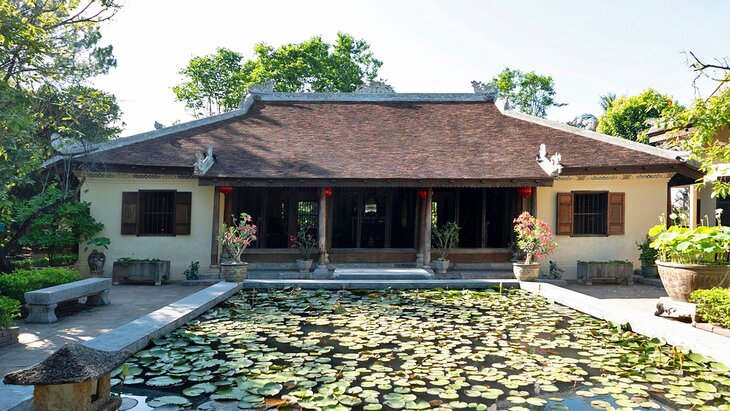
Garden houses are a very unique architectural feature found in Hue. They usually consist of small wooden houses, sometimes on stilts, surrounded by ponds and lush gardens. These houses are particularly common on the banks of the Perfume River, where they get both fresh air and quiet surroundings.
An Hien (House of Peace) is Hue's most famous garden hous e—over the decades, it has been both a private home and the official residence of the governor of Ha Tinh province.
The entire design of the building is based on yin/yang principles: the screen on the main door drives away evil energy, while the water in the pool ensures harmony.
The house can only be reached after crossing a stone gate and walking down a 34-meter-long road surrounded by trees. Inside the 19th-century home, much of the original furniture, timber columns, and ancestor altars remain as they were over 100 years ago.
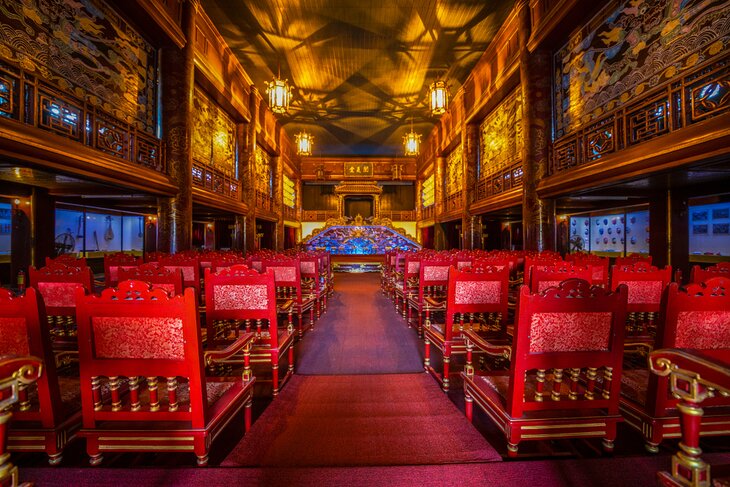
The beautiful red and golden Duyet Thi Duong Royal Theater was built in 1826 exclusively for the royal family to enjoy traditional art performances in an elegant, regal setting. Only the emperor and those close to him ever saw the inside, though banquets and performances were sometimes held for special guests visiting the court.
After much reconstruction, the theater finally opened to the public in 2004.
As the oldest still-operating theater in Vietnam , this is the perfect spot to catch a performance of Nha Nhac-Royal Music. When there are no performances, the theater is open to visitors who want to explore the displays of theater masks and traditional musical instruments. You can even sit on the plush red chairs and get up close to the stage.
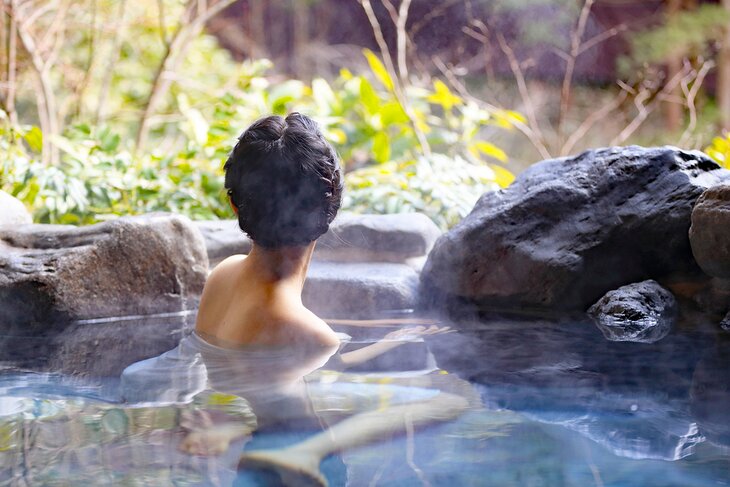
About 30 kilometers outside the city of Hue , these popular hot springs are a great way to relax and unwind. Although technically part of a resort that also includes accommodations and a number of other attractions, it's possible to visit just for the day to try the hot springs. Even better, there's a free resort shuttle bus that goes from the city to the hot springs, making it easier to transfer back and forth.
The springs have a natural temperature of 68 degrees Celsius at the source, but this is controlled through a series of streams and natural pools until they achieve the perfect temperature, so you can soak in all the physical and mental benefits of the mineral-rich waters while relaxing under the whispering of the trees in the breeze.
For those wanting to stay around a little longer, there's also a 560-meter-long zipline through the lush rainforest and an adventure rope course to test your balance. Stick around for a quiet meal overlooking the ponds at the end of the day.
More Related Articles on PlanetWare.com
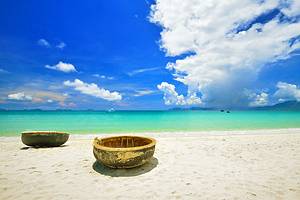
What to See Nearby: Hue is located about two hours north of Da Nang. To the south of Da Nang, just under three hours from Hue is Hoi An , another destination worth seeing. If you are interested in sun and sand, have a read through our list of the best beaches in Vietnam to find one near you.

More on Vietnam
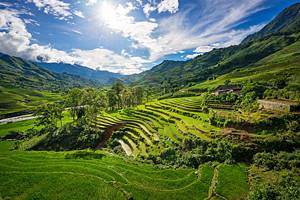

14 Best Things to Do in Hue, Vietnam
Posted on February 22, 2024 | Julie J. |
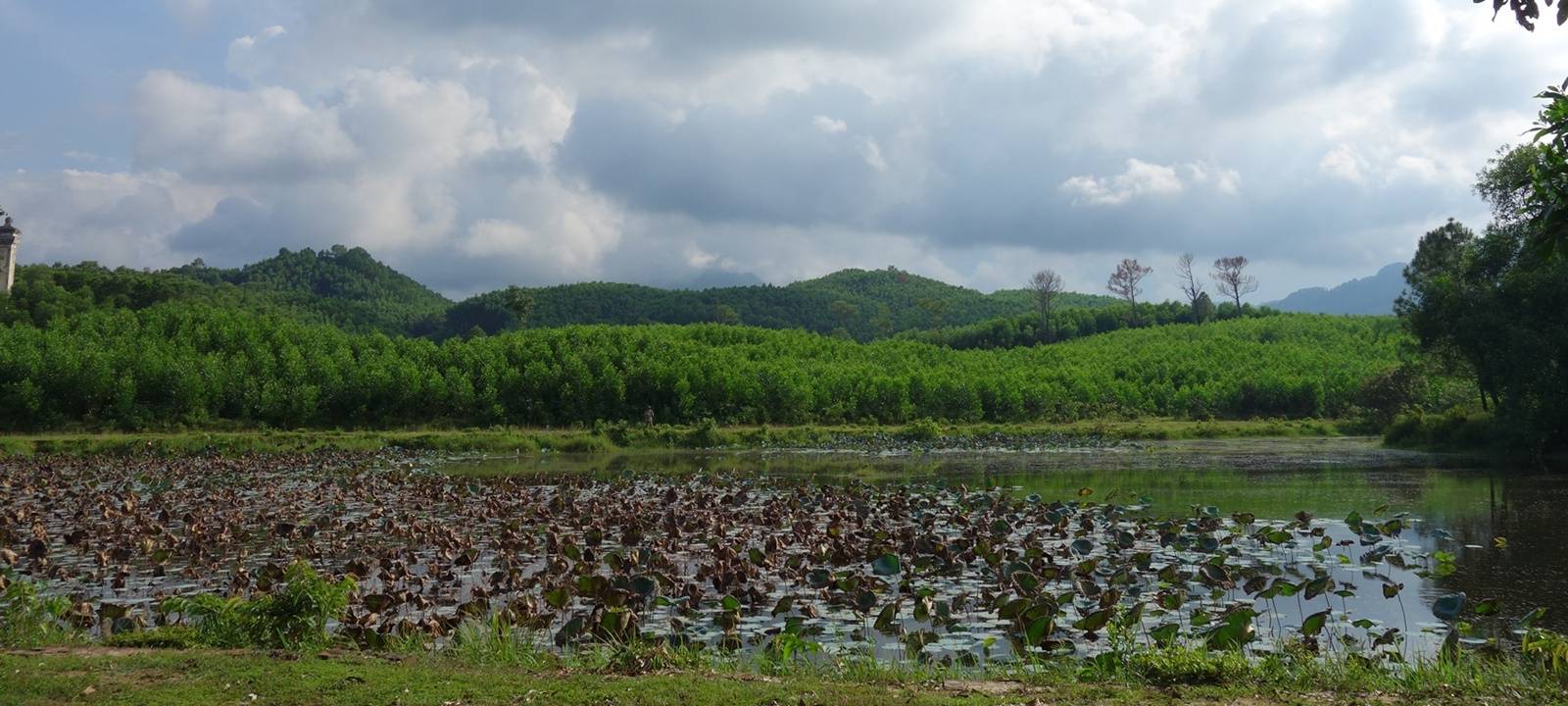
Wondering if Hue is worth visiting? Looking for the best things to do while there and how to plan your trip? After a 6-week trip to Vietnam , exploring the country from South to North, I’m sharing with you my travel guide for Hue, one of my favorite destinations in Vietnam .
Located in central Vietnam, Hue is a city brimming with history, culture, and natural beauty. Whether you’re interested in exploring ancient temples, sampling delicious local cuisine, or simply soaking up the stunning scenery, Hue has something for everyone.
As a former imperial capital, Hue boasts a wealth of historic sites and landmarks, and I just fell in love with the ancient architecture.
The highlight of my time there was my visit to the Hue Imperial City, a sprawling complex of temples, palaces, and gardens that served as the seat of power for the Nguyen Dynasty.
You’ll also want to explore the city’s many pagodas, such as the Thien Mu Pagoda, a towering seven-story structure that dates back to the 17th century.
And don’t miss the chance to visit the tombs of the Ancient Emperors, where you can marvel at the intricate architecture and learn about the fascinating history of the Nguyen Dynasty.
If you’re looking for the absolute best things to do in Hue and are short on time, then I suggest booking this tour that will take you to the imperial city, three tombs, and the Thien Mu Pagoda.
It’s also possible to rent a scooter and visit these places independently. Or, you can do a day trip from Hoi An or Da Nang.
Read below for the practical info on how to plan your trip and for more things to do if you have extra time.
HELPFUL WEBSITES TO HELP YOU PLAN YOUR TRIP
FLIGHT DEALS
HOTEL DEALS
TRAVEL INSURANCE
VACATION RENTALS
Disclaimer: This post contains affiliate links, which means that if you click on any links and make a purchase, we’ll get a small commission, at no cost to you.
Best Places to Visit in Hue
Imperial city and citadel.
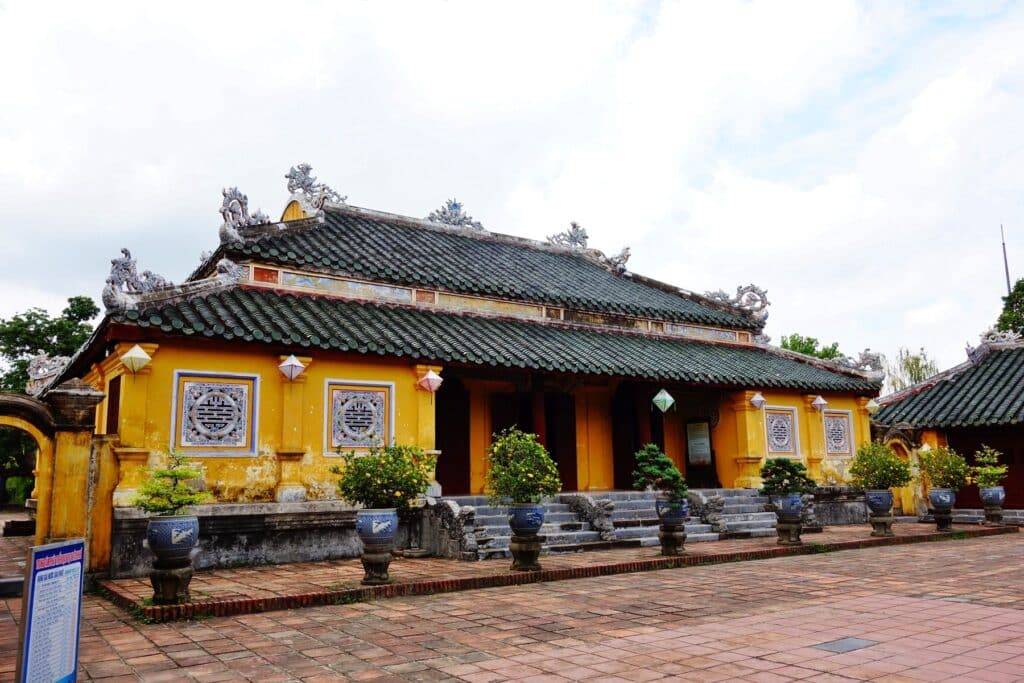
The Imperial City and Citadel are two of the most impressive historical landmarks in Hue City. The Citadel was built in 1804 during the reign of Emperor Gia Long and is surrounded by a moat and thick stone walls.
The Imperial City is located within the Citadel and was the residence of the Nguyen Dynasty emperors. The Thai Hoa Palace is one of the most impressive buildings in the Imperial City, featuring intricate architecture and stunning decorations.
Plan at least 2 hours to visit, half a day is better if you want to cover everything. It’s open every day from 7:30 AM until 5 PM. The entrance fee is 200,000 VND for adults and 40,000 for kids – you can get a combo ticket with more sites included.
There’s no official dress code but try to have your shoulders and knees covered. Also, keep in mind that the sun can be strong and there’s little shade in some places, so bring whatever you need to protect yourself from the sun.
You can also hire a local guide at the entrance or book a group tour if you want some insights into the monuments and history of the city.
Royal Tombs
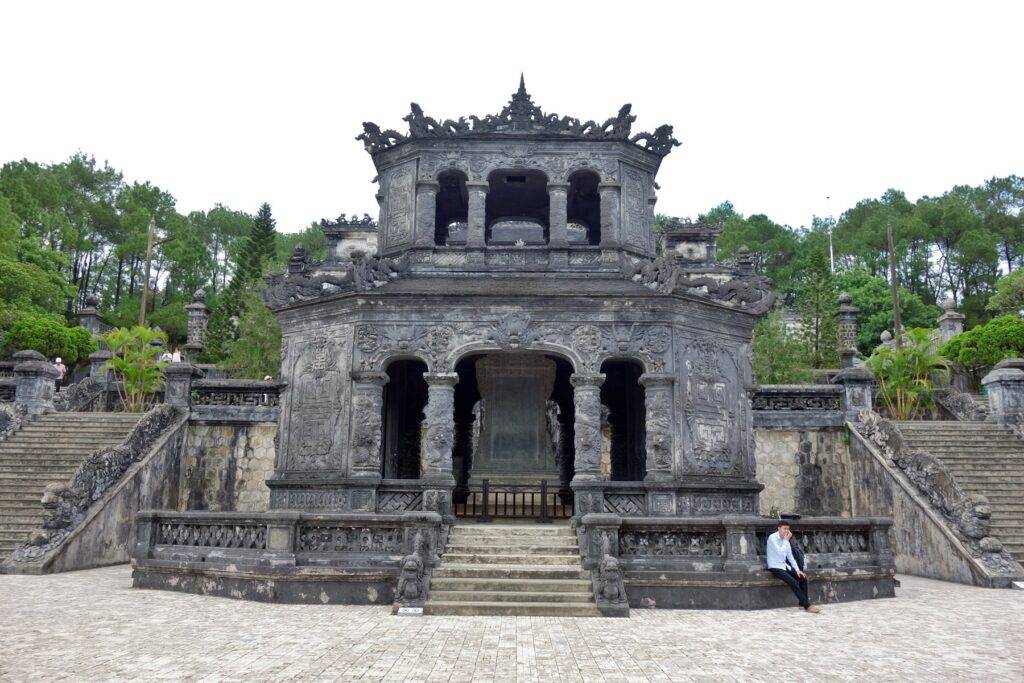
The Royal Tombs are another must-see attraction in Hue City. These tombs were built for the Nguyen Dynasty emperors and are scattered throughout the city, along the banks of the Perfume River. Each tomb is unique and features its own distinct architecture and design.
Two of the most popular tombs are the Minh Mang Tomb and the Tu Duc Tomb. The Minh Mang Tomb is known for its beautiful gardens and intricate architecture, while the Tu Duc Tomb is famous for its peaceful atmosphere and serene surroundings.
Other significant tombs include Emperor Khai Dinh’s tomb, Emperor Gia Long’s tomb, Emperor Dong Khanh’s tomb, and Emperor Thieu Tri’s tomb. Entrance fees vary from 50,000 to 150,000 VND (some can be included in the combo ticket mentioned above).
The tombs are scattered around the city, so you’ll either need to book a tour, hire a cab, or rent a motorbike or bicycle. I don’t think you need to visit all the tombs, maybe do one or two of the main ones and one of the small sites.
If you’re going to book a tour, I recommend this Hue Tombs Tour by Bike and Boat Cruise that will take you to the Thien Mu Pagoda, the Tomb of Minh Mang, and the Tomb of Khai Dinh with an English-speaking guide.
Thien Mu Pagoda
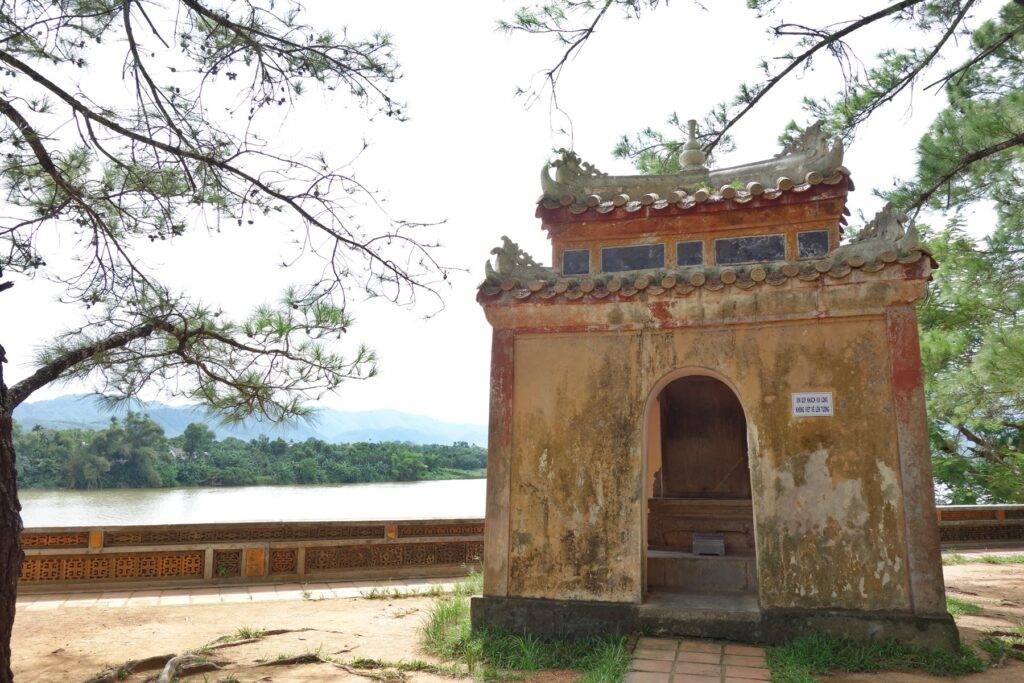
The Thien Mu Pagoda is one of the oldest and most beautiful pagodas in Vietnam. Located on the banks of the Perfume River, the pagoda was built in 1601 and features a stunning seven-story tower. The tower is a symbol of Hue and can be seen from all over the city.
The pagoda is also home to many beautiful statues and shrines, as well as a peaceful garden.
You can visit daily from 8 AM to & PM. Dress modestly. It’s free to visit. If you want to avoid the crowds, try to go around opening time.
Hue Museum of Royal Antiquities
If you’re interested in art and history, the Hue Museum of Royal Antiquities is a must-see. This museum is home to an impressive collection of royal artifacts, including ceramics, textiles, and paintings.
You’ll get a glimpse into the lives of the Nguyen dynasty, who ruled Vietnam from 1802 until 1945, and learn about the different art forms that flourished during their reign.
The museum is open daily from 7 AM to 5:30 PM. Admission tickets cost only 50,000 VND for adults and is free for children,
Duyet Thi Duong Royal Theatre
For a taste of traditional Vietnamese performing arts, head to the Royal Theatre. This historic theatre is located within the walls of the Hue Citadel and was once used exclusively for royal performances.
Today, you can catch a variety of shows here, including traditional music, dance, and theatre performances, similar to the ones performed back in the day. There’s usually a show twice daily, but ask about the schedule when buying your ticket.
Best Things to Do in and Around Hue
Once you’re done visiting Hue’s top attractions, there are still plenty of things to do within the city and day trips to go on to explore the area further!
Shop for handicrafts
Hue is known for its rich tradition of handicrafts, and there are plenty of opportunities to see artisans at work. From traditional embroidery and weaving to woodcarving and pottery, you’ll find a variety of handicrafts on display throughout the city.
One of the best places to see these crafts in action is at the Dong Ba Market , where you can watch artisans at work and pick up some unique souvenirs to take home with you.
At Dong Ba Market , you can also grab a bite to eat. Make sure to try the local specialty dishes like Banh Beo, Beef Noodle Soup, Nem Lui, and Banh Khoai.
Hiking in Bach Ma National Park
Bach Ma National Park is a great place to explore if you’re looking for an adventure. You can hike through the lush greenery and see some of the most stunning views in Vietnam. The park is home to a variety of flora and fauna, including over 1,400 species of plants and 130 species of animals.
There are several trails to choose from, one of the most popular is the Five Lakes Trail , featuring stunning waterfalls and swimming holes. You can combine it with the Rhododendrum Trail to see one of the highest waterfalls in Southeast Asia, Do Quyen Waterfall.
The trails are well-marked and you can easily go on your own.
The park is a 1.5-hour drive from Hue. The entrance fee is 60,000 VND and you can pay it at the Bach Ma Visitor Centre. Note that only cars are allowed past the visitor center.
If you want to make things easier, you can book a day trip from Hue including transportation, the entrance fee, a guide, and lunch.
Cruising the Perfume River
A boat ride along the Perfume River is a must-do activity when in Hue. You can take a leisurely cruise and see the city from a different perspective. Most cruises will stop at some of the famous landmarks along the river, such as the Thien Mu Pagoda and the tombs.
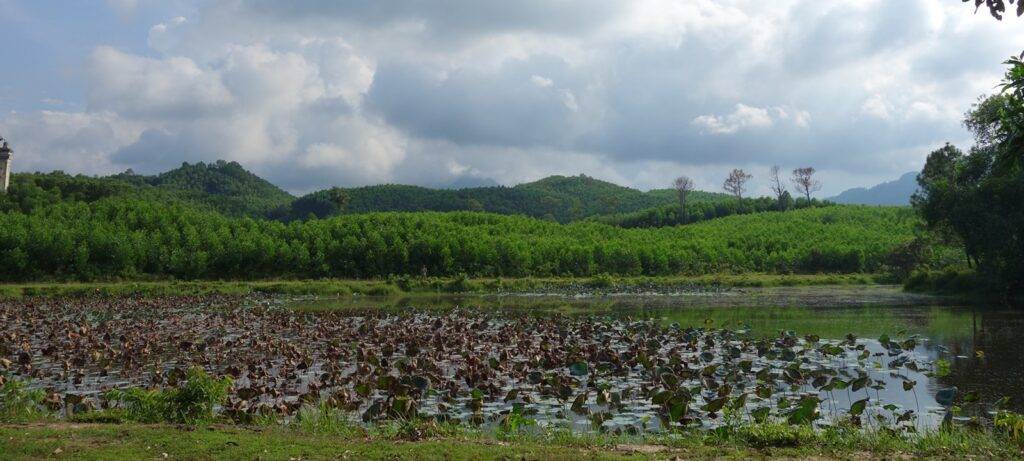
Driving the Hai Van Pass
If you’re up for a scenic drive, take a journey along the Hai Van Pass. The pass offers breathtaking views of the coastline and the surrounding mountains. You can rent a car or hire a motorcycle to make the journey. Along the way, you can stop at some of the beaches and rice paddies to take in the scenery.
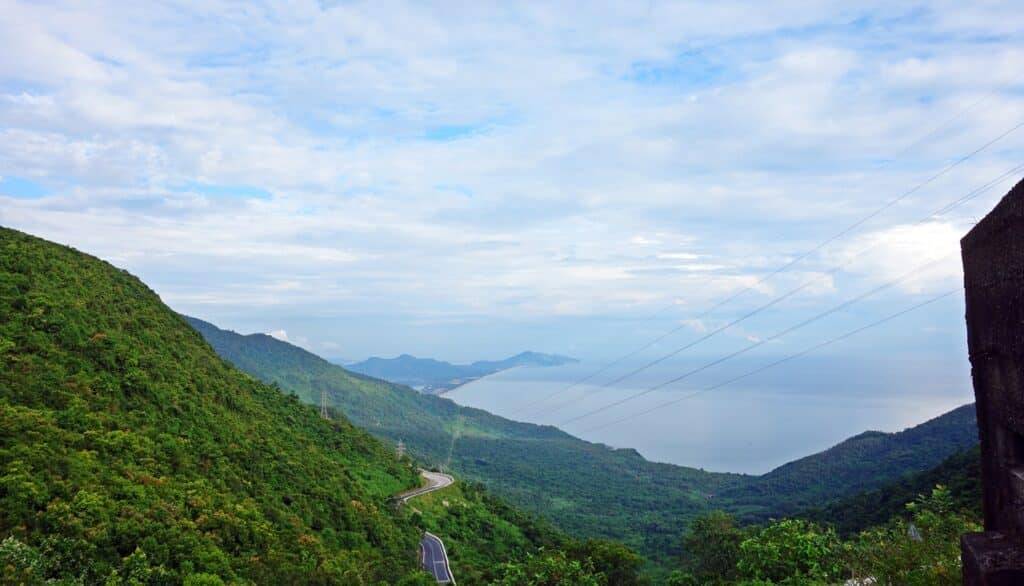
Go on a Street Food Tour
One of the best ways to experience Hue’s local cuisine is by taking a street food tour. You’ll have the opportunity to try a variety of dishes and learn about the history and culture behind them.
Join a small-group walking tour, like this one , and sample che, banh beo, bun bo hue, and banh khoai at some of the best food stalls in town.
See the Thanh Toan Bridge
Located about 8 miles outside of Hue, Thanh Toan Bridge is a historic covered bridge that dates back to the 18th century. The bridge is surrounded by rice paddies and is a great spot for a stroll. You can also visit the nearby agricultural museum to learn more about the region’s farming practices.
Attend the Hue Festival
Hue Festival is the biggest cultural event in Hue, Vietnam. It is held every two years in the month of April. The festival showcases the rich cultural heritage of Hue with a variety of events including art exhibitions, traditional music and dance performances, street parades, and food fairs. The festival attracts a large number of tourists from all over the world.
One of the highlights of the festival is the opening ceremony, which takes place at the Ngo Mon Gate. The ceremony features a traditional dragon dance and a performance by the Hue Royal Court Music.
Another popular event is the Ao Dai fashion show, which showcases the traditional Vietnamese dress.
Explore Ho Thuy Tien
This abandoned waterpark is a must-see while in Hue. Located a few miles south of Hue, this waterpark was destined to be the place to be but has been left to its demise only a few years after its opening.
Featuring broken rides, murky pools, and plenty of vines and graffitis, the park is surrounded by a lush jungle and is popular among backpackers looking for some thrills. It’s a fun place to explore if you’re planning on renting a bike and exploring the surroundings.
Hue Travel Tips
Where to stay.
When visiting Hue, Vietnam, you have a range of accommodation options to choose from. From budget hostels to luxury hotels, the city has something for everyone.
If you’re looking for a comfortable and affordable stay, you can check out some of the budget-friendly hostels and guesthouses located in the city center, like the Hung Long Hostel and the Truong Phu House .
Alternatively, if you’re looking for a more luxurious stay, you can opt for some of the high-end hotels in the city or a resort towards the coast. The Ancient Hue Garden Houses and the Pilgrimage Village Hue are both great options.
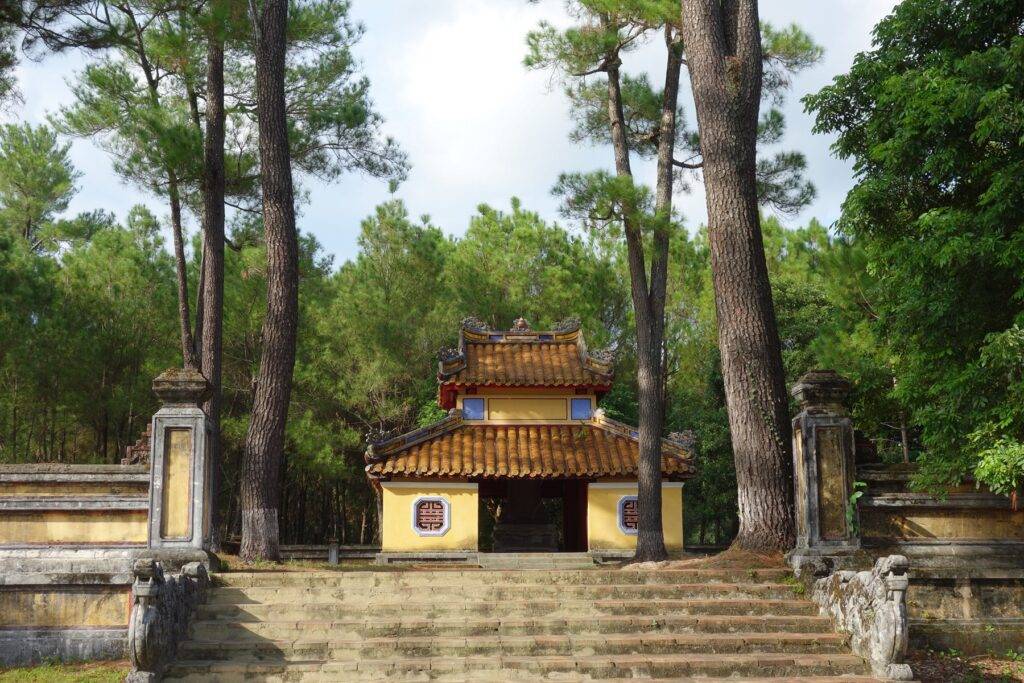
Getting Around
Getting around Hue is relatively easy, thanks to its well-connected transportation system. You can use a bicycle or a cyclo to explore the city’s streets and alleys. Alternatively, you can use a taxi or a motorbike taxi to get around the city.
If you’re arriving by air, you can take a taxi or a shuttle bus from Phu Bai Airport to the city center.
Best Time to Visit
The best time to visit Hue is between March and August when the weather is dry and sunny. This is also the peak tourist season, so expect higher prices and larger crowds.
If you’re looking for a quieter and more affordable visit, you can consider visiting between September and February. During this time, the weather is cooler and there are fewer tourists around.
How to get to Hue
Getting to Hue is relatively easy. There’s a small airport with flights from Ho Chin Minh, Hanoi, and Dalat.
There are also many sleeper buses and regular ones connecting you to most destinations in the country.
Otherwise, you can get to Hue by train, which can be a good option if you’re not coming from too far.
Best Restaurants/Where to Eat
For some of the best banh hue (steamed rice flour and shrimp cake) in town, head to Original Hang Me , a simple eatery popular among locals.
Madam Thu Restaurant and Maison Trang are two of the best-rated restaurants in Hue, serving traditional local and Vietnamese dishes in a nice setting.
Like Hanoi’s famed egg coffee, Hue is known for its salt coffee. Traditional Vietnamese coffee is filtered into a mixture of salt whipped with fermented milk and cocoa powder. Head to Ca Phe Muoi , where it was created, for some of the best in town.
Save it on Pinterest for later:
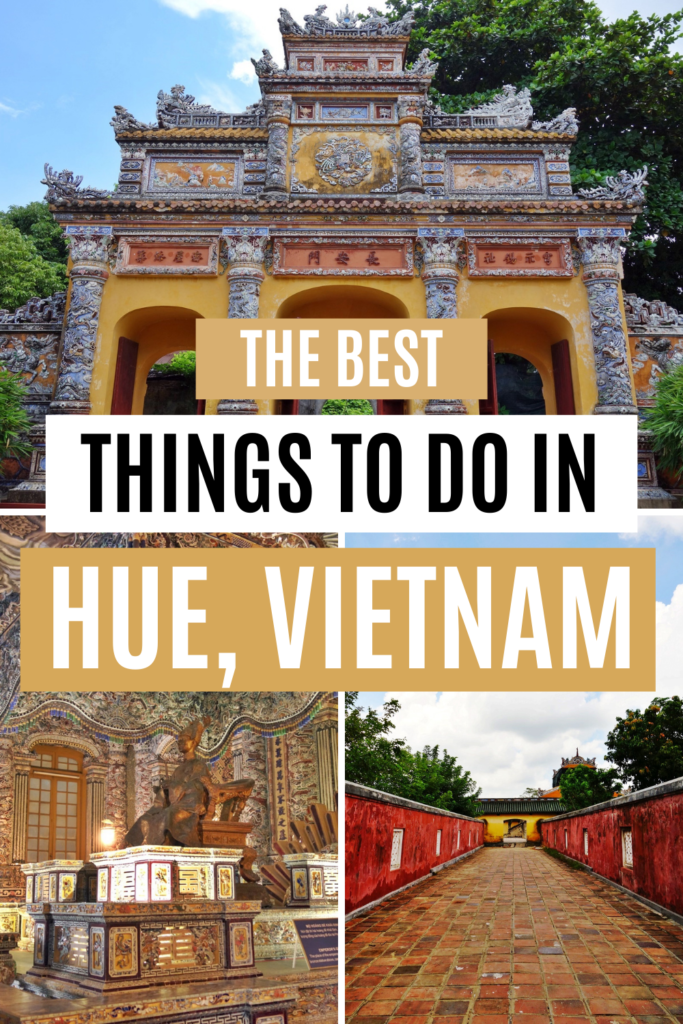
Related posts:

Hue best things to do & travel guide
The ancient city of Hue was the capital of Vietnam during the Nguyen dynasty at the beginning of the 19th century and during the Vietnam-US war some of the most intense conflicts took place in this region. One of the main tourist attractions of Hue is the Royal Palace of the imperial city. There are also a number of places of interest left over from the Vietnam War, such as a military base and tunnels in the DMZ.
5 reasons to visit Hue
- Explore the ancient buildings and ruins of the Imperial City
- Sail the Parfum River by boat
- Learn more about the Vietnam War in the DMZ
- Cycle around the city
- Take a day trip to Bach Ma National Park
What is in this Hue travel guide
Practical information, best time to visit.
- 10 best things to do
- Best hotels & hostels
Food & drinking
How to get there, how to get around, book your local hue experience, recommended days to stay.
Most of the temples and city you can see within one day. You can choose to stay another day or two if you want to make a day trip to the DMZ or Bach Ma National Park.
ATM's & money exchange
Hue is a big city, there are plenty of ATMs to be found.
Local events and holidays
- Hue Festival : This art festival is held in even years with local and international artists at historic buildings, street parades, sampan races and markets.
- The best travel time : From January to April, with 20 to 25 degrees and almost no rain.
- Dry season : The complete season that there is little or no rainfall is from March to August.
10 best things to do in Hue
The city is a beautiful mix of old and new buildings that are mainly separated by the Parfume River. Hue was the imperial capital of Vietnam between 1802 and 1945. Although many beautiful buildings have been lost as a result of the wars, Hue is busy restoring various highlights in the city.
1. Hue Imperial Citadel
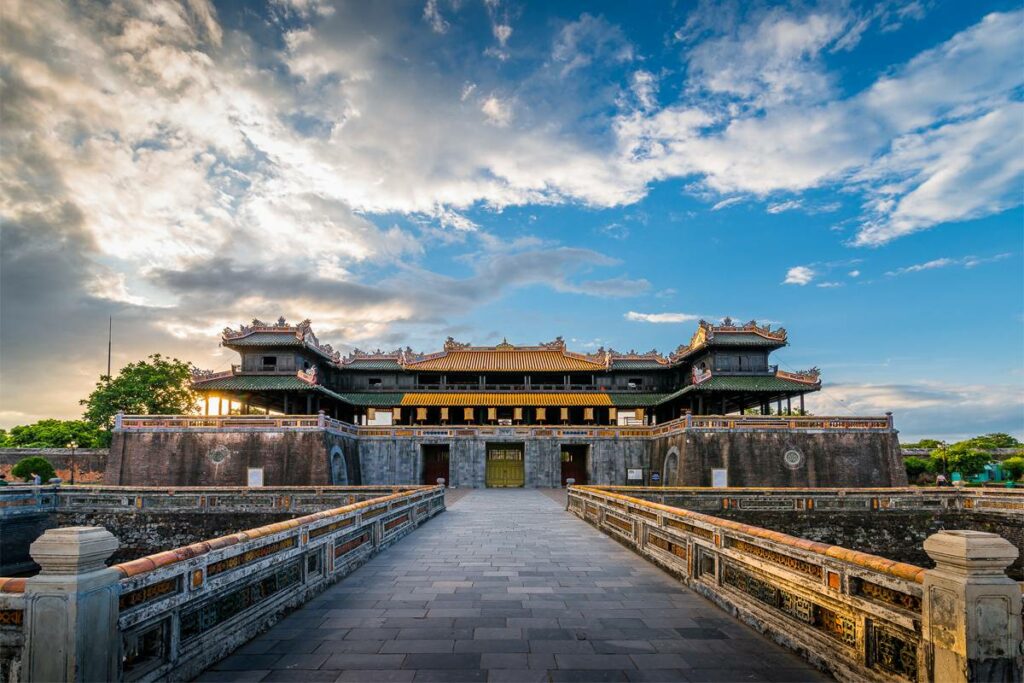
Without a doubt, the most impressive and best thing to do in Hue is a visit to the Imperial City. In the walled Hue Imperial City, also known as the Citadel, you will find the Forbidden Purple City, dozens of royal tombs, pagodas, temples, royal rooms, a library and a museum.
You can easily walk around here for 3 hours to visit everything. A guide is not necessary but recommended if you want to learn more about the history and the times when there was fierce fighting here during the Vietnam War.
2. Lang Co beach

One of the best beaches in Vietnam can be found close to the city of Hue. The beach is 10 kilometers long with palm trees, clear water and a number of good resorts. It is still a 60 km drive from the center. You can also choose to stay here for a night, a day trip or a stop on the way between Hue and Da Nang just before the Hai Van Pass.
3. Tombs and temples
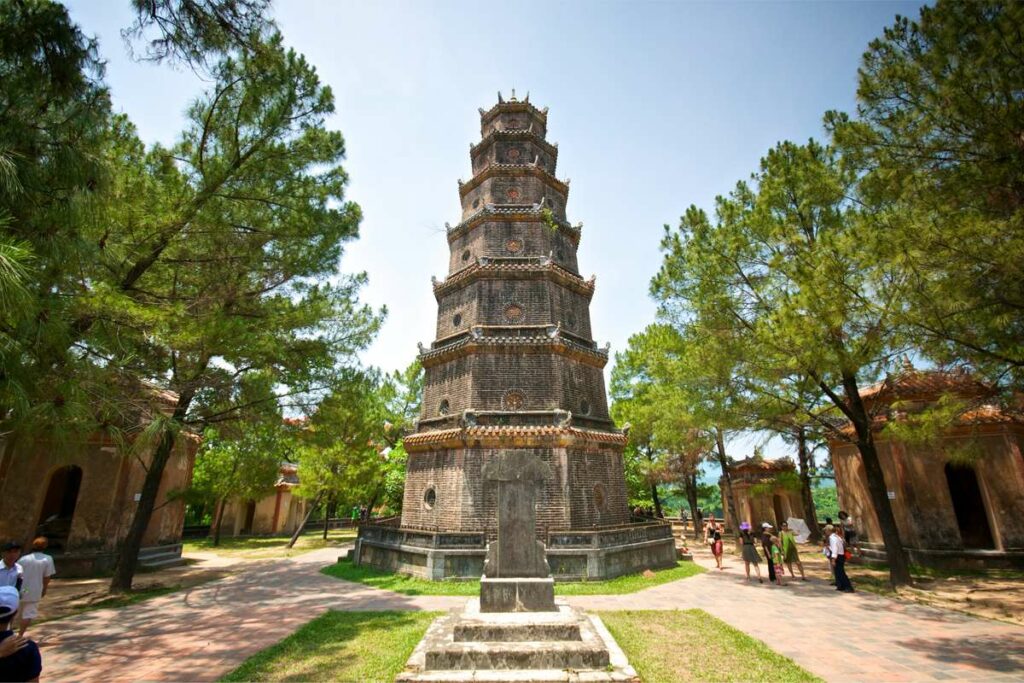
Besides the Imperial City, you can find many other tombs, temples and pagodas in and around the city of Hue. The tombs of the emperors of the Nguyen Dynasty are scattered on hills south of the city and can be reached by boat or bicycle. In total there are seven tombs: the other emperors died in exile and were buried.
The best known and most impressive are the Minh Mang Tomb, Tu Duc Tomb, Hon Chen Temple and The To Mieu Temple.
4. Hai Van Pass
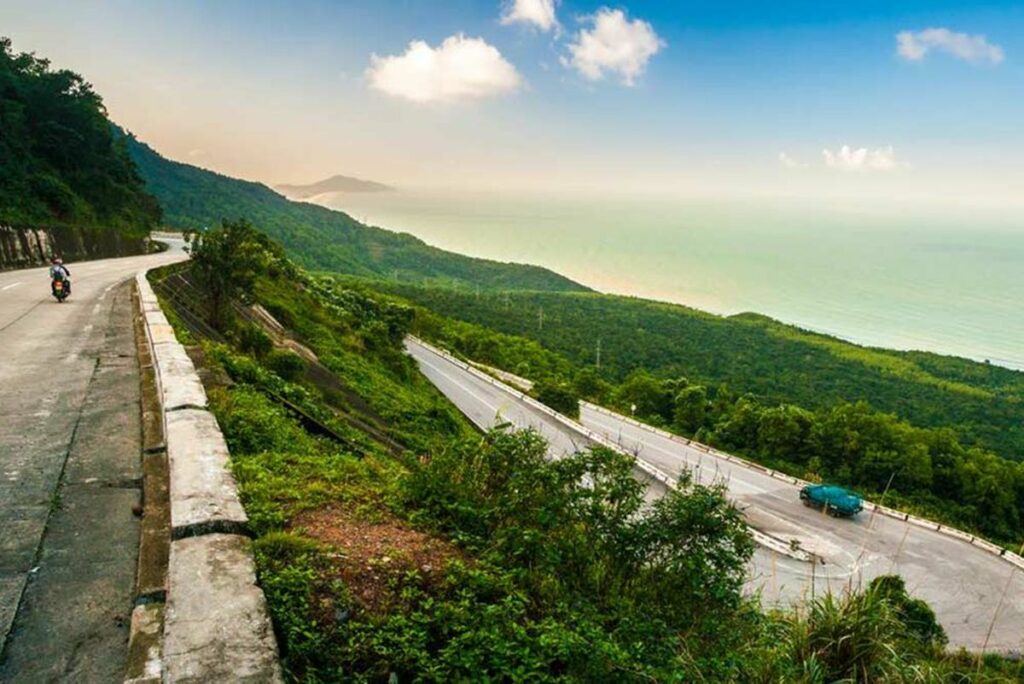
The Hai Van Pass is located between Hue and Da Nang and is one of the most stunning coastal roads in Vietnam. It is very popular to drive the road by motorbike (or on the back of one), but you can also go by car or an old army jeep. The views along the way are spectacular and you can combine to drive with a visit to some other sights along the way, such as Lang Co beach, fishing villages, the Marble Mountains and a small waterfall.
- Tip: Excited to go? Check out our Hai Van Pass tours here, including behind on the motorbike of an Easy Rider, a comfortable car or by military jeep!
5. Bach Ma National Park

Bach Ma National Park is an old French hill station that extends over 40,000 hectares and offers great hiking trails, dilapidated French villas, waterfalls, a campsite and lots of wildlife.
The best way is to go on a Bach Ma national park trekking tour through the forest. There are several routes to choose from. The nicest routes bring you along some small lakes and waterfalls. Also make sure to visit the peak with amazing views over the forest.
6. Dong Ba market
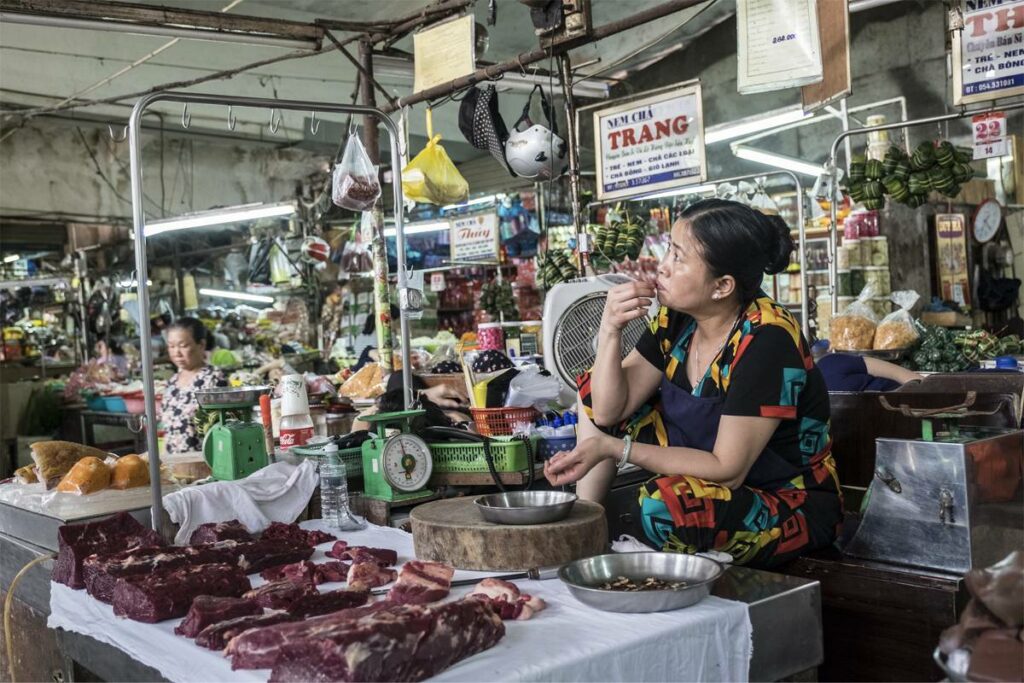
Dong Ba market is the largest market in Central Vietnam and is the perfect place to see the local life. It is a lively market hall where you can buy handicrafts, vegetables, fruit, meat and clothing.
The market is not far from the citadel and on the Perfume River, so you can easily combine a visit with other sights. Walk around the market to watch locals negotiate and get their daily groceries. It is a unique and above all authentic experience.
7. Dragon boat trip on the Perfume River
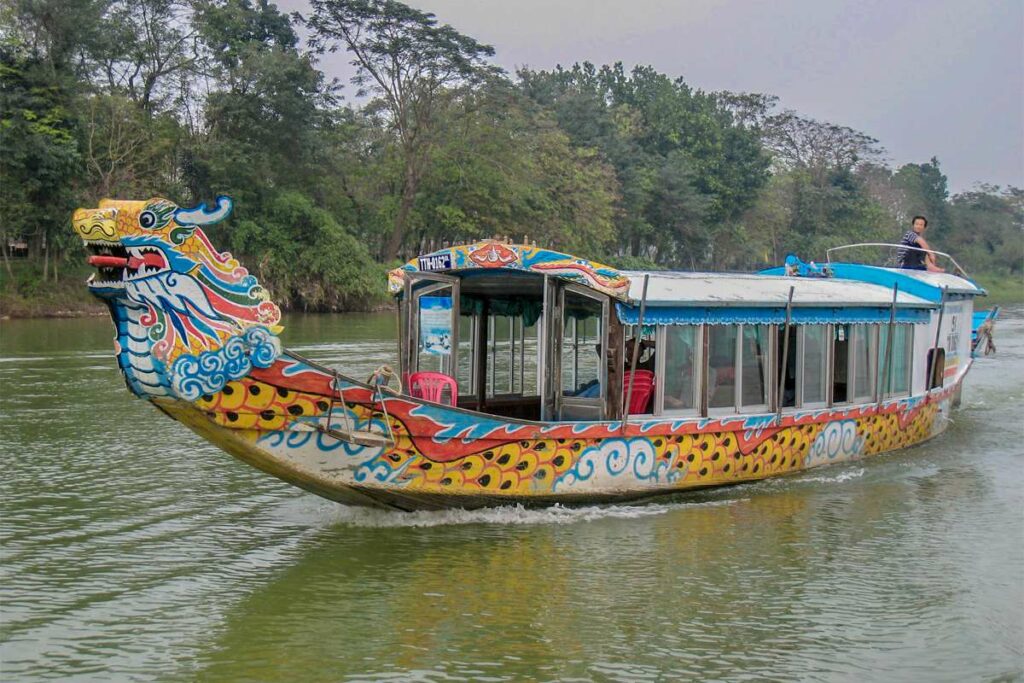
The perfume river flows through the middle of the city and can be a relaxing break from city life. Boat trips, pedal boats and dinner cruises are available.
The best way to discover the river is by a dragon boat ride – they are not to be missed. From the boat you can see the local life on shore and the fishermen and transport boats on the water. There are also a number of riverside temples that you can visit on a dragon boat tour.
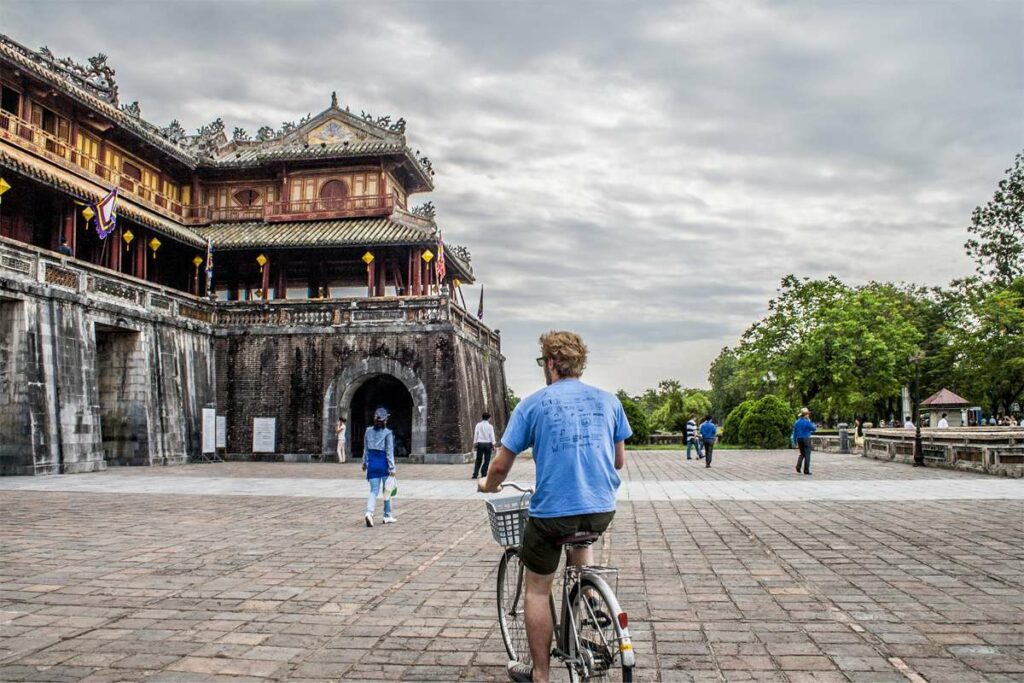
With less traffic than other major cities, Hue is arguably the best city for cycling in Vietnam . Many tourists choose to ride a bicycle along the banks of the Huong River, to the Citadel. You can also visit a number of temples a little further from the center. Some accommodations lend bicycles for free, otherwise you can rent a bicycle cheaply in the center of the city.
If you are a fanatic cyclist, you can also choose to cycle out of the city and explore the quiet countryside. You can also take a bike tour through Hue countryside so a guide can show you the way. It’s a very calming experience, and quite authentic, as you pass through areas where few other travelers go.
- Tip: If you prefer not to cycle yourself, you can enjoy a traditional cyclo ride. A cyclo is a three-wheeled bicycle taxi that appeared in Vietnam during the French colonial era. Local Vietnam offers various cyclo rides in Hue. View all tours in Hue here to see your options.
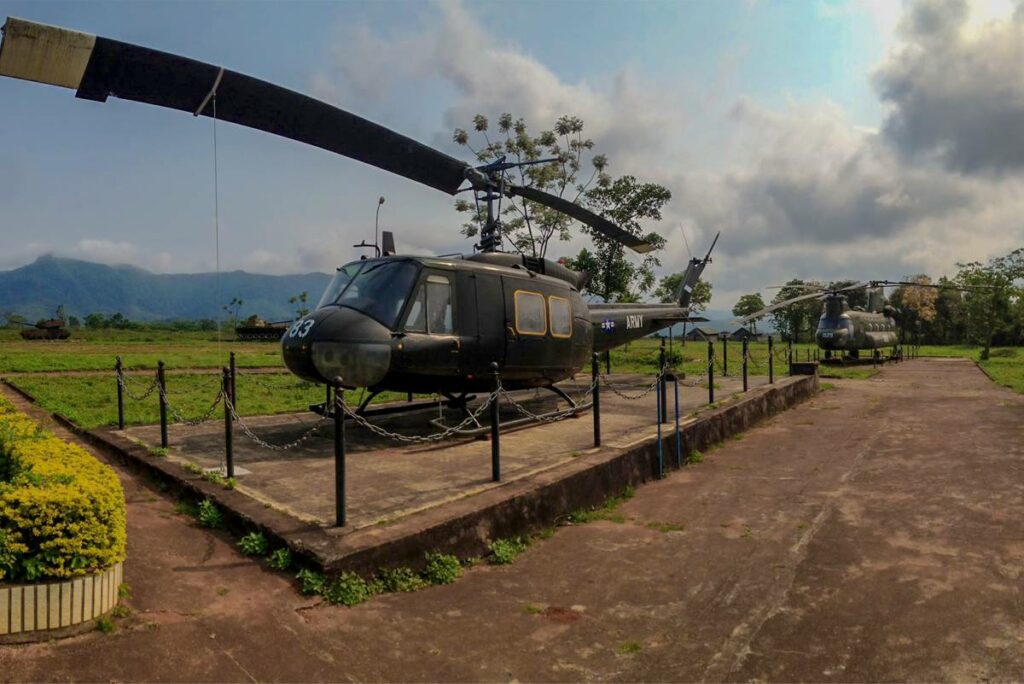
- Tip: If you want to see this area, have a look at our DMZ tour by small group. If you are also planning to go to Phong Nha after or before Hue, you can also do a sightseeing transfer through the DMZ between these two destinations.
10. Hue abandoned water park
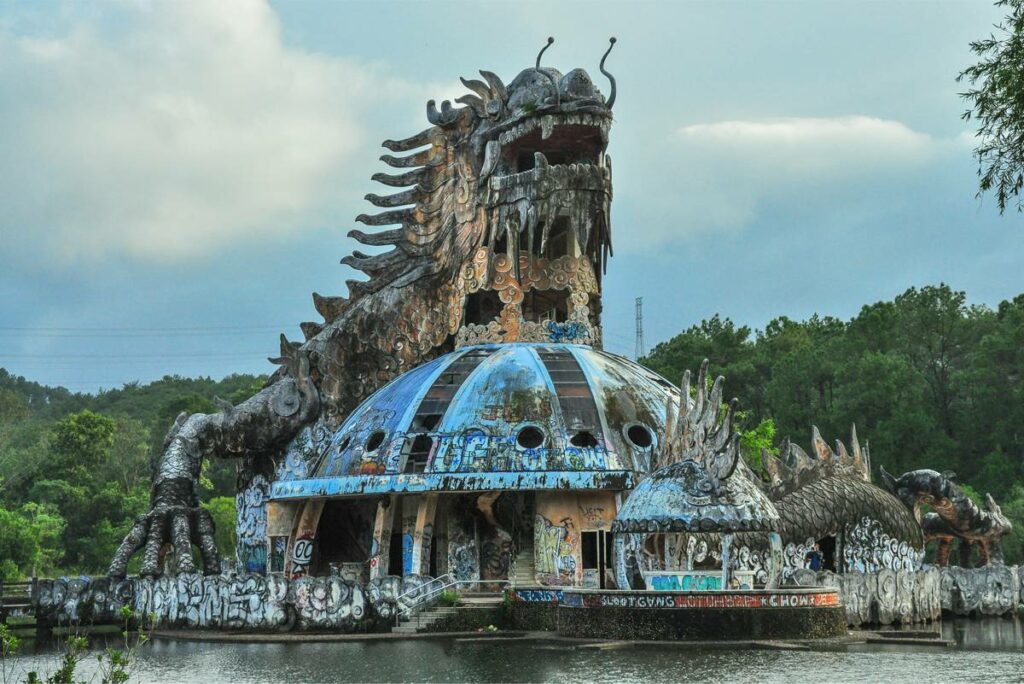
Photography enthusiasts and urban explorers will want to go here. Ho Thuy Tien is a small abandoned water park on a lake not too far from the city.
The water park has been abandoned for over 10 years. Certain parts are ruins, overgrown and broken, it feels a bit like you’ve walked into a horror movie. In the middle of the lake is a dragon’s head, the main attraction. All around you will find empty swimming pools and dirty slides.
It is not an official tourist attraction and in some places there is glass on the floor, so watch out and don’t wear flip flops.
Best hotels & hostels in Hue
Where to stay.
The best area to stay in Hue is the city center, in the area closest to the imperial city, the main attraction of Hue, located on the banks of the river. Here you will find the vast majority of hotels in the city. The area also offers a wide variety of restaurants, bars and shops nearby.
Budget hotels & hostels
- Hue Happy Homestay
- Sunny A Hotel
- Jade Hotel Hue
- Hong Thien Ruby Hotel
Mid range hotel
- Beaulieu Boutique Hotel
- The Scarlett Boutique Hotel Hue
- Moonlight Hotel Hue
High end hotel & resort
- Pilgrimage Village Boutique Resort & Spa
- Vedana Lagoon Wellness Resort & Spa
- Indochine Palace Hotel
Restaurants
Hue is known for its imperial cuisine, originally prepared for the emperor. Although the food emphasis more on presentation than on taste, an imperial banquet is worth it. If you are a street food lover, then Hue is also the right place for you.
- Serene Cuisine Restaurant
- Risotto Restaurant
- ZUCCA Restaurant
- Golden Rice
- Elegante Restarant
- Madam Thu Restaurant
- Family Home Restaurant
- Nina’s Cafe
- Les Jardins de La Carambole
- Hanh Restaurant
There is is a lot to do at night in Hanoi. You can join the locals with a beer on the street, go clubbing, chill in a bar or enjoy a impressive performance in the Opera House.
- Explore the illuminated sights in the evening
- Why Not? Bar
- Secret Lounge Hue
- Le’s Garden Hue
- Brown Eyes Bar
- One For The Road
Lorem ipsum dolor sit amet, consectetur adipiscing elit. Ut elit tellus, luctus nec ullamcorper mattis, pulvinar dapibus leo.
Flights to Hue
Hue has a small international airport, with daily flights from Ho Chi Minh City and Hanoi. Hue’s Phu Bai International Airport is currently served by Vietnam Airlines, Vietjet and JetStar Pacific.
Buses to Hue
Hue is connected by bus to other cities in Central Vietnam. Buses run daily from Hoi An and make the journey to Hue in about three and a half hours. There are also daily buses from other cities, such as Ninh Binh, Phong Nha, Dong Hoi, Da Nang and even from Ho Chi Minh City and Hanoi.
Trains to Hue
Hue train station is one of the many stops on the Hanoi to Ho Chi Minh City train route that goes through the largest part of Vietnam. The train journey from Hue to Da Nang is a very beautiful route that is even worth doing as an excursion.
Private transportation
A great alternative is getting private transportation. The route between Hue and Da Nang/Hoi An goes over the Hai Van pass, a stunning coastal road. On the way there are a few sights that you can visit too.
If you go north to Phong Nha, you can visit the sights that are located in the DMZ.
You can either go by Easy Rider or private car for both routes.
Taxis are everywhere in Hue, although there are a few that take you on a rather detour if you don’t know the area. To prevent this, look out for the Green Mai Linh or yellow Taxi Vang, which use both meters.
Cyclos and motor taxis are very popular. Drivers will name an amount they think they can get, so you have to come up with a price that you think is reasonable.
Cycling is best suited for those who want to visit the sights themselves in and around the center of Hue. There are numerous hotels with bikes and bicycle shops.
Itinerary 2 days in Hue
The first morning in Hue you start with a walk around Hue Citadel and the imperial city. In the afternoon you rent a bike or a motor-taxi to the Thien Mu pagoda along the romantic Perfume River. If you have more time, you can cycle even further. At night you take a boat trip along the Perfume River, where you can enjoy live music.
Take a day trip. Choose to go through the DMZ and visit the Vinh Moc Tunnels and the Khe Sanh Combat Base.
Or make a trekking in Bach Ma national park.
More tips for traveling in Hue
Where to go next.
Hue is located in central Vietnam. When you are traveling south from here you can head to the beaches of Da Nang or the old historical town of Hoi An . Up north you can visit the Phong Nha , with some of the biggest caves in the world or head even further up to Ninh Binh .
Hue with kids
Hue is a great city to visit with children. It is one of the most peaceful cities in the country. You can cycle together to the temples or take a boat trip on the Perfume River. And if you want to relax for a while you can go to the beach.
How to dress
Please keep in mind that the ancient tombs and pagodas are sacred and you must dress appropriately to visit them.
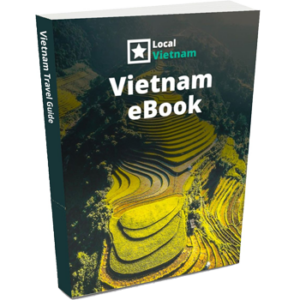
- Destination Guide
- Essential Guide
- Getting Around
- Vietnam Month by Month
- Inspiration
- Vietnam blog
- Travel tips
- Custom Made Trip
- Day- & Multiple Day tours
- Holiday Packages
- Local Meo Vac Homestay
- Local Dong Van Homestay
- Our Team & Company
- Our Customers & Reviews
Copyright © 2023 Local Vietnam
Start typing and press enter to search
Free ebook vietnam travel guide.


Home » Travel Guides » Vietnam » 25 Best Things To Do In Hue (Vietnam)
25 Best Things To Do In Hue (Vietnam)
Hue is one of the most charming towns in Vietnam and is located on the banks of the beautifully named Perfume River. This part of Vietnam has a long and illustrious history as it used to be one of the main royal capitals of the country. As such, history lovers will find a huge amount to enjoy here, from the rambling ancient architecture to the engaging museums that will fill you in on all the details. Many people come here in particular to check out the ancient tombs of former emperors which are dotted all over the city and provide you with a fascinating insight into Hue in the days of old.
As this is a riverfront town, you will also be able to spend time enjoying the cool breezes and the pretty vistas as you stroll along the riverside walkway, and if you want to get out of the town center than you will also be spoiled for choice. There are a number of fascinating day trip locations close to the city, which means that can happily spend a week in Hue and still not see and do everything that this pretty part of Vietnam has to offer.
Here are the best things to do in Hue …
1. Visit the Tombs of the Ancient Emperors

One of the big draws in Hue is the tombs of the Ancient Emperors and this is the main reason why so many visitors travel here every year.
Anyone with an interest in ancient architecture and history needs to visit the tombs which were built in honor of famous emperors of Hue.
The tombs mostly date from the 19th and 20th centuries and are carved to tell the stories of Buddhist legends.
Some of the main tombs not to miss include the Tomb of Tu Duc, the Tomb of Minh Mang and the Tomb of Khai Dinh.
If you are not sure which tombs to visit on a trip here then you can take a dedicated guided tour.
Included in : Hue Full-Day City Group Tour Including Lunch
2. Visit the Tu Hieu Pagoda

Tu Hieu Pagoda is one of the most famous in all of Hue and dates from 1843. This pagoda was also the home of eunuchs during the times of the Ancient Citadel in Hue and nowadays some 70 monks live here.
When you visit you can enjoy two towering temples and also listen to the monks chanting throughout the day as part of their religious rituals.
3. Walk along the Perfume River

The Perfume River is one of the most famous waterways in Vietnam and Hue is the perfect place to take it all in.
There is a delightful waterfront promenade along the banks of the river and this makes a great place to come for a scenic walk in the evenings.
You can also take to the water yourself if you want to get a closer look at the river and rent a paddleboat or opt for an elegant dinner cruise.
This tour includes a dragon boat trip on the Perfume River: Hue Full-Day City Group Tour Including Lunch
4. Sample the food

Hue is often said to have some of the best food in Vietnam and with that in mind you need to make sure that you sample all the delights on a trip here.
As Hue was once one of the most important royal cities in Vietnam, it was also one of the premium producers of famed Imperial Banquets.
Many restaurants all over town still serve these in the traditional style and you can sit down and enjoy a meal that unfolds over multiple courses.
If you are looking for a sweet treat in the city then make sure to check out the local candy which is made of sesame seeds.
Suggested tour : Hue: 5-Hour Street Food Tour by Motorbike
5. Explore Huyen Tran Princess Temple

The Huyen Tan Princess Temple consists of a large complex which is covered with lakes of lotus flowers.
The monastery of Emperor Tran Nhan Tong is also located here and you will also be able to stroll in picturesque orchard gardens when you visit.
Other highlights include a library which holds important documents relating to previous kings and historical figures during the Tran Dynasty.
6. Visit the Imperial Citadel

The Imperial Citadel in Hue would have been the previous center of the government and is made up of a vast complex.
When you walk around you can admire the moats, carved gates and royal pavilions, and there are also a clutch of engaging museums on the grounds.
If you like Vietnamese costumes, textiles and art then make sure not to skip the main galleries here.
7. Have a blind massage

If you want to support the local community and also relax and unwind at the same time, then you need to make an appointment at the Institute of the Blind.
Here you will find a number of blind massage staff who will give you a massage and all the proceeds go to helping those who live at the institute find employment.
At the end of the massage you will also get to spend time in the onsite herbal steam room.
8. Admire the Thien Mu Pagoda

Another famous pagoda in Hue is the Thien Mu Pagoda.
This temple sits overlooking the Perfume River and is known for its gold and silver images of the Buddha.
The pagoda is so well known in Vietnam that it is also the official symbol of Hue and you can take in beautiful views over the city from this spot.
Other highlights to look out for inside include a huge bells that was cast in 1710 as well as a stone turtle which dates from the 17th century and holds a marble stele.
9. Visit Phu Bai Airport

Phu Bai Airport is actually no longer a working airport but a museum dedicated to Vietnamese war history.
The airport would have operated as an American garrison during the Vietnam War and you can tour around the complex and even walk on the old, deserted airstrip here.
As well as the former runway, you will also find other historical relics such as bunkers and outbuildings that would have been used by the American military.
10. Soak in the Alba Thanh Tan Hot Springs

If you want to get outside Hue then head to the Alba Thanh Tan Hot Springs which is around 30 kilometers from the city center.
Here you will find one of the most famous hot springs resorts in Vietnam and there are a number of outdoor tubs available here.
You can also enjoy designated therapy rooms where you can get a soothing massage or other spa treatments.
There are also other quirky activities on offer here such as a high wire and a zip line, or you can play water games in the aqua park.
11. Visit the Royal Theatre

The Royal Theatre was constructed in 1826 and the National Conservatory of Music was then built on these foundations.
You can come here to watch a performance of traditional Vietnamese dance and music, or you can visit to tour the spacious galleries.
The exhibitions are made up of traditional masks as well as local Vietnamese musical instruments.
The performances are held according to a rotating schedule and usually last around 45 minutes.
12. Cycle around the city

Hue is often said to be one of the nicest cities in Vietnam to cycle around.
You will find far less traffic here than in other parts of the country and you can also cycle along the lush banks of the Huong River and visit all the key attractions for which Hue is famous.
You can either just rent a bike and go it alone, or you can also join a dedicated cycling tour with a guide that will take you around Hue or out into the surrounding countryside.
13. Take a photo at the Hue Sign

Anyone looking for a modern side of Hue needs to head to one of its newest attractions with is known as the Hue Sign.
Visitors flock to this spot in the city which is located in February 3 Park and includes a colorful illuminated sign that says ‘I Love Hue’. This installation is known as a premium place in the city for a photo opportunity and you can also enjoy the leafy park at the same time.
14. Shop at the Hope Center

The Hope Center is a project that has been set up to help disabled and disadvantaged residents in Hue find employment.
The center makes a number of garments and you will find amazing local handicraft items.
Some pieces to look out for include cloth which is woven by hand by A Luoi women and you will also find other items like bags, purses, scarves and even traditional jewelry for sale.
15. Journey to Bach Ma National Park

Bach Ma National Park is located at 1,450 meters above sea level and encompasses some of the prettiest scenery in all of Hue.
On a visit here you will find towering waterfalls as well as pretty hiking trails and there are several crumbling French villas to observe along the way.
The park is part of the wider Annamite Range and this part of Vietnam is known for its lush landscapes.
You can also combine a trip here with a stop off at the Cau Hai Village.
There is also the option to stay overnight here at the camp ground of you can just spend the day swimming in limpid pools and taking in the flora and fauna.
16. Visit the Ho Quyen Tiger Fighting Arena

The Tiger Fighting Arena is situated around three kilometers outside of the center of Hue proper and was erected in 1832. As such, it was built during the time of the Minh Mang Dynasty and would have been the venue for dramatic fights between tigers and elephants.
Nowadays you won’t find any more fights here (luckily!) as these were stopped in the 1900s but you can still take in this great monument to history and if you look closely there are even claw marks pocking the crumbling walls.
17. Admire Hon Chen Temple

Hon Chen Temple is dedicated to Po Nagar who is the Goddess of the Cham population who would have been based in Ngoc Ho Village in the days of old.
The shrine sits in on top of a craggy cliff in Ngoc Ho Village and was restored several times, first in 1832 and then again in 1886. The temple now has several antiques of interest such as a number of ancient vases, some Chinese calligraphy and ornate animal carvings.
If you come here on the third and seventh lunar month of the year then you will also find local music and dance performances.
18. Take a trip to Elephant Springs

Located between Hue and neighboring Da Nang, Elephant Springs is a top spot for anyone who wants to visit a famous springs in the area without the crowds.
Elephants Springs is far less visited by tourists than other springs around Hue and this attraction got it name thanks to the boulders that surround the waters and are said to resemble elephants playing.
There is also a carved elephant stone which has water squirting from its trunk and the pools here are cool but also make a great place to come if you want to relax in the middle of the jungle.
19. Take a Huda Brewery Tour

If you want to get a drink in Hue then consider signing up for a Huda Brewery Tour.
Located close to Phu Bai Airport, you can come here and see how Danish technology is being used to make a variety of delicious local brews.
You can tour the factory and learn about the history of the Huda brand and you will also get the chance to sample some of the different beverages available.
20. Shop at Dong Ba Market

Dong Ba Market is one of the premium shopping spots in Hue if you are looking for a dose of authenticity in the city.
Here you will find a flea market as well as a number of toothsome local food stalls.
This spot was made famous when celebrity chef Anthony Bourdain came here and filmed an episode of his show ‘No Reservations’. Bourdain sampled the Bun Bo here but you will find a huge number of other dishes including noodle soups and spring rolls.
21. Sunbathe on Thuan An Beach

Around 14 kilometers outside of Hue is Thuan An Beach, so if you fancy some sea and sun then this is the spot for you.
Part of the Phu Van District, Thuan An Beach consists of a long strip of fluffy sand and many locals claim that this is one of the most beautiful beaches in Vietnam.
Activities here include swimming and sunbathing and the main season here runs from May to September when temperatures in Hue rise.
22. Visit the Royal Antiquities Museum

If you like antiquities then head for the Royal Antiquities Museum where you will find a wide variety of different pieces that date from the Nguyen dynasty from 1802 to 1945. As you walk around the different galleries you will be able to enjoy traditional furniture as well as textiles, jewelry and other antiques that used to belong to the royal family.
There are seven different zones inside the museum and you should make sure to check out the ornate beams which are carved with sculptures of dragons.
23. Walk across the Thanh Toan Bridge

Thanh Toan Bridge is the most famous bridge in Hue and is said to date back some 200 years.
The bridge spans the Nhu Y River and is made up of a wooden platform which is topped with a tiled roof.
The bridge only stretches for 17 meters but it also has a shrine located inside which is dedicated to the patron of the structure.
You will find the bridge around 10 kilometers to the north of the city and this is a great place to come to see a more authentic side of Hue as this is also a residential neighborhood.
24. Visit the Healing the Wounded Heart Shop

The Healing the Wounded Heart Shop is the place to come in Hue if you want to pick up some gifts or souvenirs while also helping the local community.
The shop sells a range of handicrafts which were made by disabled artisans in Hue and many of these use recycled materials such as soda cans.
All the profits of any items you buy are then funneled back into the local community and used to fund heart surgery for local impoverished children.
25. Have dinner at Ancient Hue Royal Cuisine and Gallery

One of the best known restaurants in Hue is Ancient Hue Royal Cuisine and Gallery which serves delicious food and is located inside an ancient housing complex.
The food is a mix of local and international faer and although it is a little pricier than other restaurants in the city it is more than worth it if you are in the mood for some upscale dining.
They also serve cold beer so this is a great place to unwind after a day of sightseeing.
25 Best Things To Do In Hue (Vietnam):
- Visit the Tombs of the Ancient Emperors
- Visit the Tu Hieu Pagoda
- Walk along the Perfume River
- Sample the food
- Explore Huyen Tran Princess Temple
- Visit the Imperial Citadel
- Have a blind massage
- Admire the Thien Mu Pagoda
- Visit Phu Bai Airport
- Soak in the Alba Thanh Tan Hot Springs
- Visit the Royal Theatre
- Cycle around the city
- Take a photo at the Hue Sign
- Shop at the Hope Center
- Journey to Bach Ma National Park
- Visit the Ho Quyen Tiger Fighting Arena
- Admire Hon Chen Temple
- Take a trip to Elephant Springs
- Take a Huda Brewery Tour
- Shop at Dong Ba Market
- Sunbathe on Thuan An Beach
- Visit the Royal Antiquities Museum
- Walk across the Thanh Toan Bridge
- Visit the Healing the Wounded Heart Shop
- Have dinner at Ancient Hue Royal Cuisine and Gallery

Hue Travel: Ultimate Guide to Hue, Vietnam
Hue is the former imperial capital of Vietnam . Located in central Vietnam, the ancient city of Hue was home of the emperors of the Nguyen Dynasty in the 19th Century. Hue is famous for its spectacular royal tombs of the emperors and for Hue Citadel which is Royal Palace of the Imperial City.

Hue has almost everything, from scenic beaches, majestic scenery of mountains to the ancient architecture and unique cultural traditions that have been there for generations. Trip to Hue will bring you an extremely memorable experience.
Hue Attractions
Hue imperial city (the citadel).
The Imperial City or the Citadel is a walled palace in Hue. Hue Citadel was recognized by UNESCO as a World Cultural Heritage Site in 1993. The large complex of buildings features hundreds ruins of ancient palaces, temples and monuments from the times when Hue was the royal capital of Vietnam's Nguyen Dynasty.

Thien Mu Pagoda
Thien Mu Pagoda , also known as Linh Mu Pagoda, is a historic temple located 4 kilometers from the center of Hue. This seven-story pagoda sits on the hill on the northern bank of the Perfume River. This is the destination attractive not only for Buddhists but for anyone looking for the place to enjoy charming natural scenery and calm one’s mind.
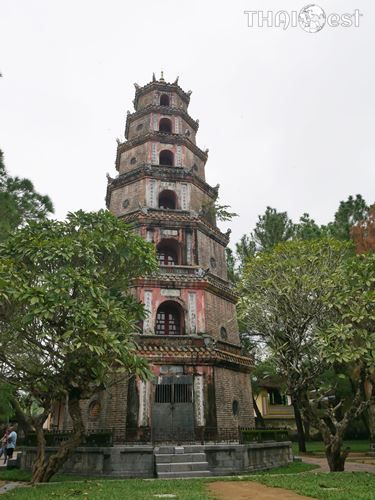
Tombs of Hue
Some of the most famous tourist destinations in Hue, that attract a large number of tourists every year, are the tombs of the Nguyen kings. The most important tombs of Hue that you should visit are Tomb of Tu Duc, Tomb of Minh Mang and Tomb of Khai Dinh.
Tomb of Tu Duc
Tomb of Tu Duc is located on Van Nien Hill in Duong Xuan Thuong village, 5 km south of Hue. This imperial tomb is the most impressive of the royal mausoleums in Hue as its unique architecture is in the harmony with natural scenery. The tomb was built for the Emperor Tu Duc who was the longest-reigning monarch of Nguyen Dynasty. Tomb of Tu Duc looks like as a large park with a magnificent scenery.
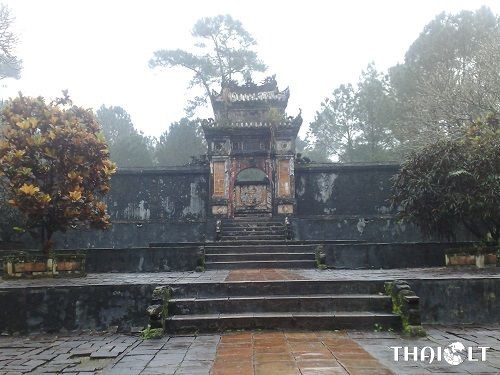
Tomb of Minh Mang
Tomb of Minh Mang , also known as Hieu Lang, is one of the most famous mausoleums of emperors in Hue. The royal tomb is located on the western bank of the Perfume River, about 12 km south of Hue City. In the complex of the Royal Tomb of King Minh Mang you can find various palaces, temples, pavilions and other structures fitting well with the ponds and surrounding landscape.

Tomb of Khai Dinh
Tomb of Khai Dinh , also known as Ung Lang, is located at the foot of the mountain Chau Chu, 9 kilometers south of Hue. The tomb was built for the 12th Emperor of the Nguyen dynasty - Khai Dinh. Tomb of Khai Dinh is an unusual imperial tomb as its architecture is a good combination of modern European and classical Vietnamese architecture.

Hue Natural Attractions
In addition to the ancient historical and cultural sights of Hue, there are also many fascinating natural attractions in Hue such as Lang Co Beach, Thuan An Beach, Canh Duong Beach, Thac Nhi Lake, romantic Perfume River, Tam Giang Lagoon, Thua Thien Village and many others. Getting out from the city to explore the nature of Hue province can make an extremely wonderful journey.
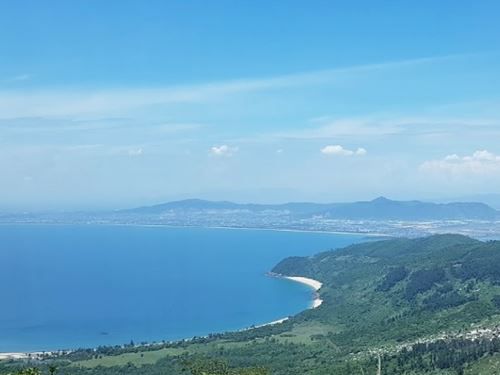
The complete list of Hue must-see tourist attractions can be found here: Top Tourist Attractions in Hue .
Update ticket prices for top tourist attractions in Hue can be found here: Price of Tickets to Complex of Hue Monuments .

Traveling to Hue
There are many ways that can be used for traveling to Hue . Some of the most popular means of transportation for getting to the imperial city are briefly described below.
Flights to Hue
Flying is the most time-saving way for getting to Hue. The city has its own Phu Bai International Airport (HUI) , which is located about 13 km from Hue City center. However, currently only 3 airlines (Vietnam Airlines, Vietjet Air and Jetstar Pacific) are operating at Hue Airport serving passengers on two domestic routes: from Hanoi (6 daily flights) and Ho Chi Minh City (18 daily flights). It takes only about 1 hour 30 minutes to fly to Hue from these cities.
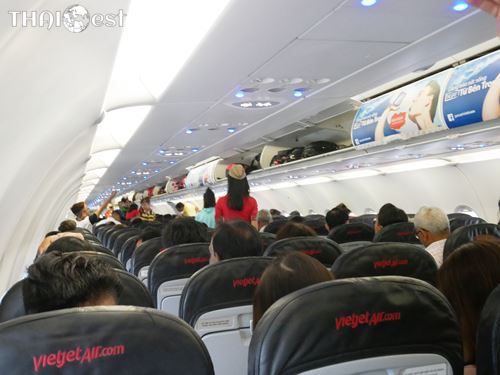
From Hue Airport to City Center
Taxi : Taking a taxi is a convenient way to travel from Phu Bai Airport to the city center. You can find taxis parked outside the airport. The price varies depending on the company and type of the car, but taxi fare from Hue Airport to city center should be about 200,000 VND. It takes about 15-20 minutes to reach the city.
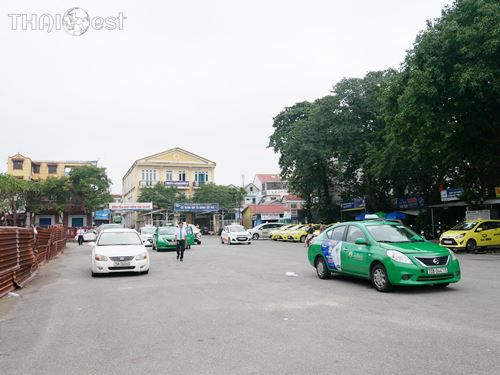
Bus : Bus is the main mean of public transport for locals traveling from Phu Bai Airport to the center of Hue City. Two public bus routes connect the airport with the city: No. 2 and No. 11. The earliest bus departs at about 6:00 and the latest leaves about 22:00. Bus ticket costs only 5,000 VND per person and it takes about 30-60 minutes to reach Hue center.
Airport Transfer : Private transfer is a good option if you are travelling in a group. Private transfer from Phu Bai Airport to anywhere in Hue City costs about 300,000 VND for 4-seat car.
Other options: For more Information about how go from Hue Airport to city center check How to get from Phu Bai Airport (HUI) to Hue City .
Flights to Da Nang
Alternatively, you can fly to Da Nang International Airport (DAD) and then transfer from Da Nang to Hue. Many tourists choose to travel this way because Da Nang Airport receives a larger number of flights from various destinations and it is convenient to explore two central cities that are only 100 km apart.
Flights from Bangkok
Da Nang Airport is the nearest to Hue international airport that receives direct flights from Bangkok , making the trip to Hue from Thailand really easy. Low cost carrier AirAsia serves this route as well as Bangkok Airways and Vietnam Airlines. Flight deals for this route can be found here:
Flights from Bangkok to Da Nang

Train to Hue
Travelling by train is also a popular option for getting to Hue because it’s relatively cheap and safe and to take a train. Train is also a suitable choice if you want to admire the natural scenery and beautiful landscapes along the route. Hue Railway Station is located right in the city center.

Train tickets from Hanoi or Ho Chi Minh City to Hue normally cost from 500,000 VND per person. If you want more comfort and better service, choose a more expensive seat type.
Traveling by train to Hue takes about 14-15 hours if departing from Hanoi and more than 18 hours when departing from Ho Chi Minh City .
The train schedule from Hanoi to Hue :
- SE1: Hanoi 19:30 - Hue 8:48
- SE3: Hanoi 22:00 - Hue 10:20
- SE5: Hanoi 09:00 - Hue 22:42
- SE7: Hanoi 06:00 - Hue 19:00
- TN1: Hanoi 13:10 - Hue 03:39
The train schedule from Ho Chi Minh City to Hue :
- SE2: Saigon 19:30 - Hue 15:23
- SE4: Saigon 22:00 - Hue 16:39
- SE6: Saigon 22:00 - Hue 05:31
- SE8: Saigon 06:00 - Hue 01:28
- TN2: Saigon 13:10 - Hue 12:06
Bus is probably the most appropriate choice for traveling to Hue because of its convenience and affordable price. But you should also consider carefully before taking a long distance bus as the journey takes long and it’s far from being comfortable, especially for taller people. There are many buses to Hue from Hanoi and Ho Chi Minh City and the travel time is usually by 2-3 hours shorter than taking a train.
Other transportation
Find various transportation options on the most popular routes :
From Hanoi to Hue
From Hoi An to Hue
For other routes to/from Hue , use this search form.
From Da Nang to Hue
Train : Train is good choice for traveling from Da Nang to Hue. The distance between Da Nang Railway Station and Hue Railway Station is about 110 km. There are 6 daily trains from Da Nang to Hue, and the average travel time is about 2.5-3 hours. Train tickets can be booked online here: Train from Da Nang to Hue .
Taxi : Taking a taxi from Da Nang to Hue is very convenient for group travels, but the price is quite high as normally the transfer between two cities costs from 1,000,000 VND to 1,800,000 VND, depending on the number of seats and the route. In Da Nang, there are several taxi companies and some of the most reliable ones are Mai Linh Taxi, Vinasun, Tien Sa.
Motorbike : This is the most economical way to travel as motorbike rental prices are only 80,000-150,000 VND per day. However, riding motorbike is somewhat dangerous. Traveling from Da Nang to Hue by motorbike through Hai Van Pass is the best way to enjoy this magnificent scenery.
Tour : You can easily take a day trip from Da Nang to Hue to visit the famous landmarks and must-sees in Hue. You can join this Hue City Tour from Da Nang and visit the historical sites in Hue City in a day.
An overview of various ways of traveling from Da Nang to Hue can be found here: Best Way to Travel from Da Nang to Hue .
Hue to Hoi An
Hoi An is a popular town in central Vietnam. Traveling between Hue and Hoi An is also easy as there are plenty of transportation options to choose from. If you are planning to travel from Hue to Hoi An or vice versa , for detailed information check: Best Way to Travel from Hue to Hoi An .
How to get around Hue City
Boat : It's a very popular transport in Hue City. You can take a dragon boat to sail along the Perfume River to visit the most important attractions of Hue.

Cyclo : Riding a cyclo, a three-wheeled cycle taxi, is the authentic way to discover Hue which became a popular way to get around the city. You can take a leisurely stroll around this beautiful ancient city. The price of the ride is about 80,000-100,000 VND per 30 minutes
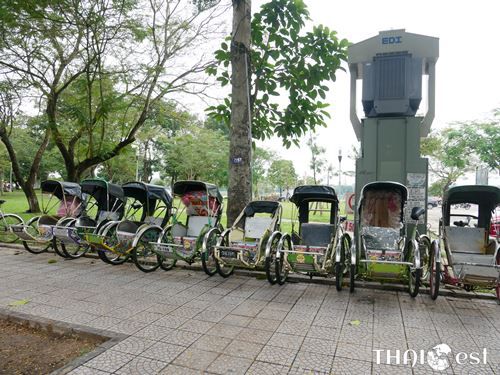
Bus : Public bus is popular and easy way to around the city. Currently, Hue public bus system has 14 regular routes that let you roam even far away from the city.
Walk : If you want to explore Hue on your own, then just walking around the city is another good option. You can easily take a half day walk in Hue Imperial Citadel to learn about Hue History and Vietnamese Royal Culture.
Motorbike : For those who love adventures, motorbike is an extremely convenient transportation for getting around Hue. You can rent a motorbike for only 100,000-150,000 VND per day.

Other options: Getting around Hue is pretty easy and it doesn't cost that much either. For more transportation options check: How to get around Hue City .
Where to stay in Hue
In terms of the areas of Hue that are convenient to stay, you basically have few choices. Detailed information about choosing accommodation in Hue can be found here: Where to Stay in Hue .

The most popular area for tourists to stay in Hue is the city center , on the southern bank of Perfume River between Nguyen Cong Tru and Huong Vuong streets. There are plenty of hotels, hostels and homestays available.
Some of the best rated Hue hotels are listed below.

Budget Hotels
The Chill - Homestay In Hue
Serene Shining Hotel
Hue Four Seasons Hotel
Mid-Range Hotels
The Scarlett Boutique Hotel
La Paix Hue
Hue Serene Palace Hotel
Luxury Hotels
Azerai La Residence, Hue
Vinpearl Hotel Hue
Indochine Palace
There are also many luxury resorts with offering top-level service outside the city. Pilgrimage Village Boutique Resort & Spa , Vedana Lagoon Resort & Spa , Ana Mandara Hue Beach Resort are the popular names that are ready to offer you dream vacation nearby Hue beach. However, room rates at these resorts are relatively higher than at the hotels in the city.
What to eat in Hue
Hue is not only impressive by its nostalgic beauty of historical sites but also by Hue cuisine that lets you enjoy countless delicious specialties. You can experience the authentic taste of Hue by joining Hue Street Food Walking Tour .

Some of the most popular Hue cuisine specialties :
Nem Lui Hue : Hue lemongrass skewers with grilled pork sausage or meatball served with freshly-cooked vegetables, dipped in the special sauce.
Bun Bo Hue : Beef Noodle which is present in all cities in Vietnam. However, only in Hue can you feel the soul of this dish. A bowl of Bun Bo Hue usually has a piece of pork leg, small pork blood and a few slices of thinly sliced beef with the typical aromatic flavor of fish sauce, and spiciness of chili pepper. The price for each bowl is only about 15,000-25,000 VND.

Mussel Rice : This dish is made from white rice served with mussels, peanuts, fried pork, and raw vegetables that are mixed together to create a distinct flavor. Mussel rice is quite cheap as one bowl costs only about 10,000-15,000 VND.
Banh Nam, Banh Beo : These are 2 types of cake that you should not miss when coming to Hue. The price of each type of cake is only 1,000 VND per piece.
Banh Bot Loc : This is a transparent chewy dumpling made from tapioca flour and filled with minced fatty pork or bacon and shrimp. Although Banh Bot Loc is extremely popular, you will definitely not forget the delicious taste of this dumpling after trying it in Hue.
Hue Pancake : Hue pancake is called Banh khoai and is made from rice flour batter with turmeric and topped with shrimp, pork slices, bean sprouts and spring onions.

The complete Hue food guide can be found here: Hue Food Specialties .
Souvenirs from Hue
Hue has many interesting things you can buy as souvenirs to bring back home to your family or friends.

Conical hats : Hue hats is one of the symbol of the ancient capital and it is a meaningful gift.
Sesame candies : Sesame is considered as one of the cultural symbols in Hue. Hue sesame candies are made up of bean flour, malt, and rice cakes.
Melaleuca oil : This oil is very famous in Hue with its effective use in preventing cough and cold for children, pregnant women and adults.
Ginger jam : Ginger jam is one of the nutritious delicacies that Hue people often use as a dessert.
Best time to travel to Hue
The weather in Hue is divided into 2 distinct seasons: rainy season and dry season.
In particular, the rainy season starts from September to February with typical rains and frequent storms. During the end of the year, the temperature can be as low as 9 degrees. If you will travel to Hue during the rainy season, you will get a chance "to taste" something called "Hue rain" that many people come to experience. That is the feeling when sitting in a coffee shop in front of Hue Citadel, sipping hot aromatic coffee and watching the rain falling down with indescribable feelings.
The dry season is from March to August, with bright sunny days and temperatures reaching even as high as 40 degrees. During this season rains are quite rare so you can easily visit the historical sites of Hue and mountainous areas as well as refresh in the cool blue sea.
Each season in Hue can give you different unique experiences.

Festival Season
If you are a fan of festivals, you should visit Hue during one of city’s festivals such as Royal Palace Night, Ao Dai Festival, Street Festival, Food Festival, that are taking place from the middle of April to the beginning of May. At this time of the year, you will discover the unique festive culture of Hue.

1. Buy cheaper Vietnamese SIM Card online
2. Pick up SIM Card at the airport on arrival
Ho Chi Minh City (SGN Airport)
Hanoi (HAN Airport)
Da Nang (DAD Airport)
Nha Trang (CXR Airport)
Popular Vietnam articles
Ba Na Hills Ticket Price
Where to Stay in Phu Quoc?
How to get from Da Nang to Ba Na Hills
Best Halong Bay Cruises
Where to Stay in Dalat?
Tickets to Complex of Hue Monuments
Fansipan Mountain in Sapa
Hanoi to Sapa Train
Phu Quoc Hon Thom Cable Car
Sapa Hotels with Best View
We use cookies on our website. Some of them are essential for the operation of the site, while others help us to improve this site and the user experience (tracking cookies). You can decide for yourself whether you want to allow cookies or not. Please note that if you reject them, you may not be able to use all the functionalities of the site.
- Be Inspired
- Destinations
- Things to do
- Eat & Drink

The history
Hue has been the capital of unified Vietnam since 1802 after Nguyen Anh ascended the throne to open the Nguyen Dynasty, which was the last feudal dynasty in Vietnamese history. Hue ended its mission to be the Vietnamese capital in 1945 when the last emperor of the Nguyen Dynasty, Bao Dai abdicated. Since then, the capital of Vietnam was once again chosen as Hanoi ; Hue became the ancient capital. In 1993, The complex of Hue Monuments was recognized by UNESCO as a cultural heritage of the world.
Hue City – the capital of Thua Thien Hue province, is a city in the middle of Vietnam, located adjacent to the beautiful city of Da Nang , separated by the majestic Hai Van Pass. This is one of the cities with the oldest cultural history and is a place to preserve many famous places and historical sites in the world.
Discovering Hue , Da Nang and Hoi An is an indispensable “combo” of tourists coming to central Vietnam.
Hue tourist map

Anyway, a detailed map will help you explore a new land more easily, so we would like to introduce you to Hue tourist map , with this map you can easily explore the ancient capital. Don’t forget to download the map for offline use or print out if necessary.
Hue weather
Located between the South and the North, Hue weather is characteristic of both regions. Hue has all four seasons, but the most obvious is dry and rainy seasons. The dry season lasts from March to August, it is quite bright and hot. From August to November is the rainy season. Especially from October onwards, there are prolonged rains and storms, the weather at this time is quite cold. Spring lasts from January to the end of February, at this time the temperature is still not very high, but thanks to the rays of the spring, Hue becomes warmer and brighter.
According to the Hue tourism experiences, you should come to this beautiful city at the time of the season: summer-autumn and autumn-winter (January – July), when the weather in Hue is most pleasant.
In addition to the above two times, you can also visit Hue in late April, the time for the Hue Festival. On this occasion, you will have the opportunity to explore the unique cultural features of Hue city by experiencing various exciting activities.
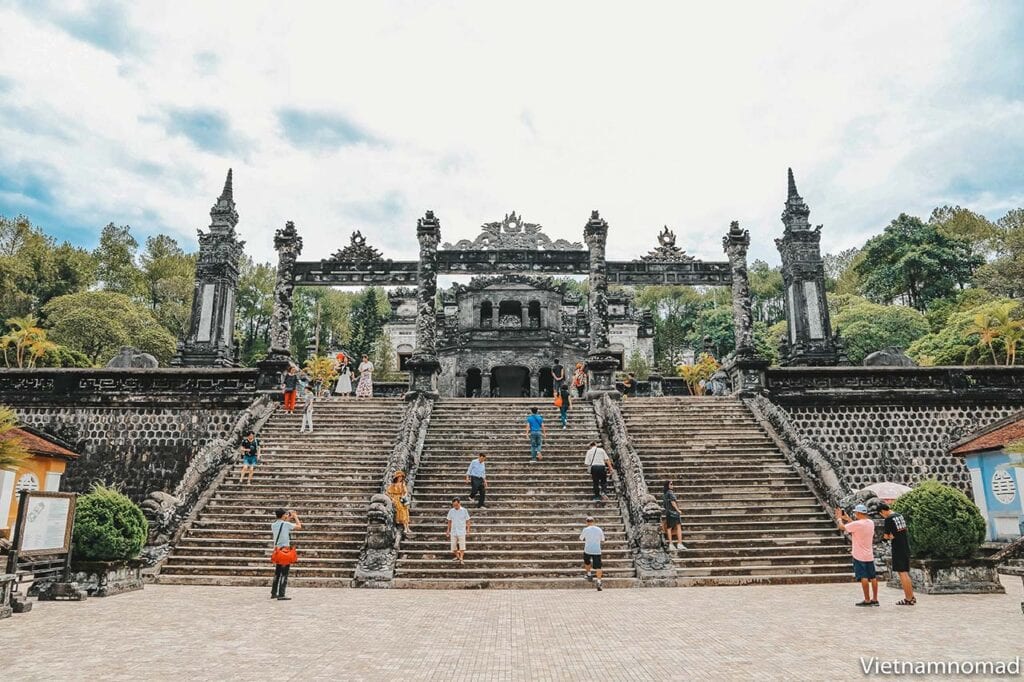
How to get to Hue?
Discover transportation deals for Hue from our partners >
From Hanoi or Ho Chi Minh City to Hue
From Ho Chi Minh City or Hanoi , you can easily go to Hue in the following ways:
1. By plane
Hue has Phu Bai airport. Currently, there are many airlines serving flights from Ho Chi Minh City and Hanoi to Hue, such as Vietnam Airlines, VietjetAir and Jetstar. Ticket prices range from 400.000 VND to 900.000 VND.
If you want to save money, you can take a bus to Hue. Today there are many reputable, high-quality sleeper bed buses running from all over the provinces to Hue, such as Hoang Long, Phuong Trang, and TheSinhTourist.
In Hanoi, you can take a bus to Hue at Giap Bat station, Nuoc Ngam bus station, or Luong Yen bus station, with fares from 300.000 VND/ way.
In Ho Chi Minh City (Saigon), you buy tickets at Eastern bus station, with fares from 450.000 VND/ way.
3. By train
Traveling by train to Hue is also an exciting experience you should try. Although not more convenient than the above ways, in return, you will admire the beautiful natural scenery of Vietnam on both sides of the road. SE2, SE4, SE6, SE8, TN2 are trains that usually transport passengers to Hue and many other provinces. You can buy train tickets to Hue for about 400.000 VND/ way. If you want to experience better services such as beds, soft chairs, the cost will be higher.
From Da Nang To Hue
This is the way most often used by tourists, you can easily get to Hue from Da Nang by bus, we recommend HAV Limousine (add 445 Hai Phong, Da Nang), the fare is 140.000 VND, travel time is 2,5 hours.
How to go around Hue City?
Transportation in the inner city is probably one of the things you must pay attention to when coming to Hue. You can take a taxi, rent a motorbike or travel by cyclo.
1. Take a taxi
If you do not want to drive yourself, you can choose a taxi. Some reputable taxi companies recommended by many tourists are Mai Linh, Dong Ba, Thanh Cong, and Phu Xuan. However, the price of a taxi is quite high.
2. Take a cyclo
Like Hanoi and Hoi An, Hue still has many cyclo drivers in operation. Cyclo prices are relatively low, from 150.000 VND – 200.000 VND for a sightseeing trip. Note, most of Hue’s cyclo drivers are individual drivers, so you should negotiate the price before boarding.
3. Rent a motorbike
A motorbike is probably the best option for exploring around Hue city. As a famous tourist destination, the motorbike rental service in Hue is also very diverse. The rental price is from 100.000 VND to 120.000 VND for one.
Some famous motorbike rental areas in Hue:
- Le Loi Street, Western Quarter opposite Huong Giang Hotel
- Hung Vuong street, the intersection of Hung Vuong and Nguyen Tri Phuong
- Pham Ngu Lao Street
- Small and medium hotels in Hue also offer motorbike rental
Another unique way that not all tourist destinations have is traveling by boat. The boats only run on the Perfume River to listen to Hue folk songs. Besides, some routes take you to other famous tourist destinations such as Thien Mu Pagoda, Hon Chen Palace, and Minh Mang Tomb.
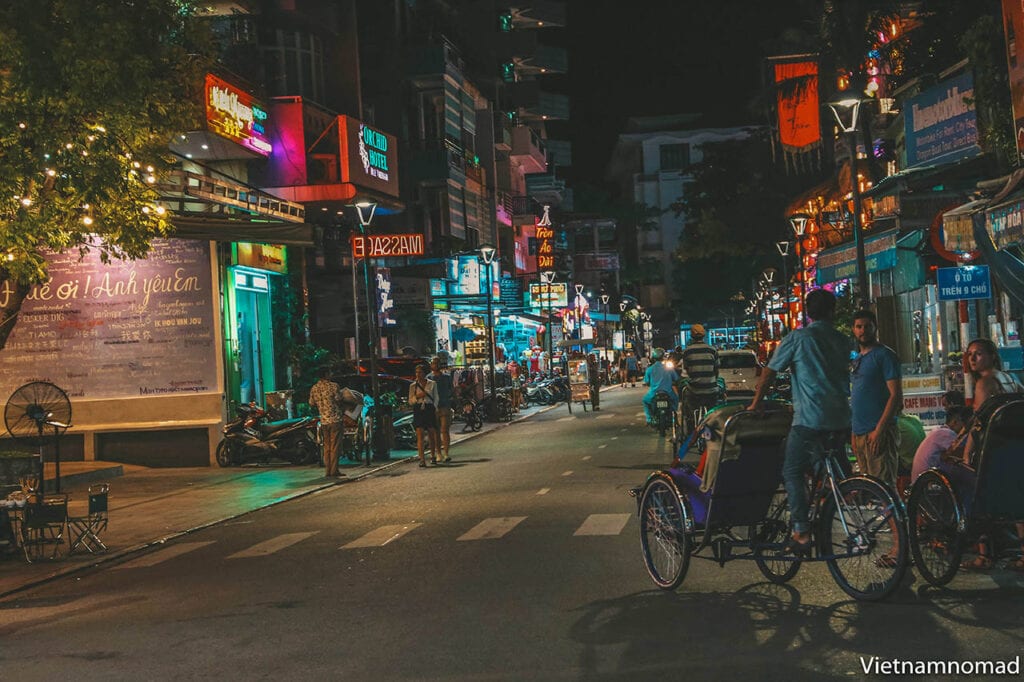
Where to stay in Hue?
As a prominent tourist city in Vietnam, the accommodation service is also extremely developed. Depending on the budget as well as individual needs, you can choose for yourself the appropriate type of rest.
Hotels in Hue
The most considered choice is the hotel because of its affordable price, from 250.000 VND/ room/ night. Most of the hotels in Hue have a convenient location near many famous tourist destinations.
Homestays in Hue
If you want to save money, homestay is the ideal choice. With a room rate of 150.000 VND/ night, you can still stay in a beautiful and lovely space right in the heart of Hue city.
Resorts in Hue
If the purpose of your trip is to relax in the beautiful nature, to enjoy the peaceful atmosphere, then the resorts in Lang Co Bay are a perfect suggestion. However, the room rates at these resorts are relatively high.
Here are some recommendations for accommodation in Hue, which are excerpted from the Vietnam travel guide book .
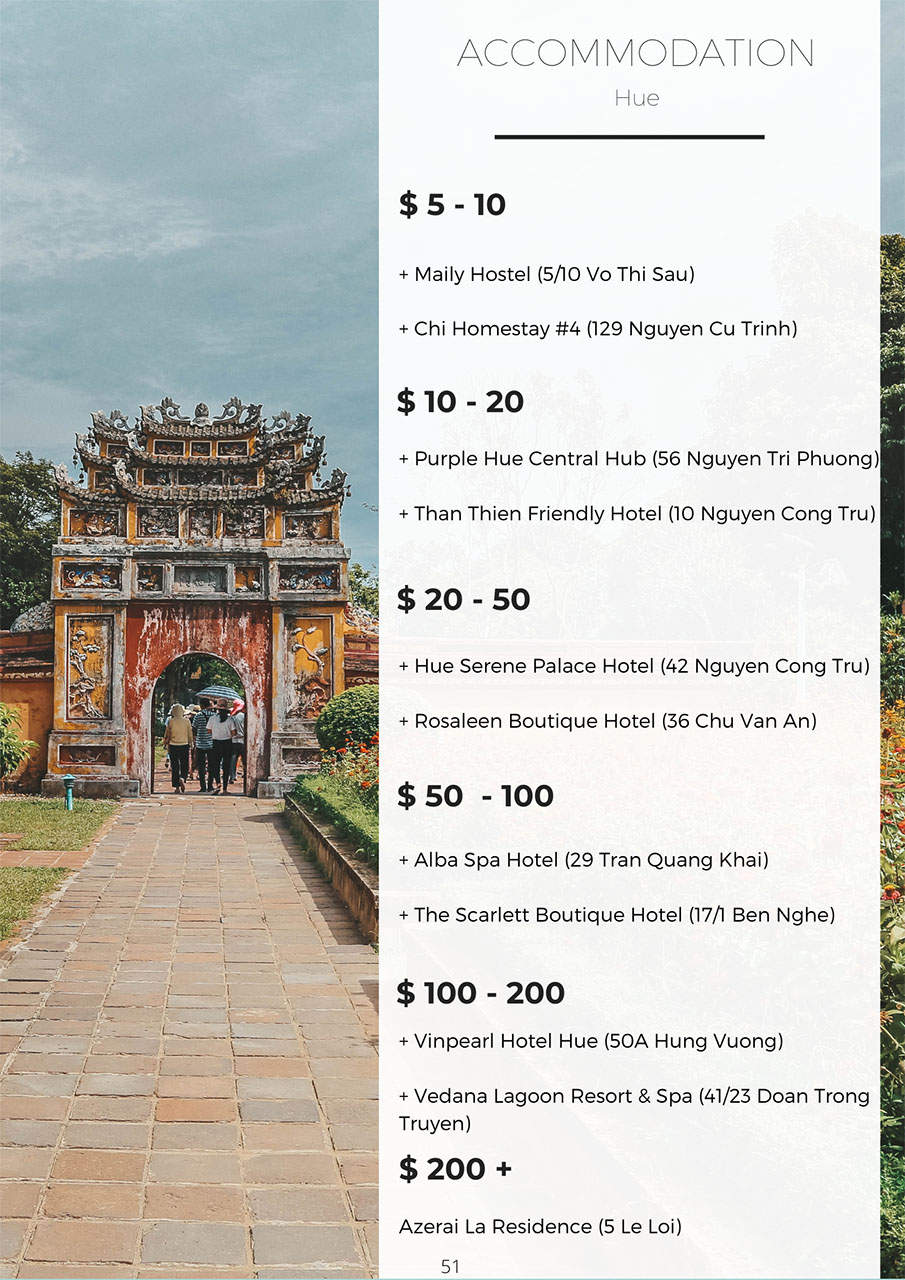
The most attractive destinations in Hue
Whether you are a lover of nature, mountains, or great architecture, the ancient capital always meets your expectations. We divide the list of destinations into two parts: Imperial Citadel of Hue and attractive destinations in Hue .
The Imperial Citadel of Hue
The Imperial City of Hue (Hoang Thanh Hue) is the place that you must explore first. This was the capital of the Nguyen Dynasty for 143 years, which was recognized by UNESCO as a World Cultural Heritage. With a total area of 520 hectares, the Imperial City of Hue is divided into two parts: one is mandarins and commoners, the other is the living and working place of the emperor. Here are some important monuments inside Hue Imperial City.
Entrance fee: 150.000 VND
1. The Flag Tower
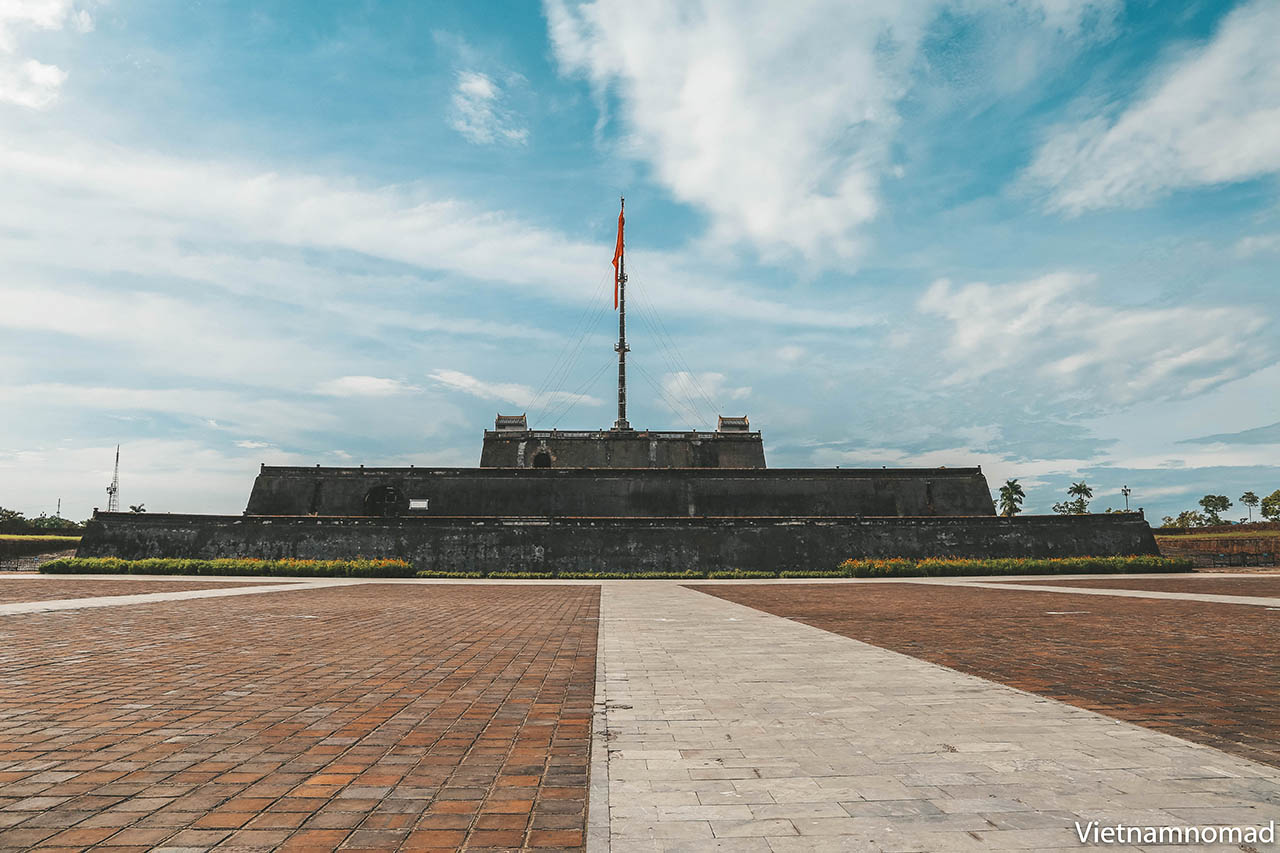
The Flag Tower is located in front of the Ngo Mon Gate, consisting of 3 floors stacked in order from big to small, built entirely of bricks. Along with the ups and downs of Hue Citadel, the Flag Tower also witnessed many important milestones of the country. In the Nguyen Dynasty, it was used to signal in all occasions. Today, the Flag Tower is considered a symbol of the ancient capital of Hue.
2. Ngo Mon Gate
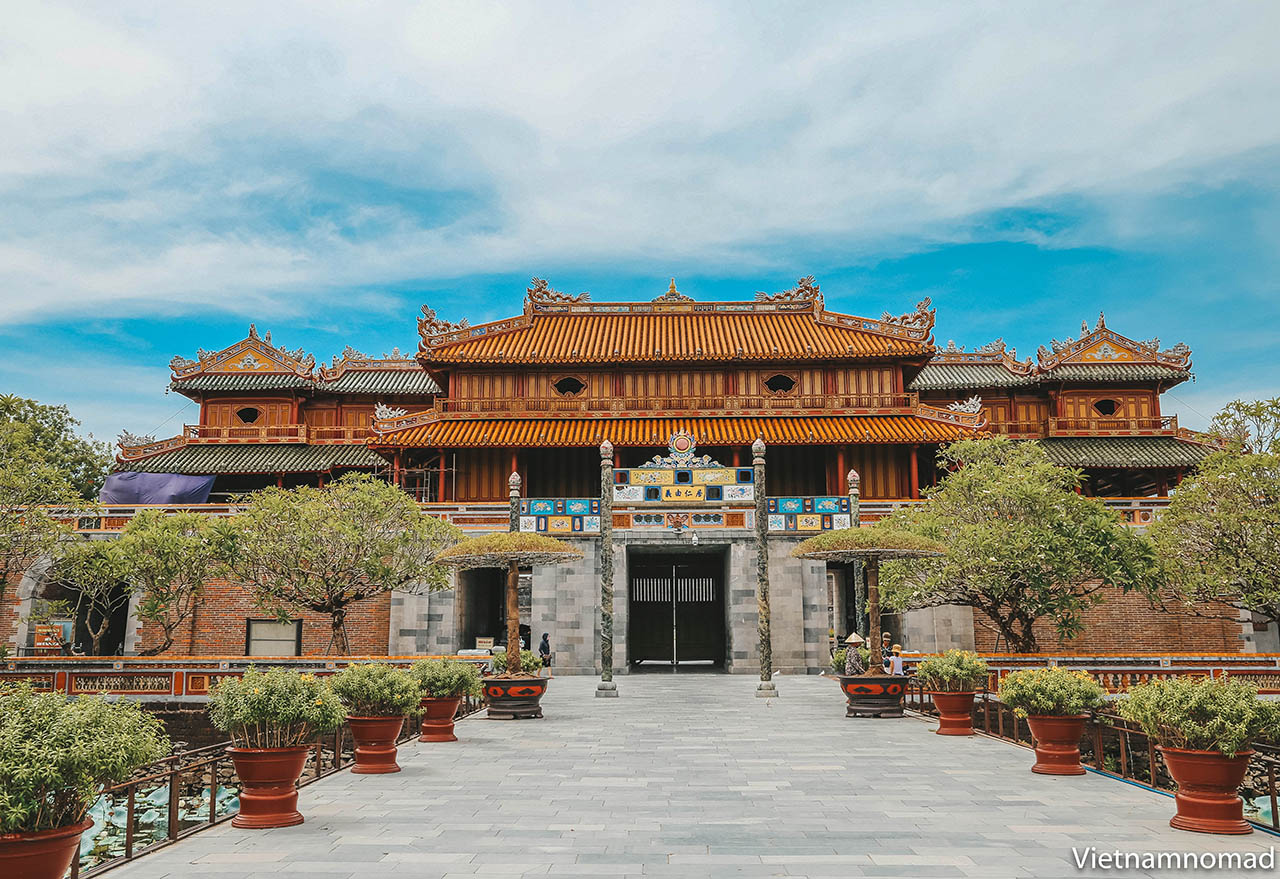
Ngo Mon is the main gate of the Imperial City, it was built during the reign of King Minh Mang, which only reserved for the King and ambassadors from other countries. Ngo Mon was not only the place where King Bao Dai proclaimed his abdication (in 1945) but also was the place for many other important ceremonies. Coming to Ngo Mon, you will once again recall the residence of the feudal court, living in a space imbued with the majestic history of Vietnam.
3. Thai Hoa Palace
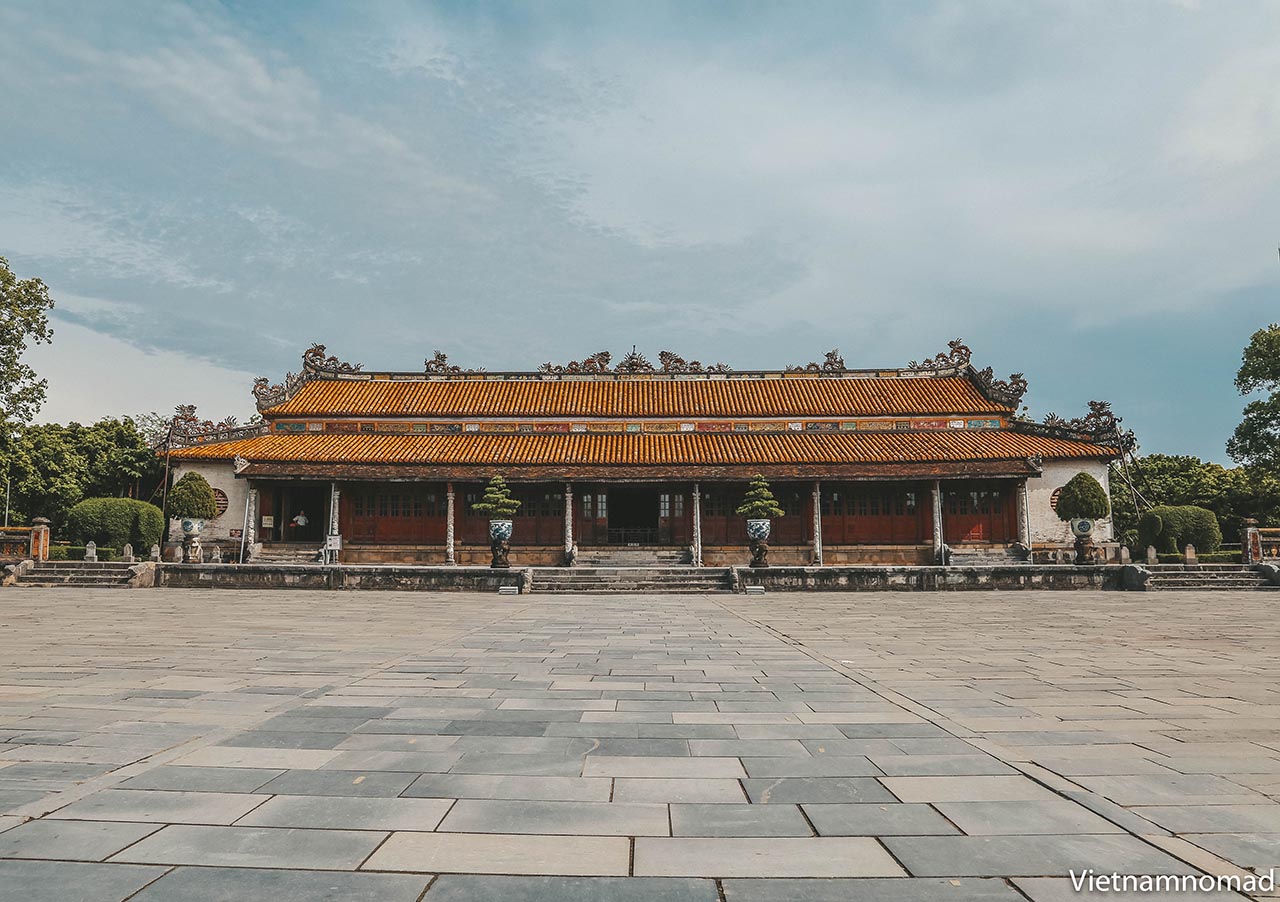
Thai Hoa Palace is considered as the heart of the Imperial City because it was where the seat of the throne – a symbol of the power of the Nguyen Dynasty put in. It was also the venue for important ceremonies such as coronation, the king’s birthday, and envoys.
4. The Mieu
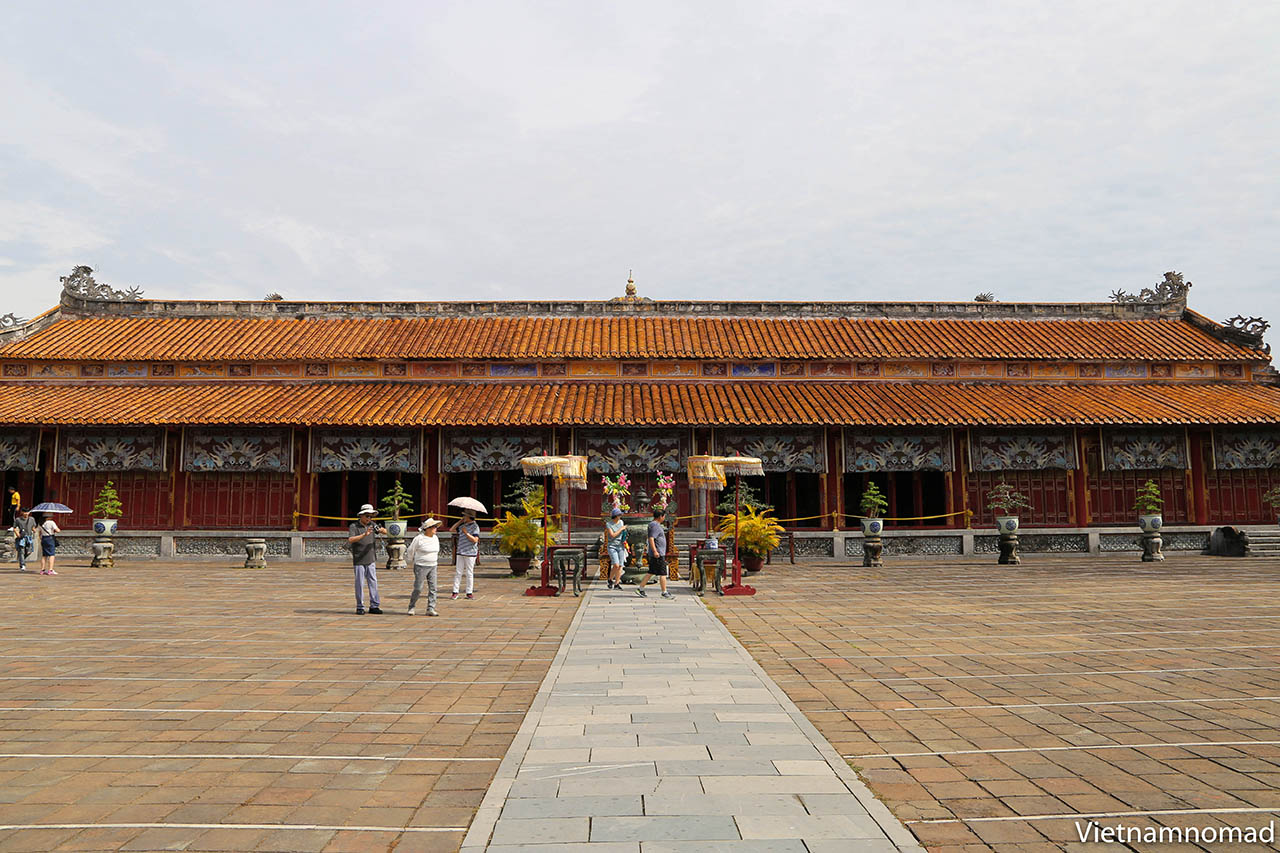
The To Mieu is often called The Mieu, located in the southwest of the Imperial Citadel, which was the place to worship the Nguyen Kings, women in the court (including the Queens) were not allowed to attend these ceremonies.
5. Hung Mieu
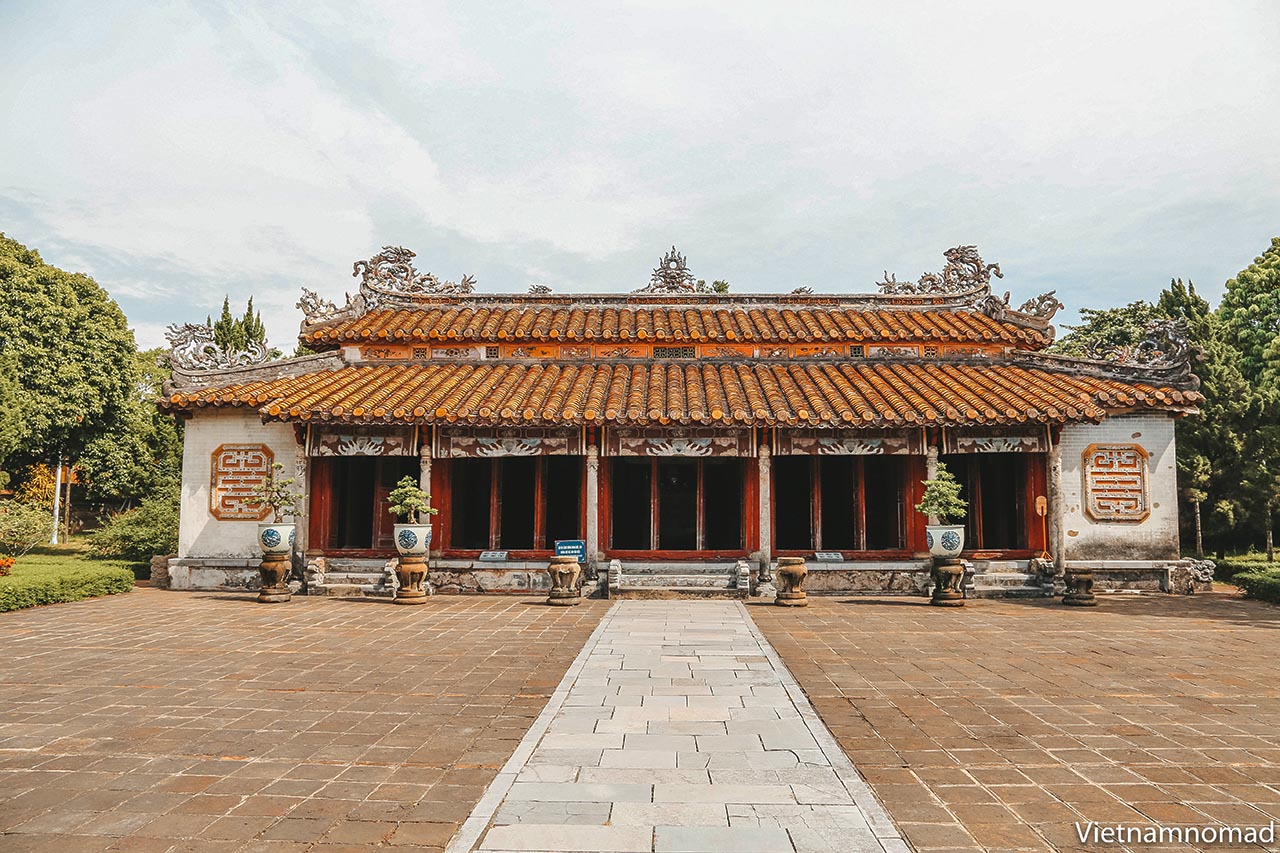
Hung To Mieu, also known as Hung Mieu, is a temple to worship the parents of King Gia Long (the King who established the Nguyen Dynasty) – Mr. Nguyen Phuc Luan (or Nguyen Phuc Con) and Ms. Nguyen Thi Hoan, which is located in the southwest of the Imperial Citadel (about 50 meters from The Mieu to the North).
6. Others relics
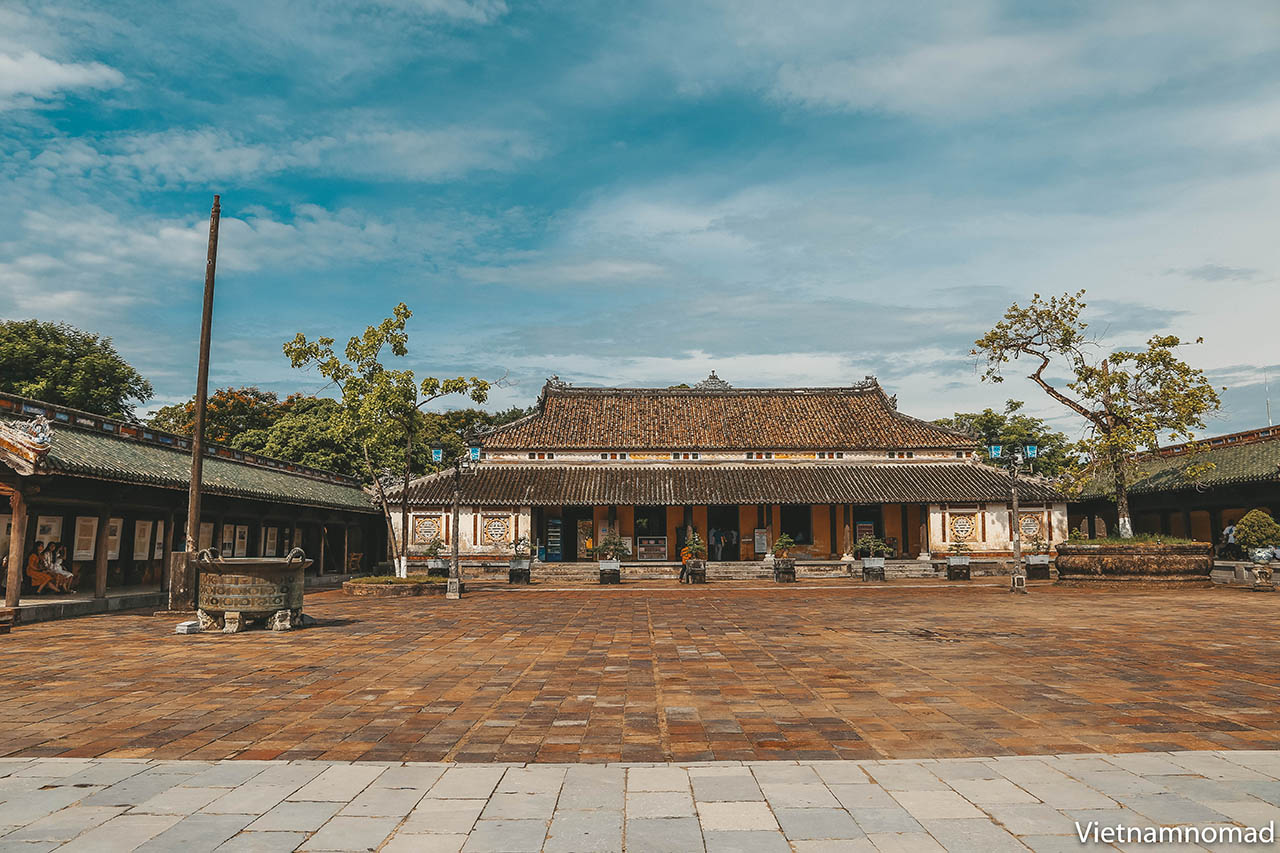
Long An Palace
Long An Palace was built in 1845, used as a resting place for the Emperors. This is an architectural work of art that combines architecture and elegant art decoration. Long An Palace is now Hue Imperial Antiques, preserving royal artifacts. Come here; you will have a closer look at the golden life in the past.
Phung Tien Palace
Phung Tien Palace is a temple located near Chuong Duc Gate, in front of Cung Dien Tho which was built by King Gia Long and King Minh Mang to worship Nguyen Kings. Unlike The Mieu, this palace also worshipped Nguyen Kings and Queens, but women in the court were allowed to come here.
Hien Lam Cac
Hien Lam Cac was built in 1821 and completed in 1822 during the reign of King Minh Mang, which is the tallest building in the Imperial Citadel. This is considered a memorial to remember the merits of the Nguyen Kings and the great ministers of the Nguyen Dynasty.
Attractive destinations in Hue
In the downtown area, besides the Imperial City, there are still many famous tourist destinations. Let’s explore each in turn.
1. Thien Mu Pagoda

Besides the Imperial City, Hue is also known as a land with many sacred temples, Thien Mu Pagoda is one of them. Thien Mu Pagoda is located on Ha Khe hill, right on Kinh Long street, about 5 km from the center of Hue city. The temple with ancient beauty, reflecting on the poetic Huong River, creates a very lyrical picture. Visiting Thien Mu, besides enjoying the scenery, you also have the opportunity to hear people retell the legendary stories about the history of temple building, and stories of love.
2. Seven royal tombs
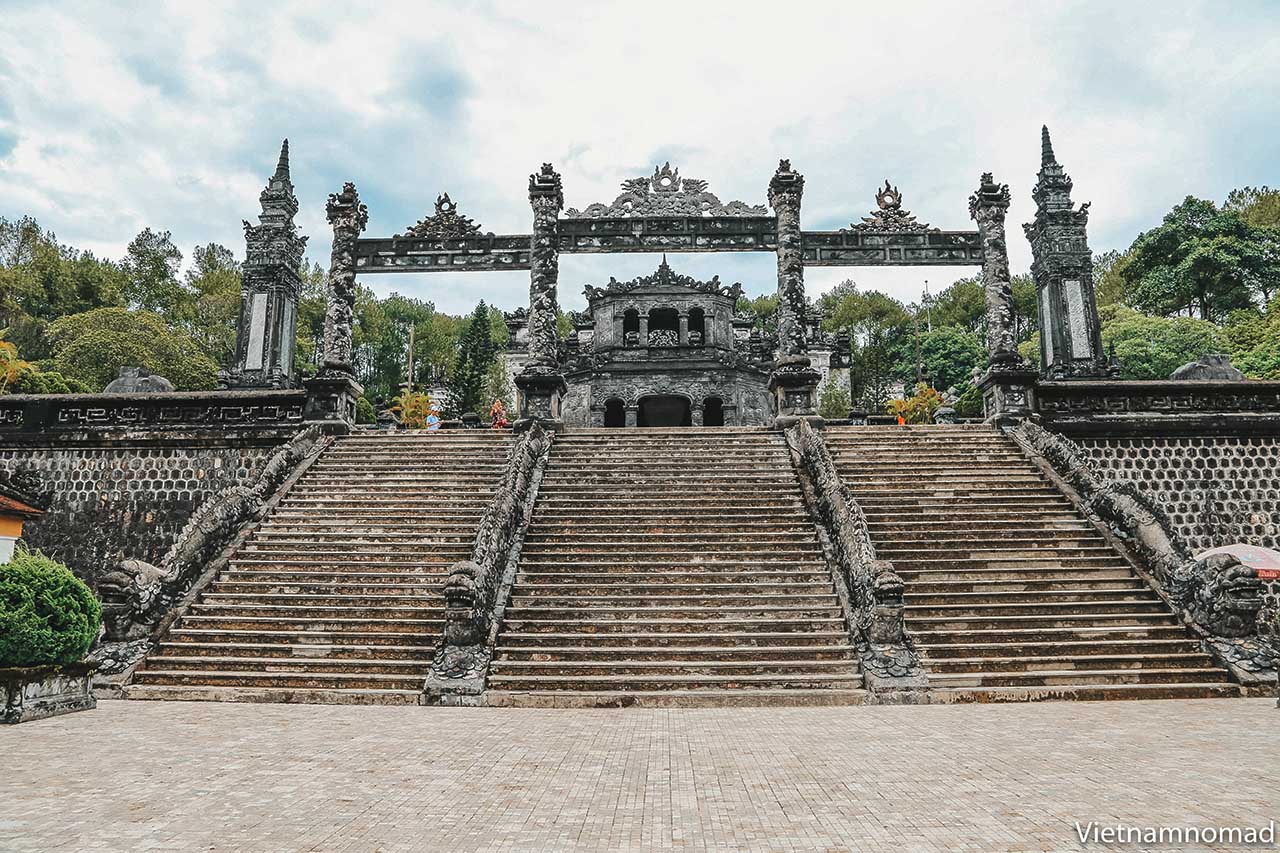
After the Imperial City of Hue, the tombs of the Nguyen Kings are places you should not miss. Currently, Hue has a total of 7 tombs: Tu Duc Tomb, Minh Mang Tomb, Khai Dinh Tomb, Gia Long Tomb, Duc Duc Tomb, Thieu Tri Tomb and Dong Khanh Tomb. Each building has its own architecture with intricate carvings. But of which Khai Dinh Tomb (image) and Tu Duc Tomb are the most prominent.
Khai Dinh Tomb
Khai Dinh Tomb or Ung Lang is the resting place of the 12th King of the Nguyen Dynasty, which is located in the Hue Monuments complex and was recognized by UNESCO as a World Cultural Heritage site in 1993.
Khai Dinh Tomb was built on September 4, 1920, by Le Van Ba, the pre-Admiral of the Army, who spent 11 years to complete it. Khai Dinh Tomb was built extremely featurely with the total length of such construction from 1920 to 1923. The entire tomb architecture was influenced by many schools such as Hinduism (tower-shaped pillar gate), Buddhism (stupa-shaped pillar), Roman Gothic architecture (octagonal columns, wide high arches).
The main work is harmoniously combined but still unique and separate. King Khai Dinh has traveled to many places to learn about new architectures and brought them in to build his tomb.
This famous tomb area was built with materials such as iron, steel, cement, and especially Ardoise tile, which were imported from France. All interior details in the three-nave in the palace, most of which was decorated with reliefs made of beautiful porcelain and glass pieces imported from Asian countries such as China, Korea, Japan.
Visiting the tomb of Khai Dinh, besides admiring the unique features of architecture and art of the Nguyen Dynasty, you also hear more historical stories, and immerse yourself in the cultural and historical space.
Address: Khai Dinh, Huong Thuy District.
Entrance fee: 100.000 VND
Tu Duc Tomb
If you only have time to visit a tomb in Hue, come to Tu Duc Tomb, which is 7 km from the center of Hue city. Come here; you will feel like you have just traveled back in time to the 19th century because this architectural complex of nearly 475 hectares is preserved intact.
Among 13 Kings of the Nguyen Dynasty, King Tu Duc was the most profound man in the Oriental educational background, and especially enjoyed poetry. When he died in 1883, the King left 600 essays, 4.000 Chinese poems, and about 100 Nom poems.
Tomb of Tu Duc, also known as Khiem Lang, was built when the King was still alive. This was where King Tu Duc rested, recited poetry, and enjoyed tea when he was tired, so the whole scene of Tu Duc Tomb is like a large park with nearly 50 buildings both in the impregnated area and the tomb. The architecture intertwines harmoniously with the lake, the mountains, and nature.
Tomb of Tu Duc was completed in 1867. With charming scenery, it is considered one of the most beautiful architectural works of the Nguyen Dynasty. Every day, Hue Traditional Art Theater organizes Ca Hue (Hue royal music) performance at Xung Nghiem Ta, part of Tu Duc Tomb. So come here, you not only admire this amazing work, but you also experience listening to Hue royal music.
Address: Thuong Ba village, Hue
3. Perfume River – Trang Tien Bridge
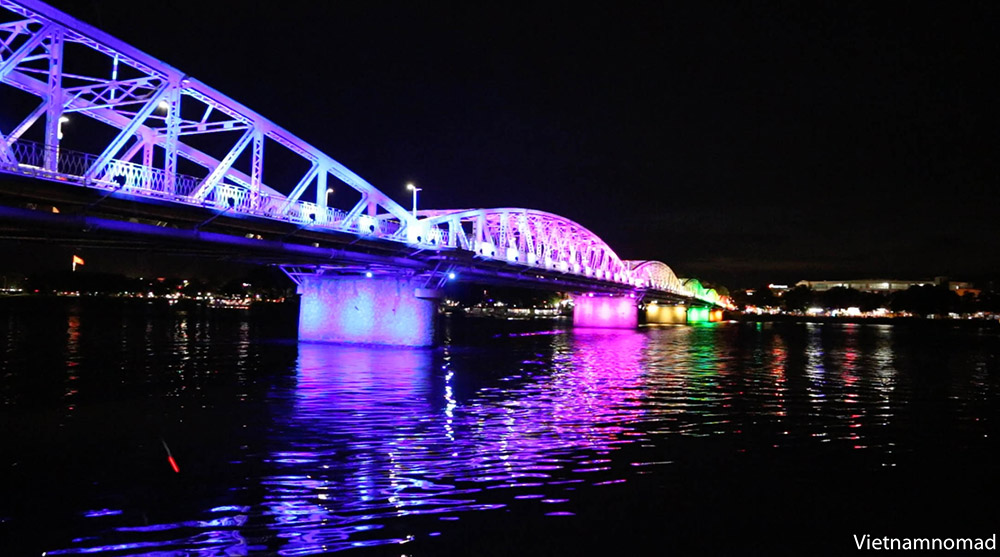
Perfume River (Huong River) is one of the five most attractive destinations in Vietnam voted by the Vietnam Record Organization. The poetic Huong River is considered as the symbol of Hue. Coming here, you can enjoy the peaceful scenery by boat. Especially at night, you can listen to the folk songs of Hue and watch the shimmering city light.
When you come to the Perfume River, do not forget to take photos at Trang Tien Bridge – also a symbol of the city and pride of the people. The bridge was built over 200 years ago and has become a panoramic view of the romantic city. The most wonderful time of Trang Tien Bridge is in the summer when the brilliant phoenix flowers bloom next to the bridge.
4. Dong Ba Market
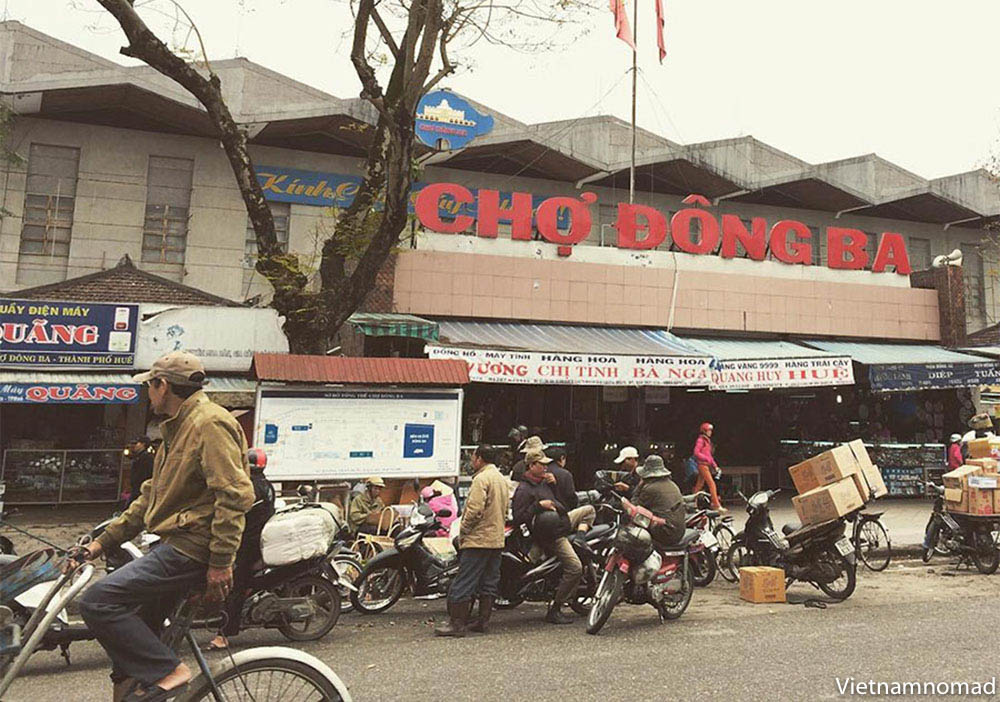
From Trang Tien Bridge, you walk 100 meters to the busiest market in Hue. The market sells a full range of goods, from food to everyday appliances. You can walk around the market, choose to buy some souvenirs such as conical hats, jewelry of Ke Mon village, and enjoy the specialties of this land.
5. The Beaches
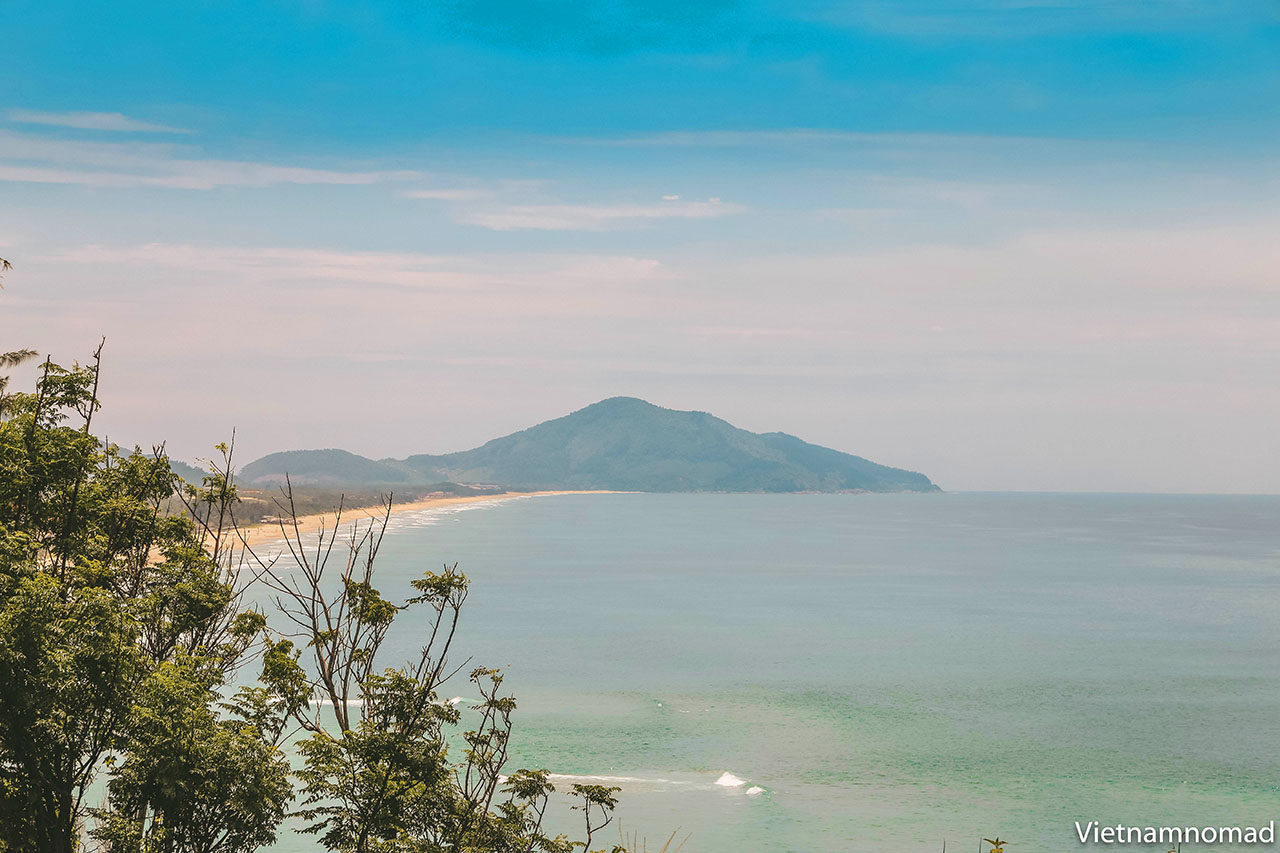
Hue has long been famous for its beautiful beaches, especially Lang Co Beach, which is one of the 10 most beautiful beaches in Vietnam .
Lang Co Bay
Traveling Hue does not forget to visit Lang Co Bay – one of the most beautiful bays of the world. Situated between the ancient capital of Hue and the prosperous city of Da Nang, embraced by the stunning Hai Van Pass, Lang Co is truly a tourist paradise with pristine natural beauty. Lang Co Bay is also one of the rare places with mountains, rivers, seas, islands, and lagoons. Many luxurious resorts here will give you a dream vacation, away from busy streets.
Thuan An beach
Thuan An is an ideal place for those who want to escape the heat of summer. The beach is about 12 km in length, famous for its gentle waves and fresh air. Coming to Thuan An beach, you can immerse yourself in the pure blue water or admire the surrounding scenery on the white sand. Catching the sunrise and watching the sunset in Thuan An beach are experiences you should not miss in Hue.
Canh Duong Beach
Canh Duong Beach is located in Canh Duong village, Loc Vinh commune, Phu Loc district, about 50km from Hue city center. Unlike Thuan An, this beach is so vast, suitable for camping overnight and holding barbecue parties with the freshest seafood here. If you intend to travel to Hue for a long time, you should try once to visit Canh Duong Beach.
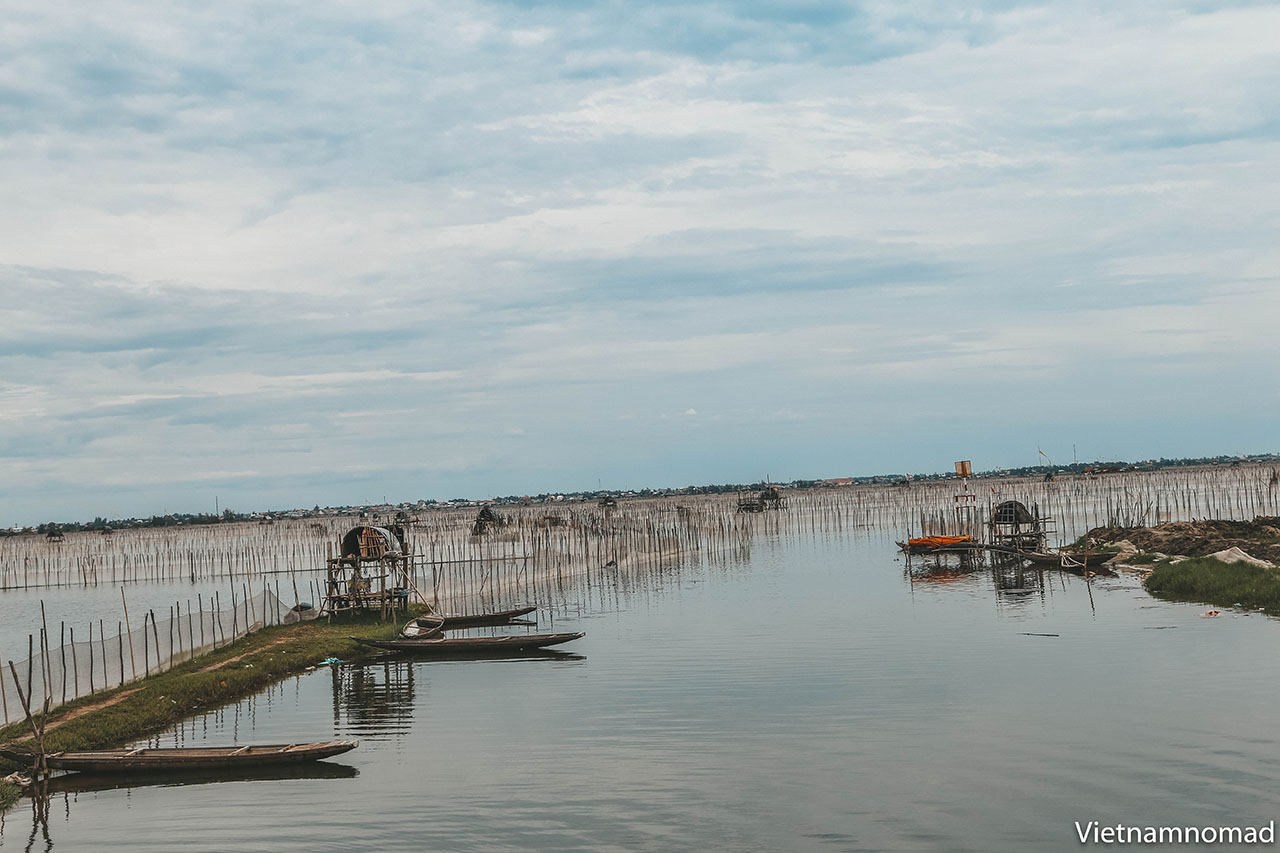
Hue is a land with many beautiful lagoons such as Tam Giang lagoon, Chuon lagoon and Lap An lagoon, each lagoon here has its own characteristics.
Tam Giang Lagoon
Tam Giang is the confluence of O Lau river, Bo river, and Huong river before flowing into the East Sea. Therefore, Tam Giang Lagoon is a symbol of the ecological environment in Hue.
Tam Giang Lagoon is the largest mangrove area in Southeast Asia, the water surface is 248.7 km2 wide, starting from O Lau estuary to Huong river mouth. Tam Giang lagoon has many aquatic animals, most of which are in Thuan An and O Lau, Bo, and Thuy Tu estuaries. Currently, 163 species of fish have been identified, many rare species such as sea bass, eel.
Chuon Lagoon
Chuon Lagoon in Phu Vang district has an area of over 100ha, located nearly 15 km to the East of Hue city center. It is a part of Tam Giang lagoon system with a fresh and peaceful atmosphere. The nature of Chuon lagoon is more beautiful in the early mornings and afternoons with colorful arrays.
Lap An Lagoon
Right next to Lang Co Bay is Lap An lagoon. Lap An lagoon, also known as An Cu lagoon, is surrounded by the great Bach Ma mountain range and the blue Lang Co beach. Coming here, you will not only be fascinated by the tranquility of mountains and rivers, but you will also enjoy the beautiful water diversion as in Nha Trang .
7. Others attractions
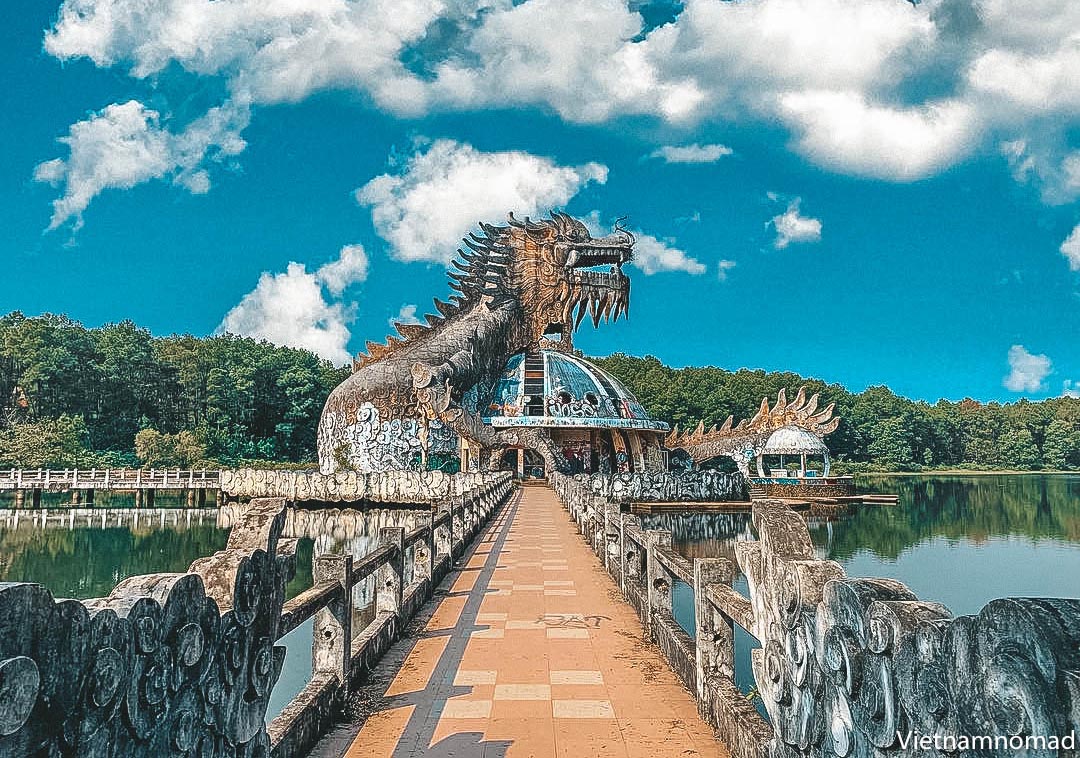
In addition to palaces, tombs, and lagoons, Hue is full of other interesting things waiting for you, maybe an abandoned water park, a majestic mountain and a famous poet’s village.
Thien An Hill – Thuy Tien Lake
Thuy Tien Lake is a place visited by many tourists, especially young recently. It is located near Thien An hill which is covered with a pine forest. Thuy Tien Lake is essentially an abandoned park. The entire campus is engulfed in desolation, covered with moss.
But the abandoned mystery of Ho Thuy Tien attracts many young people to visit and take photos.
Thuy Xuan Incense Village
Thuy Xuan Incense Village has located about 7 km from the city center. It is the largest incense village of Hue. People here live by making incense, providing incense to the whole city. Currently, this place has become one of the tourist attractions.
Visiting this village, you will have the opportunity to admire the colorful incense sticks. The craftsmen neatly arrange the incenses into bunches, radiating like beautiful flowers. Besides, you are also facilitated by people to learn and directly participate in making incense.
Phuoc Tich pottery village
Like Hoi An with Thanh Ha pottery village, Hue also has Phuoc Tich ceramic village. Phuoc Tich pottery village is located about 45 km north of the Hue center. It is famous for its many beautiful traditional ceramic products. Today, Phuoc Tich ceramic products have been present in the lives of the people of the homeland and the regions of the land of Thuan Hoa. The special thing that makes this village attractive and famous is thanks to its unique architectural art from sculpting and carving on wooden frames.
Bach Ma National Park
If you like conquering nature, Bach Ma National Park is the place for you. On the way to Bach Ma National Park, you will see Hai Vong Dai – the highest point, where you can capture the whole surrounding bay. When exploring deep inside Bach Ma National Park, you can also witness the spectacular Ngu Ho stream pouring from above or Do Quyen waterfall filled with flowers.
Located at the foot of the Bach Ma mountain range, Truoi lake also brings the dreamy beauty typical of Hue. Truoi Lake is primarily an irrigation work, but thanks to the mountains, Truoi Lake has become a place to avoid the sun in the summer.
Near Truoi lake is Truc Lam Bach Ma Zen Monastery, of Truc Lam Yen Tu sect. Visitors who want to visit the monastery must take a ferry to go there, then taking 172 steps to reach the three-door gate. It is like a small challenge, but in return, waiting for you will be the scene of a peaceful lake surrounded by enchanting mountains.
Must-try dishes in Hue
Not only famous by the ancient poetic beauty but also makes visitors admired by the rich cuisine. Here are some must-try dishes in Hue.
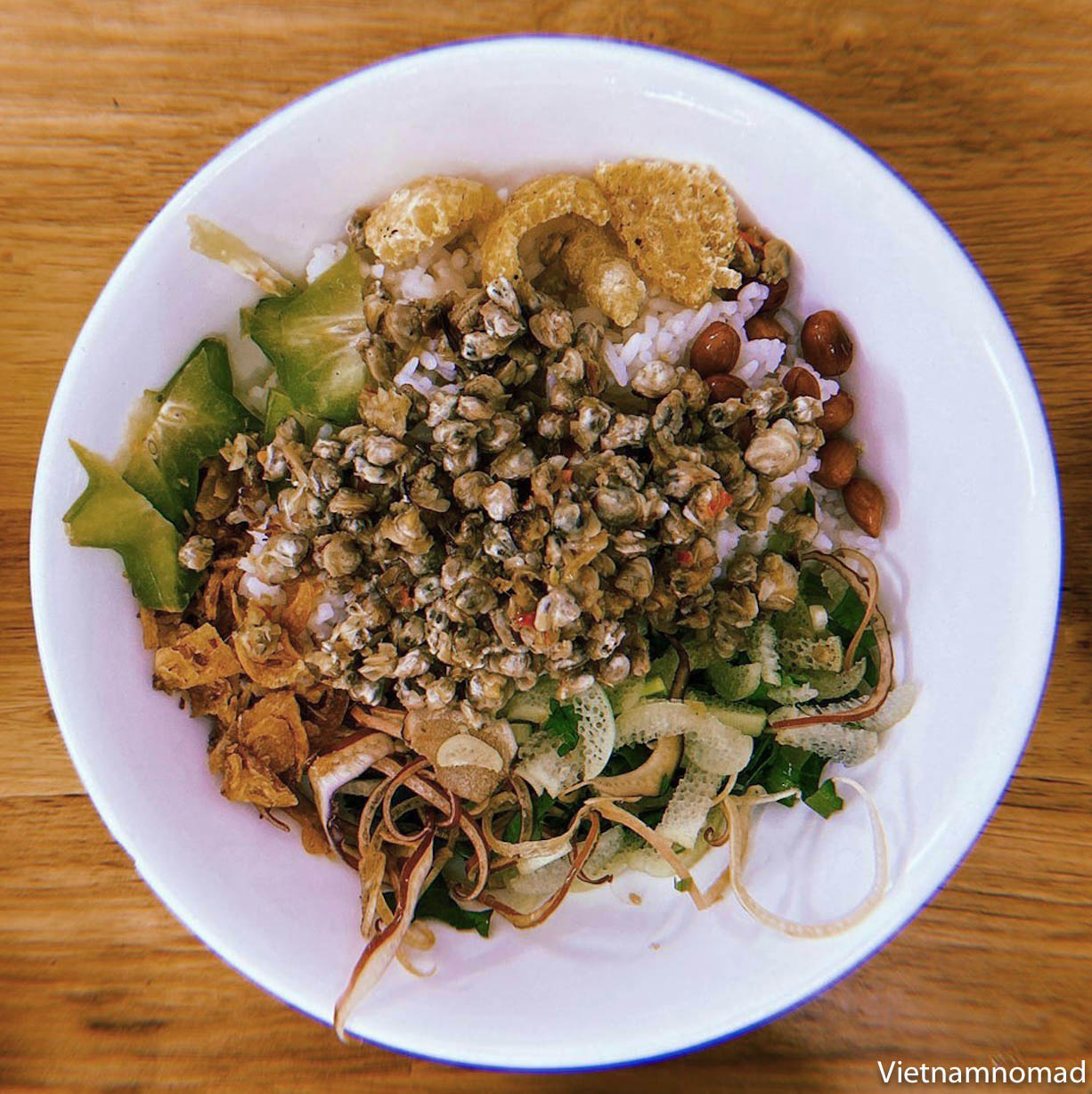
As a famous specialty of Hue, but the Com Hen (mussels rice) and Bun Hen (mussels noodle) are incredibly inexpensive. Sweet and fresh mussels meat is fried and flavoured served with a cup of mussel soup, raw vegetables, pork rind, and shrimp sauce. It is not hard to find these dishes in Hue because they are sold in many restaurants or food vendors.
But for the right taste, you should try it on Nho Restaurant at 28 Pham Hong Thai, or the second address in Con Hen, Vi Da Ward.
2. Bun Bo Hue
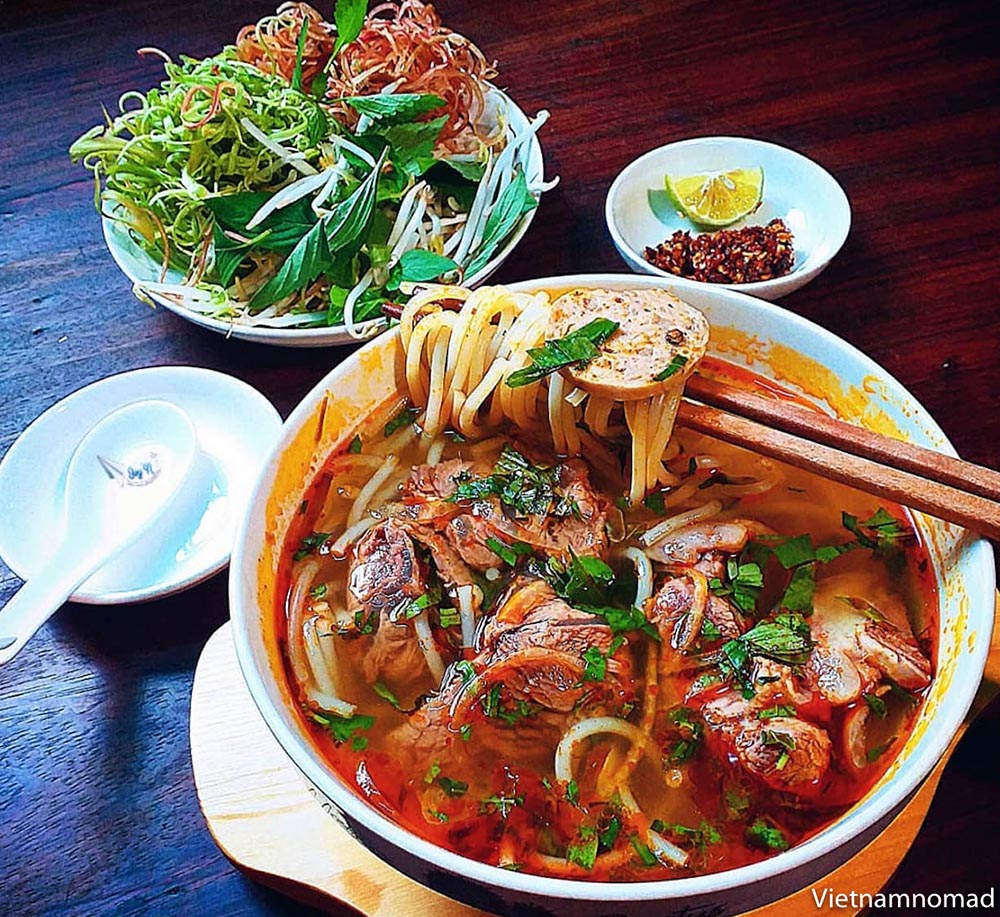
Although Bun Bo Hue (Hue beef noodle) is not too strange in other provinces, Hue beef noodle has an entirely different taste. Hue beef noodle is listed in the 50 most delicious dishes in the world. A bowl of beef noodle soup must have a piece of soft pork leg, a few slices of fresh beef served with spicy soup. Don’t forget to eat with a plate of delicious fresh vegetables.
Some suggestions for you to enjoy Bun Bo Hue:
- O Phuong, address: 24 Nguyen Khuyen, Phu Nhuan Ward
- Bun Bo Cam, address 38 Tran Cao Van, Phu Hoi Ward
- O Hoa, address: 162 Mai Thuc Loan, Thuan Thanh Ward
3. Hue Cakes
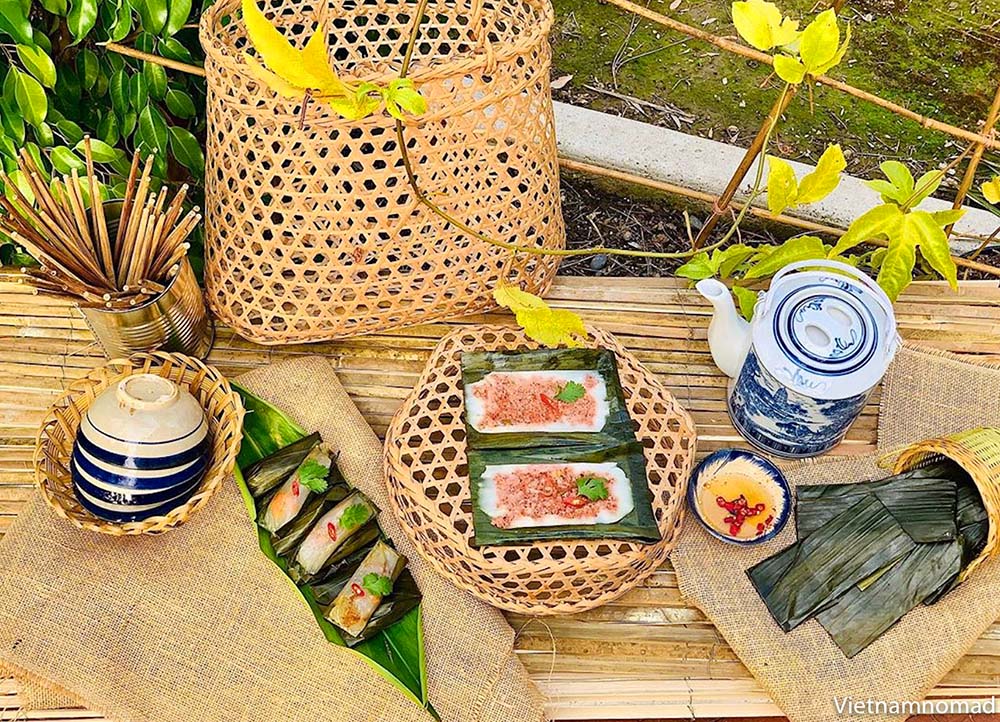
Some types of cakes such as Banh Beo, Banh Nam, Banh Loc, Banh Khoai are simple, but they look so attractive. You can eat these cakes at any time like a snack or a main course and mixing them as you like. These cakes are sold on many food stalls, but you should try it at Nguyen Binh Khiem Street, Le Huan Street, the food court in Dong Ba Market, and Tay Loc Market, which are very cheap (under 1 USD).
4. Banh Canh
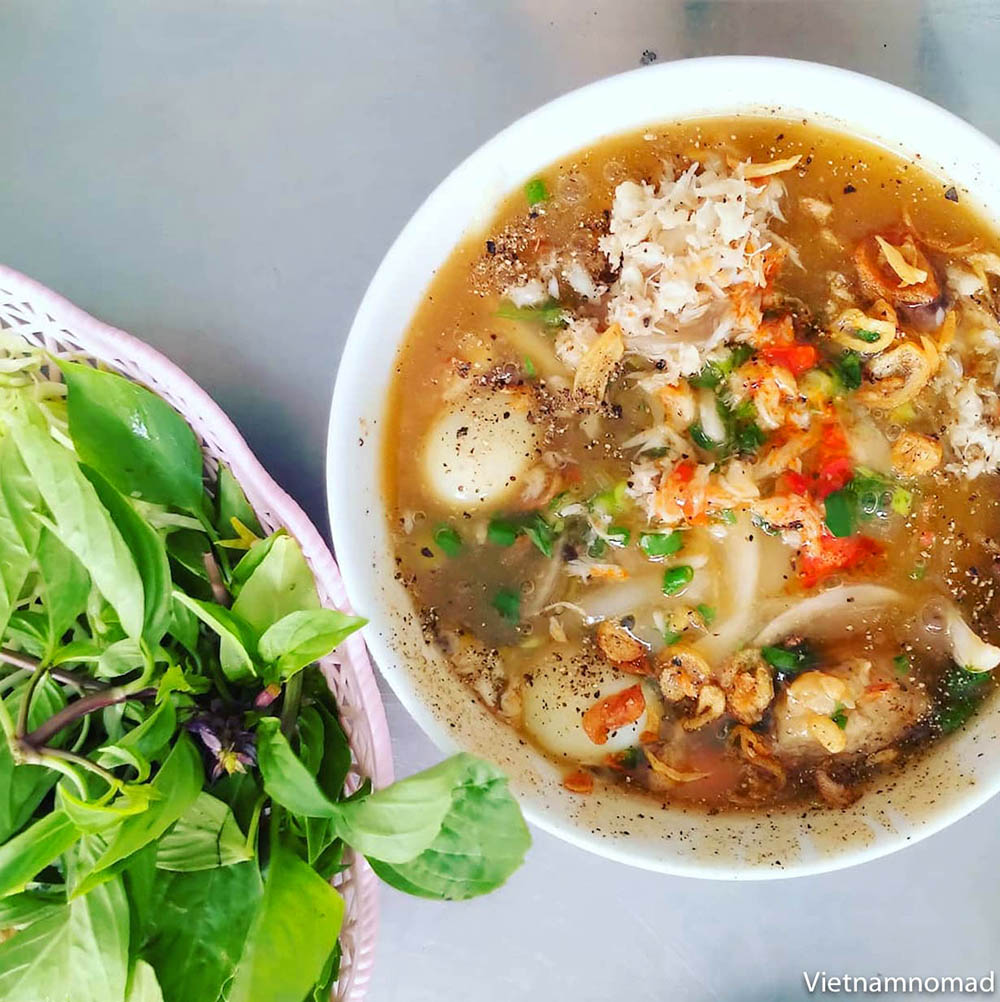
In the list of certain dishes to try when coming to Hue, it is impossible not to mention Banh Canh Nam Pho (Nam Pho spicy noodle soup). You will be impressed with the special bowl of red-orange soup with crab pies. Despite being popular, this soup dish is made meticulously and very carefully. To enjoy the perfect taste, eat while it is still hot, add some pepper and chilli. Each strand of soft soup noodles combined with the sweetness of the crab rolls creates a great delicacy.
Some suggestions for you:
- Thuy, address: 16 Pham Hong Thai, Vinh Ninh Ward
- Banh Canh Nam Pho, address: 54 Nguyen Cong Tru, Phu Hoi Ward
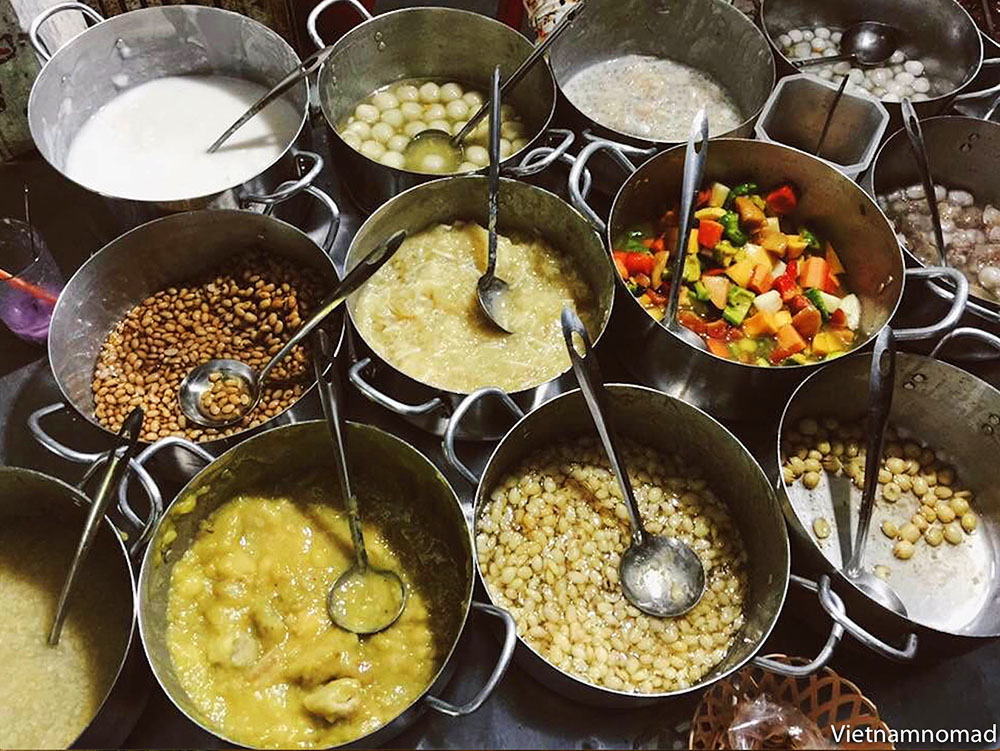
You would think that Che (sweet soup) is everywhere in Vietnam, but Che Hue (Hue sweet soup) is entirely different. Hue has up to 36 types of sweet soup; each has its own delicious and attractive flavour, all are delicately processed. Some of the most famous Hue sweet soups you must try are sweet corn soup, and rice ball sweet soup.
Hue sweet soup is not famous for its sophisticated, delicious but also very cheap. It’s costs only from 7.000 – 15.000 VND/ cup, which is sold in every corner of Hue, especially in the Dong Ba market.
Annual festivals and cultural experiences in Hue
The unique feature of Hue culture is a harmonious combination between folklore and royal culture. Several typical festivals have contributed to creating a distinctive and unique feature of Thua Thien Hue tourism.
1. Hon Chen Temple Festival
The festival takes place twice a year in February and July. Hon Chen Palace Festival is held on Ngoc Tran Mountain and Hai Cat village in Huong Tra District. The festival of worshiping Thien Y A Na, the Holy Mother, who created the land and taught people how to cultivate.
It is a folk festival in Hue with many unique rituals creating a sacred religious atmosphere amid romantic and charming natural scenery, so it attracts thousands of visitors to attend.
2. Wrestling festival of Sinh village
Sinh Village is located on the south bank of Huong River in Huong Phu District. Every year, on 10 January of the lunar calendar, the furnaces in the region sobbing to the wrestling festival of Sinh village to compete for a prize.
This festival takes place in a very crowded hustle and bustle. Thousands of young men and women from different districts in Hue flock here to watch the competition.
The wrestling festival of Sinh village has been a good tradition of Hue people for many centuries.
3. Hue Festival
Hue Festival is a major national cultural tourism festival to strengthen cultural relations with other countries participating in the festival through the introduction of Vietnamese cultural identity.
As one of the major festivals, the Hue Festival has many unique cultural programs that are held in large spaces both inside and outside the city in order to revive the cultural values of Hue.
Many special programs must be mentioned such as Royal Night, Ao Dai Festival, Sea Festival, and Kite Flying. Hue Festival is also one of the reasons making Hue become a favorite destination for many domestic and foreign tourists.
unique cultural experiences you must try in Hue
1. Listen to Hue folk songs on Perfume River
If you have not heard of Hue folk songs on Perfume River, likely, you have never been to Hue. Hue folk songs is a unique art form of Hue people, preserved and developed over hundreds of years. Therefore, visitors to Hue, besides visiting the temples and tombs of Hue, everyone wants to once rest on the side of a dragon boat to listen to the deep and sweet Hue folks songs sung on the Huong River.
2. Enjoy Hue royal refined music
Hue royal refined music- Intangible Cultural Heritage is a scientific form of music that UNESCO was named in the List of intangible masterpieces and oral traditions of humanity on November 7, 2003.
Hue royal refined music has a history dating back to the 13th century, the monarchs of Vietnam attach great importance to and develop it as a symbol of the kingship of the reign and prosperity of the Dynasty. Hue royal refined music’s way of performing is very tight, highly aesthetic, which can reflect the ideas and philosophical conceptions of the contemporary monarchy.
Hue is developing Hue royal refined music to attract domestic and international visitors. So if you have the opportunity to visit Hue, please visit the ancient theater Duyet Thi Duong. This is the venue for Hue Royal Music performance for visitors to enjoy.
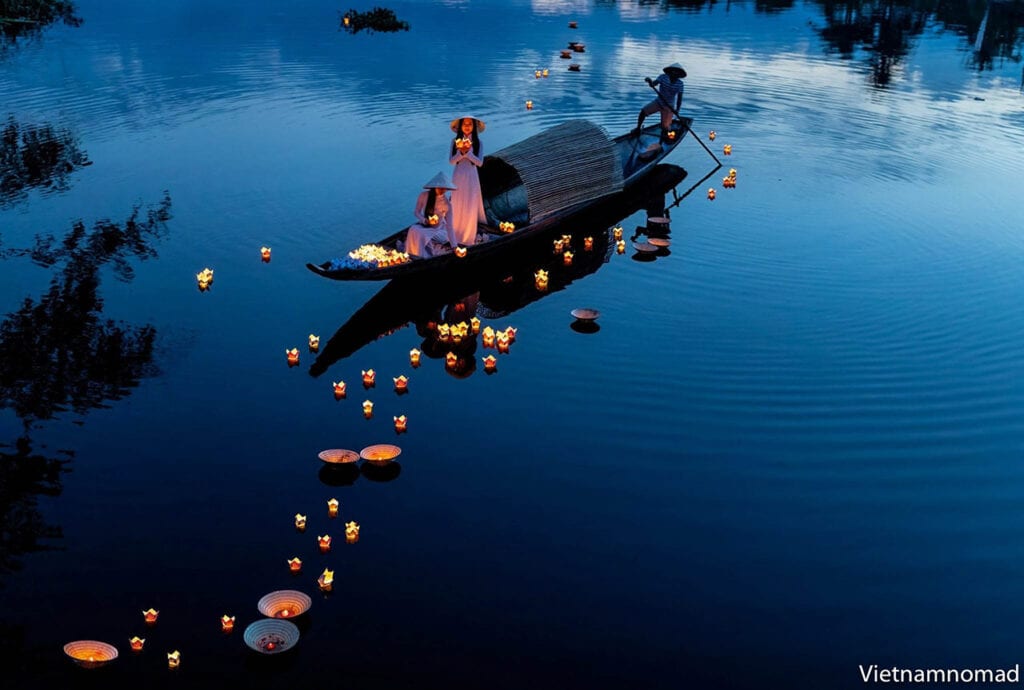
Above is the detailed Hue travel guide. Hopefully, you will have the most memorable experience in this beautiful city.
Meet in Hue!
Related Articles
Hai van pass, mui ne, phan thiet.

Top Destinations
Travel guide.
- Best places
- Best dishes
- Vietnam visa
Helpful Resources
- Map of Vietnam
- Tourist maps
- Accommodation
- Privacy policy
- Our community
- Partner with us
© 2024 Welcome to Vietnam. All rights reserved.
This website utilizes cookies to improve user experience, analyze website performance and traffic, and deliver personalized content for marketing and advertising purposes. Privacy policy .
Travel, Hiking, Food
2 Days in Hue: The Ultimate itinerary on how to see the best Hue tourist attractions
Have 2 days in hue and wondering what hue tourist attractions to see this essential two day hue itinerary shows you the best things to do and eat in hue, vietnam..
Hue is a historical city in Central Vietnam that is a must-visit for history buffs. With its imperial past, breathtaking architecture, and delicious local food, Hue offers a royally fun experience and should be added to any Vietnam itinerary .
Hue served as the seat of power for the Nguyen Dynasty, Vietnam’s last ruling family, from 1802 to 1945. The city’s imperial legacy is evident in its magnificent citadel, royal tombs, and ancient pagodas. Moreover, its picturesque setting along the Perfume River adds to its charm, making it a perfect destination for pretty much anyone who wants to experience this ancient and historically important city.
While many people visit Hue as a day trip from Hoi An , I truly think you can appreciate Hue a lot more if you spend 2 days there and explore on your own.
With two days in Hue, you can discover the best attractions and things to do in this former imperial capital as well as some Instagram worthy photo spots. This super detailed Hue itinerary and travel guide also shows you other useful information to help plan your trip.
This blog contains occasional affiliate links, where I receive a small commission on sales of the products/hotels that are linked at no additional cost to you. In addition, as an Amazon Associate, I earn from qualifying purchases .
General Hue Pre-Travel Information You Should Know
- Currency : Vietnamese Dong
- Don’t forget your Vietnam Visa before traveling
- Whatsapp is your best friend. Hotels, taxi drivers and tour guides use Whatsapp to contact you
- Credit Card can be used at Hotel and some restaurants
- You need cash to pay for attraction tickets, taxi drivers (if not already pre-paid), food at markets, and other smaller restaurants
- Download Grab app before you land in Vietnam. It works the same way as Uber
- Get a Vietnamese Sim card ahead of time as the attractions in Hue do not have wifi
- Consider getting travel insurance especially if you are planning to ride a scooter around Hue
Where is Hue and How to Get to Hue?
Hue is a city in Central Vietnam and the capital of the coastal province of Thua Thien Hue. It is about 2 hours northwest of Da Nang, another major city in Central Vietnam.
It is easy to get to Hue from different parts of Vietnam since Hue is well connected by train and air. There is an airport in Hue with the code HUI, making it convenient to fly there.
Below are some examples of how to get to Hue from different cities in Vietnam:
Hoi An to Hue
Hoi An is about 130 km (81 miles) from Hue. You can take a car or bus from Hoi An to Hue directly or you can take a bus to Da Nang then take the train from Da Nang to Hue.
You can book train, bus and shared van tickets here .
- By private car or shared van: ~3 hours. Private car costs VND 900,000 ($40 USD) and shared van costs VND 300,000 ($12 USD)
- By bus: ~3 hours, costs about VND 170,000 – VND 200,000 ($7 – $10 USD) in a day time sleeper bus. There are luxury and non-luxury sleeper buses.
- By train: There is no train station in Hoi An, so you will need to take a bus from Hoi An to Da Nang first, then take the train from Da Nang to Hue
Da Nang to Hue
Da Nang is more north of Hoi An, so it takes a shorter amount of time to travel from Da Nang to Hue. Da Nang is about 90 km (56 miles) from Hue, making it a super easy trip.
- By private car or shared van: <2 hours drive. Private car costs about $45 USD (maybe less if you ask your hotel to book one), and a shared van costs $10 USD. You can book a shared van here or here .
- By bus: it takes much longer to get to Hue on a sleeper bus from Da Nang and they cost between $7 USD – $10 USD. It probably is better to just take a shared van if the cost is not too different. You can check the bus costs and options here .
- By train: 2.5 hour train ride with Vietnam Railways and costs between $6 – $8 USD (depends on train class).
The most scenic route from Da Nang to Hue is to take a car or bus since the drive will be through the famous Hai Van Pass along the coast, so you will have a beautiful view part of the way. If you hire a private driver you can probably request the driver to stop at the beach and various other spots and make the trip a fun drive!
Hanoi to Hue
Hanoi is in Northern Vietnam so it would take a lot longer to get to Hue from Hanoi. The most direct way is to fly from Hanoi to Hue, it takes about 1 hour to fly and costs around $50 – $100 USD. We took Vietnam Airlines and it was very smooth and fast and costed about $50 USD.
- By train: about 14 hours. Costs between $22 – $80 USD depending on the train you take and what class and how many people are in a cabin. Check prices and options here . Sleeper trains would make the most sense so you don’t waste the whole day on a train.
- By Bus: also about 14 hours. Costs between $20 – $30 USD depends on whether it’s a luxury sleeper bus or not.
Read Next : The ultimate guide to taking a sleeper train in Vietnam .
How to Get Around Hue
Hue is a decent sized city in Vietnam. Although not as big as Hanoi or Da Nang, it is not possible to walk everywhere in Hue.
Many people suggest renting a bike (and by bike I think they mean small motorcycles) to ride around Hue. It is probably the most convenient way to get around Hue and the surrounding areas (note that all the royal tombs are in the outskirts of Hue). If you are renting a bike you should consider getting travel insurance !
However, you should only attempt to ride a motorbike in Hue if you are very comfortable with it. If you are from the US like me and have never touched a motorbike before, I really do not suggest riding one as it can get quite overwhelming fast!
With riding a bike out of the question, the other two options to get around Hue is to either book a tour or hire a private transfer or take Grab to take you around.
The best tour website for Hue is Klook , as they specialize in tours in Southeast Asia. They are highly reliable with cheap prices and offer so many different options for tours to fulfill your needs.
We used a combination of Grab (works like Uber) and private transfer for our two days in Hue. We used Grab when we first arrived in Hue to take us to the Imperial Palace and dinner.
You should set up the app before arriving in Vietnam. You should definitely bring some cash with you just in case your credit card doesn’t work with the app (mine did with an American credit card).
Private transfer is great for taking you to various spots on the outskirts of Hue, so you can customize what you want to see in whatever order you want to see it.
We had a private transfer to take us around the second day and it was great! We could spend as long as we wanted and not have to worry about making other people wait for us.
What Months to Visit Hue
The best time to visit Hue is during the dry season from February to April . The worst time to visit Hue is during the rainy season from August to December as well as the Tet holiday since attractions will be closed.
Even when you visit Hue in February or March, it is possible you may encounter rain, but it generally would not be a downpour like it is in September and October.
Below is the average temperature and rainfall level in Hue throughout the year.

We visited Hue at the end of February and it rained the first day (just slightly), and it was super hot and sunny on the second day, so you can get very different weather.
Keep in mind that if you visit April to May the weather will be pretty hot and humid. Even on a sunny day in February we ended up feeling really hot and sweaty under the sun.
Read Next : The Ultimate 10 day Vietnam itinerary and travel guide
Where to Stay in Hue
One of the most important things to decide when visiting Hue is where to stay. Unlike Hanoi or Hoi An, there is no “Old Quarter” or “Old Town” with a concentration of hotels for tourists in Hue.
In addition, most attractions in Hue are quite far from the city (with the exception of the Imperial Citadel), so it is a little hard to figure out the one best area to stay in Hue.
This and this are the best hotel booking site for Hue. These two are my go to sites for Asia travels and I compare prices on both to see which is cheaper.
Based on our research and personal experience, the areas I highly recommend in Hue are near the Citadel or the south side of Perfume River where many bars and restaurants are.
Hotels near the Imperial Citadel that I would recommend include Le Robinet Homestay and Spatel d’Annam (more luxurious). Both of these hotels are within walking distance to the Imperial Citadel.
Hotels South of Perfume River : We stayed at Melia Vinpearl , which is probably in the tallest building in Hue. The rooms were super nice and the hotel has excellent breakfast and a pool. We were able to easily get a taxi and Grab to the imperial citadel and the restaurant and bar area south of Perfume River.
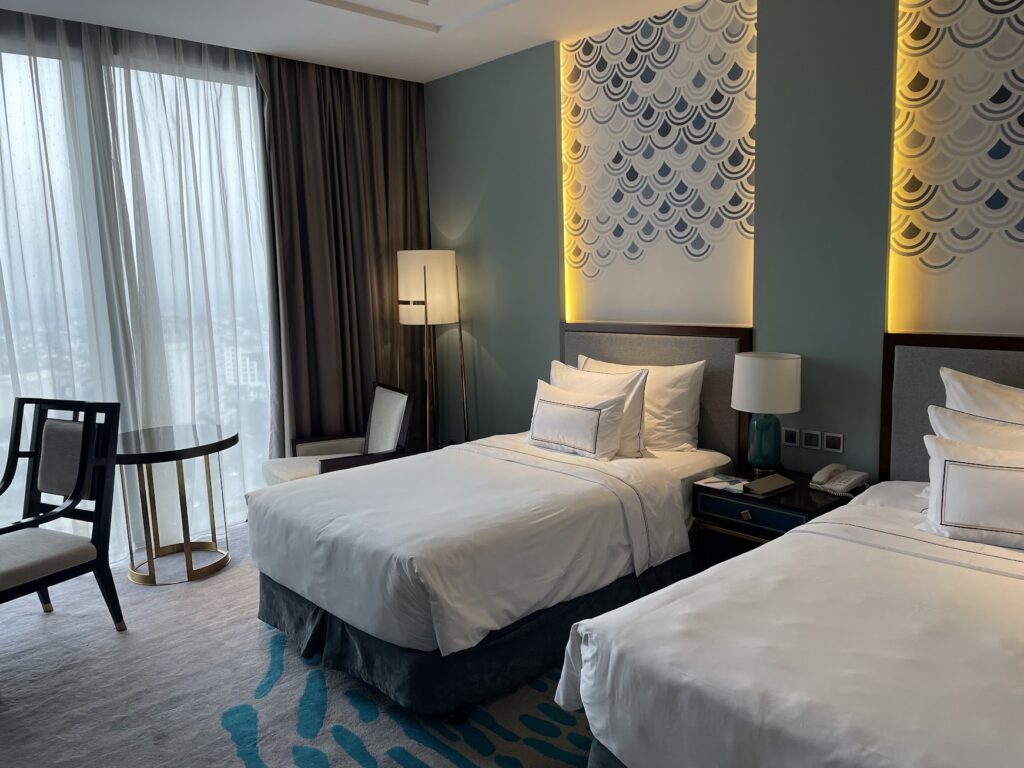
Other hotels I would probably stay at if I were to visit Hue again would be Jade Scene Hotel , located within walking distance to restaurants and bars.
How Many Days in Hue Do You Really Need
Hue is a great destination for both international and local tourists and it totally deserves more attention from visitors than it currently gets. There is a lot to see in Hue especially if you like history and ancient architecture.
You need at least 1.5 – 2 days to see the main attractions of Hue . 3 to 4 days in Hue is also recommended for anyone who likes a slow pace and wants to explore the off-the-beaten paths places (or simply just relax) in Hue.
Read Next : Is Halong Bay Worth It? A Complete Halong Bay Cruise Guide
Best Hue Attractions For This 2 day Hue Itinerary
Depending on your pace, you can do as many as 4 attractions a day while in Hue or as little as one to two things. If you are really into history and architecture, it may be worth it to take it slow and fully explore and learn the history behind everything you see.
Overview of 2 day Hue itinerary Day 1 in Hue : – Thien Mu Pagoda – Hue Historic Citadel – Dong Ba Market Day 2 in Hue : – Abandoned Water Park – Khai Dinh Tomb – Minh Mang Tomb – Tu Duc Tomb
Day 1 – Explore the essence of Hue in the City Center
Thien mu pagoda.
Thien Mu Pagoda, also known as the “Pagoda of the Celestial Lady,” is one of the most iconic sites in Hue. The Pagoda complex is located on the northern bank of the Perfume River, about 10 minutes drive (5 km) west of the Hue Historic Citadel.

Legend has it the celestial lady Thien Mu appeared in a dream and said that a Buddhist pagoda will be built here. Therefore Nguyen Hoang, the governor of Thuan Hoa Province (nowadays Hue), founded the Thien Mu Pagoda.
There are several buildings in the Pagoda complex. The most famous one being the 7 story octagonal tower, known as the Phuoc Duyen Tower. Each of the 7 floors of the tower is dedicated to a different Buddha.
No ticket is needed to visit and you should expect to spend at least an hour at Thien Mu Pagoda.
Hue Historic Citadel
The most important attraction in hue is the Imperial Citadel. Located just north of Perfume River, the Hue Citadel was the political and administrative center of the Nguyen Dynasty, Vietnam’s last ruling dynasty, from 1802 to 1945.
It was built during the reign of Emperor Gia Long, the founder of the Nguyen Dynasty, and it took almost 30 years to complete (it was completed under the reign of Minh Mang). It is now a UNESCO World Heritage Site due to its historical significance and architecture.

The Citadel is massive, covering an area of 520 hectares. The Citadel complex includes a series of impressive gates, walls, watchtowers, and moats. The main entrance is the Ngo Mon Gate , which leads to the Forbidden Purple City , the innermost section of the citadel. You will also find gardens, palaces, pavilions, and historical gates within the Citadel.

How much does the Hue Citadel Cost?
The Citadel costs VND 200,000 ($8.5 USD) to visit or you can get a combo ticket for 3 or 4 sites (tombs of different emperors) for either VND 420,000 or VND 530,000. You have 2 days to use the combo ticket. Payment is only in cash. You can expect to spend at least 2-3 hours in the Hue Citadel.
How to get to the Hue Citadel?
Depending on where you are staying, you can either walk to the Citadel or ride a motorbike. We got a taxi from our hotel and then called a Grab on the way back. But I have to say that it took us at least 10-15 minutes just to get a Grab back, which was surprising.
Dong Ba Market
Dong Ba Market is the most famous market in Hue. Located just about 20 minutes walk east of the Hue Citadel, Dong Ba Market is a multi-story market with a wide variety of stalls and vendors.
You can find cooked food, fresh produce, meat, seafood, clothings, souvenirs and other household items in Dong Ba Market.
Some of the most famous Hue local foods can be found at Dong Ba Market since there are many restaurants here. These local food include bun bo Hue, a flavorful and spicy beef noodle soup, Hue-Style pancake (Banh Khoai), steamed rice cakes (banh beo), and local fruits.
You can take this Dong Ba Market food tour to try all the local cuisines without having to worry about what is good or not. The guide will also explain all the dishes to you so you know exactly what you are eating.
Dong Ba Market is open from 5am and closes at 10pm everyday, so you can come to Dong Ba Market pretty much any time of the day. Be aware that Dong Ba Market can be quite expensive especially if you are a foreigner.
Day 2 – Visit the Outskirts of Hue to see the Tombs and the Abandoned Water Park
Hue abandoned water park.
You may have seen this really cool dragon building in Hue all over Instagram and Tiktok. This is in the Abandoned Water Park, otherwise known as “Thuy Tien Lake Water Park” in Hue.
Located about a 30 minute drive from the Hue Historic Citadel, this abandoned water park of Hue was made Instagram famous after it was shut down.
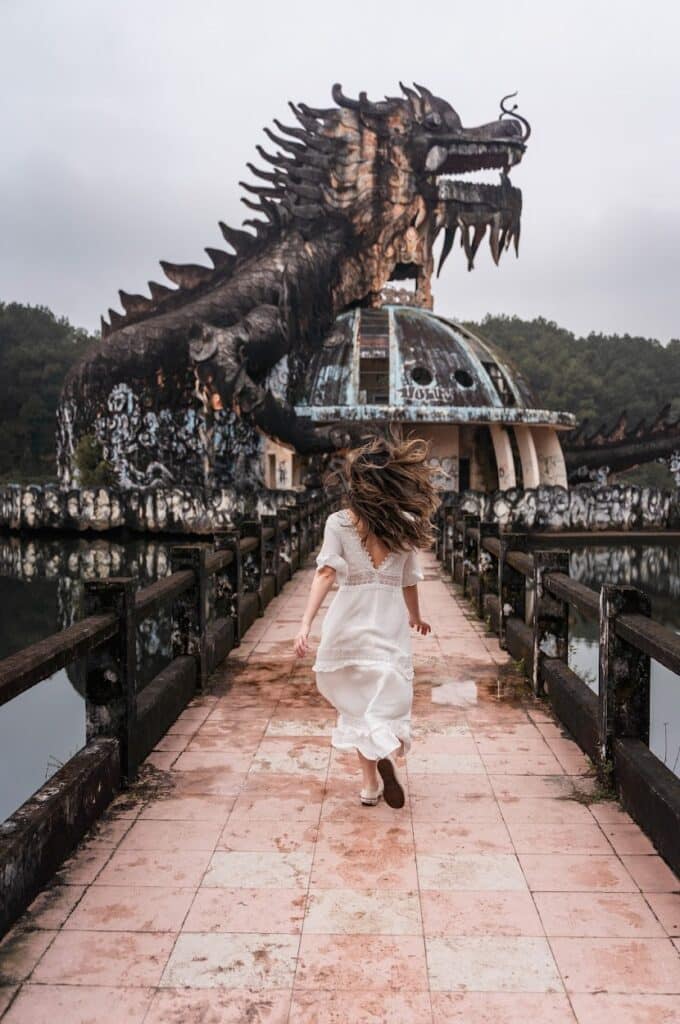
The Thuy Tien Lake waterpark was originally opened in 2004. It was intended to provide entertainment and recreational facilities for both locals and tourists in the Hue area. There was about $3 million USD of investment poured into the construction of this waterpark.
Unfortunately all that investment went to waste as the park was not efficient. There were not a lot of attractions in a large area, and there were rumors that the lake where the dragon building is built is infested with crocodiles (not sure how true this is as we didn’t see any).
How to get to the Hue Abandoned Water Park
Since it is abandoned you are technically not supposed to visit as the gates are shut and there are guards guarding the place. We asked our taxi driver to drop us off at the back entrance Near Nano Eco-Hostel . There was nobody guarding this gate.

We continued walking until we saw an intersection, we turned left and continued to follow the path until we saw the small lake on our right side. After walking for another 5-10 minutes you will see the famous Dragon building.

There was one guard that was riding a scooter around the park. He saw us, told us “5 minutes”, and left us alone. He did not ask us to pay him or anything, and he didn’t come back for another 15 minutes or so. But even then he didn’t ask us to leave even though we quickly left after we got our photo.
You can walk around the park (as long as nobody stops you) to see other abandoned structures at this water park. But to be honest we just wanted the photo with the Dragon building and we didn’t care to see other things. The whole place does feel creepy after all.
I suggest going early in the morning to avoid other photographers (although not sure how many people actually show up) but we figured the earlier we go the better the mood the guards might be in.
Our private taxi driver waited for us at the entrance and then drove us to the next attraction: the Tomb of Emperor Khai Dinh.
Mausoleum of Emperor Khai Dinh
The Mausoleum of Emperor Khai Dinh, also known as the “Khai Dinh Tomb”, is one of the several imperial tombs and mausoleums in the region, each dedicated to a different Nguyen Dynasty emperor.
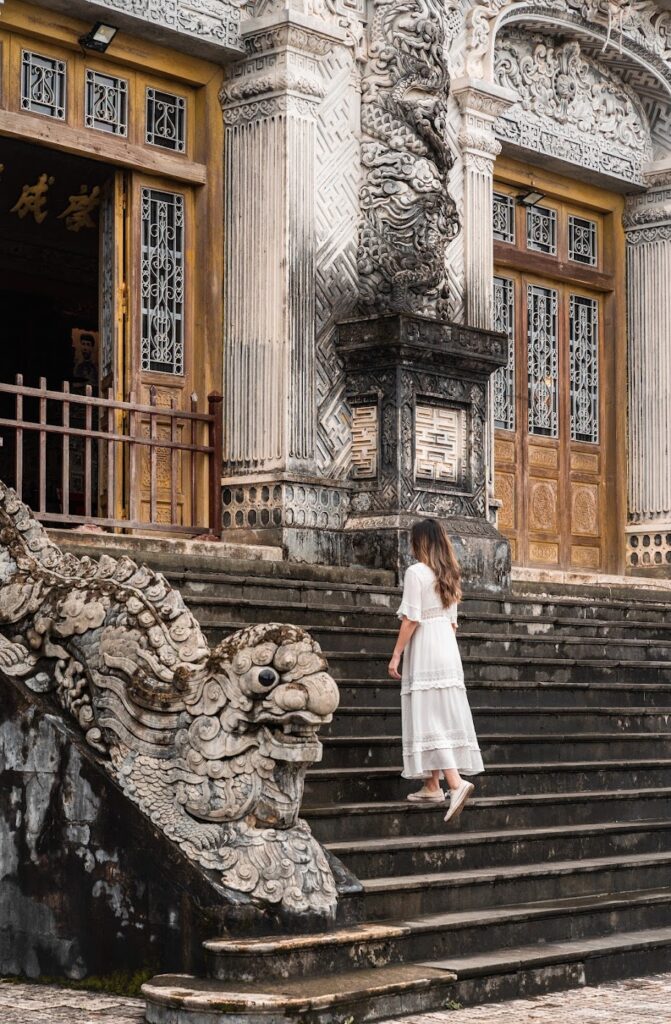
Emperor Khai Dinh ruled Vietnam from 1916 to 1925 as the 12th emperor of the Nguyen Dynasty. His tomb is actually one of the most unique tombs we visited in Hue.

Unlike the other imperial tombs, the tomb of Emperor Khai Dinh is characterized by its dark-colored concrete, which was a departure from the traditional white or yellow colors of other imperial tombs. You also need to climb a steep flight of stairs to reach the tomb’s main building. The main building’s colorful and lavish interior is a sharp contrast to the dark exterior outside.

There is a small stand selling water at the tomb and you can also find a bathroom at the tomb as well.
You will need at least an hour at the tomb to explore it in its entirety.
This tomb is included in the 4 attraction package pass if you purchased it when you visited Hue Citadel. If you did not buy the combo ticket, the individual ticket cost VND 150,000 ($6 USD).
Mausoleum of Emperor Minh Mang
The second tomb you will visit on Day 2 in Hue is the Tomb of Emperor Minh Mang. Set alongside the shore of the Perfume River, Emperor Minh Mang’s tomb is probably the prettiest tomb to visit in Hue.
Emperor Minh Mang was the second emperor of the Nguyen Dynasty and ruled from 1820 to 1831.

Compared to the Tomb of Emperor Khai Dinh, the Minh Mang tomb is much larger and much more colorful. The tomb includes about 40 buildings, including palaces, pavilions, temples, etc. If you didn’t know this was a tomb, you’d probably mistaken this as a royal palace of some sort.

You can spend a good 2 hours exploring the Tomb of Emperor Minh Mang and there are plenty of beautiful photo spots as well.
When we visited mid day at the end of February, there weren’t actually many tourists around. So you can totally enjoy the complex in peace.
The Mausoleum of Emperor Minh Mang is also included in the 4 attraction combo ticket. Without the combo ticket it costs VND 150,000 ($6 USD).
Mausoleum of Emperor Tu Duc
Another beautiful tomb to visit in Hue is the royal tomb of Emperor Tu Duc. He ruled from 1848 to 1883, making him the longest reign during the Nguyen dynasty. Unfortunately he was unable to have any children despite having more than 100 wives and concubines.

Emperor Tu Duc’s tomb is one of the largest royal tombs in Hue, with about 50 buildings over 12 hectares of grounds. The tomb felt more like a park than a tomb, with beautiful ponds, lakes, pagodas and pavilions.
Our favorite place at the Royal Tomb of Tu Duc is the pond, where you can feed koi fish and rest by the lake.
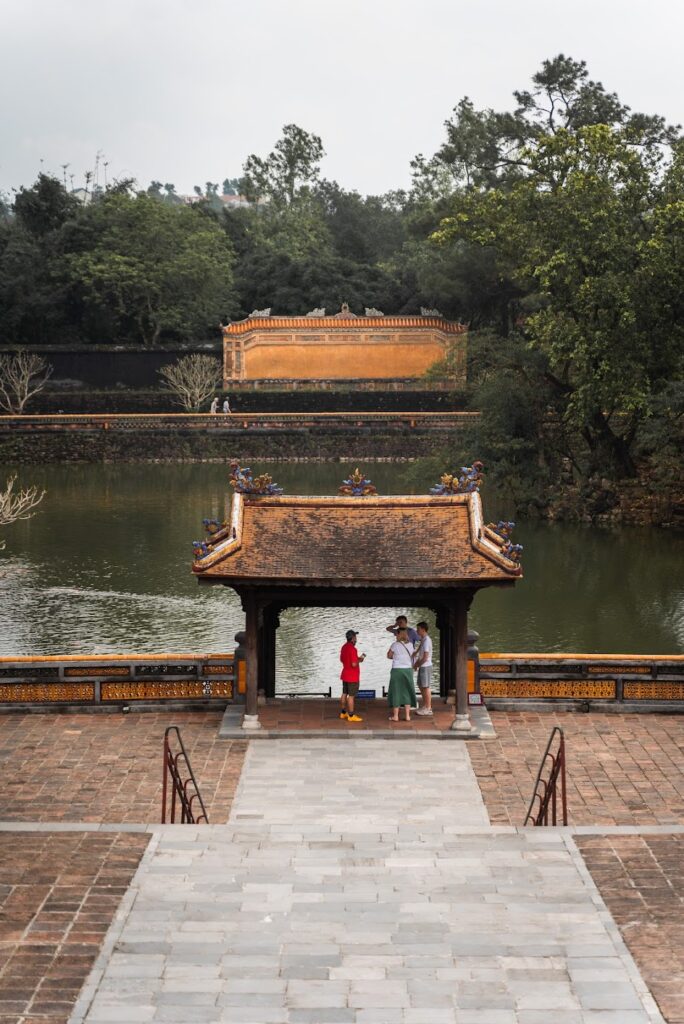
Because of his fear of theft, his actual burial place is not at this royal tomb. In fact to this day, nobody knows where he was actually buried.
The Mausoleum of Emperor Tu Duc is also included in the 4 attraction combo ticket. Without the combo ticket it costs VND 150,000 ($6 USD).
Royal Tomb of Emperor Gia Long
We only visited 3 tombs but another popular tomb is that of Emperor Gia Long . He was the first emperor of the Nguyen Dynasty. He unified the different territories of Vietnam during his reign and laid the foundation of what is modern day Vietnam.
If we had more time we would have visited his tomb, as there are many unique and beautiful structures in his tomb. There are also rivers and lotus filled lakes at the tomb, making it beautiful to visit.
The tomb of Emperor Gia Long is also included in the 3 attraction combo ticket . Without the combo ticket it costs VND 150,000 ($6 USD). It is not part of the 4 attraction combo ticket, so you may have to pay out of pocket if you want to visit all 4 tombs.
What to eat in Hue
Although 2 days is quite short to try all the delicious food in Hue, you can still find some amazing places to eat and try the local cuisine.
There are several local dishes that are famous in Hue, and you will not be able to find them elsewhere in Vietnam.
Traditional Hue food you have to try
- Bún bò Huế , the famous spicy beef noodle soup in Hue. These are different from pho in Hanoi. The noodles are often thicker and more slippery and the flavors stronger and more pronounced. If there is only one thing you eat in Hue, this should be the one.
- Cơm hến , a flavorful and unique combination of rice and clams. You will usually find overnight white rice topped with bean sprouts, green onions, fried peanuts, pork rind, chili, other herbs and clams.
- Bánh khoái , a traditional Hue pancake, made with rice flour and filled with pork, shrimp, bean sprouts and eggs and dipping sauce.
- Bún thịt nướng , vermicelli noodles served with grilled pork, fish sauce and peanuts.
- Bánh bèo , another Hue steamed rice cake topped with a variety of different things, such as shrimp, mung bean paste, scallion oil, fried shallots, and fish sauce.
- Nem Lui , grilled pork skewers made from finely minced pork mixed with aromatic herbs and spices. They are served with rice paper, fresh herbs, and dipping sauce.
- Banh Bot Loc , also called tapioca dumplings, are steamed dumplings filled with pork and shrimp. The skin is translucent and the dumplings are wrapped in banana leaves and steamed.
- Chè, a sweet soup, which can be served warm or cold with various ingredients like beans, fruits, and jellies.

Too overwhelmed with what to eat in Hue or simply short on time to try every restaurant? Check out this and also this Hue street food tour to try all the best local dishes.
Best restaurants to eat in Hue
- Huyen Anh Restaurant on 50 Kim Long, known for the Bún thịt nướng (noodle with grilled pork)
- Madam Thu Restaurant , probably one of the most popular restaurants for tourists in Hue. They offer a little bit of everything, including Bun Bo Hue and a platter with all the Hue specialty food. Reservation is needed unless you go super early (like 5pm) to avoid a long wait.
- Bà Gái Hue Beef Noodle Soup , as the name implies, their specialty is the Hue beef noodle soup. This restaurant does not look like a fancy place, but many tourists go there for the noodle!
- Ancient Hue Garden Houses : if you are looking for fine dining experience in Hue, this is the place to be. This hotel serves a “royal tasting menu” which is a multi-course meal accompanied by traditional costume change.
- Nook Eatery , if you are craving a burger or western food then this is the place to go. I understand the craving for some burgers after traveling in Asia for a while.
A word on peanut allergies in Vietnam Many dishes in Hue (and in Vietnam in general) uses peanuts and some restaurants even use peanut oil. If you have a peanut allergy (or other food allergies), I would recommend that you stick to these very well reviewed restaurants frequented by foreigners. We did not have an issue with peanut allergy in Vietnam, but I have read that it could be a problem in Vietnam. You should always let them know and emphasize. Also ask about the oil to see if they use peanut oil (places we went to did not).
What to Wear (and Not Wear) in Hue, Vietnam
There is no “dress code” when visiting Hue but it is always a good idea to dress moderately and respectfully when visiting pagodas and royal tombs in Hue.
In general, you should avoid wearing tank tops and mini skirts and super short shorts (like the type that you can see your butt).
When visiting temples, pagodas and other historical sites in Hue, you should wear clothes that cover your shoulders, knees and do not show cleavage. Many Vietnamese tourists actually wear their traditional clothing when visiting these historical sites (many also dress up for photoshoots there).
When we visited the Hue Historic Citadel, there are buildings in the Citadel that require you to take off your shoes before entering. You should also remove hats when visiting religious sites.

What to Pack for Hue, Vietnam
Hue generally has warm weather and you should always check the weather forecast before you go. But below are a few essential things you should pack when visiting Hue.
- Cash : You need cash for the market and entrance tickets to these Hue tourist attractions
- Umbrella/ rain jacket : Hue rains quite a bit, especially between August and December. Even when we visited in February during the dry season it rained a little bit. It’s always a good idea to be prepared for rain when visiting Central Vietnam.
- External Battery : You are going to be spending a lot of time outside in Hue, and if you take photos on your phone, your phone battery will run out even faster. Always carry an external battery with you so you don’t have a dead phone and get stranded if you need to call a Grab.
- Sunscreen : Since you are spending most of your time outside at citadels and tombs, you should protect your skin. It can get really sunny and hot in Hue outside of the winter months, so be prepared and not get sunburned. I always recommend this cheap physical blocker (better for you and better for the environment).
- Bug repellent : there are mosquitoes, especially if you visit the Abandoned Water Park.
- Travel first aid kit : bring this mini first aid kit since you never know when you’ll need it.
- Medication : don’t forget your medication! Even though you can buy generic medicine in Hue, if you have specific needs you should definitely bring them with you.
- Sim Card/ eSim Card : if you are planning to rely on Google Maps and Grab to get around Hue, then you definitely need to have data on your phone. I recommend either getting a physical sim card when you land in Da Nang or getting an eSim card.
Is Hue Worth Visiting
Hue is absolutely worth a visit even if it’s just for a day or two. This historical city is so underrated and I’m not sure why more tourists do not visit.
Hue has such amazing architecture and food scene, with its historical citadel, beautiful royal tombs, mysterious abandoned water park and much more. It is a shame that it does not get the same number of visitors as Da Nang even though it is easy to get to.
If you want to have an unique experience in Hue, I would highly encourage you to visit even if it’s just a day trip from Hoi An or Da Nang .
Booking Resources for Hue, Vietnam
If you found this article useful, please consider using the links below to book your hotels and tours. We earn a small fee from referring you at no cost to you. With your support we can continue to provide useful information for travelers like you to plan that perfect trip to Vietnam.
- Best hotel booking sites for Vietnam : this or this
- Best tours booking sites for Vietnam : this or this
- Best travel insurance <- covers more than 1 country for the duration of your time abroad.
- Best train and bus booking site
Other Vietnam Travel Guides
If you are still planning that perfect trip to Vietnam, you would probably find my other Vietnam travel guides helpful.
- 10 Days in Vietnam: The Ultimate Vietnam itinerary
- How to spend 1 day in Hoi An
- Is the Golden Bridge at Ba Na Hills Worth it?
- How to get the Vietnam 30 day and 90 day tourist eVisa for cheap
- A complete Halong Bay cruise guide
- How to survive a Vietnam sleeper train
- 3 Week Vietnam and Thailand itinerary
- 2 Week Southeast Asia Itinerary – 4 options and routes
Like this post? Pin this Hue itinerary and travel guide to Pinterest!

Read my privacy policy .
- Kale by LyraThemes.com.

- Where to go
- Place to stay
- What to eat
- Thing to know
- Visas for Vietnam
Traveling to Hue for the First Time (Tips & Tricks)
The imperial capital of Hue has been the capital of a unified Vietnam since 1802 after Nguyen Anh ascended the throne opening the Nguyen Dynasty, the last feudal dynasty in Vietnamese history. Hue ended its mission as the capital of Vietnam in 1945 when the last Nguyen emperor Bao Dai abdicated. Since then, the capital of Vietnam was once again chosen as Hanoi, the ancient capital of Hue became the ancient capital. Hue is a city located on the East coast, a central city located between two big cities, Hanoi and Saigon. The two neighboring provinces of Hue are Quang Tri and Da Nang. Hai Van pass connects Hue with Da Nang and the weathered boundary of the two regions. Together with Pho, you can summarize your Hue travel experiences with information about Hue hotels and motels, places to eat, delicious dishes in Hue, tourist attractions in Hue for your reference.
Table of Contents
The History of Hue
Anyone who has been to Vietnam once must have known that the climate in Vietnam is very different. While in the South it is usually tropical, in the North it is temperate. The climate in Hue is usually hot, humid and it is a combination of the northern climate and the southern coastal region. Hue is one of the regions with many cultural heritages. Up to now, there is no other area with a large number of relics but these relics still retain their original shape as in this ancient capital.
- Top 12 most attractive destinations in Ninh Binh
- Top 10 most beautiful landscapes in Ha Giang Province
- Top 10 most beautiful tourist destinations in Binh Dinh
- Top 10 great places in Sapa you should visit
- Top 12 most attractive destinations in Long An
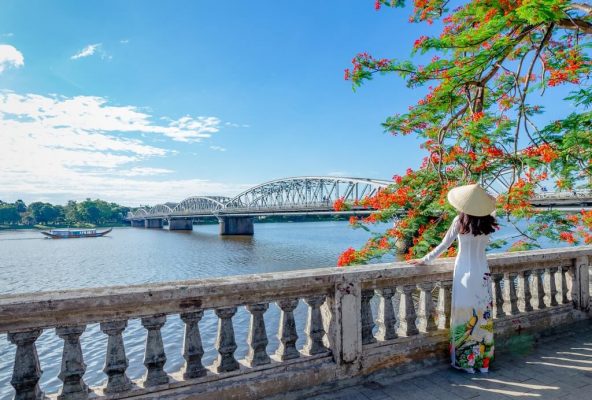
On the northern bank of the Perfume River is a relic of castles built in a defensive style forming an arc of 11km long. This valuable work includes more than 100 works of architecture, which has truly reflected the king’s life of the Nguyen Dynasty. Among the hills on the southern bank of the Perfume River are very beautiful tombs of Nguyen Kings. Among the most famous are the four tombs, each known with a name that matches the personality of each king and the architectural style of each. These are the majestic Gia Long Mausoleum, the majestic Minh Mang Duc tomb, and Magni Khai Dinh Tomb.
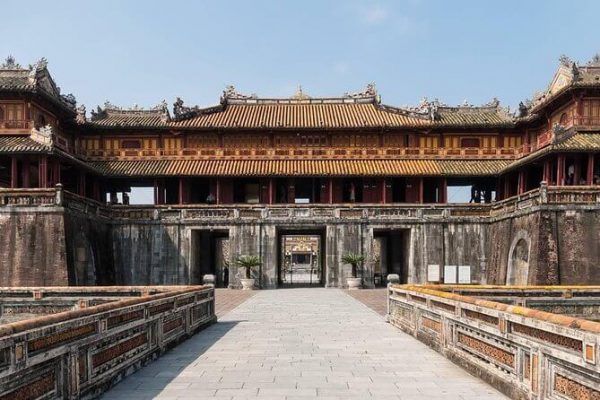
Hue is also an important center of Buddhism. In Hue and surrounding areas still exist, dozens of pagodas were built over 300 years ago and hundreds of temples and pagodas were built at the beginning of the century. In addition, Hue is also considered the origin of royal music and is home to many famous traditional dishes and fine craftsmanship.
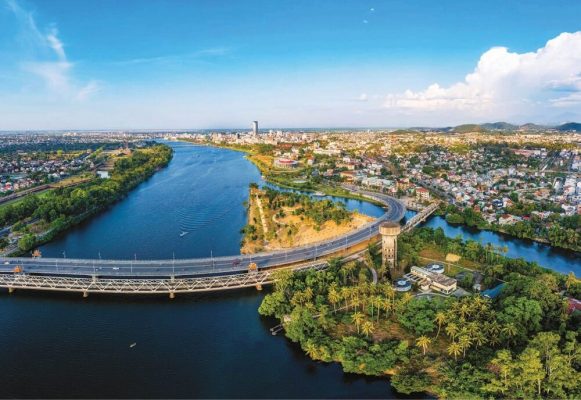
It is the only city in the country that still retains the look of a medieval city and intact monarchy architecture. Hue has become a large and invaluable museum. Therefore, the government has ranked the monuments in the ancient capital of Hue as an extremely valuable asset and in December 1993 Hue was ranked by UNESCO as a world cultural monument.
When should travel to Hue?
If the climate of the country is divided into two seasons: dry and rainy, Hue has only two other seasons, namely the rainy season and the low rainy season. The rainy season lasts from September to the end of December, the less rainy season lasts from the end of December to around April. For the rest of the months, Hue weather is quite sunny because Hue is also in the abundant heat radiation and heat high. Tourists come to Hue at different times. If domestic tourists usually come to Hue from around early May to late September, foreign tourists come to Hue from October to the end of April. The most ideal weather in Hue is usually in November. Highlights Hue’s colorful culinary picture lows.
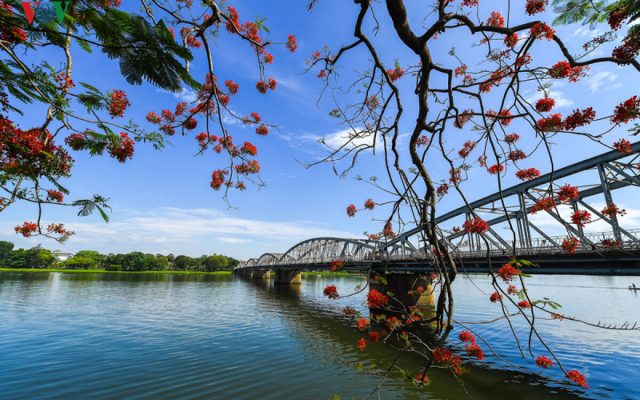
- Around March every year, Hue weather is still relatively cool now, it rarely rains, so you can go to Hue on this occasion, especially families with children and the elderly.
- On the occasion of April 30, Hue often organizes festival festivals with many unique cultural activities, in addition to this occasion there is also an international fireworks festival in Da Nang, you can schedule travel. Hue calendar combined with Da Nang tourism.
Guide to Hue
By private vehicles, by motorcycle.
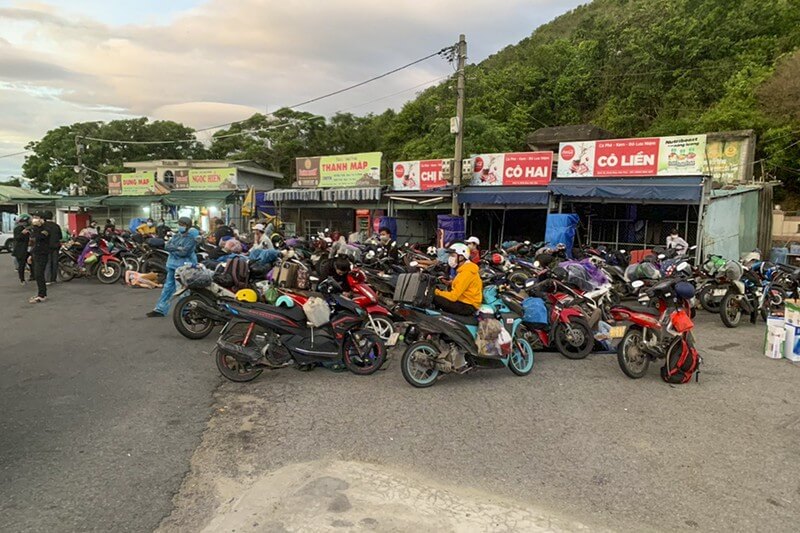
By Public transport
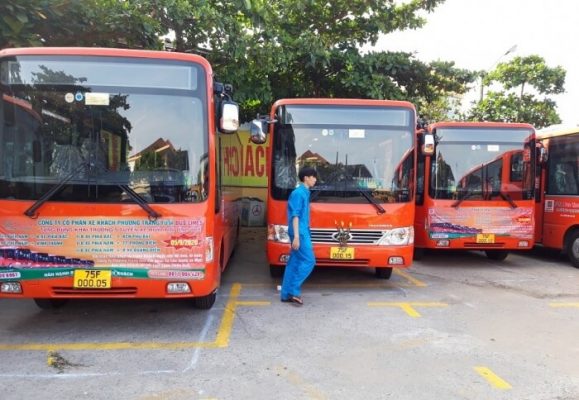
Currently, from Hanoi, there are only 2 units, VietjetAir and Vietnam Airlines, operating flights to Hue, with Jetstar from Saigon in the afternoon, flight fare depending on time will be about 2,000,000 VND – 2,500,000 VND round trip from Hanoi and around 1,500,000 VND-2,000,000 VND with the afternoon from Saigon. Phu Bai Airport is about 40km from Hue city center, you can use the bus service to take passengers from the airport to the city center for about 50,000 VND / 1 person.
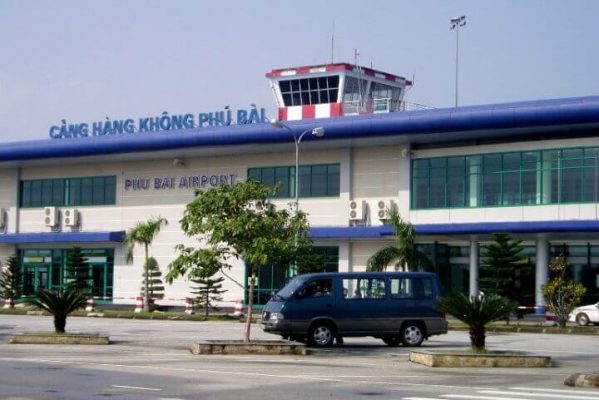
From the two ends of Hanoi and Saigon Station, there are 5 daily Thong Nhat trains departing for Hue according to the train timetable as below, depending on your plan, you choose the train time accordingly.
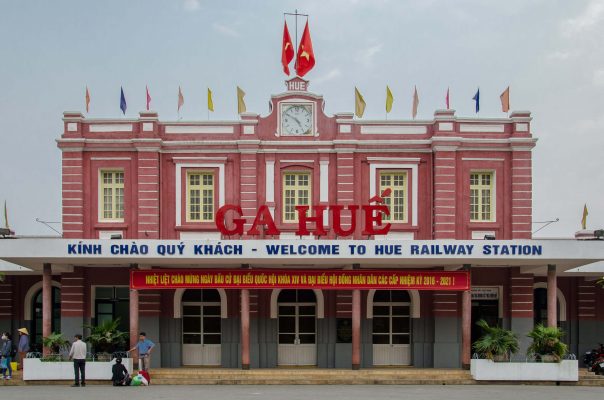
- SE1 and SE2 trains: [Hanoi 19:30 – Hue 8:48] [Saigon 19:30 – Hue 15:23]
- SE3 and SE4 trains: [Hanoi 22:00 – Hue 10:27] [Saigon 22:00 – Hue 16:39]
- SE5 and SE6 trains: [Hanoi 9:00 – Hue 22:42] [Saigon 22:00 – Hue 5:31]
- SE7 and SE8 trains: [Hanoi 6:00 – Hue 7:00 pm] [Saigon 6:00 – Hue 1:28]
- Train TN1 and TN2: [Hanoi 13:10 – Hue 3:39] [Saigon 13.10 – Hue 12:06]
In addition to the Thong Nhat trains, from Hanoi, there is the SE19 train to Da Nang, which departs from Hanoi Station at 8:00 am and arrives at Hue at around 10:00 am.
Find ways to get Hue easier with Bookaway!
By High-quality Passenger car
From Hanoi and Saigon, there are many high-quality bed buses every day to Hue, open tour buses to Hue, travel time is about 13 hours (from Hanoi) or 25 hours (from Saigon).
Transportation in Hue
Cyclo in Hue is convenient because of its wide and high roof. When needed, it can carry goods or turn on the roof to transport passengers politely and safely. Nowadays, cyclo traffic service is the most attractive and suitable in the city. Using a cyclo vehicle, you can take a built-in roll around this ancient and beautiful city.
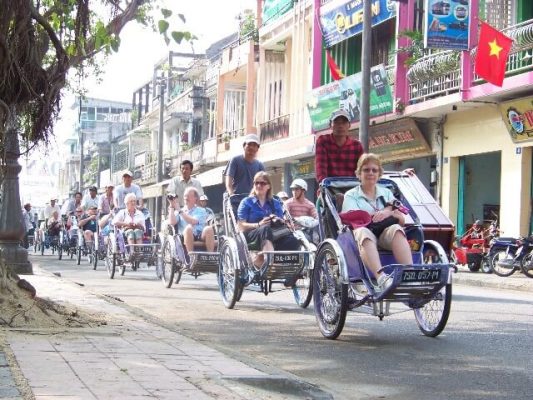
By Bicycle / Motorbike
With the advantage of being a tourist city, you can easily find an affordable bike or motorbike. The places for renting bicycles and motorbikes are concentrated on Hung Vuong Street, the distance from Truong Tien Bridge to Hung Vuong intersection with Nguyen Tri Phuong. The second area is Le Loi Street, West Quarter opposite Huong Giang Hotel, streets like Pham Ngu Lao, Chu Van An all have car rentals.
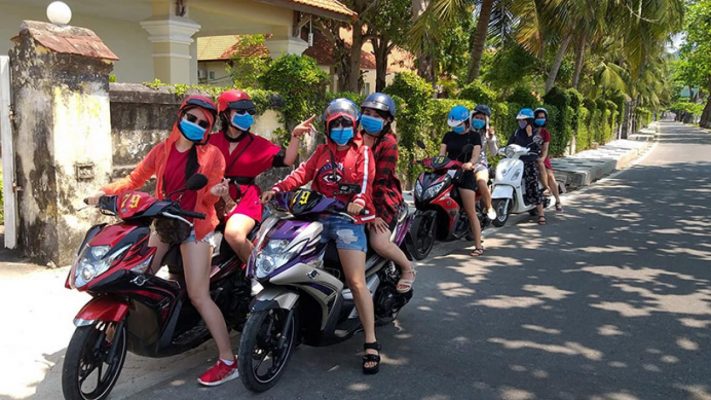
- Vinasun: 0234 3788 788 VND
- Mai Linh: 0234 3898 989
- Sun Taxi: 0234 3989 898
Staying in Hue
If you want to find a quiet, isolated place to have moments of rest when coming to Hue, you will need to leave the central area. Some resorts are built near Thuan An and Lang Co beaches or Thanh Tan hot mineral springs area. If you stay here, you will often determine not to go anywhere because the long-distance travel, going back and forth many times is not really convenient and expensive.
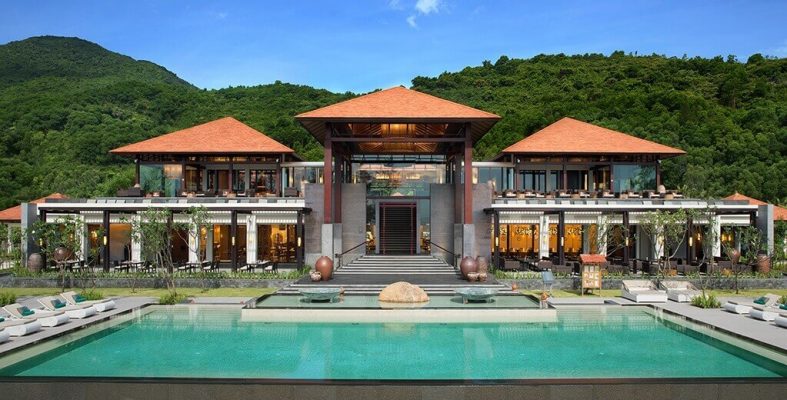
Hotels in Hue
Hue now has about 600 accommodation establishments with nearly 10,000 rooms, 17,000 beds, so there is almost no room fire in Hue.
For the majority of you traveling, often the need only needs a relatively reasonable place to stay because the whole time of the day is actually on the street, with this need, 2-star hotels are quite good and suitable because the price is relatively reasonable (usually only about 300,000 VND). If you want a little bit more quality (can usually be a nicer location, more complete room amenities) you can choose from 3-star hotels.
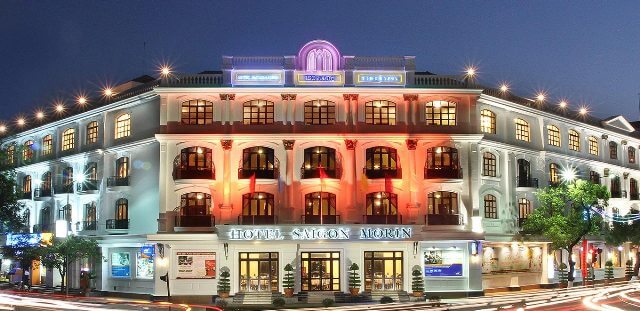
If you come to Hue in the summer, the weather is especially sunny and quite hot, most of you will want to be indulged in cool water for entertainment now. If you do not choose hotels, resorts near the sea (but far from the center) you can choose hotels with swimming pools in Hue. After a day of hanging out, going to the hotel and swimming is not a bad idea.
Finally, if you have economic conditions, why not try to stay and experience the services of 4-star hotels, 5-star hotels in Hue? Although the cost is high, it is sure that what you get will make you extremely satisfied.
Homestay in Hue
Meeting the needs of young people, those who love to travel but do not have a large budget, the form of accommodation at a local house was born, meeting the needs of beautiful space, good service, but the price is still reasonable. Unlike the traditional form of homestay, which requires sharing with the host, the new homestay style allows tourists to enjoy private space. Most of the homestay today are apartments separate from the owner. In particular, these locations are often beautifully decorated. Normally, a standard homestay will have a beautiful small garden whereby tourists will feel familiar, close, like at home.
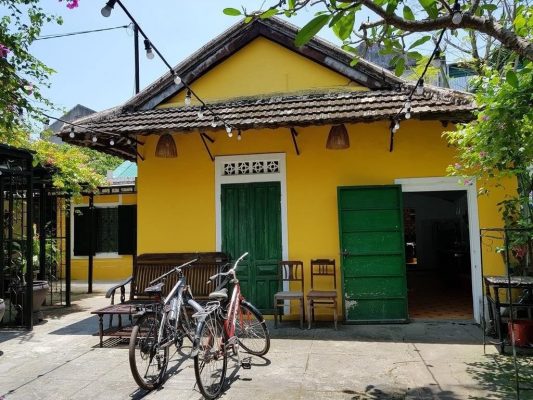
Sightseeing in Hue
Referring to Hue, people remember the gentle girl in purple robes and remember the city with a deep, idyllic but memorable beauty. Traveling to Hue, you will admire the ancient beauty of high-value historical sites located in Hue Citadel Complexes such as Hue Citadel, Tomb of Minh Mang, Gia Long Mausoleum, Thien Mu Pagoda, Van Temple, and School of Quoc Ho,… Let’s see the tourist destinations that cannot be missed when coming to Hue.
Tourist places in Hue
The complex of relics of the ancient capital, hue capital.
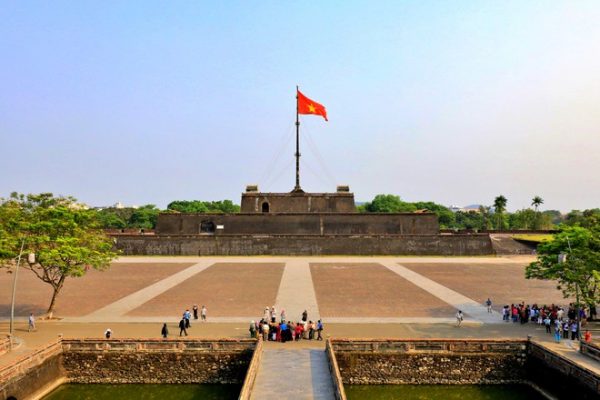
Cửu Vị Thần Công
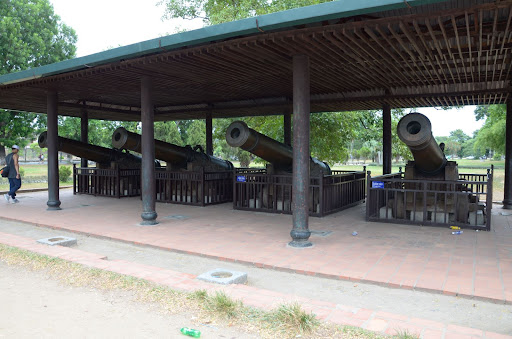
Hue Imperial Citadel
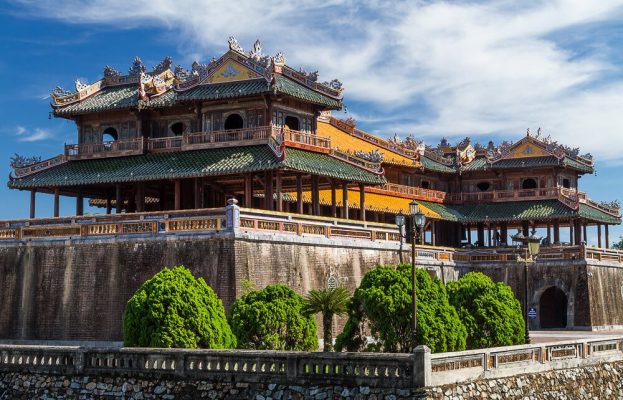
Tử Cấm Thành
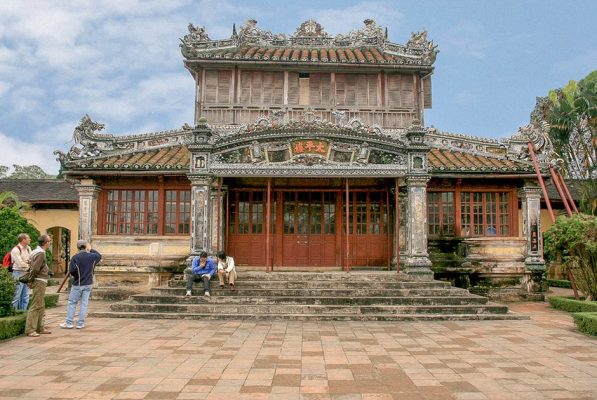
Museum of Royal Fine Arts
Museum of Royal Fine Arts is a museum at No. 3, Le Truc, Hue City. The main building of the museum is made of wood, has 128 precious wooden pillars, on the pillars are carvings of the four spirits: Long – Lân – Quy – Phụng and more than 1000 poems in Chinese characters. This building is the Long An Palace built in 1845 under the reign of Emperor Hien to the Nguyen Dynasty, the reign of Thieu Tri. Currently, the museum displays more than 300 artifacts made of gold, china, porcelain, and Hue traditional art, costumes of the Nguyen Dynasty, giving visitors an overview of Hue royal life.
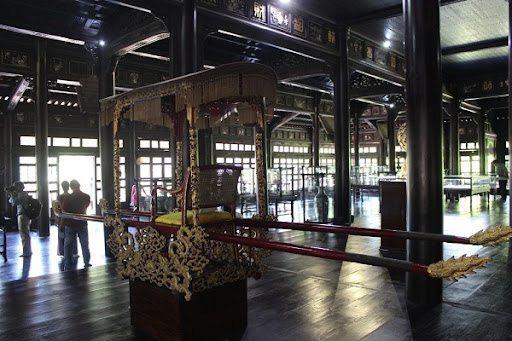
Ho Tinh Tam
Tinh Tam Lake is one of the famous landscapes of the capital city, now in the territory of Thuan Thanh ward, Hue city. In the past, the lake was a section of the Kim Long River that was reconstructed, the original name was Ky Te pond. In the 3rd Minh Mang year (1822), the Nguyen dynasty mobilized up to 8,000 soldiers to participate in the renovation of the lake, turning it into a royal residence. After completion, the lake was named Tinh Tam.
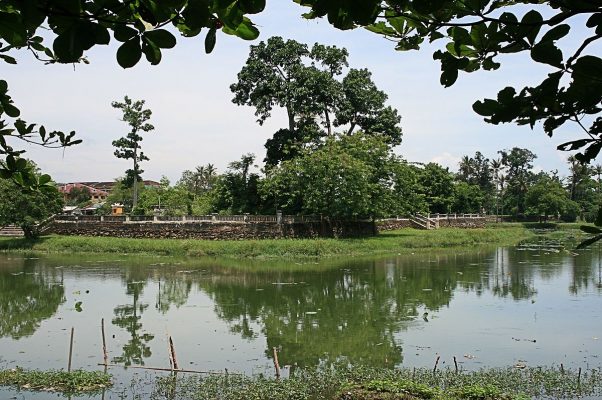
Tinh Tam Lake has a rectangular area, with a circumference of nearly 1500m (354 staff of 6 meters). There are three islands on the lake, Bong Lai, Phuong Truong and Doanh Chau. Bong Lai Island, in the south of the lake, in the middle of the lake is Bong Doanh Palace, 3 rooms with 2 wings, matching roof, Hoang Luu ly tile roofing. Electricity was built on the south side, surrounded by a brick railing, in front there was Bong Doanh gate, then Bong Doanh Bridge connects the island with the southern lakeshore. To the East of Bong Doanh Palace, there is the Thuy dynasty Thanh Tam, facing east. In the west, there is Trung Luyen floor, facing west. To the north is the Hong Cu estuary and a bridge of the same name.
On Phuong Truong Island, in the middle is Nam Huan guard, facing south, 2 floors, the roof is covered with royal tile. In the south, there are Bich Tao Gate and Bich Tao Bridge. In the north of the island, there is the Tinh Tam floor, built in the north. In the east, there is Hao Nhien (changed to Nature in 1848), facing east. To the west, there is a Duong Tinh patio facing west. Between the two islands, there is Tu Dat communal house located in the middle of a system of corridors with tiled roofs of 44 rooms, connecting to Bich Tao bridge in the south and Hong Cu bridge in the north.
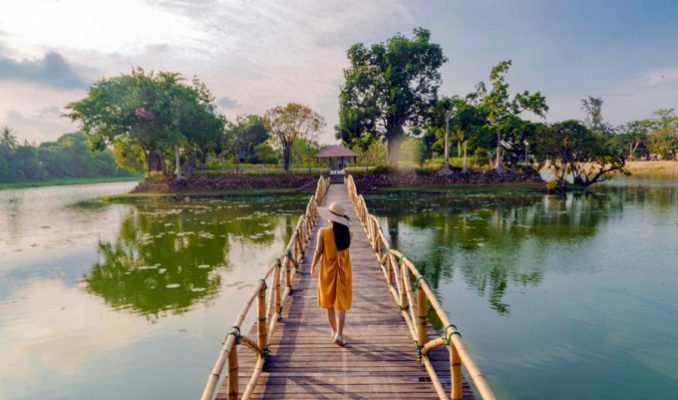
In the middle of Tinh Tam lake, there is Kim Oanh dyke connecting the east bank to the west bank. To the east of the dike, there is Luc Lieu bridge, 3 rooms with tiled roofs. To the south, the dyke is attached to a 56-room long corridor, in the middle is Bach Tan Bridge. To the south of the bridge, there is a barn Thanh Tuoc for the king’s boat. At the western end of the corridor is the Khuc Ta house, which is connected to another weightlifting house, Khuc Ta-Ha Phong through a small hallway erected above the water. South of this weightlifting house is Doanh Chau Island.
On the corners of Bong Lai, Phuong Truong, there are stone stacks to create imitation paints. Particularly, Doanh Chau Island is shaped like a large floating island on the lake surface. Everywhere around Bong Lai, Phuong Truong, Kim Oanh Dike, and along the lake banks are planted with willow and strange flowers. There is only one type of white lotus planted in the lake.
Tinh Tam Lake is separated from the outside by a rather high brick wall ring. Four doors have four doors: Ha Huan in the south, Dong Hy in the north, Xuan Quang in the east, and Thu Nguyet in the west.
With sophisticated architecture, but very in harmony with nature, Tinh Tam Lake is considered a typical achievement of Vietnamese landscape architecture art in the nineteenth century. The beautiful scenery of the lake created a source of inspiration and became the subject of many famous poems and poems of Nguyen kings such as Minh Mang, Thieu Tri, Tu Duc,… The most prominent is still the poem Tinh Ho Ha Hung in a series of poems praising the 20 beautiful landscapes of the Kinh land of King Thieu Tri. At the same time, this poem, along with the scenery of Tinh Tam lake, was painted in a mirror painting to hang in the palaces.
Since the late nineteenth century, due to the lack of care conditions, the architecture in the Tinh Tam lake area was gradually damaged or destroyed. In 1946, the brick wall ring surrounding the lake was demolished to construct a lower wall ring. In 1960, on the old foundation of Bong Doanh, there was a small octagonal house built to commemorate. During this restoration, a concrete bridge was built to connect Bong Lai Island with the Kim Oanh dyke,…
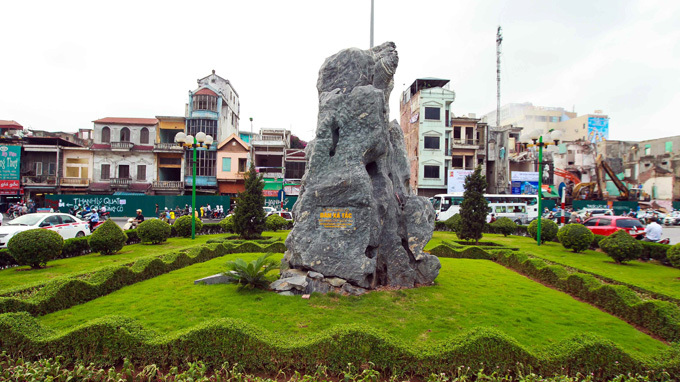
Phu Van Lau
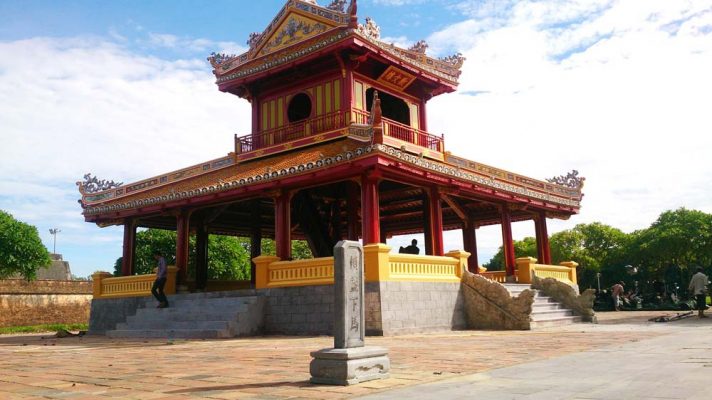
Hon Chen Palace
Ngoc Tran Mountain was formerly called Huong Uyen Son, after it was renamed Ngoc Tran (meaning jade cup), people used to call it Hon Chen because it was neat and plump like a cup. Therefore, people used to call the shrine of the Holy Mother located in the middle of the mountain is Hon Chen Palace – in the area of Hai Cat village, Huong Tho ward, Huong Tra town.
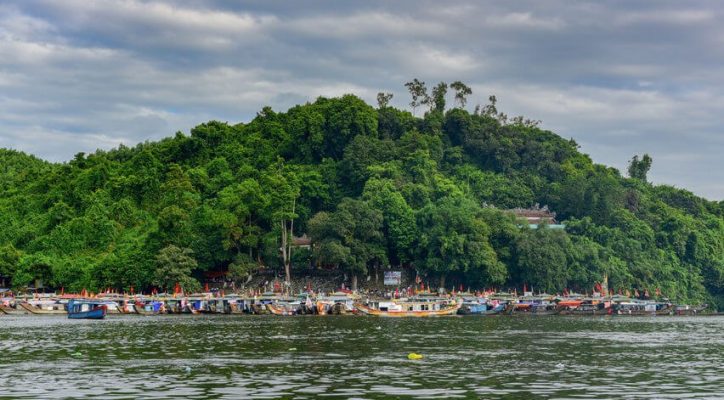
Hon Chen Palace is a relic cluster consisting of about 10 different large and small structures located in the middle of Ngoc Tran mountain, facing the Huong River, hidden under tall trees. The premises of the entire relic cluster are not very large, the main architectural work is Minh Kinh Dai located in the middle; on the right are the houses of Quan Cu, Trinh Cat Vien, and Thanh Pagoda; on the left is Ngu Hanh Palace, the altar of mandarins, caves of Mr. Ho and Ngoai Canh am. Near the bank of the river, there is also Thuy Phu am. In addition, within that area, there are many altars, many small houses scattered here.
Hon Chen Palace is not only a historical relic but also a scenic spot, a unique cultural attraction that attracts thousands of visitors, especially on the occasion of the festival in March and July of the lunar calendar every year.
Thien Mu Pagoda
Thien Mu Pagoda, also known as Linh Mu Pagoda, is an ancient pagoda located on Ha Khe Hill, on the left bank of the Huong River, about 5 km west of Hue city center (Vietnam). Thien Mu pagoda was officially founded in Tan Suu year (1601), the reign of Tien Nguyen Hoang – the first Nguyen Lord in Dang Trong.
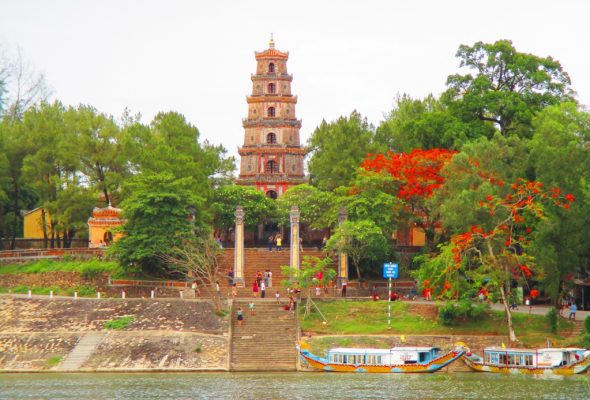
Legend has it that when Lord Nguyen Hoang came to be the retainer of Thuan Hoa and the governor of Quang Nam, he examined the terrain here to prepare for the plot to expand the business and build the mountain. While wandering the horse’s hooves along the Huong River upstream, he caught a small hill rising by the meandering blue water, so the ground was like a dragon looking back. This hill had the name Ha Khe hill.
Local people said that here at night, an old lady in red and green pants appeared on the hill, telling everyone: “Then there will be a true god who will come to set up a temple to gather spirit and make it durable lizard, for the mighty South country”. Therefore, this place is also called Thien Mu Son.
The great thought of Lord Nguyen Hoang seemed to be in tune with the will of the people. Nguyen Hoang was very happy, in 1601 built a temple on a hill, facing the Perfume River, and named it “Thien Mu”.
Tomb System in Hue
Tomb of gia long.
Gia Long Mausoleum also known as Thien Tho Lang started to be built in 1814 and was completed in 1820. The tomb is a complex of many mausoleums in the royal family. This entire mausoleum is a group of mountains with 42 hills, large and small mountains, of which Dai Thien Tho is the largest mountain chosen as the predecessor of the mausoleum and is the name of the whole group.
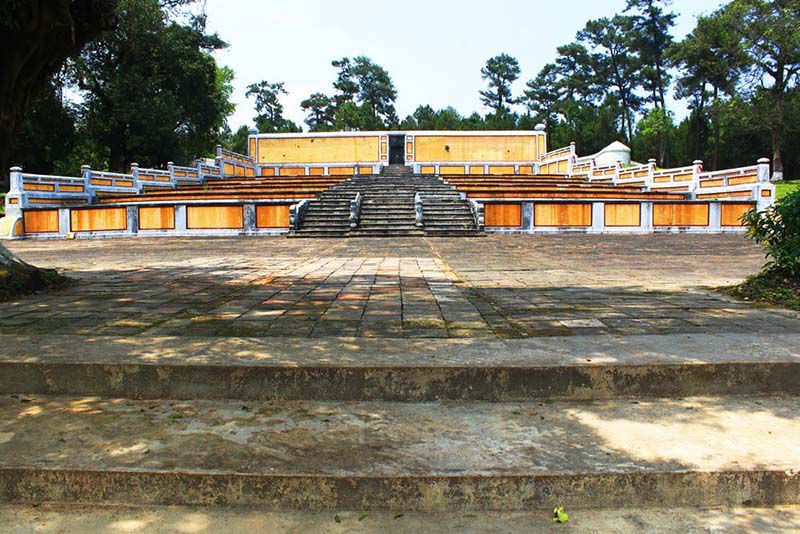
Minh Mang Tomb
Minh Mang mausoleum is also called Hieu mausoleum built by King Thieu Tri from 1840 to 1843 to bury his father Minh Mang. The mausoleum is located on Cam Khe mountain, near Bang Lang junction, which is the confluence of two streams Huu Trach and Ta Trach forming Huong River, 12 km far from Hue.
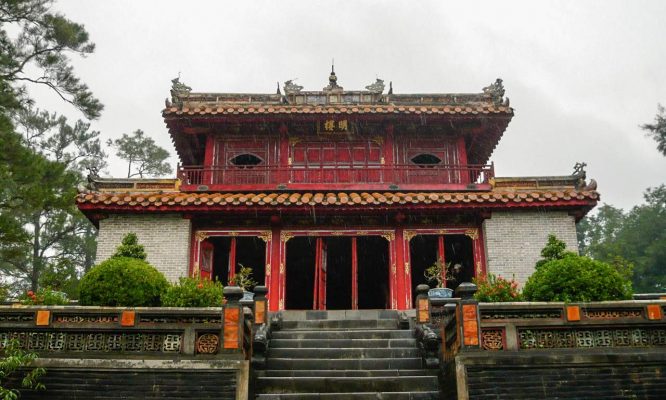
Mausoleum of Thieu Tri
Thieu Tri mausoleum, also known as Xuong Lang, is located in Cu Chanh village, Thuy Bang commune, Huong Thuy town. Built by King Tu Duc in 1847 to bury King Thieu Tri. Compared with the tombs of predecessors and successors, Thieu Tri’s tomb has its characteristics. This is the only mausoleum facing the Northwest, a direction rarely used in the architecture of palaces and tombs of the Nguyen Dynasty.
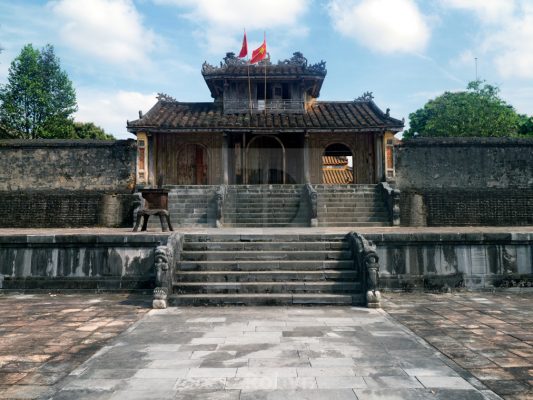
Tomb of Tu Duc
The tomb of Tu Duc was built by King Tu Duc himself when he was still in office, is a complex of architectural works, including the burial place of King Tu Duc located in a narrow valley of Duong Xuan Thuong village, Cu Chanh general, now it is Thuong Ba village, Thuy Xuan ward, Hue city. At the time of construction, the mausoleum was named Van Nien Co. After the Chay Voi rebellion, Tu Duc renamed it Khiem Cung. After Tu Duc’s death, the mausoleum was renamed Khiem Lang. The mausoleum has sophisticated architecture, charming landscape, and is one of the most beautiful tombs of the Nguyen Dynasty king.
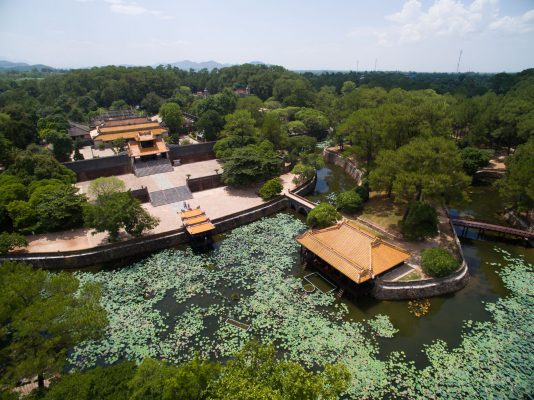
Tomb of Dong Khanh
Dong Khanh mausoleum, also known as Tu Lang, is located in the middle of the countryside of Cu Si village, Duong Xuan commune in the past (now Thuong Hai village, Thuy Xuan ward, Hue city). Formerly, Dien Truy Tu was built by King Dong Khanh to worship his father, Kien Thai Vuong. When Dong Khanh got sick and suddenly died. King Thanh Thai (1889-1907) succeeded in the context of the country facing many difficulties and a depleted economy, so he could not build a formal mausoleum for Dong Khanh.
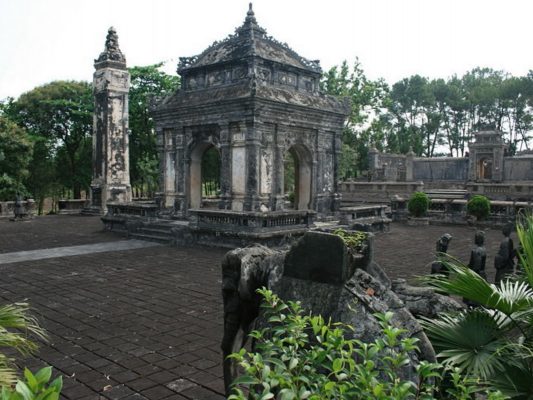
Tomb of Duc Duc
The Tomb of Duc Duc with the name of An Lang is located in Tay Nhat village, An Cuu village, formerly in Huong Thuy district, now in An Cuu ward, Hue city, less than 2 km from the city center; is the burial place of the three kings of the Nguyen Dynasty: Duc Duc, Thanh Thai, and Duy Tan. Duc Duc ascended to the throne in 1883 for 3 days when he was deposed and died. Later, his son, King Thanh Thai (ascended the throne in 1889), built a mausoleum to worship his father, named An Lang. In 1954, when King Thanh Thai died, the body was returned to the present site in the An Lang area and was worshiped at Long An temple. In 1987, the remains of King Duy Tan were buried next to Thanh Thai mausoleum.
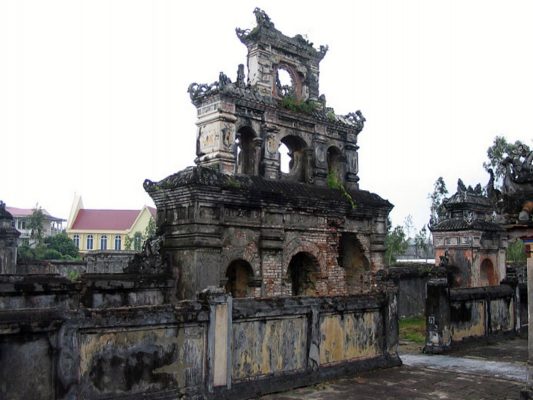
Khai Dinh Mausoleum
Khai Dinh’s mausoleum, also known as Ung Lang, is located on the slopes of Chau Chu mountain (also known as Chau E) outside the Hue capital city is the tomb of King Khai Dinh, the 12th king of the Nguyen dynasty. The mausoleum was built in 1920 right after Khai Dinh was crowned. About the architecture of Khai Dinh Mausoleum, later people often set out the traditional architecture of the Nguyen Dynasty because of the unusual mix of East-West and Kim Co architecture, with unique ceramic mosaic artworks.
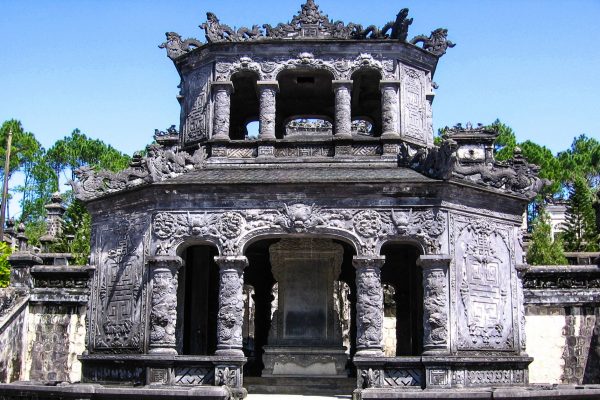
Tourist places in Hue City
Truong tien bridge.
Truong Tien Bridge, also known as Trang Tien Bridge, is a 402.60 m long bridge, consisting of 6 spans of brow-shaped steel beams, with a span of 67 m each. The width of the bridge is 6m, designed according to Gothic architecture, spanning the Perfume River. The northern bridgehead belongs to Phu Hoa ward, the southern bridgehead belongs to Phu Hoi ward; right in the middle of Hue city.
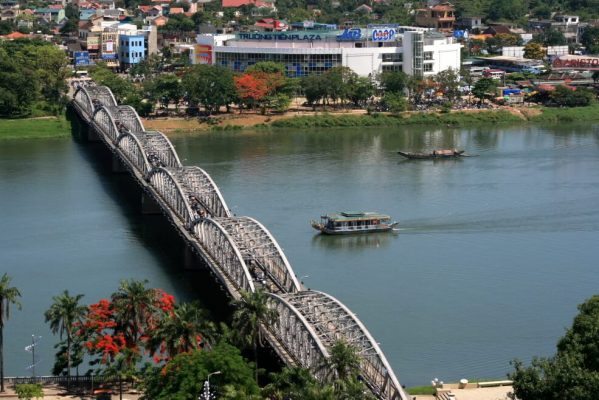
Huong River
The Perfume River has two sources. The Ta Trach source comes from the Truong Son mountain range flowing northwest through 55 majestic waterfalls, the Huu Trach source is shorter after crossing 14 dangerous waterfalls and reaching Bang Lang junction (Tuan confluence) merging with Ta Trach into the romantic Perfume River. The Huong River is 30km long (if only from Bang Lang to Thuan An estuary), the slope of the water flow is not much different from the sea surface, so the river water flows slowly. The watercolor of the Perfume River becomes greener when it crosses the foot of Ngoc Tran Mountain – Hon Chen Palace, creating a deep abyss.
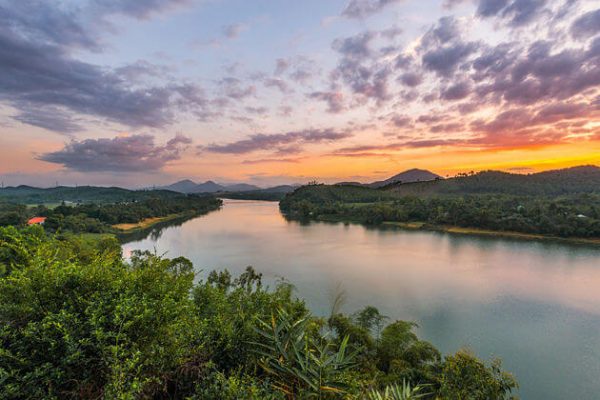
The Perfume River is beautiful from the source, meandering between mountains and forests, tree hills, bringing the aroma of tropical herbs. The river slowly passed through the green, tree-shaded villages of Kim Long, Nguyet Bieu, Vi Da, Dong Ba, Gia Hoi, Cho Dinh, Nam Pho, Bao Vinh, mingling with the scent of Hue flowers. The clear blue river shimmered like jade under the sun, the Hue boats swept up and down, along with the barbaric, thoughtful, deep melody in the middle of the night. Traveling by boat to see the poetic Huong Giang, listening to the dances and folk songs of Hue in the quiet night sky is the eternal joy of many classes of tourists,…
Ngu Binh Mountain
Ngu Binh Mountain (also known as Bang Son) is 105m high, majestic and balanced. The two sides of Bang Son have two small mountains called Ta Turn Son and Huu On Son. The Nguyen Dynasty, when building the imperial capital of Hue, chose this mountain as a precursor to a massive and solid defense system and renamed it Ngu Binh.
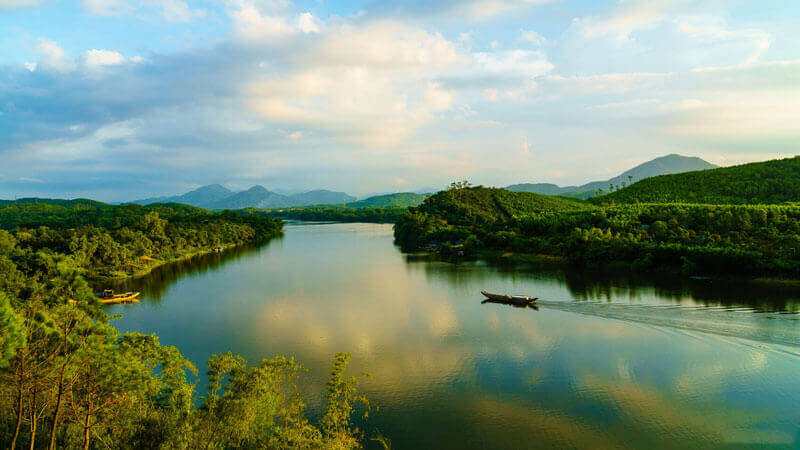
Along with the Perfume River, Ngu Binh Mountain is the second invaluable gift of nature, blending, to create the charming beauty of Hue. For a long time, this beautiful mountain together with the green Perfume River has become a symbol of Hue nature. People used to call Hue the land of Huong river – Ngu mountain, Huong Ngu region.
Dong Ba Market
Dong Ba Market is the largest market in Hue. The market is one of the symbols of the ancient capital, with a history of more than 100 years of construction and development. The market stretches from the foot of Truong Tien Bridge to Gia Hoi bridge with a total area of 47,614 m².
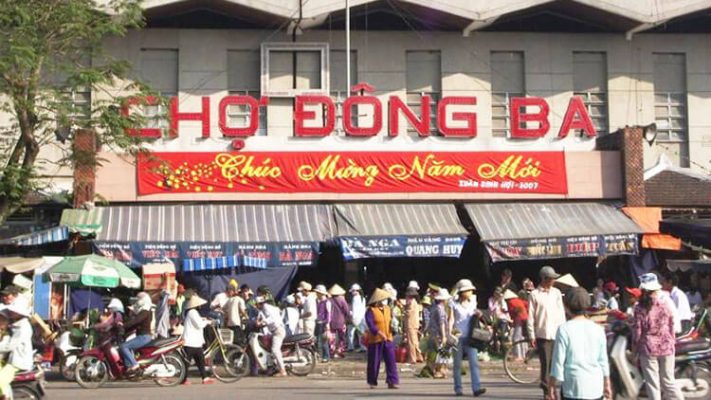
Hue Pedestrian Street
Opened at the end of September 2017, the pedestrian street of Hue includes Chu Van An, Pham Ngu Lao, Vo Thi Sau Streets and operates from 18:00 on 3 weekends. At this pedestrian street, you can enjoy a variety of Hue local dishes, watch street music performances or simply sip a drink with your friends.
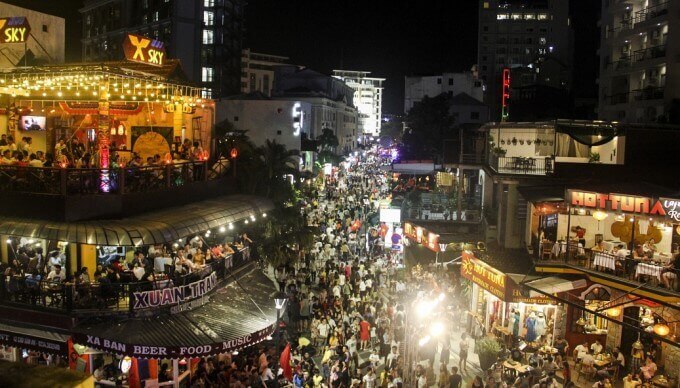
Hue Garden House
Hue is not only famous for its charming natural scenery but also especially attractive with the depth of cultural and spiritual beauty embedded in each architectural feature. Along with the mausoleum of thought. Ancient Imperial City, the peaceful and peaceful garden houses here make the “garden city” of Hue.
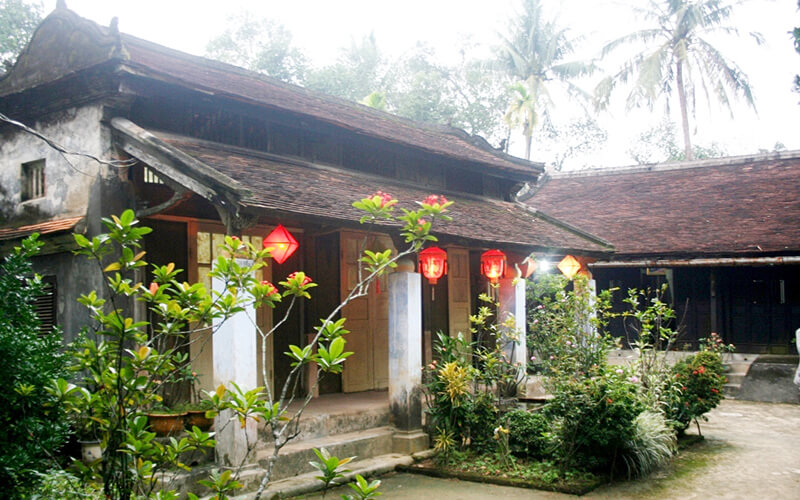
Built according to the law of “translation” and “feng shui”, Hue garden houses are a collection of an architectural system arranged in the North-South direction. Although the width is different, each house has the same overall architecture, including gate, lane, screen, rockery, shallow pool, yard, house. The gate is often built with bricks, the entrance to the alley is often planted with shady or carefully trimmed tea. The screens are also often built of bricks. After the screen was a shallow pool with rocky rocks, a large yard, and then came to the house. Around the house, there are a lot of trees and flowers all year round.
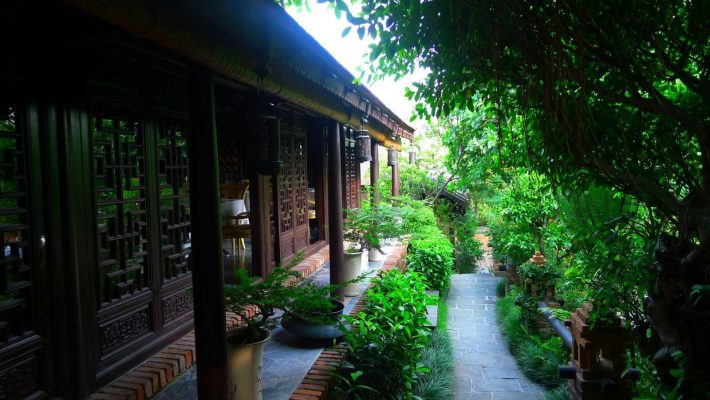
In that garden house, it is impossible not to mention the old temple house. The communal house is usually made of wood, they are elaborated with many carvings, in the linkage of the house structure, instead of crucifixion is a sophisticated dreaming technique. The communal house has many forms: one room with two wings, three rooms with two wings, five compartments and two lean-tos, a chest house,… a chest is a brief way of saying a pillar, a house with a system of wooden trusses built up according to the most specifications concentration. No matter how big, the school is also completely structured with pegs, wooden mortars for easy assembly and dismantling. The house is displayed in a collapsed mahogany, tea cabinet, hanging diaphragm, matching sentences, and furniture are arranged in harmony with each other, giving the communal house a separate spirit.
Looking at the landscape of a Hue garden house, one easily recognizes the owner’s soul and lifestyle. Hue garden houses show the harmony between human life and plants, spiritual and material life, all complement each other to create a balance in life.
Phu Cam Church
Phu Cam Cathedral is the cathedral of the Hue Archdiocese, located on Phuoc Qua hill, in Phuoc Vinh Ward, Hue city. This is one of the largest, most famous, and oldest churches in Hue. The church today is built in the style of modern architecture, designed by architect Ngo Viet Thu.
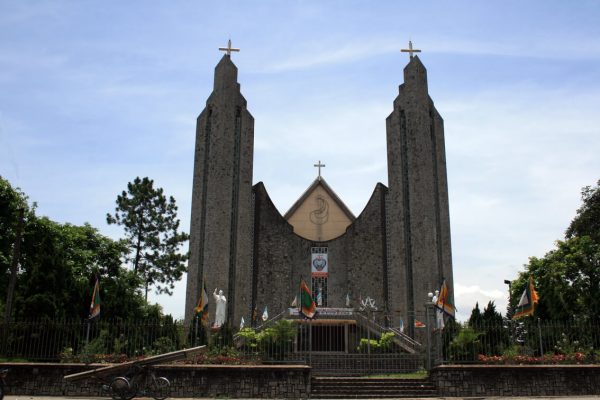
Architecturally, the church building ground is in the form of a cross, the tip towards the south, the north end. According to modern construction techniques, the church has a structure, but the decoration is still according to classical Western art. The supports are cast close to the wall, running gradually forward, soft. The four corners of each corner have three pillars extending outward, forming a large enough space to embrace the sanctuary and the altar.
The church’s heart is large, can accommodate 2,500 people attending the ceremony. There are two rows of colored mirror doors located in the upper part of the heart of the church providing light for the interior. The sanctuary is a circle with levels going up, to the top is a circle but smaller with a monolithic marble altar.
An Cuu River
An Cuu is the name of a small river, a tributary of the Perfume River, in the South of Hue Citadel. The river has many names such as Loi Nong, Phu Cam, Dai Giang, Ha Tu, and Cong Quan. The popular name in Hue is An Cuu River. The entire river is about 30km long, starting to take water from the Huong River from the end of Da Vien islet, flowing through Hue City, Huong Thuy district, and then pouring into Ha Trung Lagoon. Since the Nguyen lords chose Kim Long, and then Phu Xuan was the capital of Dang Trong, the two sides of the An Cuu river were the places of residence, garden houses of mandarins and aristocrats. However, at this time the river was still small, many sections were shallow and narrow. In Gia Long year 13 (1814), after surveying the situation and consulting the elders in Thanh Thuy commune, the king was allowed to open up the An Cuu River and build the Than Phu dam below to get water for irrigation pepper and saline washing for thousands of acres of fields in this area. In the 2nd Minh Mang year (1821), An Cuu River was renamed to Loi Nong River. The stele engraved with this name remains. In the 16th Minh Mang year (1835) when Cuu Dinh was cast, the image and name of the river were engraved in Chuong Dinh.
Beautiful temples in Hue
Tu dam pagoda.
Tu Dam Pagoda is a famous ancient temple in Hue; Currently located at 1 Su Lieu Quan street, Truong An ward, Hue city. The pagoda was painted by Zen master Minh Hoang – Tu Dung around the end of the seventeenth century, and then named An Ton (or Tong) pagoda, which means “taking the transmission of the mind as the thread”.
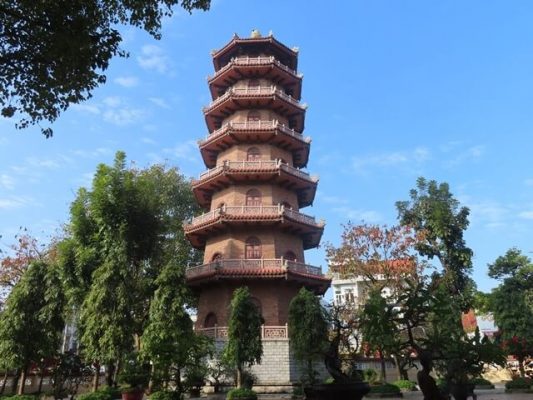
Tu Hieu Pagoda
Tu Hieu Pagoda or Tu Hieu Court is the name of a temple in Duong Xuan Thuong III village, Thuy Xuan ward, Hue city. The pagoda is one of the ancient temples and is a cultural and historical place of Hue’s ancient capital. Tu Hieu Pagoda is hidden in a pine forest in a hilly area of Thuy Xuan ward. The temple campus is about 8 acres wide, the front has a winding water slotting and a romantic landscape.
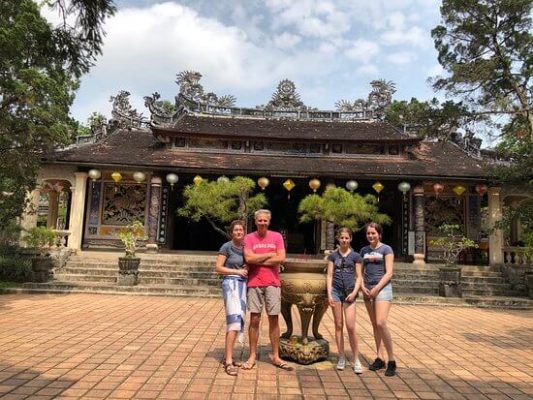
In front of the temple gate, there is a 3-story tower built in 1896 to be used as a place to store the spectacles according to the decree of the king. The gate of the pagoda was built in the style of a rolling arch, two floors with a roof, and right in front of the paved road to enter the main hall is a semi-circular lake with lotus planting and ornamental fish farming. The structure of the pagoda is in the style of three houses with two wings, the former is the Buddha shrine itself, the second is Quang Hieu Duong. In the back house, there is the worshiping ceremony of the capitalist Le Van Duyet with his wooden horse and sword.
The two sides of the temple courtyard have two steles to record the history of the temple’s construction. The pagoda was built in the form of a word (口), the main hall of three houses, two wings, in front of worshiping Buddha, and behind to worship the Patriarch. The backyard is Quang Hieu street, in the middle of the sanctuary, the left is to worship the Buddhist spirit at home, the right to worship the Thai bishops,… The left backyard is Ta Lac Thien (the monk’s house) and on the right is Huu Ai Nhat (guest house).
Tomb of Thai Giam of the Nguyen Dynasty in the temple grounds
Around Tu Hieu pagoda, there are also many tombs of concubines of Nguyen lords. Due to its beautiful and quiet location, not far from Hue city, this place is a place of outdoor entertainment for Hue youth on holidays and holidays. Tu Hieu Pagoda is one of the ancient temples welcoming domestic and foreign tourists, the largest in the ancient capital of Hue.
Bao Quoc Temple
Bao Quoc Pagoda is located on Ham Long hill on the old land called Thuy Loi village, close to Lich Doi hamlet. From here, looking down to the east is Dien Bien Phu Street (the road leading to Nam Giao flock), and looking north is the train station. The pagoda was founded by the Venerable Master Giac Phong, a native of Guangdong, China, in the late 17th century under the reign of King Le Du Tong and named Ham Long Tu. Then Vo Vuong Nguyen Phuc Khoat bestowed the quartet of Bao Quoc Tu in 1747. There are still gilded yellow plates and willows from that time. During the Tay Son period, the pagoda was used as a factory.
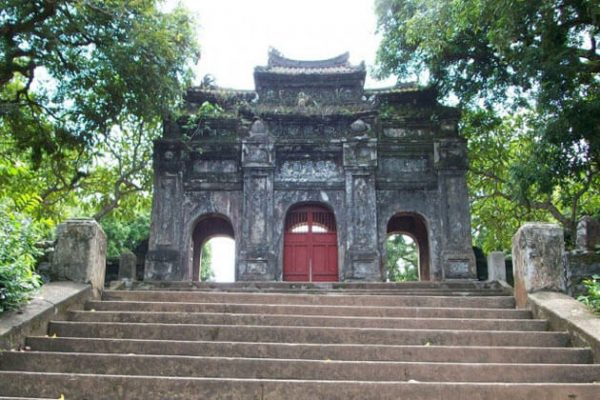
Thien Lam Pagoda
Thien Lam Pagoda was established in 1960 by Venerable Ho Nhan Nhan. Because in 1958, the Church nominated him from Tam Bao to the abbot of Tang Quang Pagoda; After a short time, he realized that the solitary practice of meditating, Tam y Nhat fetching his life by alms was not suitable here, so in 1960 he went to Thuong II village, Thuy Xuan commune, and built a small hermitage in Quang Te hill (now Thuong II Hamlet, Thuy Xuan Commune, Hue City) to practice.
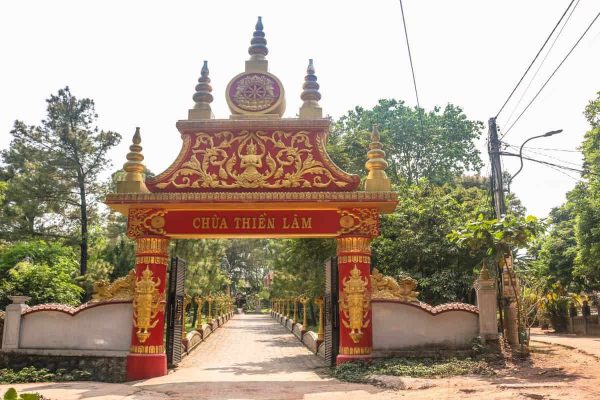
Thien Lam pagoda (also known as “Standing Buddha – Reclining Buddha”) was built in 1960 by monk Ho Nhan with its original shape just a small cup. Up to now, the pagoda is a complex of many architectural works such as statues, tomb towers, Buddha towers, monks’ houses,… in many different positions.’
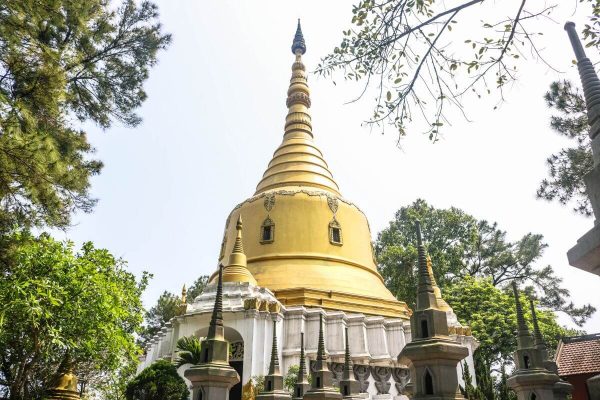
Different from any of the Buddhist temples of Tonkin with the three-door gate leading to the Zen garden, Thien Lam pagoda opens its door to welcome them with the Nam Tong Buddhist-style welcome gate, gentle but impressive. Entering the pagoda, at the end of the campus on the left is a tall, majestic and elegant white stupa in the sky. The stupa has 2 parts: the lower floor is the main hall; The upper floor adorns the relics of the Buddha Shakyamuni and the monks. It is a Buddhist temple in Nam Tong, but still clear in the space and architectural works of the temple. Not carrying on the thickness as the Bac Tong pagodas on the land of Hue, the pagoda “Standing Buddha – Reclining Buddha” evokes a feeling of “strange”, gentle and calm radiating from what the temple has.
Dieu De Temple
Dieu De Pagoda is located on the bank of Ho Thanh River, Hue people call it the Gia Hoi river, or Dong Ba river, now 100B Bach Dang street, near Gia Hoi bridge. Dieu De Pagoda has an important place in the history of Buddhism in Hue. The pagoda was originally the residence of King Thieu Tri before taking the throne, so it had a very beautiful landscape, spacious garden, and green trees. In 1844 the king was embellished and ordained as the National Self. The pagoda has become a famous place on the land.
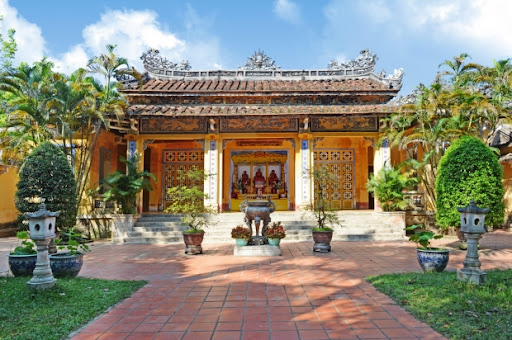
Vong Canh Hill
Vong Canh Hill is a 43m high hill in the southwest of Hue city, the foothill bordering the Perfume river. It is located in the mausoleum of the Nguyen kings and opposite the Hon Chen palace established in ancient times by the opposing faction. Around seven hundred meters from Vong Canh hill are Dong Khanh mausoleum, Tu Duc mausoleum, Thieu Tri Mausoleum, Hieu Dong mausoleum (Minh Mang King Wife), Xuong Tho mausoleum (Tu Du’s wife, Thieu Tri’s wife). Tomb of Madame Thanh Cung (wife of King Dong Khanh), Tomb of Mrs. Tu Cung (wife of King Khai Dinh), Tomb of Prince Canh (son of King Gia Long),…
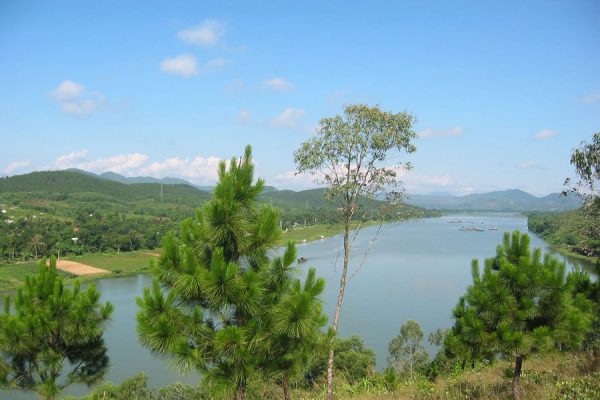
Standing on Vong Canh Hill, one has a panoramic view of many ancient relics and wonderful scenes in a large natural space around, especially the poetic beauty of lyrical. Huong river. The hill sits in the middle of the softest, most tender, and attractive bend of this famous, amorous, and sexy river. This is where rivers and mountains come together to create a magnificent painting space. The meaning of the place Vong Canh is like that.
Thanh Tan Mineral Spring
Discovered in 1928 by French scientists, Thanh Tan mineral spring was quickly researched and applied as a beverage to restore human health. In 1983, this water source was allowed by the Ministry of Health to be exploited as bottled drinking water. However, by the end of 2000, Thanh Tan mineral spring tourist resort became popular and known to many people. Thanh Tan mineral spring tourist area built on an area of 50 hectares. Next to the towering mountains are the adjacent created hills. The green of the mountains and trees has created a relaxing and pleasant feeling from the first minute. Thanh Tan mineral water is located thousands of meters underground, containing Calcium Sulfate and Silicium,… very good for the body. Therefore, this is a suitable destination for many tourists in the chilly weather, changing seasons.
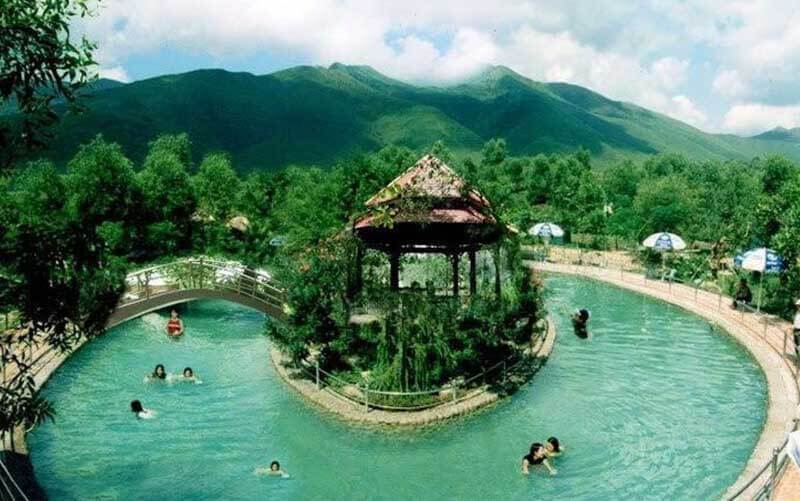
Thanh Tan mineral water tourist area also has a spacious playground for campfire or entertainment at night. After many hours of a soaking, hungry stomach, you will be more delicious with a plate of perch raised with mineral water, deep-fried in lovely tents beside a fragrant lotus lake.
Phuoc Tich Ancient Village
Phuoc Tich ancient village is located on the border between Thua Thien Hue and Quang Tri provinces. According to history books, Phuoc Tich was founded in 1470 under Le Thanh Tong and is surrounded almost entirely by the legendary O Lau river, the river’s water is always blue, making this place almost an island. More than 500 years of existence, experiencing wars of fire and destruction of nature. Phuoc Tich still preserves almost intact the pristine beauty of Vietnamese village life with charming and peaceful landscapes, banyan trees, water wharf, communal yard.
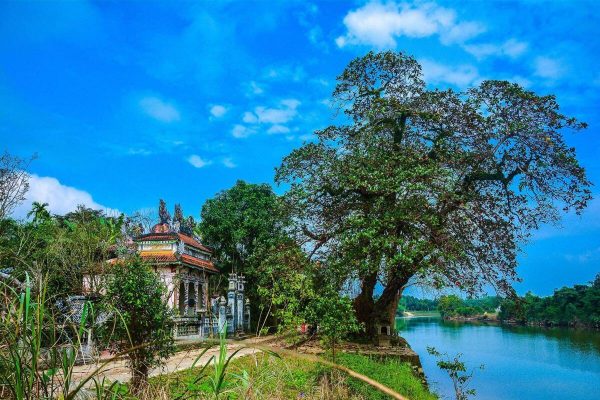
Tam Giang Lagoon
Tam Giang is the confluence of three rivers O Lau, Bo River, and Huong River before pouring into the East Sea. Therefore, Tam Giang lagoon is “symbolic” of the ecological environment of Thua Thien – Hue in the past and present. Not a single tourist comes here, to ignore this famous place.
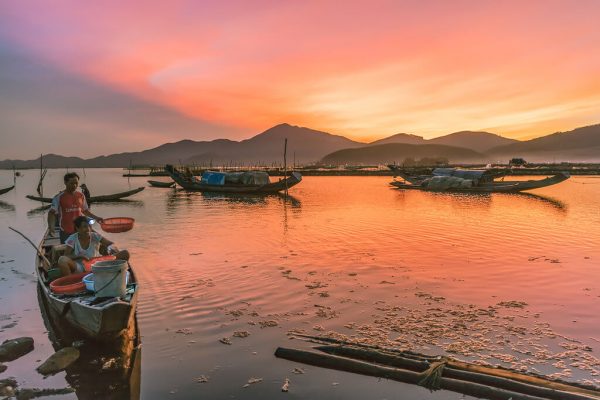
This is the largest wetland in Southeast Asia, the water surface is 248.7 km2 wide, from the mouth of the O Lau River in the north to the mouth of the Huong River in the south. The lagoon has had many aquatic animals for many generations, most of them in Thuan An estuary, O Lau river mouth, Bo river, Thuy Tu lagoon. Cau Hai. At present, there are 163 fish species, many rare and precious species such as sea bass and eel have been identified. Depending on the season, some fish species migrate into the lagoon to breed such as sardines, sea anchovies,… In contrast, mullet, grouper, and rabbitfish living in the lagoon migrate to the sea to spawn. All year round, fishermen catch on the lagoon about 23 species of fish with high economic value, including thick fish, goby fish, goby fish, barramundi, snapper, fish,…
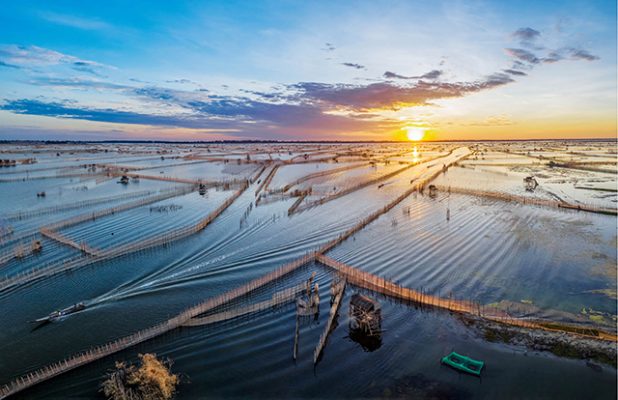
The surface of the lagoon has natural vegetation, so water birds gather here, forming large bird sanctuaries at O Lau estuary, Dai Giang river mouth, and Sam lagoon. Through monitoring, 34 migratory bird species, 36 settlement bird species, especially 21 bird species are on the list of strictly protected European communities and one species listed in the Vietnam Red Book.
The lagoon facing the East Sea stretches for more than 68 km, separated from the sea only by a narrow strip of sand, through the two estuaries of Thuan An and Tu Hien. Therefore, it can self-clean the water environment and is always rushed inside by the East Sea waves, becoming a large “lung” to regulate the ecological environment for the entire Thua Thien Hue province naturally and regularly.
Dam Thuy Tu
Thuy Tu lagoon is one of three lagoons that make up the Tam Giang lagoon. Thuy Tu lagoon includes An Truyen lagoon, Thanh Lam (Sam), Ha Trung, and Thuy Tu. Thuy Tu lagoon stretches from Thuan An bridge to Con Trai over a length of 33km. The lagoon width varies from 0.5km (Thuy Tu lagoon) to 5.5km (An Truyen lagoon), on average 1.8km, the lagoon depth varies from 1 – 1.5m to 3 – 5m depending on the area. but the most common is 1.5 – 2m. The water surface area of the lagoon is up to 60km. This is a place with many beautiful scenes and famous products.
Dam Chuon is part of the system of Dam Thuy Tu. In particular, the nature of the Chuon lagoon is more wonderful in the early morning and the afternoon with colorful colors.
Dragonfly Lagoon
Dam Chuon in Phu Vang district covers an area of more than 100 hectares, located nearly 15 kilometers east of Hue city center. This is a part of the Tam Giang lagoon system with a fresh and peaceful atmosphere.
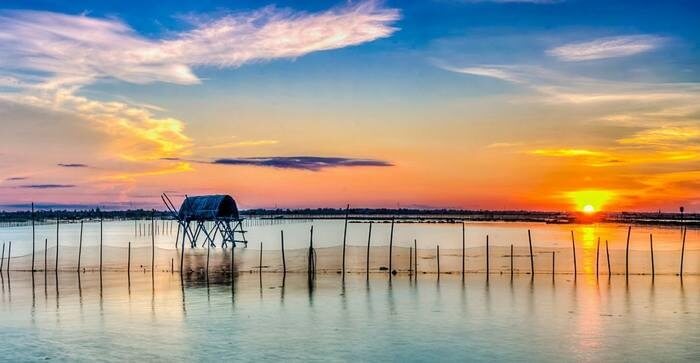
Thuan An Beach
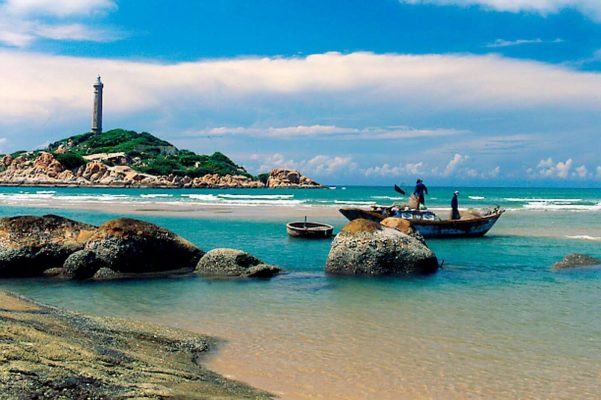
Tile Bridge Thanh Toan
Thanh Toan tile bridge is a wooden arch bridge with a tile roof over a ditch of Thanh Thuy Chanh village, in Thuy Thanh commune, Huong Thuy Town, Thua Thien – Hue province, about 8 km southeast of Hue city. This is a wooden bridge that is classified as rare and has the highest artistic value among ancient bridges in Vietnam.
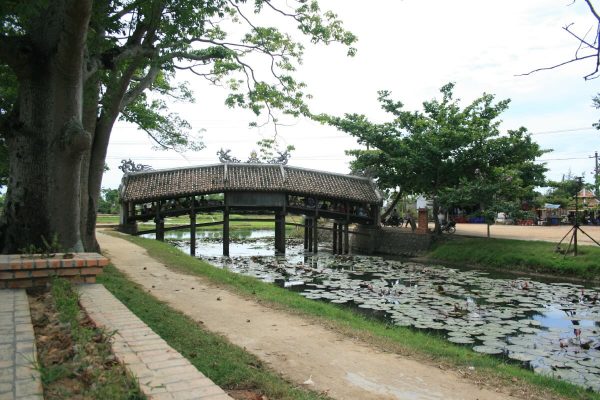
The Thanh Toan tile bridge is built in the way of “the upper house and the overseas” (above the house, under the bridge). The bridge is 43 meters long (18.75 meters), 14 meters wide (5.82 meters), divided into 7 sections, the two sides of the bridge have two rows of wooden platforms and balustrades for sitting back. The bridge is covered with a roof and tile. The first bridge built more than two centuries ago has been repeatedly damaged by storms, floods, and wars. However, after the damaged times, the commune people all repair, embellish and preserve them together.
Thien An Hill – Lake Thuy Tien
Thien An is a place of many pine-growing hills southwest of Hue city, near the tomb of King Khai Dinh. On the top of the hill, there is Thien An Monastery, around the hill area, there is Thuy Tien lake and Ba Vanh tomb, still imprinted with an old suspect. With peaceful scenery, fresh space, Thien An and Thuy Tien are quite interesting weekend getaways. Currently, this area is the entertainment center of Thua Thien Hue.
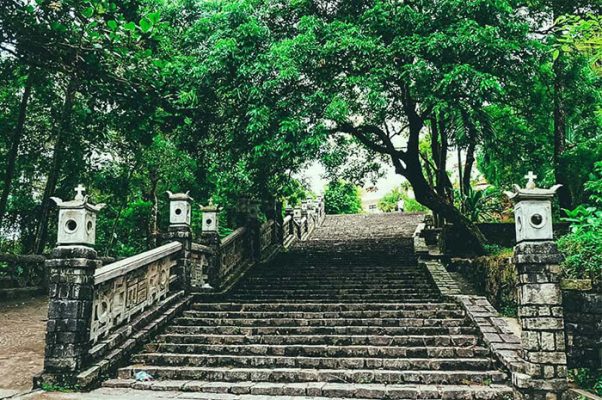
“Dăm” Stone Waterfall
“Dăm” Stone Waterfall is a small waterfall in Duong Hoa, Huong Thuy town. You can organize with family and friends to come here to have fun, take a cool bath on holidays. From the center of Hue city, there are two roads to the waterfall: one is along the road through the Ta Trach lake project; the second is going in the direction of Tuan Bridge, passing Tan Ba pier. Starting in the direction of Week Bridge, we will easily buy fresh food or some local agricultural products at the countryside market. Meet the bar during tea season, do not forget to visit some roadside orchards, enjoy the scenery while buying this specialty to bring refreshments.
The road to the waterfall is quite unspoiled, so it is very suitable for those who love adventure by motorbike, especially young people. Want to conquer the height, catch the watershed, be very prepared to not slip when walking along the cliffs; You can also have fun in the cool lake below the waterfall. The romantic one goes to pick wildflowers, look for ripe sim,… On the way to the waterfall, there is a small house of Forest Ranger Huong Thuy. The staff members will be the “locals” that provide much useful information about the people and creatures of this area. If you have difficulty in walking, looking for water,… do not hesitate to ask for help.
Huyen Khong Son Thuong
Huyen Khong Son Thuong, located in Cham village, Huong Ho ward, is a famous pagoda, a scenic spot of the ancient capital of Hue. The pagoda belongs to the Theravada Buddhist sect, was founded by Venerable Gioi Duc in 1989. The temple is located in the middle of a green, cool, year-round pine forest, birds chirping. Huyen Khong Son Thuong is located halfway up the mountain with a strange and fanciful beauty. The pagoda does not have a large Tam Quan gate, but the gate is just as ordinary as the gate of a Hue garden house. The temple campus is a green garden with small streams blooming with purple water lilies, precious orchids, porcelain trees, cedars, cypresses,… hundreds of years old, peaceful space.
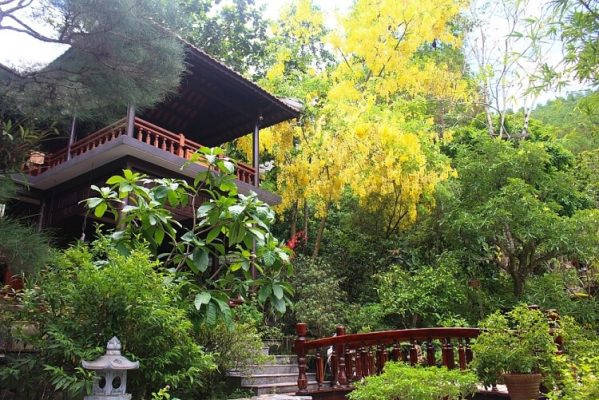
Truoi Lake with an area of about 400 hectares, a reservoir capacity of up to 60 million cubic meters of water, is the largest irrigation project in Thua Thien – Hue province, to irrigate the fields of Loc Hoa and Loc Dien communes. Phu Loc district. Previously, the area of the lake was a very small Truoi dam to prevent water 50 meters high was built by Thua Thien – Hue province in 1996.
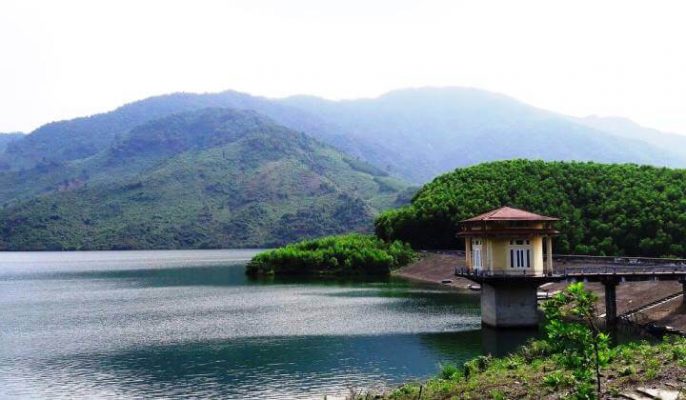
Truoi Lake tourist area is located at the foot of the majestic Bach Ma Range. Coming to Truoi Lake, visitors will see clear blue water surrounded by green mountains, charming landscapes.
Truc Lam Bach Ma Zen Monastery
Belonging to the Truc Lam Yen Tu Zen sect, Truc Lam Bach Ma is the first Zen monastery in the Central region, located at Bach Ma mountain, Truoi lake area, Loc Hoa commune, Phu Loc district, Thua Thien Hue province. At the height of 1450m, the temperature is usually from 19-21 oC, Bach Ma is considered one of the ideal climates. Truc Lam Bach Ma Monastery appeared in the heart of Truoi Lake like a flower, resting its head on the mountain of Bach Ma forest stretching to attract the eyes.
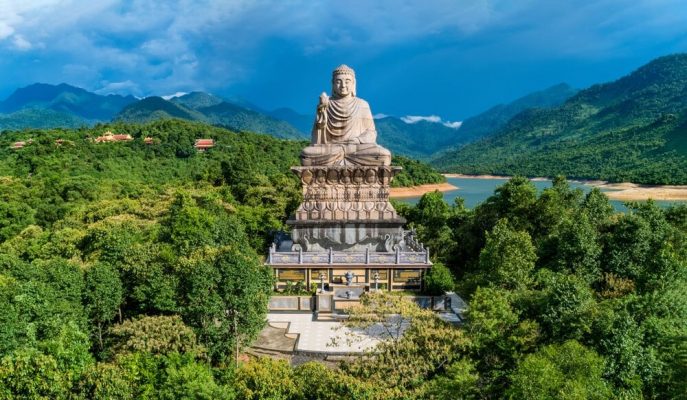
About 30 km from Hue city to the South, to Truoi land, go to Truoi Dam, cross the steep slope on the back of the hill, and a vivid water-ink picture appears. On the other side of the water, at the foot of the sacred mountain, the pavilion, the main hall, the road, the road, the staff, the bell floor, the relic tower shines down on the water mirror of Truoi lake, far away are clouds swirling around The top of the mountain creates a fantastical, pure and peaceful space.
Passing the immense river bed of Truoi lake, about fifty minutes, by small canoes, you will arrive at Truc Lam Bach Ma Monastery. Step up from the 172 steps of the three steps are the three relics of Truc Lam Bach Ma Zen Monastery. Built-in harmony in a whole body of Buddhist architecture and Truc Lam Yen Tu Zen Monastery, Truc Lam Bach Ma also has the very shrine of Buddha sitting under the bodhi tree, behind the main hall is the area. The street is dedicated to the ancestor Dat Ma of the Truc Lam sect. Truc Lam Bach Ma Zen Monastery is a scenic complex in the charming mountainous area that has become a tourist destination for tourists coming to Hue.
Bach Ma National Park
Bach Ma National Park, 60km south of Hue, at an altitude of 1,450m, is a famous resort in Vietnam. On the top of a majestic mountain in 4 green seasons with waterfalls, forest streams, is a temperate climate like SaPa, Tam Dao, Da Lat,… Bach Ma mountain is also a gathering place for many kinds of precious animals and plants. rare in the tropics.
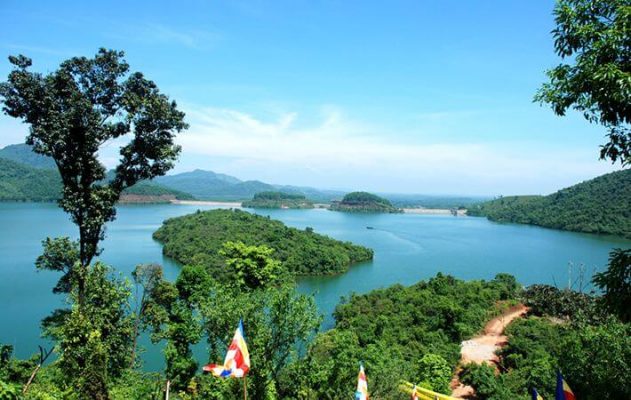
Bach Ma Mountain is famous for its streams and many spectacular waterfalls. Do Quyen waterfall is 400m high, 20m wide. On summer days, on both sides of the waterfall, Do Quyen flowers bloom like two giant carpets of silk flowers. In the center of the resort, there is a Silver waterfall 10m high, 40m wide like a white curtain swaying in the wind.
Standing on the top of Bach Ma mountain, you can get a glimpse of the splendid panoramic view of Hai Van Pass, Tuy Van Mountain, Cau Hai Lagoon, and the shimmering electricity of Hue city at night.
Canh Duong Beach
Canh Duong is one of the beautiful beaches in Thua Thien Hue, about 60 km south of Hue city. Canh Duong beach is 8 km long, 200 m wide, arc-shaped, between the foot of May Tay and the foot of May Dong, the coast has a gentle slope, smooth white sand, clear blue seawater, and relatively windtight. conducive to the organization of various types of tourism and sports.
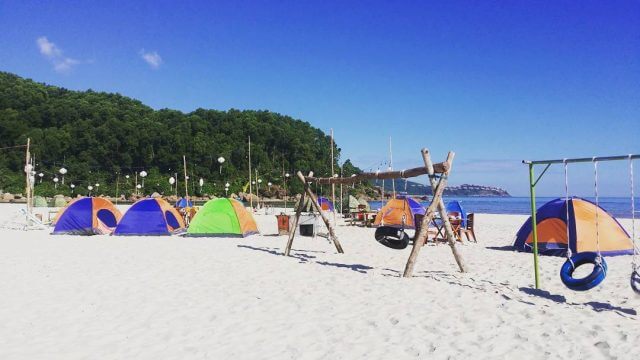
Lang Co beach is about 8km long, located along National Highway 1A, next to Hai Van pass and 24km from Bach Ma National Park. This is a beach with a gentle coastline, white sand, medium and large waves, the tide rises and falls according to the semi-diurnal tidal regime with a low difference (only about 0.7-0.8m), very suitable for this type. tourism image of swimming, relaxation, scuba diving, and has been identified as an ideal resort for decades. Located adjacent to Lang Co beach is Hai Van mountain – Hai Van Quan, a famous landscape of Vietnam. Along the foothills of Hai Van mountain, Lang Co beach has coral reefs, lobsters, and much high-value seafood. In that area, there is Son Cha Island (a small island), which preserves many kinds of wild fauna and flora.
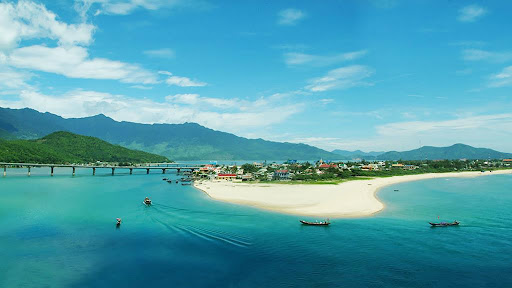
Behind the beach is Lap An lagoon and Bach Ma mountain range. All of these factors give Lang Co great potential for developing many types of tourism services: resort, scuba diving, wildlife – flora and fauna, aquaculture,…
Lap An lagoon (An Cu lagoon) is located near the National Highway 1A, the section passing Lang Co town, Phu Loc district on the road connecting Da Nang to Hue. The lagoon is located in a quiet beautiful position at the foot of Phu Gia pass with a radius of 15 km2. Surrounding the lagoon is the majestic Bach Ma mountain range, in front of the lagoon is Lang Co Bay.
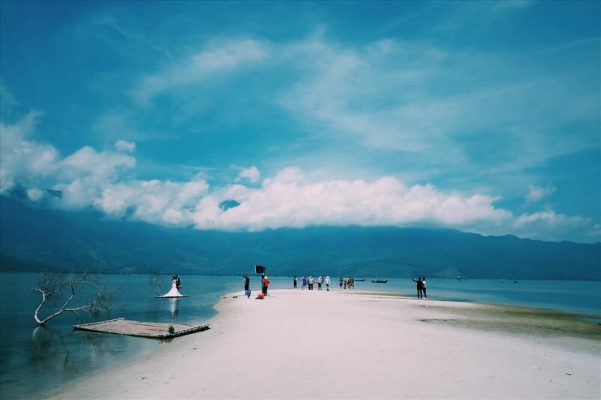
Cau Hai Lagoon
Cau Hai lagoon is the largest lagoon in the lagoon system of Tam Giang, with a circumference of more than 100km, located in the South – in the territory of Phu Loc district, Thua Thien Hue. To get here, you can go two ways: one is from the intersection of Phu Bai airport, follow Phu Bai – Truong Ha street towards the sea, meet NH 49B, turn right about 30km, is Tu Hien gate, that’s where capture the most beautiful Cau Hai lagoon, or follow National Highway 1A from Hue to Da Nang, to Cau Hai station area will see immediately on the left is Cau Hai lagoon. About 8km more, you will meet NH 49B again to turn left to the Tu Hien entrance.
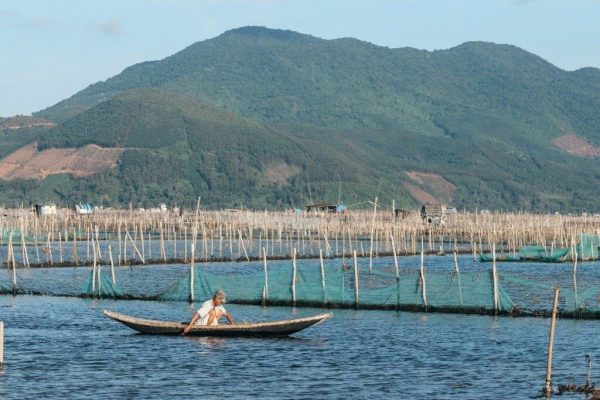
Suoi Mo or many people still call Mo waterfall is an interesting tourist destination located in Lang Co town, Phu Loc district, about 65km from Hue city. Suoi Mo welcomes visitors with a king fresh and cool primeval forest. This is an interesting place for families who want to escape the central sun during hot days.
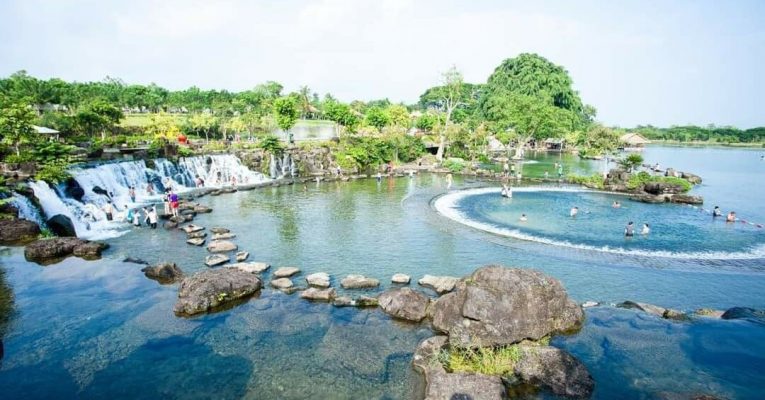
Hai Van Quan
In the past, Hai Van Quan was a key strategic location of Thuan Hoa – Phu Xuan – Hue in terms of military and road traffic, which was the southern gate of this land. Hai Van Quan is located at the top of a pass over a mountain range that runs across the sea from the Truong Son range. The top of Hai Van pass is 496m above sea level; 77.3km south of Hue and 28.7km north of Da Nang.
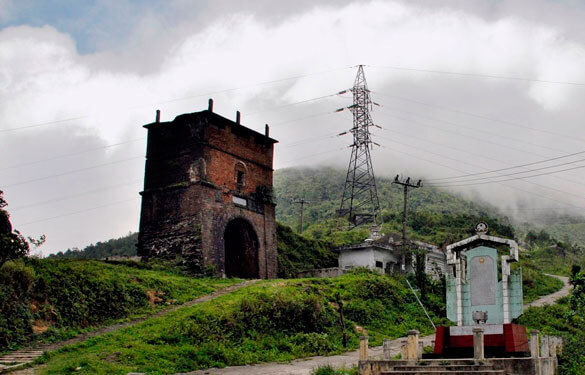
In the first “Du Chi” of our country compiled by Nguyen Trai in 1435, the author mentioned the place “Ai Van”, as a weakness on the road from Thuan Hoa to Quang Nam. And now, together with Lang Co – Bach Ma – Canh Duong, Hai Van Quan is attracting domestic and foreign tourists to visit and enjoy the majestic beauty of mountains and sea.
Mo Waterfall
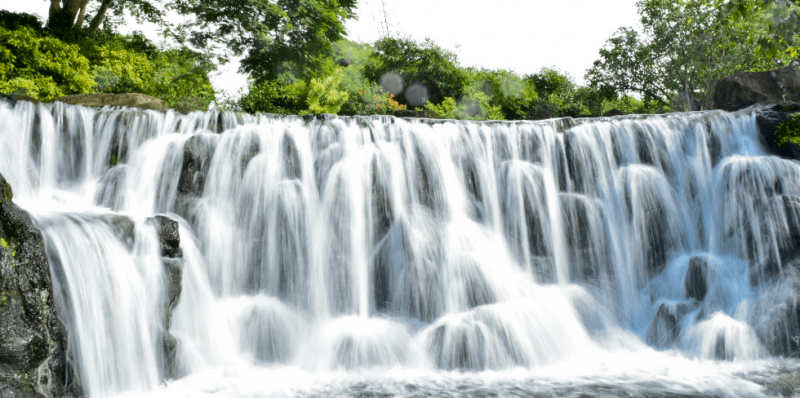
Kazan Falls
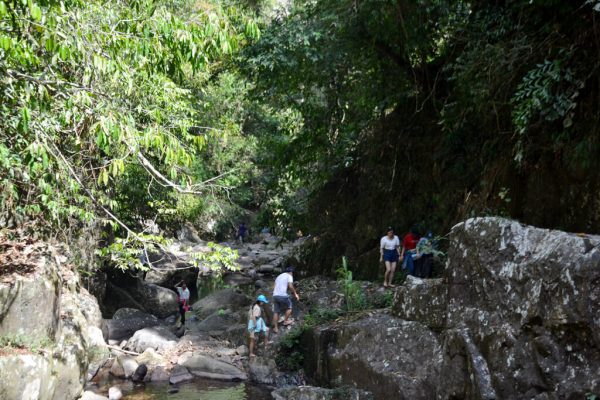
Pâr Le Stream
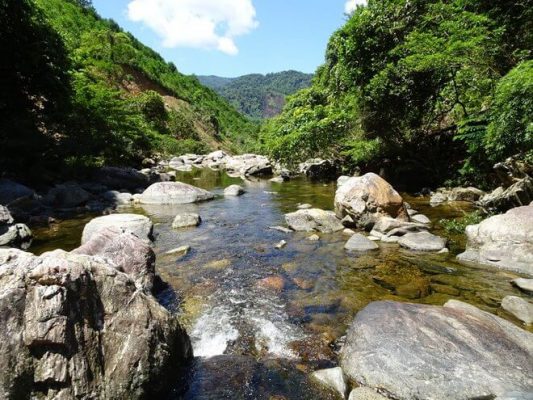
Vietnam-Laos Border Landmark
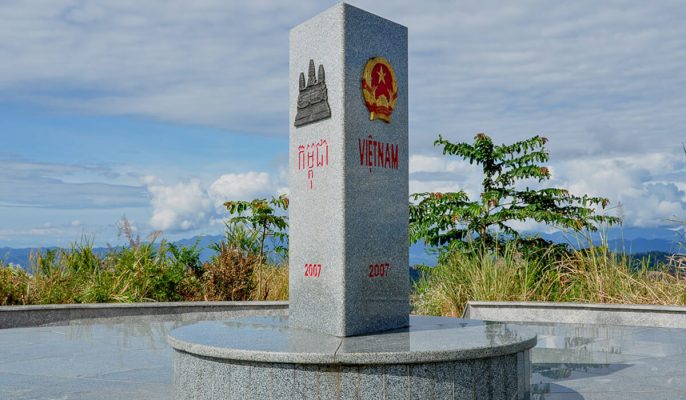
Delicious dishes in Hue
It can be said that Hue people come to cuisine, not in a simple biological sense, but to enjoy it with both smell, sight, and hearing. Speaking as writer Nguyen Tuan when he was born, Hue people like to eat with their eyes. But even though they mobilize all their senses for nutrient absorption, the Hue people only need to “eat the fragrance for flowers”, as they often talk about themselves. That serenity can be seen on the tiny duck cake that is almost melting at the tip of the tongue, the thin rice cake leaves, the Nam Pho cake bowl arranged like colorful pictures and Con Hen corn tea. cool, but the aroma follows the dream,… Hue dishes, whether it is a delicacy or a simple folk, make someone taste so delicious once they “suck it up”, to and then forever attached to that unforgettable taste. It seems that through the skillful hands of the woman, the food has been blown into Hue’s soul and a little spirituality.
Hue especially preserves more than 1000 dishes cooked in the Hue style, including the benevolent dishes of the Nguyen Dynasty kings. The menu of dwellers has over a few dozen dishes of the delicacy of delicacy, which are carefully prepared and organized. The folk dishes are very popular among the masses with a rich menu of hundreds of dishes, cleverly prepared by Hue housewives with excellent cooking techniques, attractive flavors, and attractive colors, attaching importance to quality over quality; the art of presenting the dishes is very beautiful, the art of enjoying is exquisite. In addition, if anyone has ever enjoyed a Hue vegetarian meal (dishes made from plants), surely will never forget the pure taste of Hue dishes.
Rice with mussels is a specialty of Hue cuisine. Rice with mussel is presented in the form of cold rice mixed with mussels sauteed in oil and spices, mussel sauce, fish sauce, cabbage, greasy, grilled rice paper, crispy fried noodles, colored chili, whole-grain peanuts, cooked cooking oil, pepper, refined flavors (monosodium glutamate, MSG) and salt.
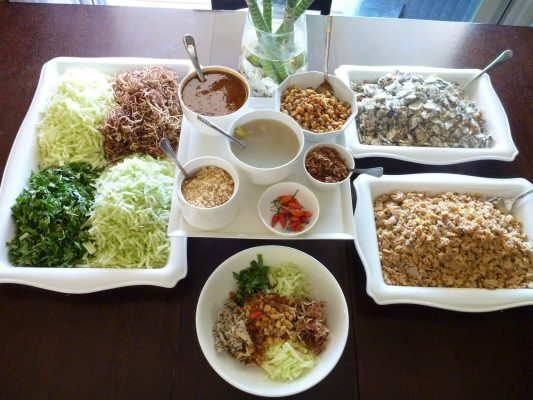
The mussel rice dish originated as a familiar dish of the people of the fishing village,… from the locality, it was called the sampan people. They live all year round on boats, floating on the river branches with low income, not much income. Fishing nets that can be found in the river like shrimp and fish,… are high-end food, often sold, while inexpensive mid-range like snails, mussels,… make the most of daily meals. Clams are almost always treatable. If you w ant to eat delicious mussel rice, you can go to Han Mac Tu street or to Con Hen, Vi Da to enjoy.
Bun Bo Hue is one of the specialties of Hue, although it is available everywhere. In Hue, this dish is simply called “beef noodle soup”. Other localities called “Hue beef vermicelli” indicate the origin of this dish. The main ingredients of the dish are vermicelli, beef, pork, and a distinctive red broth. In the broth of vermicelli, Hue people often add a little fish sauce, contributing to the unique flavor of Hue beef vermicelli pot. After the beef bone is cooked until cooked, people often add little pork pies or pureed beef rolls. Beef can be thinly sliced, dipped in boiling broth before being placed in a bowl of vermicelli (called raw beef). People often add a little chili powder and spices to the bowl of vermicelli and eat raw vegetables including bean sprouts, herbs, lettuce, baby vegetables, chopped banana corn.
Noodles are not available anywhere, but the appearance of the bun is different in each region. Hue noodles are bigger than other places. There are two types of vermicelli, the vermicelli is usually rolled into small cubes when hungry, but dipping it with garlic lemon chili sauce is great. And the vermicelli used to make pork rolls or crab vermicelli is usually larger.
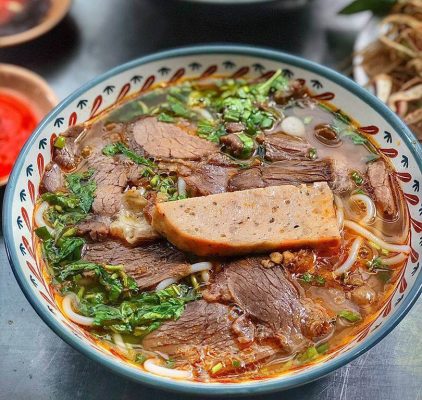
Along the two sides of the road in Hue, you will immediately meet the very popular but also very delicious noodles, very crowded,… A bowl of vermicelli or vermicelli that attracts customers is thanks to the sweet and fragrant water. The vermicelli pot, a very thin flexible aluminum pot and very cleverly milled by Hue matters, looks like an old copper pot but has a deep and wide mouth. The pot is scrubbed very carefully so it is always bright white and looks very good on the eyes. Eat a bowl of steaming vermicelli, the clear white strands that stand out on it are pink-grown balls (pellets from raw rolls and crab meat), softly simmered hooves, with a hint of white stalks. The price and the green color of raw vegetables, take a little rich fat leopard juice with a little seasoning of the lemon chili fish sauce, you will find it extremely interesting, both spicy, hot, pungent, and hear the sweetness of the vermicelli juice. Of meat running slowly into the esophagus, you will certainly not forget this flavor. There was a time when eating vermicelli brought me to tears at that time to feel how deep the taste of Hue was.
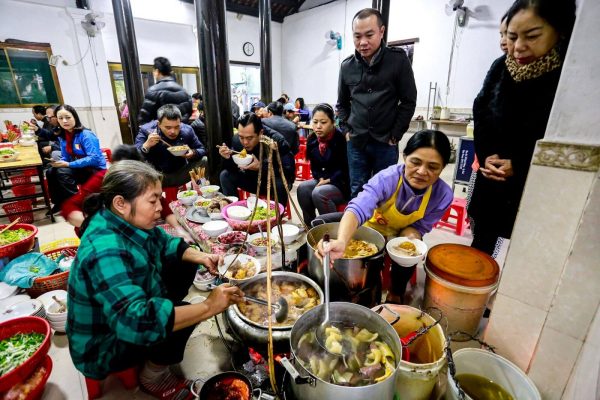
Besides the shops, fixed shops on almost all the streets of Hue city, every morning you walk the streets of Hue you will see Hue girls about eighteen and twenty, shoulder to shoulder. One bun went in groups, the smoke floated away, laughing happily. That was a Hue girl selling vermicelli to customers all over the city. Each person has each look and each flavor, but all Hue and Hue are from vermicelli, from aluminum pots, from fast and smooth gait, and no matter how difficult you are, you will be satisfied when Enjoy a very popular noodle bowl, very cheap, but sometimes very delicious.
If you want to enjoy authentic Hue beef noodles, you should go to the area of Chi Lang Street intersecting with Nguyen Du. There are some famous beef noodle shops here such as O Lieu beef noodle soup, Mu Drop beef noodle soup, Ba Phung beef noodle soup,…
The Typical Cakes of Hue
The Banh Beo consists of three main parts: the cake made from rice flour, the filling to sprinkle on the cake made with pureed shrimp, and the sauce, a mixture where fish sauce is the main ingredient and often poured directly into the cake without dipping. . The auxiliary ingredients of the Banh Beo are usually onion fat, crushed roasted peanuts. Depending on the locality, there are different ways to add or remove this cake, for example, in Saigon, they often leave green beans, sour food, and serve them with molded cakes, small cakes, and filtered flour cakes.
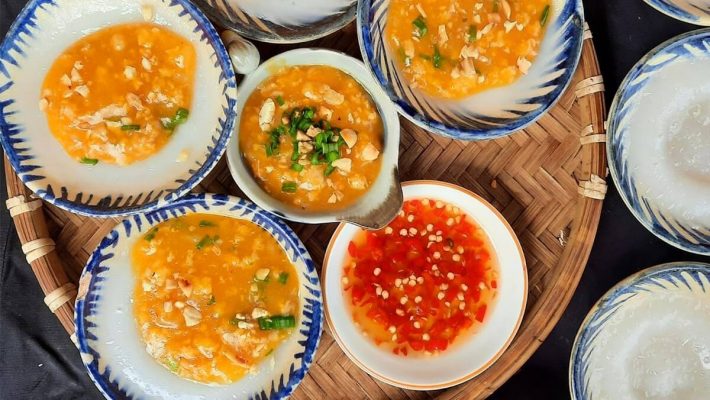
In the Central region, Banh Beo is often divided into two types: Quang Nam Banh Beo and Hue Banh Beo. Quang Nam water fern cake is usually big, thick, served with a paste made of dough including meat, minced shrimp, chives, when eaten with a little scallion, minced chili. Hue Banh Beo is a little different, the cake is thinner, has dried shrimp powder, when eaten with crispy pork skin.
Banh Bot Loc
Tapioca cake is a type of cake from tapioca, filtered for starch, then boiled a small amount of flour, stuffed thoroughly, and made cakes. The filling is usually made of shrimp mixed with spices, can be made with lean pork, or a mixture of shrimp – pork. After being squeezed into the cake, the cake is wrapped in banana leaves (or may not be wrapped) and steamed. This is a popular dish in the North Central provinces and especially Hue.
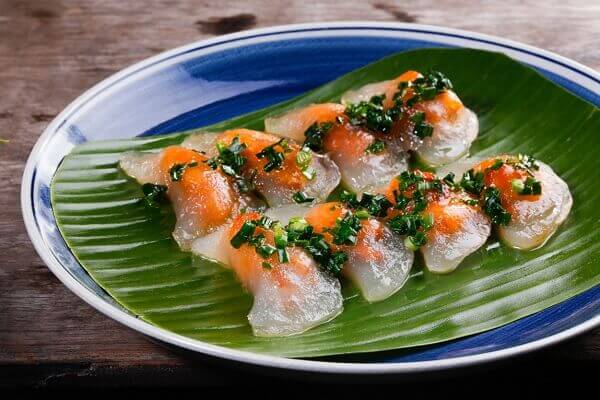
Banh Nam is a type of cake and typical traditional cuisine of Hue, along with Banh Beo, banh mi. This is a cake made from rice flour that is both delicious and healthy (the elderly, children, and sick people can eat it). full moon day, the first day. In particular, there are rice cakes filled with toad meat, for stunted and malnourished children, as delicious and attractive as shrimp cakes.
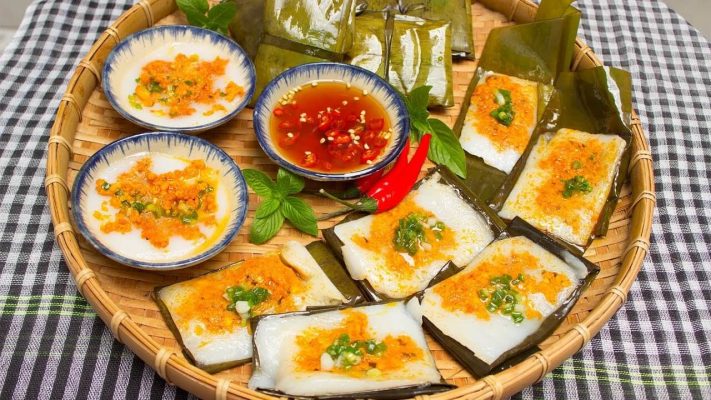
Banh Ram It
In Hue, there is a kind of cake that combines two different types of cakes, which are crispy and sticky, but not greasy because it is dipped with sweet and sour fish sauce, which is a little ram. It seems that ramen cake and little cake are two kinds of cakes that do not mix with each other, but through the talented hands of a Hue woman, little ramen has become a folk dish of Hue known to tourists from near and far.
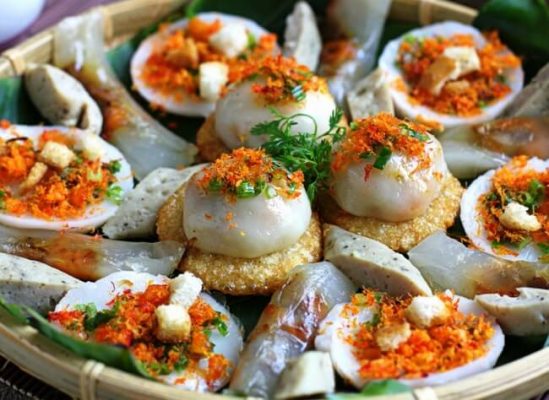
The little ram has two distinct parts: the ram and the little cake. Although the cooking method is different, both parts are made from sticky rice. Sticky rice cakes must be delicious, white, and sticky rice. The glutinous rice is pureed into a powder, mixed with salt, and warm water slowly little by little. Use your hand to knead the dough until it forms a smooth, soft, but not flaky mass, and squeeze it into small balls the size of two fingers. Shrimps whole, chopped bacon, seasoned with sugar, delicious fish sauce, pepper, minced purple onion, add a little oil or fat, simmer for 15 minutes. Rub some cooking oil into your hands, press each dough into a flat shape, take a spoon to scoop the prawns and put them in the middle, and then round them up. Put the cake sparingly in the tray, steam for about 10 minutes after the water boils. The cake is soft and white. Take out the rice cake to cool, cover with banana leaves to prevent the cake from drying, but remember not to cover it to make it sour. Different from cakes, when battering with ramen dough a little less water to make the dough a bit hard. The ramie does not need to be filled, the cake is fried in a greasy pan until it is crispy and dark yellow. Take out the cake and leave it on the absorbent paper to drain the oil. Place a little cake on top of the ram, use the ballast to thin it out, and squeeze it into the ram.
When presenting the plate, the Hue people usually put the little white cake on top and then add a layer of burnt yellow shrimp powder that looks so attractive. The unique feature of the little ram cake is dotted with sweet and sour fish sauce, specially prepared, not too salty, or too sweet, adding the spicy taste of Hue chili slices. The combination of the crispy taste of the ram with the aroma, the softness of the cake, and the sweet and savory taste of the fish sauce has satisfied many diners.
Banh Khoai is poured with ground rice flour blended with water and egg yolk, then added pepper, onion, fish sauce, salt, peeled shrimp, sliced grilled beef (or bird), chopped fat, and raw meat bean sprouts. The cake mold is made of round cast iron, the size of two child’s hands with handles. When customers are eating, the restaurant will set the mold on the bakery. Scoop a scoop of egg powder into the grease hot mold. The sound of the dough and the fat is seductive, the flour is ripe, then pick up a piece of roast beef, a small slice of fat, a few shrimp, put in half of the cake, use chopsticks to turn the rest upside downturn the cake into a semicircle, turn the cake to both sides, then place the plate.
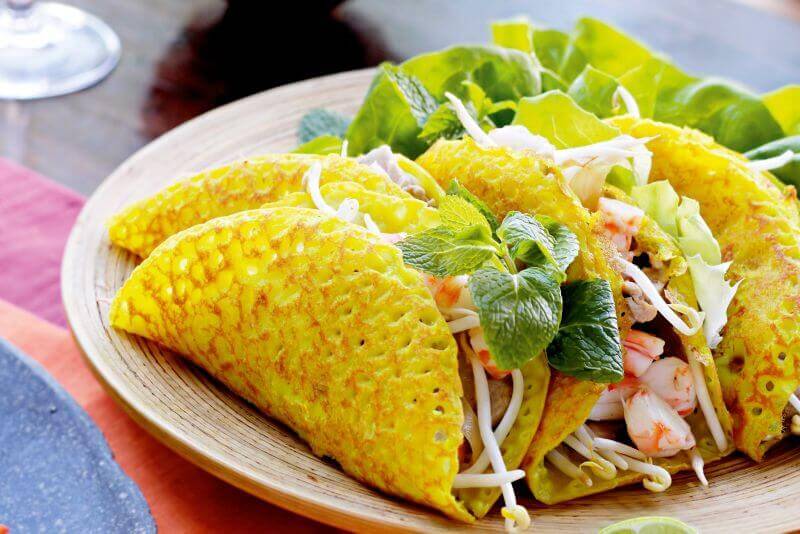
The cake is delicious partly thanks to the broth, a sauce that only good chefs can make. This is the heirloom secret, determining the quality, creating the premium taste of the cake. Hue broth is carefully processed with dozens of ingredients such as semolina, pork liver, sesame (sesame), roasted peanuts,… Thuong Tu restaurant has existed for nearly three or four decades and has become a culinary culture. Hue, captivating tourists, is familiar with the Co Do like mussel rice, the bell of Thien Mu pagoda, the boat of the Perfume River.
Banh Uot Thit Nuong Kim Long
The wet cake is a type of rice paper made with rice flour mixed with filter flour, coated thinner, and used immediately (should be called wet cake, not dried like rice paper). Grilled meat is usually thinly sliced bacon, marinated with pepper, onions, fish sauce, five flavors, and sesame (sesame). After a few hours, the meat is marinated and grilled on a red charcoal stove until it is fully cooked and aromatic. Take this barbecue sandwiched with herbs, bean sprouts, lettuce as a filling to roll wet cake (This dish is almost similar to the style of noodle roll in Hanoi, but in Hanoi is rolled with beef).
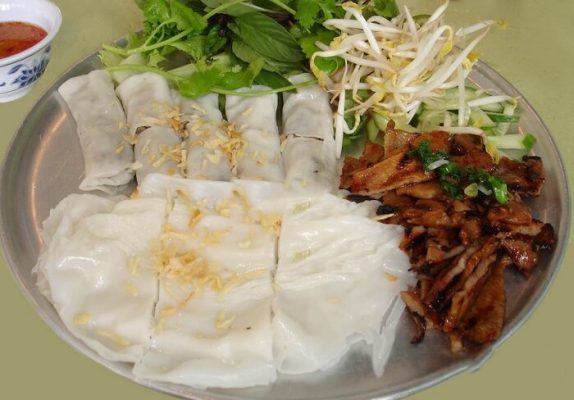
The delicious and attractive Kim Long barbecue wet cake is thanks to its special dipping sauce, which is processed by the owners from pure fish sauce, sugar, lemon, garlic, chili,… as a secret passed down generations. Thanks to the unique flavor of the sauce that Kim Long’s popular dish is known to many tourists, it adds a highlight to the colorful culinary picture of Hue.
With such a unique taste, if you have the opportunity to come to Hue, on the way to visit Linh Mu Pagoda by car or boat, do not forget to stop by Kim Long to enjoy this dish rich in the flavor of this homeland.
Bun Thit Nuong
Hue grilled pork noodles served with cucumber, pickles, raw vegetables, roasted peanuts, scallions,… All are put in a bowl and poured broth. Looking at the bowl of vermicelli you will be conquered immediately by many colors, when you eat, you can feel a lot of flavors at the same time such as the gentle sweetness, the greasy taste of peanuts, sesame, the fresh and sour taste of vegetables, or spicy chili,… A harmonious combination of color and flavor.
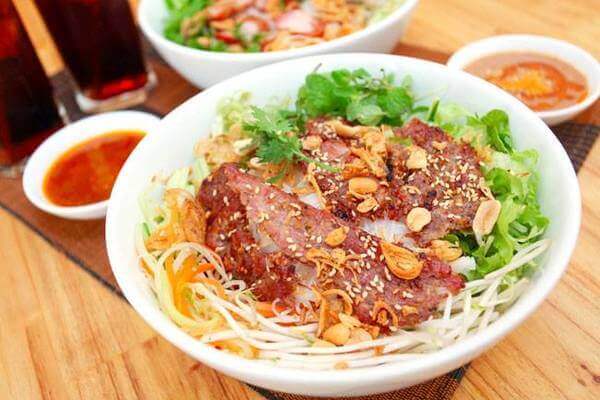
Coming to Hue without eating spring rolls is very regrettable. The attraction of this famous Hue dish probably comes from a piece of spring rolls that are marinated with a special recipe and then after baking over fragrant embers and broth is made from dozens of originals. Various ingredients such as cooking oil, pork liver, rice powder, sugar, fish sauce, cinnamon chi, anise, and coconut milk. Golden grilled spring rolls with raw vegetables, star fruit, bean sprouts, pineapples, thin sliced green banana slices, and broth are nothing more delicious.
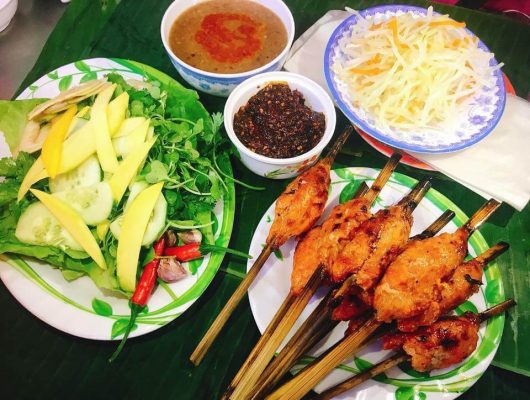
Vegetarian Dishes in Hue
According to incomplete statistics, there are 125 vegetarian dishes in Hue, which shows the richness and diversity of the cuisine of this Kinh land. Hue cuisine has many different styles, divided into many categories such as Royal cuisine, folk cuisine,… In which there is a quite special culinary style here that is Vegetarian Cuisine. The reason that vegetarian cuisine is very developed in Hue is that it is the cultural center of Buddhism in the country.
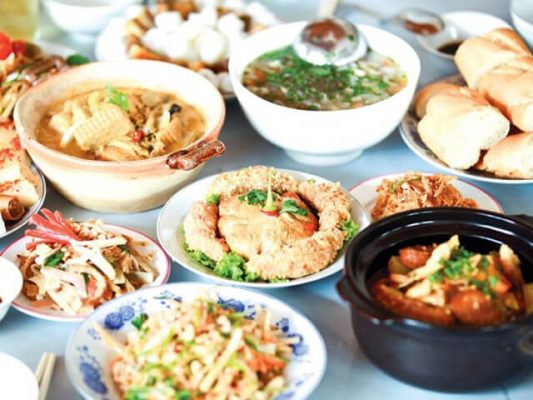
Hue people believe that vegetarianism is benign and calm, so everyone wants to be vegetarian to maintain their freshness mentally. At first, vegetarianism was limited to the Buddhist temples or families, but today it is no longer the “heritage” of the temple, it has spread to folklore and become. a tourism product. In the process of economic integration and development, Hue has many changes, but the vegetarian custom is still circulated and widely popular among most Hue residents.
Banh Canh Hue
Banh Canh Hue is cooked in flour with fish and pork skin, or with minced meat and pellets,… The process is simple and quick: the broth is boiled in a pot, the dough is finished rolling around a round aluminum tube. cutting board. Use a knife to cut into small pieces, and fall into a pot of hot water. When the dough is just cooked, take it out in a bowl, make a broth with chopped pork, fish and onions, add seasoning and eat it hot.
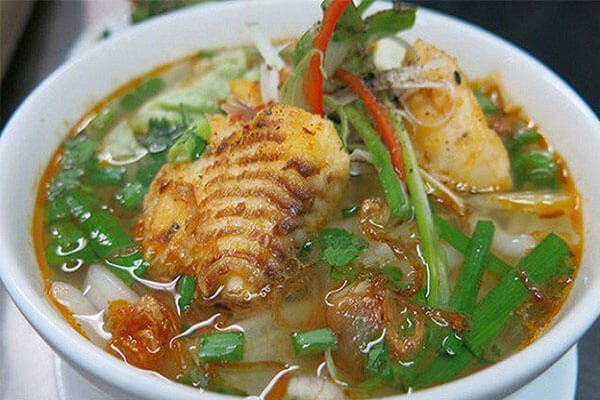
Nam Pho village, Phu Thuong commune, Phu Vang, about 6km from the center of Hue city, has a profession of selling traditional soup porridge. Although it is also a Banh Canh porridge, it’s completely different from the new generation of Banh Canh. Therefore, if you do not know, it is easy for tourists to get confused,… Starting from Nam Pho, going to Vy Da, going to Dong Ba market, going to Thanh Noi,… The Banh Canh line also sold banh mi, little cake, Banh Nam, etc., which are Hue specialty cakes. Nam Pho is a traditional soup made from rice flour (in the past there was no flour), only crushed shrimp to mix eggs. The soup bowl is flat, the broth is clear and thick, and fragrant,…
Types of tea Hue
Hue is not only attracted by the serene beauty and moss of the temples and mausoleums but when coming here, visitors are also attracted by the richest and most diverse culinary treasure of Vietnam. In which, Hue tea is considered the “heart” dish of many tourists when coming to the ancient capital.
Across the alleys in Hue city, walking a few hundred steps, you found a teabag. And although it is a bag of unnamed seaweed tea, the delicacy, and ingenuity of the smooth, smooth taro teacups, soft filter powder, fragrant corn teacups with a sweet and young sweet taste,… generic by the name of Hue tea that we eat anywhere else.
There will never be enough stomach to taste all the delicious flavors in the Hue tea menu. Because if only the royal tea has up to 36 types, each has its flavor. If you like sweet and fragrant flavors, you can choose lotus seed tea, green bean tea, and if you like fruit, pineapple green tea, pomegranate tea, mulberry tea, and chamomile tea are great choices.
You can enjoy typical tea dishes of Hue at Dong Ba Market, Alley Tea Shop (Hung Vuong Street), with filtered powdered tea wrapped with roasted meat can be eaten at Mo Ton Dich (Thuong Bac Park, Dinh Tien Hoang – Tran Hung Dao intersection, the shop only sells from 4:00 pm), corn tea can be enjoyed at Con Hen.
Chè bột lọc heo quay
Powdered tea is in the form of small round pellets, made of flour, when boiled, the powder is from opaque white to clear white, served with sugar water and this is a tea that is always eaten cold or warm. eat cold. Roast meat filter tea is made from pieces of roasted pork, cut square with small dice (including pork skin, meat) covered with glutinous powder, and then poured into sugar to boil into tea. This tea has both a sweet and salty taste, so it is not greasy to eat.
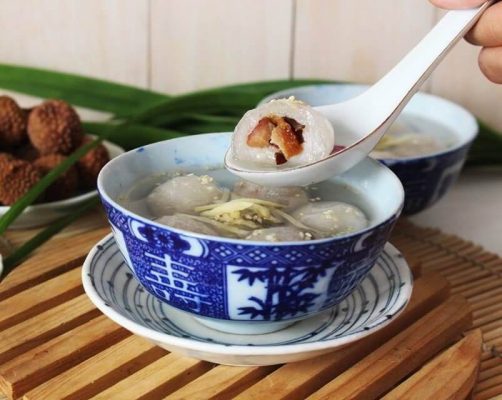
In Hue, there is a delicious Con Hen corn tea that is not available anywhere. This land has an alluvial ground of several tens of hectares, where people grow corn almost all year round. Corn in Con Hen is delicious because it is grown on a thick alluvial layer that is deposited through each flood.
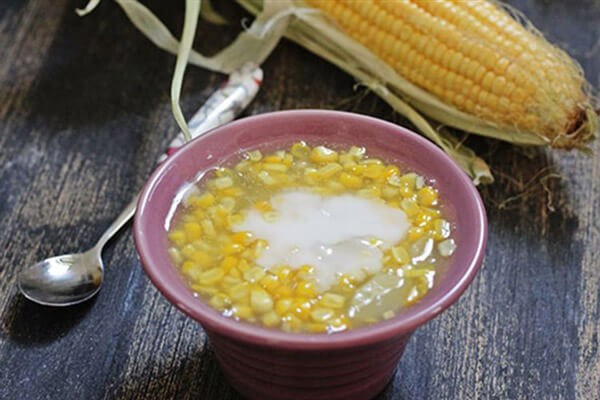
Chè Hạt Sen
Is a highly refined tea, processed from lotus seeds in Tinh Tam lake. Lotus tea cooked in Hue style is steamed, then cooked with white sugar or clear rock sugar until it boils gently. The sweetness of the sugar is enough to penetrate the lotus seeds and go out to the kitchen. To have a delicious teapot, the cook has to keep watch for the fire to burn just right, stirring, mixing gently, time is just enough for the lotus seeds “not old, not young”. When cooking, lotus seeds will lose their natural aroma. Young cooking, the lotus scent will not radiate.
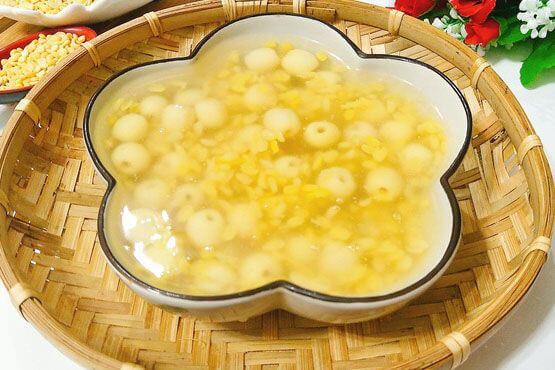
Chè Khoai Tía
This dish is favored by many guests for its color and taste. The tea is cooked from purple taro, then cooked with coconut water, and let it simmer until it matches. Add the sugar just enough, but not to lose the coconut flavor. Tea is fragrant and sweet.
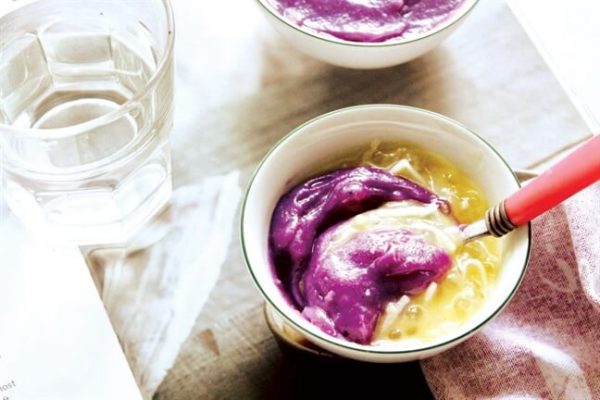
These are also types of tea originating in Hue for a long time. The tea is cooked softly but still has the beans intact. Soft tea adds crushed roasted peanuts and coconut water. Coconut milk is added later to increase the fat taste of tea, roasted peanuts with a subtle aroma.
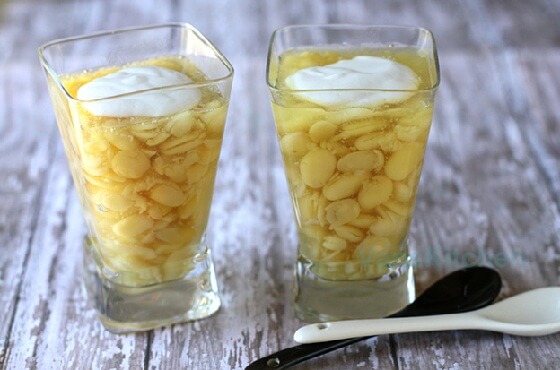
Banh Chung Nhat Le
This is a famous dish in Hue and originated from Nhat Le Street in Noi City, where dozens of bakeries are gathered. The cake is fragrant, delicious, and delicious due to the delicate combination of bean paste, meat (fat and lean) with glutinous rice, and spices such as pepper, or onions.
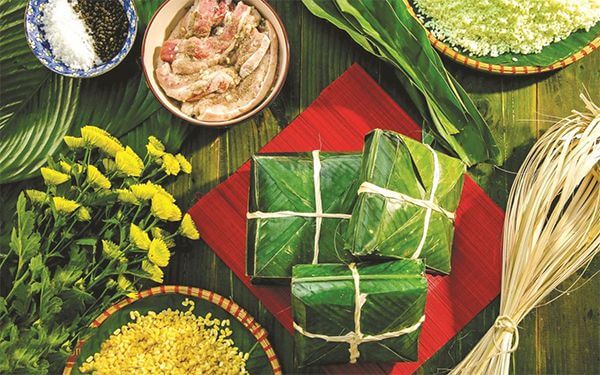
Five-color cake (Bánh In)
Five-color cake, also known as “Banh In”, this family has many types: bamboo shoot cake, glutinous rice cake, fluorescent flour cake, green bean cake, lotus cake,… each cake has the same type of flour as its name suggests. it. The cake is wrapped in mirror paper of all colors but has specific regulations, for example, the green color is hopefully green bean cake, the yellow color is a glutinous cake,… and pressed, the face of the cake is difficult to carve. Tho, Phuc, Loc shapes and wrapped in five-color paper. This is a type of cake to use on Tet, for worshiping and hospitality. Due to its low value, many people prefer it.
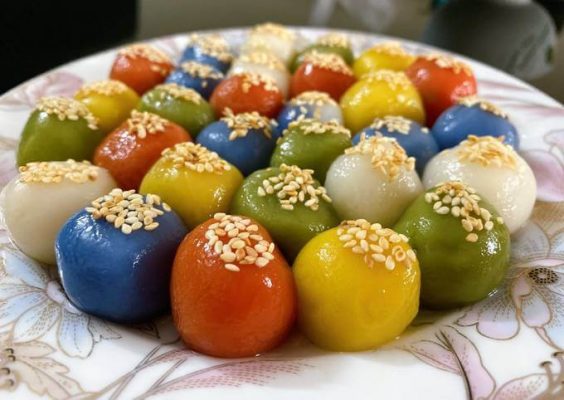
Currently, in Hue, there are two famous bakery shops: Hong Phuc shop on Phan Dang Luu Street, Ba Bon shop on Nguyen Thien Thuat Street, especially on the full moon day, the first day of Bao Thanh bakery on Tran Hung street. Dao also sells this kind of cake.
Hue specialties bought as gifts
Hue sour shrimp.
Sour shrimp in the right “tune” must be made from very fresh brackish shrimp, especially the shrimp brought up from Cau Hai. Choose shrimp that are even and relatively large. Shrimps are head off, washed, soaked for a while in alcohol. Then take out and drain, mix well with the additives: galangal, garlic, red pepper, young bamboo shoots, sticky rice, delicious fish sauce. In the additives, galangal plays the most important role, so it must be used more than all. Thinly sliced garlic, sliced chili, long and thin-sliced, separately, and sliced bamboo shoots. Shrimp is best incubated in a ceramic jar. When ripe, bring it together with a little honey. Can add a little galangal and then put it into glass jars or plastic jars. So in a jar of sour shrimp, we see all the colors: white, yellow, pink, red; All kinds of flavors: sweet, fatty, nutty, spicy, sour, bitter, hot, and cool, meaning both positive and negative. All blended to create a seductive fragrance. The incubation process lasts from 7-10 days, but must be kept in a clean, cool room. If more sophisticated, one can bury it in the ground to keep a constant temperature for the fermentation process. The more stable the temperature, the more fragrant and sweet the shrimp are.
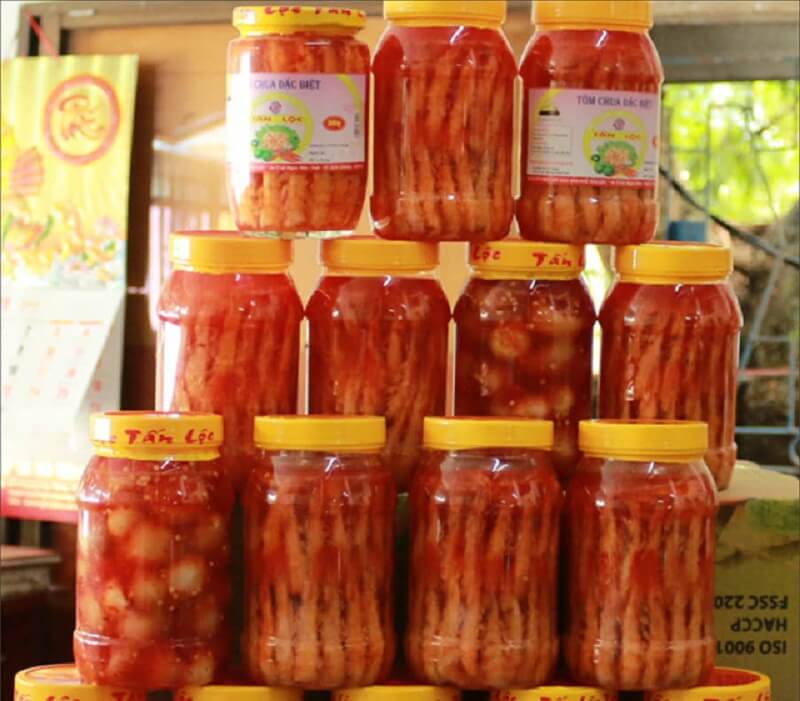
Sesame is a marshmallow, made from malt mixed with peanut oil (oil from peanuts), with sesame covered around the candy, cut into small squares (cellophane bags) wrapped in a box. Sesame candy is one of the specialties that has become a cultural symbol of Hue.
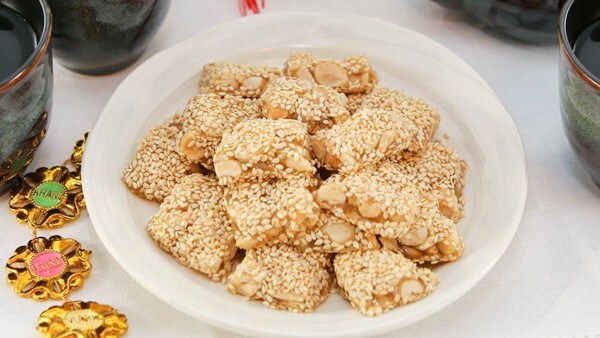
Festival in Hue
Thua Thien Hue is a land with cultural traditions, although not as old as in the North, but also has more than 700 years of history. Since the Nguyen Lord placed the capital here until the end of the Nguyen Dynasty (1945), it can be said that Hue is the gathering place of great cultural activists, a meeting place of East and West ideological flows. antique needle. Hue culture has traditionally poured in from the North, according to the people who settled in the new land. Here still exist the Cham people with Indian culture. And later Western culture also had the opportunity to penetrate the Nguyen Lords. The traditional festivals are maintained and developed from those cultural sources.
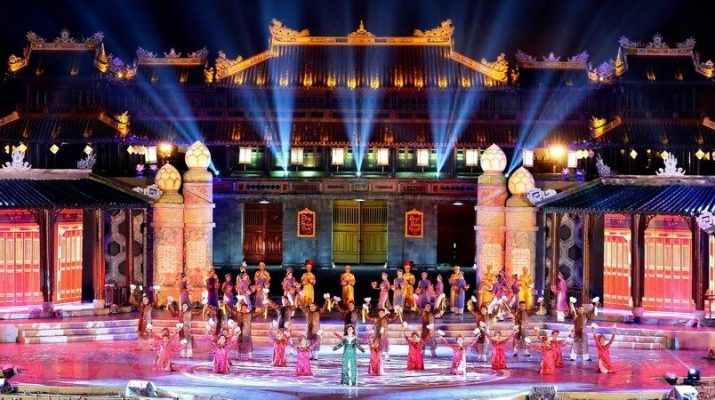
Festivals of all kinds are a need for cultural activities of Thua Thien Hue People has become a tradition. An overview of the festival and the festival participation of the residents of this region, we will see that the festival in Thua Thien Hue is not as rich as the North, but also quite diverse, there are two types of festivals: bow festival family and folk festivals. The royal festival reflected the ritual activities of the Nguyen Dynasty, mostly focusing on “ceremony” rather than “festival”. Folk festivals include a variety of types, including some typical festivals as follows: Hue Nam Festival (Hon Chen Palace), also known as the procession of the goddess Thien YA Na according to people’s beliefs. In the old Cham Pa, the festival commemorates the births of traditional professions, the festival commemorates the ancestors of the village. During ceremonial occasions, many useful cultural activities such as boat racing, tug of war, wrestling,… are also organized and attract a lot of viewers.
Some tourism schedules of Hue
Tour: hue – da nang – hoi an.
The itinerary will be arranged from the starting date in Hue, depending on where you live, you actively plan to get to Hue on time. This schedule is suitable for renting a motorbike in Hue to run by many places. You can cut the schedule to better fit your plan.
Day 1: Discover the Imperial Citadel of Hue
Wake up around the hotel to find out if there are any vermicelli, make a bowl for breakfast, make a cup of coffee and start exploring Hue. From the hotel, rent a cyclo pass through Truong Tien bridge to Hue imperial city.
Buy a ticket to explore the inner city, because the area is quite large, it may take a few hours or an entire morning to fully explore the citadel. After finishing, go out to find some famous restaurants to enjoy delicious food in Hue. Near the royal citadel, there is Lac Thien restaurant, which is quite famous for Thuong Tu’s delicious cake.
Early in the afternoon, from the center of Hue city, you rent a motorbike to go to Thien Mu pagoda, the road running along the Perfume River is very cool and beautiful. Spend about 1 hour to visit and take pictures at the pagoda, from here running another ten kilometers, you will reach Huyen Khong Son Thuong, a temple located on the mountain with a very beautiful landscape. From Huyen Khong, Son Thuong comes back to Hue to go through some garden houses, if you are interested, you can visit.
In the evening, go back to the center of Hue city, enjoy the typical cakes of Hue. If you go on weekends, you can walk around the night market, drink beer, and listen to music.
Day 2 : Tam Giang Lagoon – Phu Cam Church – Thanh Toan Ngoi Bridge
Get up for breakfast, drink coffee and depart for Tam Giang Lagoon. This place is more than 30km from the center of Hue city, at noon stay to eat at restaurants on the lagoon, rest, and then return to Hue in the afternoon.
In the afternoon, back to the center of Hue city, visit Phu Cam church, and then go to Thanh Toan tile bridge. These are two beautiful places in Hue, not too far away so it is completely possible to go in one afternoon.
Day 3: Bach Ma – Lang Co
This day, You will go to Bach Ma, Lang Co, but the journey is quite far, so you need to go early to return to the center of Hue city.
Get up for breakfast, depart in the direction of NH1A towards Da Nang, when you reach the section near Da Bac, turn to Ho Truoi, here you need to take another boat trip to reach Truc Lam Bach Ma Monastery. The monastery is quite beautiful with its back leaning on the Bach Ma mountain range, face down towards Truoi Lake.
After exploring the Zen Monastery, return to the direction of NH1A to go to Bach Ma National Park, on the way go through Cau Hai lagoon, the largest lagoon in the Tam Giang lagoon system.
Afternoon back to Hue to rest.
Day 4: Hue – Da Nang
From Hue to Da Nang you can go by car or train, all the time is only about 3 hours. However, if you want to admire the wonderful scenery of Lang Co Bay and the beautiful beaches of Da Nang, choose the train option. The train departs from Hue around 10:30 and arrives at Đa Nang at 13:30, you can buy train tickets online and go straight to the station to print tickets on the train.
Day 5 ++: Depending on your time, you arrange to explore Da Nang, or explore Hoi An accordingly.
Related Article: Traveling experience in Ban Gioc Waterfall that tourist should know
Let start your trip to Hue with us! If you have any feedback or need help, please send an email through [email protected] !
Noted : All information and pictures are collected!
One thought on “ Traveling to Hue for the First Time (Tips & Tricks) ”
Trả lời Hủy
Email của bạn sẽ không được hiển thị công khai. Các trường bắt buộc được đánh dấu *
Bình luận *
Lưu tên của tôi, email, và trang web trong trình duyệt này cho lần bình luận kế tiếp của tôi.
- StumbleUpon
Pin It on Pinterest

IMAGES
COMMENTS
Hue Tourist Information Center, Hue, Vietnam. 300 likes · 1 talking about this. Hue City Daily Open Tours / Hue Private Tours / Hue Tourist Information Center + Free Information + F
Hue to Hoi An or Hoi An to Hue by car via Hai Van pass, monkey mountain, beaches. 614. Recommended. Historical Tours. from. $59.93. per adult (price varies by group size) DMZ TOUR HUE - Deluxe group tour full day. 160.
The best time to visit Hue is from January to March. The weather in Hue remains hot from early May to end of September, with temperatures reaching up to 38 to 40 degrees Celsius in May and June. From October to March, affected by the Siberian anticyclone, average temperatures in Hue hover around 20 to 22 degrees Celsius, with lows of 9 degrees ...
Hue. Hue is a city chock-full of stories. The Kings of the Nguyen Dynasty built their feudal capital along Hue's fertile riverbanks and atop its forested hills, but their imperial legacy is just one of many reasons to visit. Hue's refined cuisine is the stuff of legend, and its leafy streets are lined with mossy pagodas, art déco mansions ...
Hue to Hoi An by Private Car via Hai Van Pass, Golden Bridge. 28. Recommended. Full-day Tours. from. ₱3,789.77. per adult (price varies by group size) 2023. Hue to Hoi An ( Hoi An to Hue) Top Gear with Lefamily Riders Tours ( 1 way)
2. Visit Ancient Emperors' Tombs. 2.1. Khai Dinh Tomb. Khai Dinh Tomb, officially known as the Ứng Mausoleum, is situated in Chau Chu mountain, about 10km away from Hue city, Vietnam. The tomb is the smallest, but most costly and recent one in comparison with other tombs of Nguyen royals.
HUE TOURIST INFORMATION CENTER (2024) All You Need to Know BEFORE You Go (with Photos) Hue. Hue Tourism Hue Hotels Bed and Breakfast Hue Hue Holiday Rentals Flights to Hue Hue Restaurants Hue Attractions Hue Travel Forum Hue Photos Hue Map. Hotels. All Hue Hotels Hue Hotel Deals Last Minute Hotels in Hue By Hotel Type.
Travel to Hue by Bus. Hue is connected to Vietnam's major cities by a well-traveled public bus network, Buses entering Hue from southern destinations like Hoi An and Da Nang terminate at the An Cuu station, which is about two miles southeast from Hue's city center. Buses from Hanoi and other northern areas terminate at An Hoa station, about three miles northwest of Hue's center.
Hue Tourist Information Center, Hue: See 3 reviews, articles, and 5 photos of Hue Tourist Information Center, ranked No.63 on Tripadvisor among 100 attractions in Hue.
8. Visit the Royal Theatre. 9. Journey to Bach Ma National Park. 10. Enjoy panorama view on Hai Van Pass. 1. Explore the Imperial Citadel. Even if you have got just 1 day in Hue, you need to visit the Imperial Citadel as this is the most important site of Hue historical monuments.
12. Royal Theater. 13. Alba Thanh Tan Hot Springs. Map of Attractions & Things to Do in Hue. 1. Imperial City Hue. Imperial City Hue. A UNESCO World Heritage site of bright reds and yellows, the Imperial City is Hue's most important attraction and the first stop in your discovery of the city.
Hue Tourism Hue Hotels Hue Bed and Breakfast Hue Holiday Rentals Flights to Hue Hue Restaurants Hue Attractions Hue Travel Forum Hue Pictures Hue Map.
Khai Dinh's tomb. Khai Dinh's tomb. The Royal Tombs are another must-see attraction in Hue City. These tombs were built for the Nguyen Dynasty emperors and are scattered throughout the city, along the banks of the Perfume River. Each tomb is unique and features its own distinct architecture and design.
1. Hue Imperial Citadel. Without a doubt, the most impressive and best thing to do in Hue is a visit to the Imperial City. In the walled Hue Imperial City, also known as the Citadel, you will find the Forbidden Purple City, dozens of royal tombs, pagodas, temples, royal rooms, a library and a museum. You can easily walk around here for 3 hours ...
3. Walk along the Perfume River. The Perfume River is one of the most famous waterways in Vietnam and Hue is the perfect place to take it all in. There is a delightful waterfront promenade along the banks of the river and this makes a great place to come for a scenic walk in the evenings.
1. Hue Imperial City (The Citadel) 11,175. Historic Sites. This former site of the old capitol has a moat and ten ornate gates guarding a palace, temples, gardens and tombs. Its most prominent feature is a tall flag tower. See ways to experience (332) 2024. 2.
Train: Train is good choice for traveling from Da Nang to Hue. The distance between Da Nang Railway Station and Hue Railway Station is about 110 km. There are 6 daily trains from Da Nang to Hue, and the average travel time is about 2.5-3 hours. Train tickets can be booked online here: Train from Da Nang to Hue.
Canh Duong Beach is located in Canh Duong village, Loc Vinh commune, Phu Loc district, about 50km from Hue city center. Unlike Thuan An, this beach is so vast, suitable for camping overnight and holding barbecue parties with the freshest seafood here. If you intend to travel to Hue for a long time, you should try once to visit Canh Duong Beach.
Where to Stay in Hue. How Many Days in Hue Do You Really Need. Best Hue Attractions For This 2 day Hue Itinerary. Day 1 - Explore the essence of Hue in the City Center. Day 2 - Visit the Outskirts of Hue to see the Tombs and the Abandoned Water Park. What to eat in Hue. What to Wear (and Not Wear) in Hue, Vietnam.
Currently, from Hanoi, there are only 2 units, VietjetAir and Vietnam Airlines, operating flights to Hue, with Jetstar from Saigon in the afternoon, flight fare depending on time will be about 2,000,000 VND - 2,500,000 VND round trip from Hanoi and around 1,500,000 VND-2,000,000 VND with the afternoon from Saigon.
2. Famous tourist attractions on the Hue map of the inner city 2.1. Trang Tien Bridge. As one of the symbols of Hue City, Trang Tien Bridge is a must-visit destination on the tourist map of Hue Vietnam. This bridge spans over the tranquil Perfume River, connecting the two sides of the city.
Hue Tourist. Huetourist is an International Travel company (Licence: 46-017/LHQT), established in 2006. We are a tour operator and an incoming travel agency. We offer daily tour from Hue to Hoi An on seat in coach. Beside that we also offer Community Tours, Shore Excursion and Classic Tours in Vietnam, Laos, Cambodia, Myanmar and Thailand.